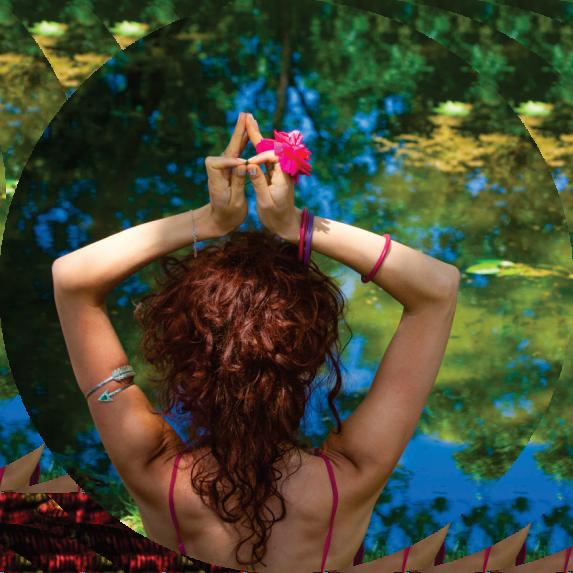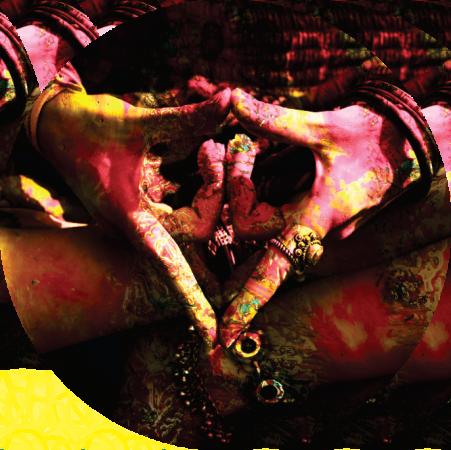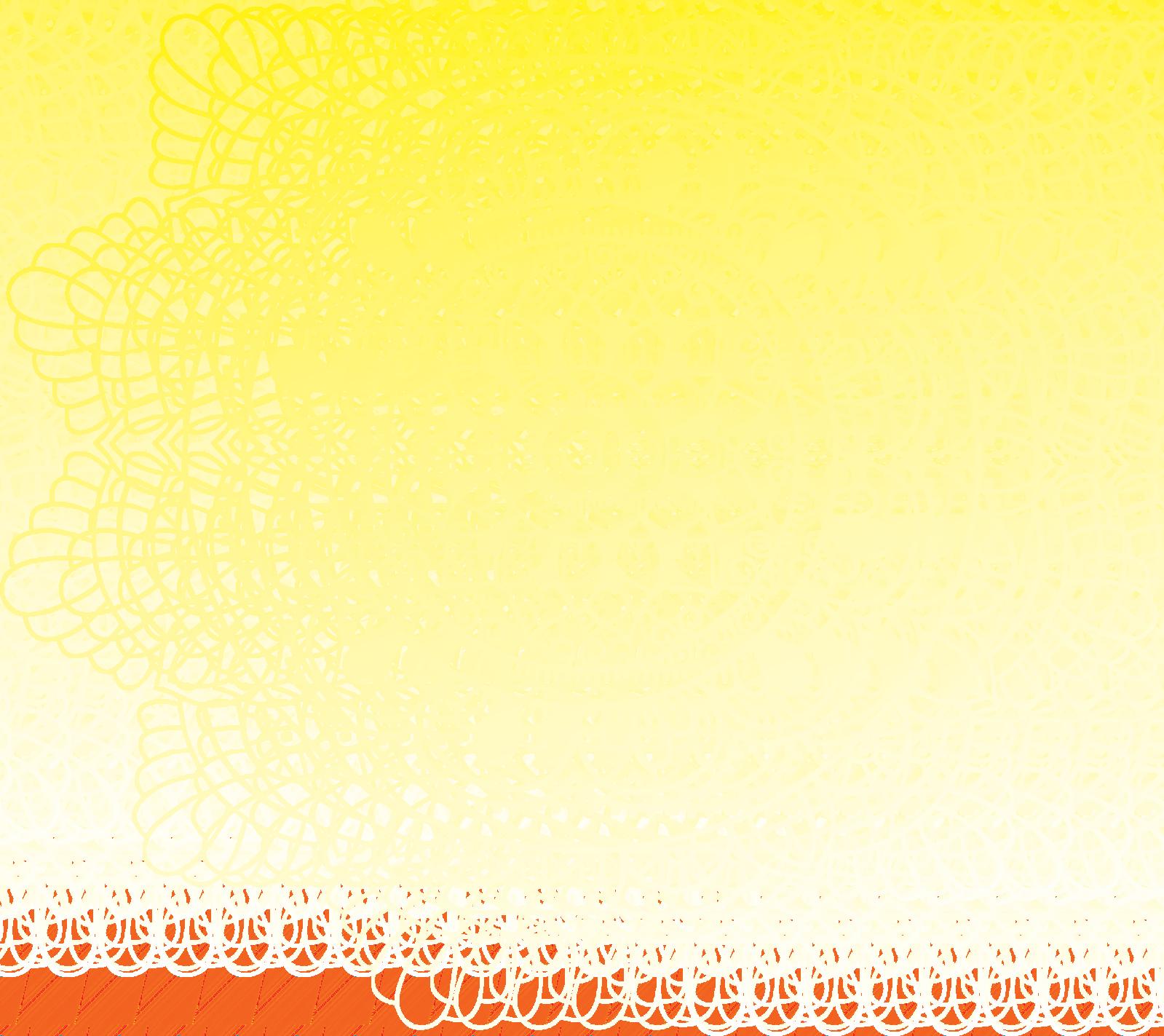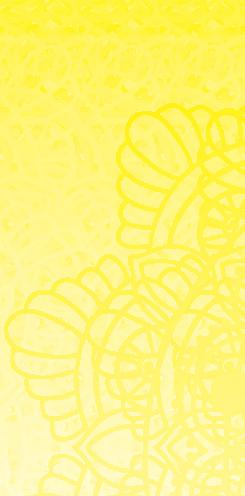




























30 Aug 1939 – 30 Sept 2023
byKikiTheoLast week I attended Rob Nairn's memorial at the Cape Town Kagyu Buddhist centre. Author of Tranquil Mind; Diamond Mind; Living, Dreaming, Dying and founder of Mindfulness Africa and Mindfulness Association UK, Rob, our beloved friend and meditation teacher passed away, leaving a huge legacy of work and gratitude behind.
People flew in or were connected via live stream from around the world for this celebration of his life. Charlie Morley, a lucid dreaming teacher who came from London was a key speaker. He said,
“I owe this man everything. He was my Dumbledore. He was my first Buddhist teacher, my first lucid dreaming teacher. He was the one who first suggested I should teach lucid dreaming. He taught me about conscious dying. He showed me the power of the hypnopompic state. And, he introduced me to my guru Lama Yeshe Rinpoche. I owe this man everything and I love him with my entire heart.”
This deep love and appreciation of Rob is shared by the thousands whose lives he has touched. I met Rob in Nieu Bethesda where he lived and ran a dharma retreat centre, in the mid '80s. He taught me everything I know about mindfulness, meditation and mind training. It was Rob's insight training that enabled me to become present with my thoughts. In his words, 'being aware of what is happening while it's happening', helped transform crippling anxiety I had suffered since childhood. I too owe him an enormous debt. He led me to the dharma and my guru Choje Akong Tulku Rinpoche, pictured above with Rob and affectionately known as The African Lama.
In the account of Rob's life written by Trish Swift, Rob met Akong Rinpoche when he went to study a postgraduate certificate in criminology at Edinburgh university in 1968 following his law degree. Rob 'caught a bus and, failing to find a lift, had to walk five or six hours carrying a heavy suitcase' to Samye Ling - the first Tibetan Buddhist Centre in the West, established by Akong Rinpoche and Chogyam Trungpa Rinpoche. Rinpoche's connection with Rob and the invitation to come to Nieu Bethesda led to Kagyu Dharma centres being opened in Cape Town, Johannesburg, Randburg, Grahamstown, Harare, the Congo; thousands of people being trained in mindfulness and taking refuge in the Kagyu lineage; the establishment of numerous charitable institutions serving the needy under Rokpa Trust and much more. Akong Rinpoche said, “without Rob there

would be no dharma in Africa.”
In Charlie's words: “It's sometimes said that the guru is even more important than the Buddha because it's the guru who connects you with the Buddha. What about the person who connects you with the guru? Surely that person is also incredibly important and Rob was that person for so many thousands of us. He connected us to the guru. Rob was the gateway, the bridge. Rob was the path that led us to the dharma.”
Rob was an incredibly brilliant teacher - always lucid and crystal clear. Kind, humorous, loving and enormous fun, he taught us while working on his own path too. He completed the four-year solitary traditional retreat without fuss and simply continued to serve.
Charlie elaborates: “It was the balance of Rob's humanity and flashes of awakened clarity that made him so good at what he did. Rob was an embodiment of the teachings in action, still happening… He was more inspiring than if he had been a full enlightened master because it was relatable. And through that inspiration, he led us to those enlightened masters, to that profound Vajrayana path, to kindness and joy and for that we owe him everything.”
It is incredible to consider how much benefit one single person can create in a single lifetime. Rob Nairn may be gone, but the ripples of his memory and good work will last forever.
Rob Nairn Memorial https://www.youtube.com/watch?v=BAn-Rn1HnrE

Summerremindsusthatthereishopeintheworld,thatthelightwithincanspreadtothefar reachesoftheglobeandinspireothers.
“Shine as if you are the sun. Shine like the sun in darkness. Shine like the sun in a gloomy sky”. Debasish Mridha
In the summer of our lives we say goodbye to a long, inwardly-focused time of self-reflection and open ourselves to receive the fiery energy of the sun, moving us forward, cleansing every fibre of our being. This season is a powerful time to shine, manifest dreams and desires and to embrace spiritual transformation.
Summer is a season of unbounded joy. The warm, balmy days with longer light hours, calling us to spend time walking lightly, gently and joyfully beside Mother Earth, nurtured by the Sun of Father Sky, often in fields of flowers.
While every season has nuances that make it special, there is something that elevates summer above the others. Is it the gathering of our clans or the great South African outdoors, picnics, traditional braais – in my case if only to char a veggie kebab and the sheer joy of raw, real and refreshing summer fruit? Watermelon to mangoes, figs and endless choices. And then there are our beautiful coastal areas, beaches and oceans alive with life… and the salty sea breezes that beckon.








In this edition we share the science of joy, what joy is and the unboundedness of joy. We explore conscious conservation as well spiritual and wellness travel, including a poignant and powerful personal experience in 'The Africa I See' account of self-liberation.
We take you on powerful healing journeys and bring you face to face with imposter syndrome. We touch on the reality of mental health challenges at this time of year, how to reach out and how to support those who reach out to you.
KwazuluSpirit™ Festival 2024 confirmed 9, 10, 11 August. This celebration of consciousness takes place in a pristine natural paradise on the beach, threaded into the coastal dune forest, The Laughing Forest in Elysium, which is on the lower to mid-South Coast of KZN.
In Homer's Odyssey, Elysium is described as a paradise, the 'playground of the Gods'. We look forward to welcoming you to our playground, to experience, discover and transform.
All Love Debra“...whilstthisplanethasgonecyclingonaccordingtothefixedlawof gravity,fromsosimpleabeginningendlessformsmostbeautifuland mostwonderfulhavebeen,andarebeing,evolved.” -Charles Darwin, The Origin of Species


Purchase the online Chi Gong Course, go to: https://www.mingsmartialarts.co.za/online-chi-gong-course/ Get your free online class now! Contact Leo Ming at +27 83 378 0468

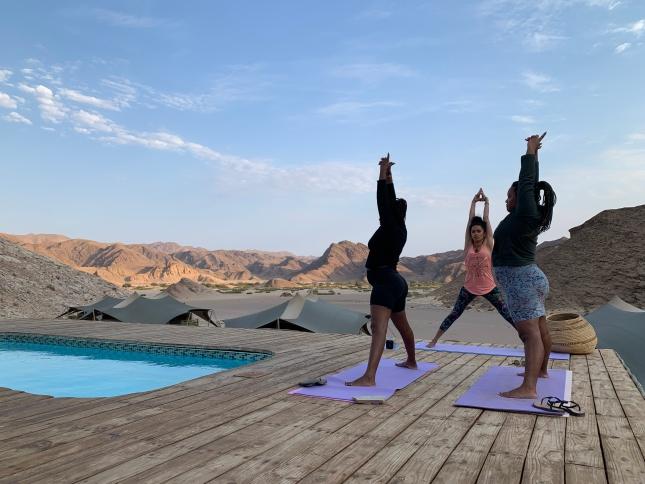
3 Editor’s Note
2 Tribute to Rob Nairn
8-10 Wavelength: Why Africa Pooja Khatri
12-14 The Africa I See Barbara Lawrence-Strydom
16-18 Whale Songs and Deep Listening - Geoff Dalglish
20-22 Heaven in a Wild Flower
Steve Hurt
23 Power of Transformation 24, 25 Navigating the Holidays Yael Geffen
50, 51 I Raise Me Up Y-Life Productions
90-93 You Have Not Danced so Badly - Kiki Theo 104 Odyssey Winners
BodyMindSpirit: 2024TimetoShine
32-34 Give Wisdom the Microphone Colleen-Joy
Editor and Publisher
Debra Robins
+27 (0) 82 875 2985 editor@odysseymagazine.co.za
Fulfillment Lead
Elizabeth Smit
+27 (0) 63 255 0102 fulfillment@odysseymagazine.co.za
Business Development
Quinton O’Dwyer
+27 (0) 78 342 9389 bizdev@odysseymagazine.co.za

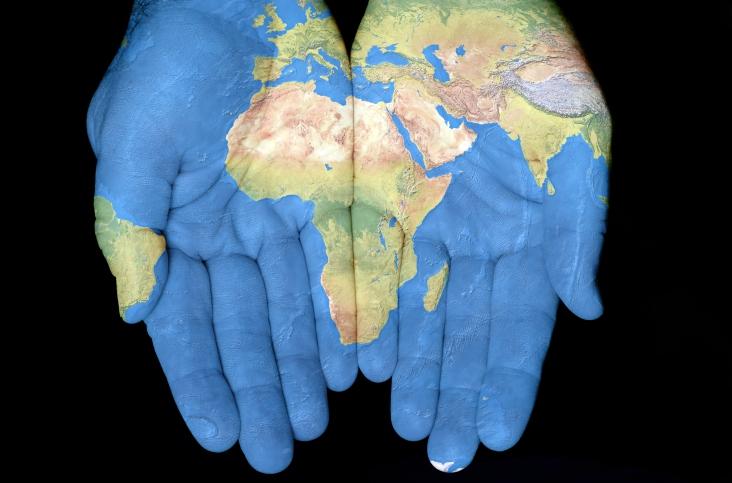
30, 31 Recognise, Understand and Conquer Self-Doubt
Jabu Zwane
35 Power of Frequency Healing
37-39 Return to Authenticity
Dr Jimmy Henderson
40-42 Moving from Belief to Knowing - Jock Brocas
43 An Aroma for Every Moment 44, 45 When Does Self-Reflection Become Self-Destructive
Romy Mörsner
52, 53 Faeries
Ezra Buzzington
54, 55 The Revival of Gematria
74-77 War and Peace - John Lockley 98, 99 Conversations with Kuthumi Chanel Lingenfelder
19 The First Wealth is Health 46-48 Journey from Despair to Purpose - Heleen Page 58-61 The Science of Joy
Dr Arien van der Merwe
65 Eating for Transformation 66, 67 Haemorrhoids
Anri van Rooyen
Advertising
http://www.odysseymagazine.co.za/advertise +27 (0) 82 875 2985
Subscriptions
https://odysseymagazine.co.za/shop/ +27 (0) 78 342 9389
Submissions
editor@odysseymagazine.co.za +27 (0) 82 875 2985
Proof reader: Susan Cooke
26-28 Rhinos Saving People Part 2: The Rhisotope Project 73 Elephants Alive
EcoPlanetandTravel
62-64 Organic is Climate Action Charmaine Koppehel
78-81 Ancient Wisdom for a Modern World Clive Horlock 82-84 Dreams and Dust
Alex Stone
86-89 You Don't Get Grace, Grace Gets You Elma Rivera
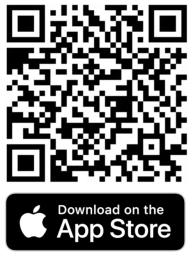
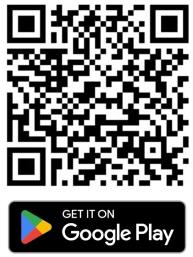

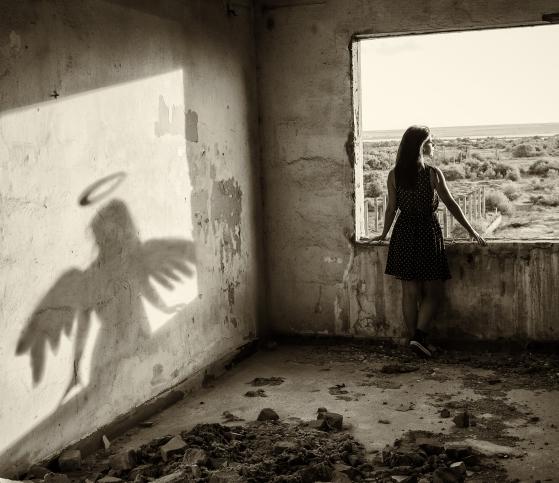
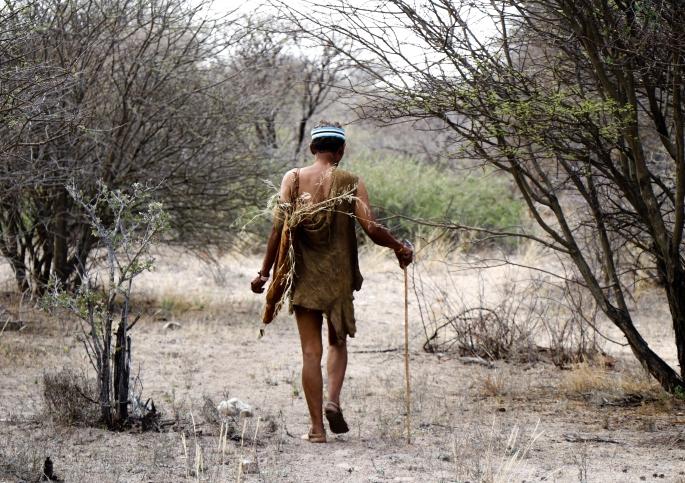
Ray
Anne-Marie Clulow GoodReadsandGiveaways
John
Kiki Theo 94, 95 Doing Life with Heike Heike Sym 96, 97 Blissexology
Anne-Marie Clulow
by Mindful Media Publishing (Pty) Ltd
No person, organisation or party can copy or reproduce the content on this site and/or magazine or any part of this publication without a written consent from the editors' panel and the author of the content, as applicable. The publisher, editor, authors and contributors reserve their rights with regards to copyright of their work.
The copyright includes (and is not limited to) the content and/or images used in any of the articles of this publication, the Odyssey Magazine logo and any of its derivatives.
The content in Odyssey Magazine and its website and digital platforms are made available on the terms and conditions that the publisher, editors, contributors and related parties: Shall have no responsibility for any action or omission by any other contributor, consultant, editor or related party.
Disclaim any and all liability and responsibility to any person or party, be they a purchaser, reader, advertiser or consumer of this publication or not in regards to the consequences and outcomes of anything done or omitted being in reliance whether partly or solely on the contents of this publication.
Are not responsible in any way for the actions or results taken by any person, organisation or any party on basis of reading information, or contributions in this publication, website or related platform.
The views, thoughts and opinions expressed in the magazine are those of the contributors and advertisers and do not necessarily reflect the views or positions of Mindful Media Publishing (Pty) Ltd and Odyssey Magazine.
publisher@odysseymagazine.co.za

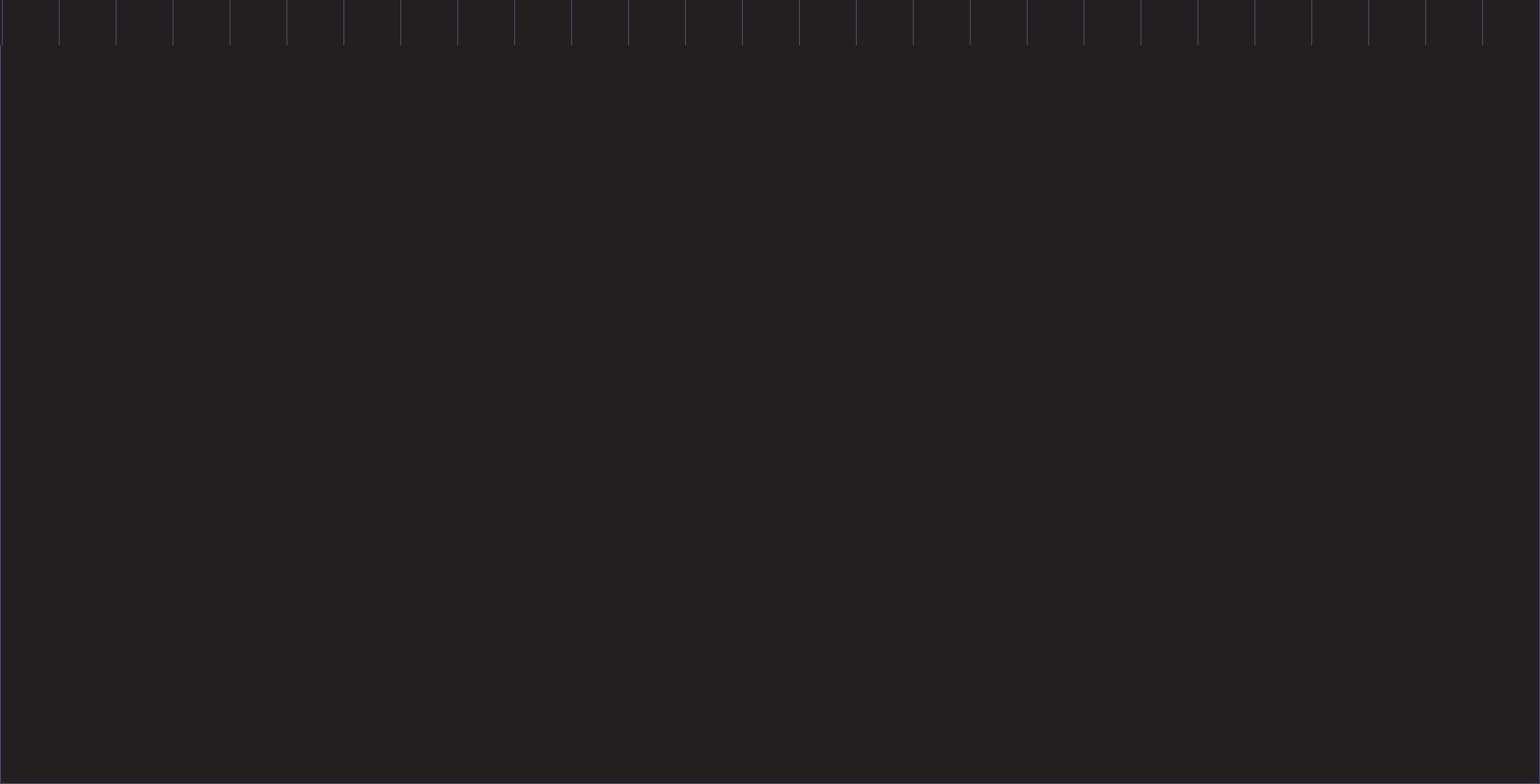
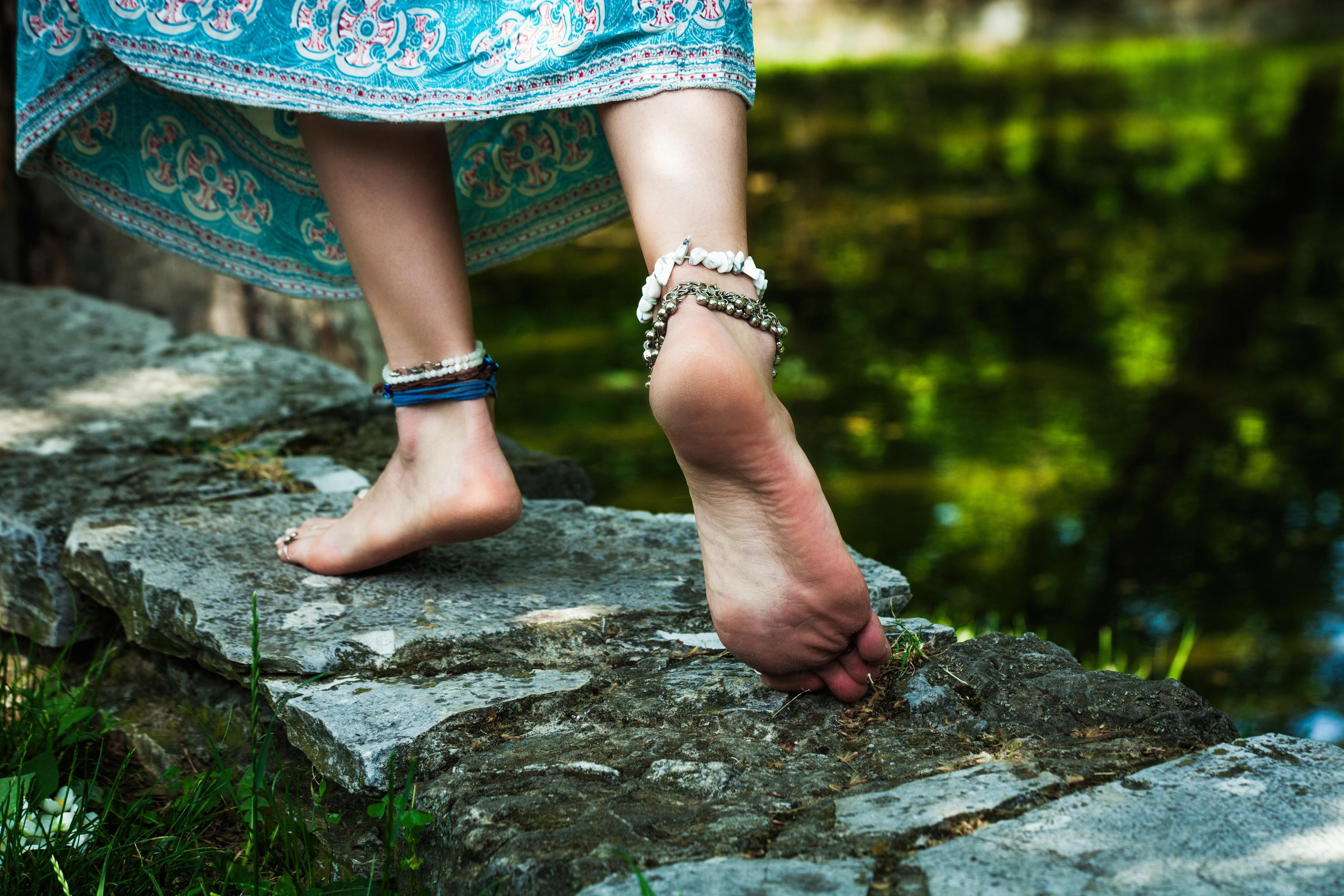


“Through life, I want to walk gently. I want to treat all of life –the earth and its people – with reverence. I want to remove my shoes in the presence of holy ground. As much as possible, I want to walk in peace.
I want to walk lightly, even joyfully, through whatever days I am given. I want to laugh easily. I want to step carefully in and out of people's lives and relationships. I don't want to tread any heavier than necessary.
And throughout life, I think I would like to walk with more humility and less anger, more love and less fear. I want to walk confidently, but without arrogance. I want to walk in deep appreciation. I want to be genuinely thankful for life's extravagant, yet simple, gifts – a star-splattered night sky or a hot drink on an ice-cold day
If life is a journey, then how I make that journey is important. How I walk through life
Steve Goodier byPoojaKhatri
byPoojaKhatri
In2017,myhusbandandIspentsixmonthsover-landingfromKampalatoCapeTown.Wecamped,cookedour ownfoodandspentourdaystraversingthrough10,000kilometresofthiswondrouscontinent.Andherewewere, almostsixyearson—Decemberof2022—mapsstrewnacrossourbedroomfloorinNewZealandasweplottedthe ambitiousideaofmakingAfricaournewhome.ButwhenpeopleaskedwhyAfrica,Icouldn'tquiteputitintowords.
Though my husband and I had talked about moving to Africa for years, my motivations were still a little murky. Africa definitely held a strong allure but I was also nervous. My husband and I were on the verge of starting a family, my career as an academic researcher and Yoga instructor was finally taking off and my tolerance for freespirited living was starting to feel like a remnant of my 20s. I was 36 and a strong sense of responsibility was kicking in. Nesting. Safety. Security. But though my monkey mind had no trouble in conjuring up an endless stream of doubt— when I closed my eyes, I could see it. My husband and I, in some wildly beautiful setting, camera in one hand, babe in the other. If there's one quality we had as a couple, it was our grit. But were we being naive? Did we have what it would take to reboot our lives? And why Africa?
June 2023: It's been quite a traumatic day. We've been monitoring a bushfire in Botswana's Okavango Delta for the last week, and this morning, it got a lot closer than we
would've liked. The camp staff decided we needed to create a firebreak immediately, but with us being so remote and no fire fighting crew on call, the task came down to us. Though I wasn't quite dressed for it, in my tshirt and flip flops, I got handed a blue bush branch—the local equivalent of a fire beater—and before I knew it, I was firefighting. But what began as a well-oiled operation soon turned to chaos.
Blood spewed as one of the camp staff accidentally cut his foot with a panga knife, a filmmaker singed his face, and there was much commotion as a gust of wind caused the firebreak to get a little out of control. As a novice firefighter, the first thing I noticed was just how hot it gets. Even before you approach the line of fire, you can feel the intensity of the heat and smoke. It also occurred to me that there was no Plan B. We'd either be successful in saving our camp or the fire would burn everything to cinder Thankfully, the break proved successful, and the fire has moved away from us.
For now. Though no one—aside from the Panga man—was seriously injured, I can't help but wonder how the animals fared.
It's been an interesting experience living in a film camp. My husband, Nick, has been working out here for the last five months tracking, filming and learning about animal behaviour from some of the region's foremost experts. One of his favourite teachers is a six-foot Zimbabwean zoologist called Greg. Greg has worked as a guide in Botswana for several years. He knows and loves this land like it's his own and it's an absolute treat watching him move through the landscape—greeting the animals, tuning in to the rhythm of mother nature.
Last week I came across a handwritten quote in one of Greg's field guides which read: “What is man without the beasts? If all the beasts were gone, men would die from a great loneliness of spirit. For whatever happens to the beasts soon happens to man. All things are connected.” This is the wisdom of Chief Seattle of the North American Suquamish Indian Tribe. It made me wonder, what would happen if we all lived this way? In this web of interconnected, reciprocal relationships—the land, trees, humans and beasts?
I recently learned that there are three zones to life. Two of the three will shrink your life, and only one will make it bigger and richer. If you stay in your comfort zone all the time, it eventually shrinks, and your life becomes incredibly small. But if you throw yourself headfirst into the panic zone, you might get so traumatised that you'll snap back to the comfort zone. We need to stay in the middle, Harvard-trained sociologist Martha Beck says—in the learning zone. How? By doing something that scares us a little every day. Eventually, our mind and body relax, and our life gradually expands.
When I first learned this, I remember being shocked and intrigued at the same time. Though my life in New Zealand was comfortable enough, I couldn't deny that the routine of my days was starting to feel a little monotonous. I could pretty safely say what my week and the next and the one after that would look like and, though I knew this was a construct of my mind, I couldn't help but feel a little trapped.
September 2023: Smoke swirls in through the open window. Our vehicle jolts violently from side to side as the driver expertly dodges pothole after pothole—some that stretch the length of our vehicle. Boredom is a difficult state to achieve when you've been on a bustling shared taxi ride—squished alongside two others on the back
seat—jostling through Zambia on our way to the Katima border post so we can begin our one-month stint in Namibia. Nick will be joining a crew filming desert elephants while I will be starting up a Yoga practice at a remote camp in north-western Namibia—in a region known as ‘Kaokoland’—the land of the desert-dwelling Himba people. Our fellow passenger's train of thought snaps me back to the taxi cab. “I love Zambia!” says Michael—a local businessman with a flair for fashion who longs to build a farmhouse in the Zambian countryside. “There's freedom here,” he says, “you can do what you want when you want!” I decide now is not the time to point out the fact that we've essentially been prisoners inside this taxi cab for the last six hours.
It was time to make a decision. Do we put our lives in New Zealand on hold as we try to establish new lives in Africa, or do we settle down in an environment that we'd grown quite fond of?
I recently tuned in to a podcast where Hollywood celebrity Hugh Jackman talks about the importance of cultivating our intuition. “Stick with it,” Hugh says. “It works on you in the way nature does. It's patient and it's in no rush. It's slow. It's steady, and it's true.”
If I was honest, that's what I imagined moving to Africa would be like. A decision that didn't make perfect logical sense, but one that—my intuition told me—would deliver the experience and growth that my husband and I were in search of. And so, we bought ourselves a one-way ticket to Africa. We said we'd give it a year. A year to experiment with new opportunities. And if, by the end, we weren't quite feeling it, we could easily return home.
September 2023: “You've seen more of Namibia than I have!” exclaims Petronella, a proud single Herero mother and manager of Hoanib Valley Camp—a high-end safari lodge situated in remote, north-western Namibia. We're seated around the fire chatting with some of the camp guests. The sun has just set, and we're keeping our eyes peeled for the Cape fox that is known to run circles around the fire scavenging for food scraps.
I'd just recounted a story about how Nick and I were stalked by a leopard during a lightning storm one night in Palmwag—a 5,000 square kilometre conservancy not too far from where we were seated. The incident was terrifying but humbling and it certainly taught me the value of presence. “There it is!” I exclaim, shining my flashlight in the gap between the guests, momentarily illuminating the Cape fox as he dashes off into the darkness.
It's been just over a week since I've been stationed at the Hoanib Valley Camp. It took a full day's drive to reach it from the closest town and, aside from another distant camp, there are few other signs of human habitation for kilometres. Between the 40-degree days, blustery afternoon winds and occasional scorpion, it hasn't been the easiest of environments to teach Yoga in. It's also my first time teaching at a five-star camp.
Guests from around the world venture here, ready to spend USD 1000 a night. Needless to say, expectations are sky-high. But what I've found curious is that being out here seems to be somewhat transformative. Guests arrive—clinging tightly to their itineraries and egos—but after a few days of tracking elephants, unplugging and dining under the stars, they begin to let go. At first, I couldn't quite figure it out. And then I came across this entry in the guestbook by a lady from the Philippines who'd visited earlier that year
I once read a quote, which read: “The precept that location is the key to the success of a business applies to art, and even to life itself. We thrive or wither depending on how nourishing our environment is.”
It's November of 2023 and we're in Ruaha National Park—one of Tanzania's best kept wildlife viewing secrets. We're on the hunt for a pride of lions that we've heard calling all night long. It's been 10 months since we left home. Why Africa? Perhaps it simply comes down to the fact that this environment—with its giant elephants, diverse tribes and majestic landscapes—takes me out of my comfort zone and into the realm of learning and growth. Will we stay? I'm not sure. But what I do know is that, although life isn't always easy, I feel alive, and I will forever be grateful to this wondrous continent for the lessons it has taught me.
“I came to Namibia exhausted, and I leave tomorrow refreshed. Thanks for the silence, Thanks for the whipping wind, Thanks for the sweltering heat, Thanks for the cold, Thanks for the signs of life, Thanks for the living rock, And the shifting sands.”
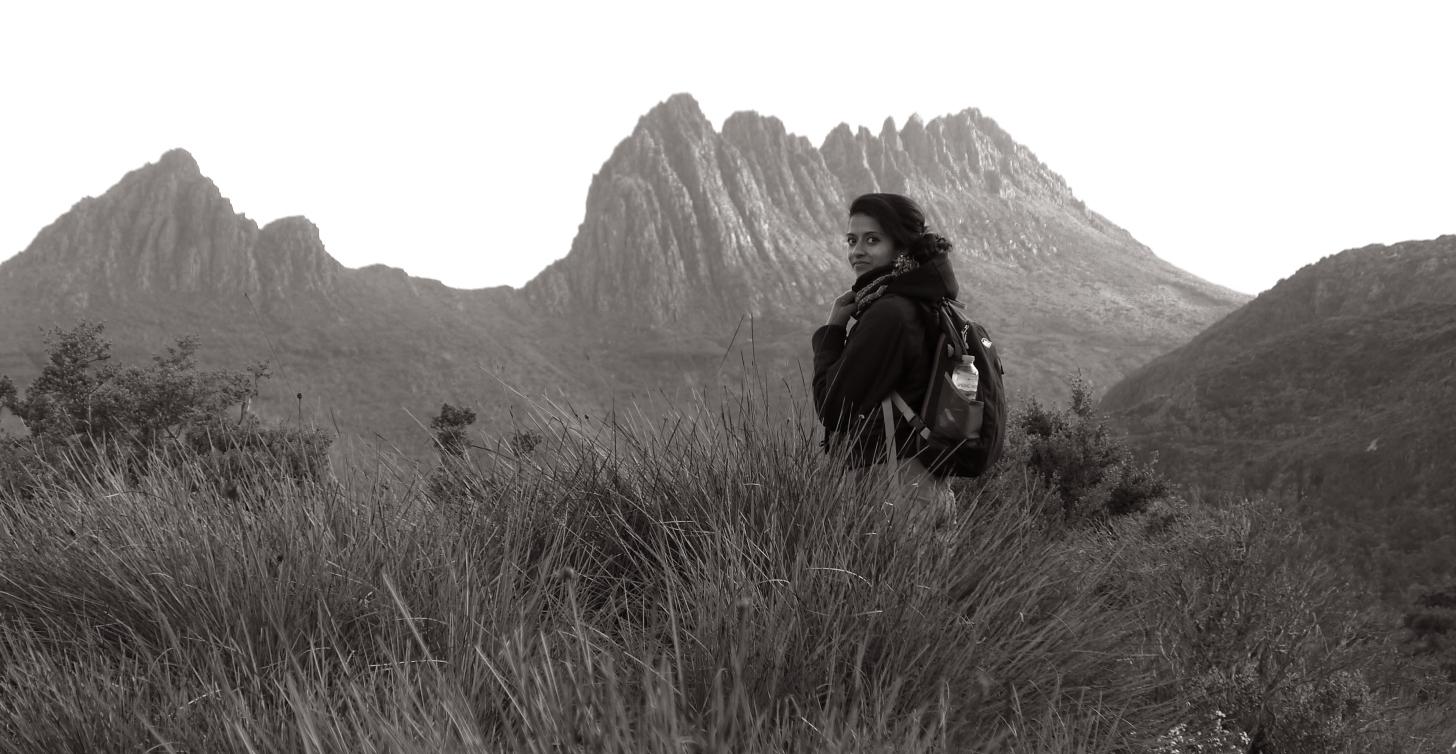
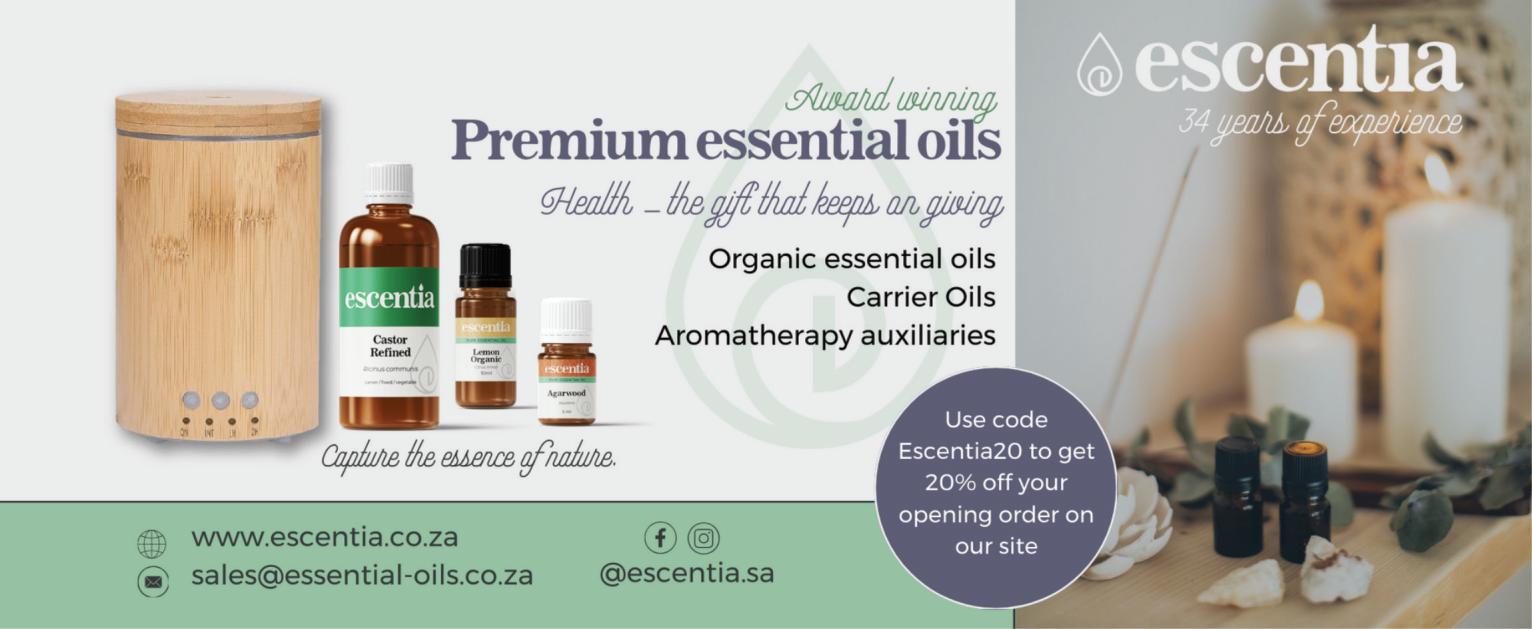

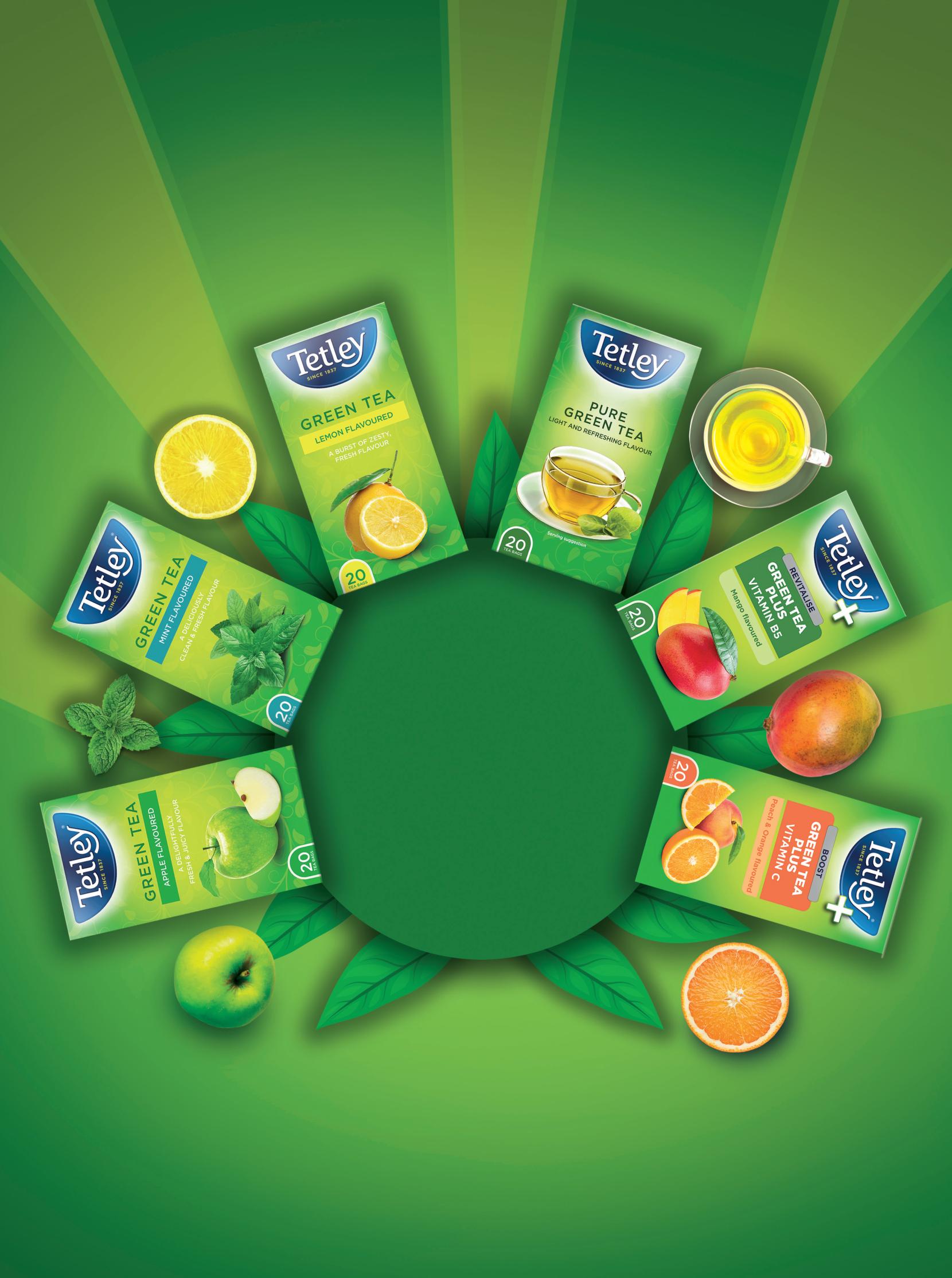

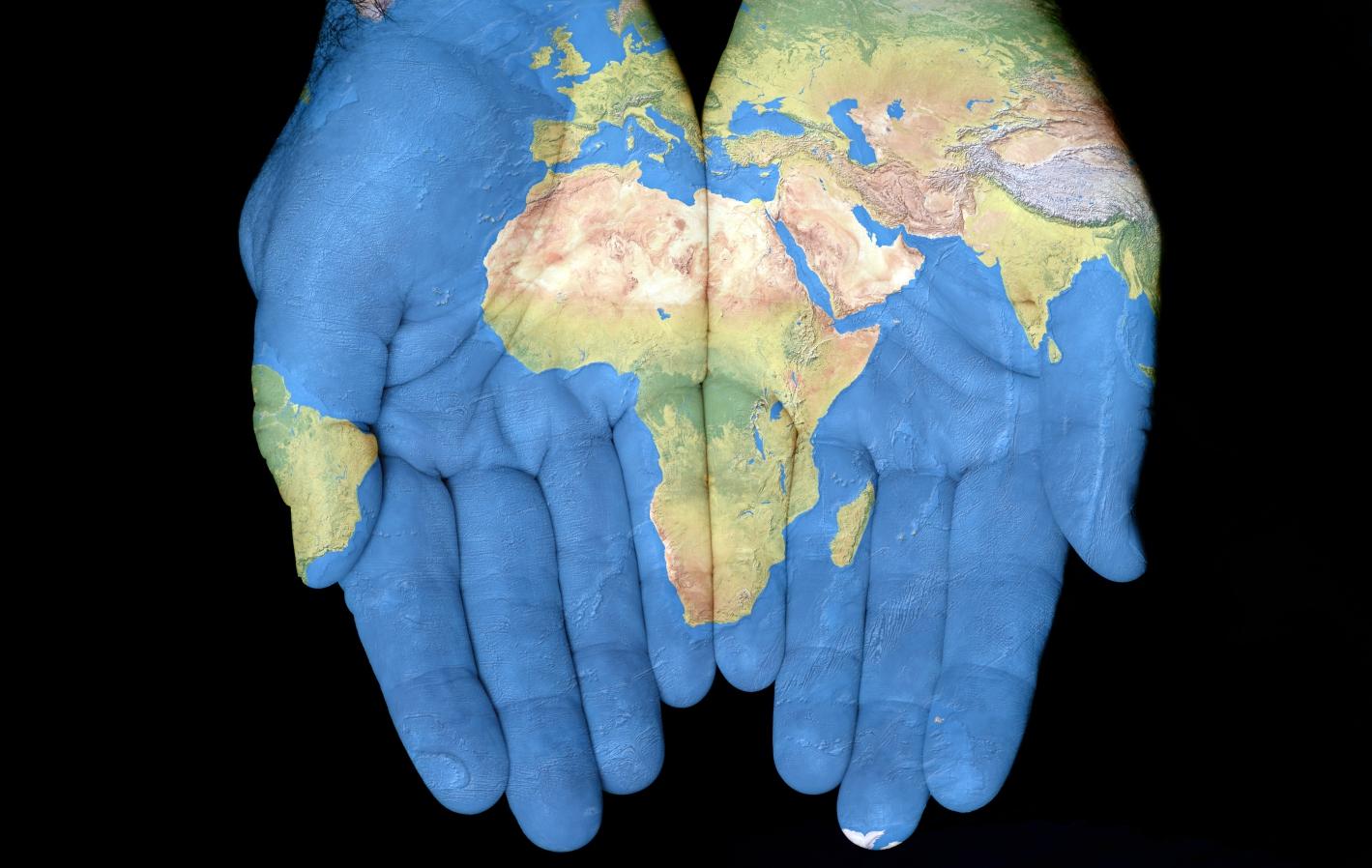
AsSeptemberended,IwasreflectiveonsomeoftheinterestingspeakingengagementsI deliveredthroughthemonth,startingwithRedefiningSuccessatthesecondWomenin HealthcareSummitinJohannesburg,toSeedisLifeattheFoodOrganicFarmingFestivalat SecretSithelainMunsterontheSouthCoastofKwaZulu-Natal,toThePowerofHempand ReimaginingAfricaatthesecondMpondoLiteracyFestivalinLusikisiki,toaHeritageandthe Lawvirtualmessageforachurchgroupandthe'Her'inHeritageforaMrsSouthAfricafinalist fundraisinghighteaevent.Alltheseengagementshadmeponderingonthepast,mindfulof todayanddeterminedtobeevenmoreintentionalforfuturegenerations.
Irecall 30 years ago arriving in London on an au pair opportunity, where I first discovered that I identify as African, as a person from the continent of Africa. It's been a beautiful journey of self-discovery and selfdetermination to carve my parallel reality in a South African context. A former bank manager by profession, with experience in landfill management and a passion for capacity building and community development, I have had the opportunity to work in the ESG space – Environment, Social and Governance – in a variety of industries on the continent. I was certainly not always aware of environmental issues, blindly focused on my banking career, until I could no longer ignore my late husband's voice on repeat, cautioning me in his words: “There will be NO bank if there is NO environment.”
Shirleigh Strydom, an environmental scientist graduate
from Southern Vermont College, Massachusetts in the late '80s, returned home after 18 years in the USA to dedicate his life to the Environmental Agenda of Southern Africa. This truly exposed me to concepts of Environmental Impact Assessments and the conflict of development and environmental impact to integrated waste management discussions and debates. It's this exposure which truly awakened me to looking at the past, observing the present and becoming intentional about the future, those who will arrive after us. In fact in the book WASTE KNOT, part of The Book Trilogy series, I capture the story of the black bag while reflecting on our waste travel stories both across Africa and globally. I have continued to share this story to honour his legacy and his slogan – Keep Africa Clean.
The travels in the southern region and the many training opportunities across the continent were definitely reasons I agreed to be a volunteer on a 40-day road trip from Cape to Cairo, 11 countries, 22 passport stamps over 12 500 km west coast to east coast. I was raised on a farm in Nqabeni and later spent a few years in Langalibalele, Oribi Gorge. Both these locations involved six to12 km from home to school each day, each way, so walking and learning are the foundation of my world of learning. I have backpacked the UK and Europe, curious to go to the places I had read so much about growing up. So it's this curiosity that would give me the courage to take on such a mission. I must also not negate the impact of grief on this decision, as I had lost my husband earlier that year. I was grateful to get into a car and just drive and drive, all the while processing the reality of the new life I was navigating.
There are countless messages I received on this road trip but the two things that really stood out for me were how vast in size Africa is and how fertile the land was even across the Sahara Desert; along the Nile was flourishing and green. The tasty rice in the northern region of Malawi, with the fish from Lake Malawi, to the fruit trees hanging over the highway of Tanzania, where 50km per hour is the speed limit, had me wondering where I had missed all the abundance in the narratives I had consumed. It took me back to my childhood and the fresh food we ate from the farm. What happened to that way of living and how was that replaced with retail therapy? What were the practices my grandmother, Dinah Mkhize-Lawrence, preserved over the years and where had they disappeared to? And my grandfather, Abraham Lawrence, knew every plant and administered herbs for all our ailments, from allergies 'isihlungu' to breathing difficulties, including to the animals on the farm. How much had all my education replaced the family's indigenous knowledge?
I was inspired to write the book Seed is Life as part of the series as I began to understand the fight for our food systems and our sovereignty and interrogate language. What is organic to me as an African and does this word glamourise our practices and return the food I plant to me at an exclusive price? How do I begin to give this observation a context and frame it to avoid becoming a victim of yet another system. The book explores the affirmations of 'seed' and allows for a discussion to explore seed to soil, our land story and what has distanced us from our family, community or clan practices: The harvest and seed-sharing we witnessed amongst the elders growing up. Actually, of late, I am curious about the exchange of flower slips and little fruit trees we had to hold gently as we returned from visits to relatives and family friends. The visits always ended with a walk around the garden or orchard and this beautiful exchange happened so organically. It also reminds me of the gift-bearing practices we had in our culture; you always left home with something for your host. It is this practice I seek to activate by handing out the 'Made with Love in Nqabeni' TRAVEL POUCH at every speaking or
training event I am invited to participate in.
The Cape to Cairo Road trip highlighted for me that our hand-made products were not geographically labelled and how quickly the story or the experience of the item can be erased. There is so much to explore with the localised 'Made with Love' label and I look forward to partnering for impact to share the stories of villages, small towns and suburbs which need to be shared – our stories.
So much has happened in the world since that amazing, life-changing journey and, although I've climbed Mt Kilimanjaro twice as a day trip to meditate and later as a volunteer returning to the last camp as they finished off their summit, I have continued to explore as much as possible of our country and the neighboring countries, with a post-lockdown meander from the southern tip of Africa to Swakopmund, this time not compelled to attempt Dune 7, an earlier achievement; I learn so much about myself and meet the most beautiful people along the way.
The annual Bush Desert walk in Jwaneng, Botswana, is one such beautiful memory. A much cooler July day, the last weekend of the month and hundreds of us gathered from across SADC to do the 15km or 30km walk across the desert. Although I had a 15km ticket I was given a 30km arm band and - guess what - I could not take the chance but to do the 30km in case I chickened out at 15 and didn't get the medal at all. Spurred on by a team from Lesotho and Tanzania, I did the unpractised 30km that day. As exhausted as I was that night, I joined the ‘electric slide dance group’ and created beautiful memories at the glampsite in the desert.
The next day I was off to start The Book Trilogy book reading tour with Botswana University students in Gaborone, an intimate group. The third book of the series, The Power of Hemp, explores what hemp is to us as Africans as the legislation is changing. It also was inspired by the past seven years, interacting with the cannabis community of South Africa. The books are all hand size, with a maximum of 50-70 pages. The intention was to allow families, youth groups, community and religious communities to feel at ease holding discussions around the changes, the individual and collective trauma, the environmental footprint, the strategic approach of engagement and, again, the seed story which we no longer have access to in our communities. I often open the discussions with reference to language and our culture by asking the question: What is a shirt called in isiZulu or Afrikaans? If hemp was part of our language, then where is our seed today? If the hemp seed has disappeared, what could guarantee that carrots or imfino would be here for our grandchildren and what is our individual and collective responsibility? I have since completed seven of the nine provinces of our country with intimate book reading sessions and I have learned so much while afforded the opportunity to impart an integrated basket of knowledge through the UNDER AFRICA'S TREES reading programme.
Currently exploring the ‘7M's of Africa’, which included a solo backpack from Maputo to Tofo to celebrate my 50th birthday two years ago, I had the privilege of doing a book reading in Inhambane, Mozambique's cleanest city, to a group of young people in partnership with Smile Mozambique. I love the AuntyB Conversations under Africa's Trees as it has gifted me so many opportunities to share the view of Africa I have been so blessed to witness. It's the funny memories made camping in the Serengeti with a dear friend, a girl trip to watch the migration with a tuck in by Zebra at the Ngorongora Crater, much needed heat, to the tsetsi fly at the Tarangire National Park, all instigated by the numerous family vacations following nature across our country: Tala Tala, Hluhluwe, St Lucia, Sodwana Bay, Mkhuze, Kruger, dassie in Oribi.
I am aware of the multiple challenges we are faced with and, in the midst of it all, I have a vision which fuels my passion: Build Africa each day, one person at a time. A mom of two young men, 26 and 27, a citizen scientist with a desire to learn continuously, exploring our rich indigenous knowledge with vigour and sharing context of our diversity, sums up my world. Above all I love the dreams from my ancestors, which have given me such clear direction and the conversations with God, making my earthly journey filled with hope, courage and wisdom.
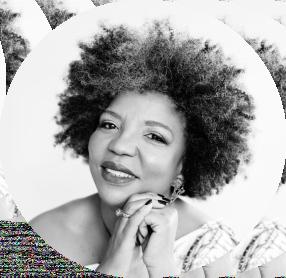
“I tell my story to self-liberate.” Barbara Lawrence-Strydom
Chief Enlightenment Officer of BDLS AFRICA (PTY) Ltd. Social entrepreneur, capacity builder, transformation translator, diversity practitioner, ESG expert , storyteller, visionary, strategist and author, Barbara Lawrence-Strydom was raised on a farm in Nqabeni, rural KwaZulu Natal. She is a mother of two young men, both exploring their respective interests in agriculture and the environment. Barbara is the CEO (Chief Enlightenment Officer) of BDLS AFRICA (PTY) Ltd holding company established to build the African continent through storytelling, capacity building for individuals, families, youth, entrepreneurs and corporate organisations. She was appointed as a bank manager in 2003 and worked in the financial industry for 18 years. She is a storyteller, passionate traveller, heritage photographer, legacy shaper, mountain climber (Mt Kilimanjaro 2018), author of THE BOOK TRILOGY – Waste Knot, Seed is Life and The Power of Hemp and the founder of the Master Dreamer programme. This programme facilitates vision board sessions which is a story telling tool utilised to
facilitate individual visions, values and goals. To date over 2000 sessions have been facilitated from boardrooms, across borders including a session with teenagers in Beijing during a visit to China, the NEWF Scuba Divers for both Labs, over 35 Royal Houses -Chiefs, Princesses, and Communities across seven provinces, in suburbs, rural villages and in townships. Her current collaboration with Centre for Mental Wellness and Leadership in the Trauma-Informed and TraumaFocused healing conversations as a co-facilitator in the reimagining in pain has become a well sought-after program which has now expanded to the Enviro/Eco- trauma-informed healing conversations as the traumas of the environment mirror our distress post-covid and SGBVF upsurges. Barbara has also developed the MADE WITH LOVE label from her village in Nqabeni with environmentally friendly, reusable travel bags/pouches under the AUNTY B brand (www.auntybcollection.com). The label was launched to celebrate locally made products while amplifying our villages and suburbs by geographically mapping our handprints and linking them to our local stories to increase our tourism footprints.
“Without Vision my people perish.”
#theAfricaIsee – her hashtag is to amplify a view of Africa celebrating our stories for us by us” from the Southern Tip of Africa to her Pyramids – TOGETHER
To contact Barbara: strydombd@gmail.com, Website: www.bdlsafrica.com, Instagram: barbaralawrencestrydom
Profile photo credit: Monica Dart Photography
Scan to purchase these incredible books:
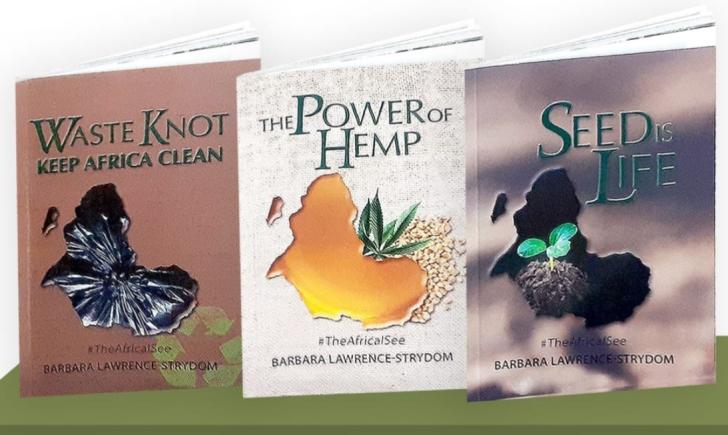
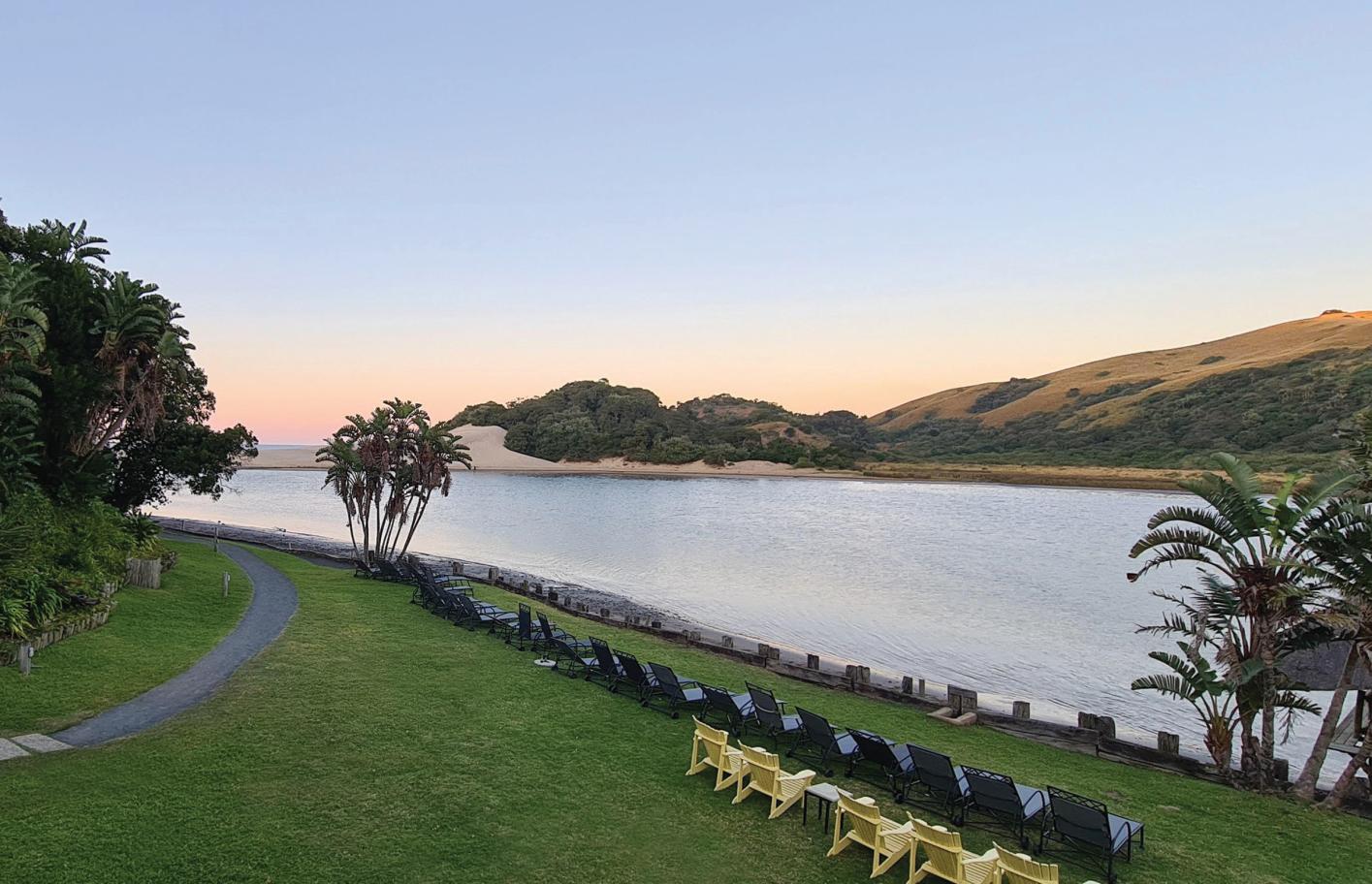


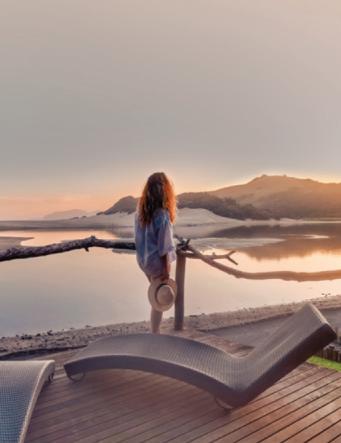
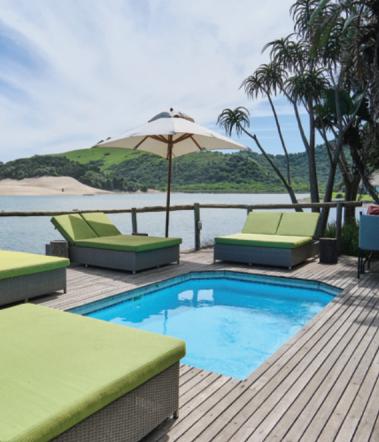


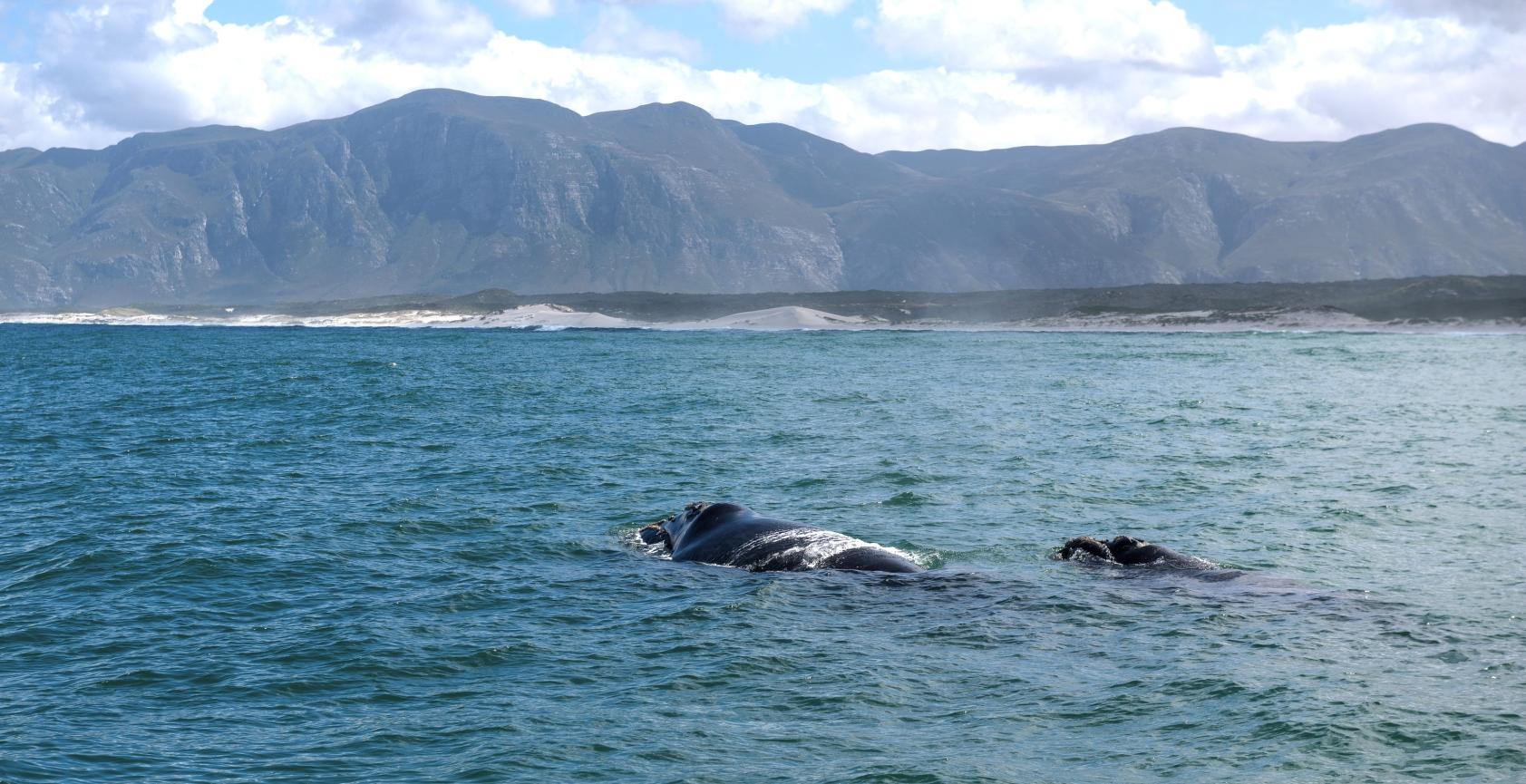
Thegoaloflifeistomakeyourheartbeatmatchthebeatoftheuniverse, tomatchyournaturewithNature.
JosephCampbell,mythologistMy last conscious memory last night was of embracing my tiredness and gratefully drifting off to sleep as I was lulled by the rhythmic breathing and blowing of a nearby mother whale and her baby.
What a gift to be spending time in a friend's seaside home immediately alongside the Walker Bay Nature Reserve, a few minutes' drive from Hermanus, the Cape holiday resort that sells itself as one of the world's best whale-watching sites.
This morning I awakened not to the sounds of whales, but to birdsong, meeting seagulls, cormorants and oystercatchers on my early morning walk down to the nearest beach and the invigorating ritual of an immersion in the chilly Atlantic.
I briefly pondered 'What's mine to do today?' and dismissed the idea of doing. Better by far simply to be. To be filled with awe and gratitude to be part of an amazing and vibrant natural world and to be feeling the interconnectedness of all life, along with an acceptance of the rhythms of death and rebirth.
I'd been reminded once again of those natural cycles with the passing a few days earlier of one of my closest friends, who transitioned peacefully into the Light in his Cape Town family home, accompanied by his devoted wife and doting daughter.
A week later it was my privilege to speak at his
memorial service. I shared some humorous anecdotes and finished off by quoting spiritual teacher and bestselling author Robert Holden. In his latest book Higher Purpose he writes: “If by the end of this book, you are still not sure how to find your higher purpose, I'll make it very simple for you.
“Your purpose is to love the world. You are here to be a presence of love. Your work is to be the most loving person you can be.”
I believe my friend was and is that essence of love and his life inspires me to revisit all my goals, aspirations and intentions.
What is mine to do? Is this who I really am? Is this the best me I can be? Who might I be if I let go of my endless striving and simply listened. Listened deeply and devoutly to what is waiting and wanting to unfold. Can I trust those inner prompts? Those whispers of knowing? What is my heart trying to tell me?
A wonderful gift this past year has been to serve as the summer custodian of the Findhorn Foundation's Traigh Bhan retreat house on the sacred Scottish Isle of Iona, also holding several retreats. And an added blessing was the time when there were no bookings and I was able to be alone with myself, listening deeply while engaging in simple gardening and maintenance tasks in between solo meditative walks.

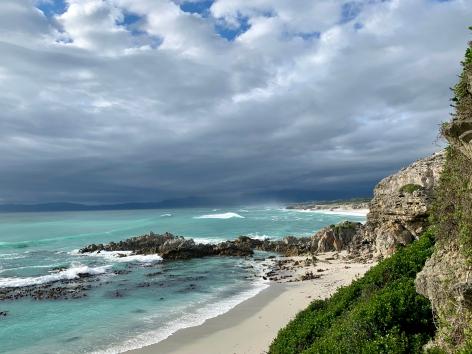
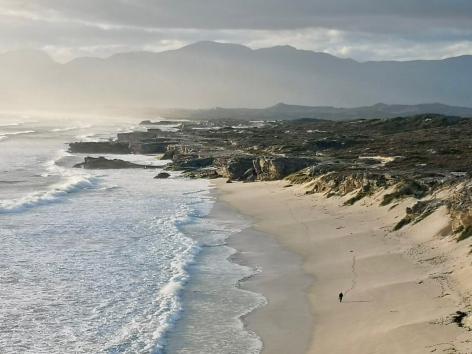
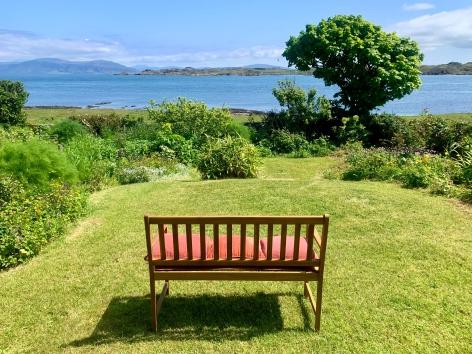
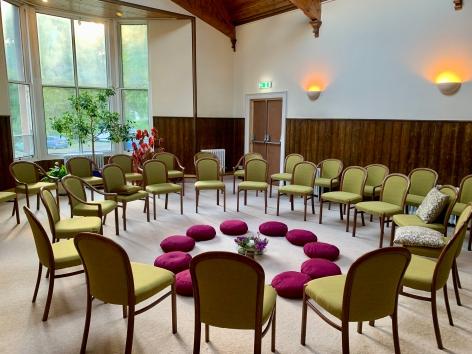
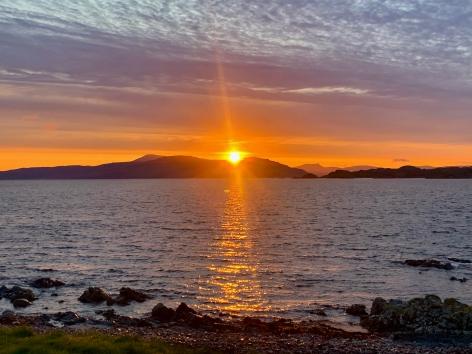
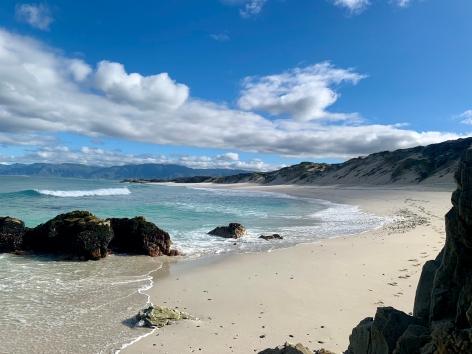
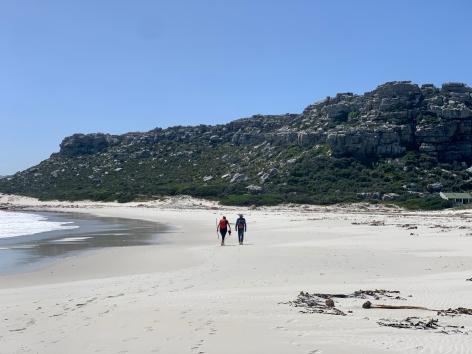
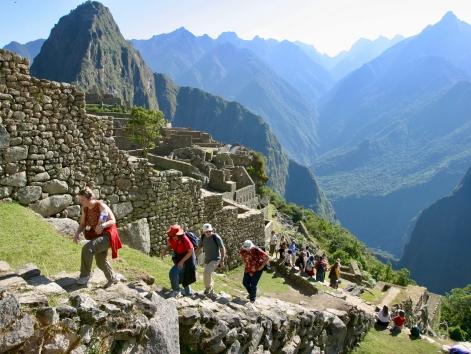
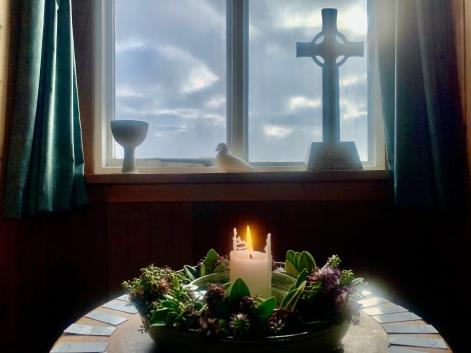

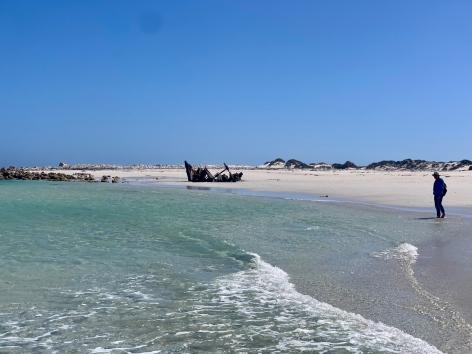

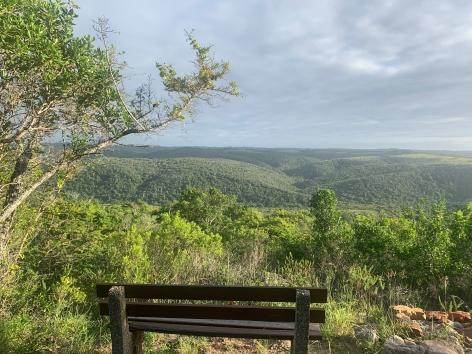
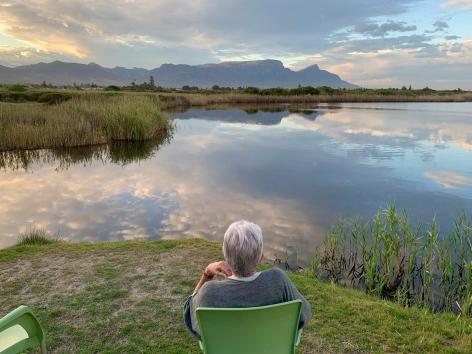
For four remarkable months I slowed to the pace of my ancestors, walking at pilgrim pace and only driving a vehicle on two occasions when I journeyed back to the mainland and the spiritual community based at the Park Ecovillage in Findhorn.
It was a spiritual, emotional and physical reset. Time on Iona also enabled me to dive deeper into my understanding of Celtic spirituality, which is far removed from the fear-based and patriarchal Christian upbringing of my childhood. How could supposedly caring adults try and convince a small child that he or she was born in sin? Does man really have dominion over the animals and other creatures with which we share this quest for survival and thrival? Is it really possible that the Creator is an angry and vengeful god with strangely human traits.
Meeting author John Philip Newell, attending his presentation in the Iona Village Hall and then buying his latest book Sacred Earth, Sacred Soul, has been pivotal and hugely uplifting.
How beautiful are the Celtic messages that, far from being born in sin, we are all Divine beings and part of an interconnected and interdependent world of Oneness, which celebrates all lifeforms and honours the sacred feminine and masculine equally. This has that instant rightness and resonance of truth.
Another book I've enjoyed recently is I May be Wrong by Björn Natthiko Lindeblad. It tells the story of a Swedish student who became a Buddhist monk in Thailand for 17 years and it has opened me up to questioning all my firmly held beliefs.
Which always brings me back to the practice of deep listening and trusting those intuitive hits that come from the heart, rather than the head. Does this resonate? Does it have the ring of truth?
It's an exciting journey and a work in progress.
I suddenly had an urge to seek guidance from my favourite card deck and had to smile when I drew the Angel of Exploration. It invites me to 'Investigate the possibilities. Cultivate curiosity and interest. Go beyond the known and familiar. Ask provocative open-ended questions and anticipate remarkable, refreshing answers.'
When I go from here, I want to leave behind me a world that will be richer for the experience of me.
I want creatures – the animals and the birds – to be less afraid of human beings because they have known me, because I have blessed and loved them and, far from doing them any harm, have done them good.
I want to leave trees that are rustling with my thoughts; trees that have heard me speaking to them when we were alone together, trees that, one day long after my form has disappeared, shall still in some mysterious way, cherish in their very beings their secret knowledge of me, so that others who seek shelter from the rain or who seek shade under their branches, shall catch the peace that went out from me.
I want to leave the whole of Nature nearer to the whole of man. I want to store up riches in the wind and to leave blessings travelling upwards to the stars. I want to leave my peace in the grass. I want the tears that I have shed for the sake of high love to come again in the dew. I want to leave Nature richer for having known me.
I want to leave my fellow man more sure that there is a Divinity that shapes his ends. I want to leave him with the knowledge that death is nothing and life is everything. When I go from here, I want to leave behind me a deeper sense of God.
Brooke Astor
New York's First Lady of Philanthropy who died in August 2007, aged 105.
By night she reigned over New York society with a disdain for pretension and by day devoted her time and considerable resources to New York's unfortunate - for decades she was known as the city's unofficial first lady. With a wink and a smile she liked to quote the leading character in Thornton Wilder's play, The Matchmaker, saying: “Money is like manure; it's not worth a thing unless it is spread around.”
Geoff Dalglish is a writer and spiritual and ecological activist dedicated to raising consciousness. He has walked more than 30 000km with climate change messages about treading more lightly and lovingly upon the Earth. He is an ambassador for the Findhorn spiritual community and ecovillage and is Odyssey’s ‘Pilgrim at Large’

To connect with Geoff email geoff.dalglish@gmail.com. https://www.geoff-dalglish.com
"Thefirstwealthishealth."-
Single and mixed herbal tinctures have been used as powerful tools to support the body's self-healing and maintain equilibrium for centuries. Single herbal tinctures are crafted by extracting the active compounds of a single herb, while mixed tinctures blend the essence of multiple herbs. The magic of these tinctures lies in their ability to harness the therapeutic properties of nature's bounty. Each herb carries its unique healing qualities and, when combined thoughtfully, they can create synergistic effects that enhance overall wellbeing.
GreenPHARM, founded on a smallholding in the north-east of Pretoria, situated next to Roodeplaat Nature Conservatory and the beautiful Dinokeng Nature Conservatory, has been dedicated to perfecting the art since 2012.
Founder Eduan Joubert started his journey by studying Health Sciences, a Master's Certificate in Herbalism with modalities in iridology and sclerology accredited by the Institute of Natural Health Care, Bio-resonance Feedback, Rife resonance and Kinesiology. His dream was realised by developing the product and launching the company now known as GreenPHARM South Africa PTY LTD, the focus being on manufacturing quality premium tinctures readily available to you to assist the body with self-health and equilibrium.
Most of the herbs used in our tinctures have been used all around the world to create self-healing for the body that seeks equilibrium between the physical, emotional and biochemical parts of the self. Most of our herbs are grown on our farm, on the premise of conscious practices devoid of pesticides and herbicides, while the rest are sourced from across the globe, ensuring excellent quality manufacturing and supply.
In addition to our tinctures, we
offer a diverse range of healthenhancing supplements in capsule form. Lions Mane Capsules are designed to improve sleep, reduce anxiety, enhance brain function and boost the immune system.
Our product line-up also includes Moringa, Collagen, Saw Palmetto Plu and Glyco C Mag, each serving specific purposes such as providing essential nutrients like oxygen, vitamin C, glyconutrients and magnesium. Blackseed capsules are included for their anti-inflammatory properties.
For those looking to address male libido and testosterone levels, we offer Testo Plus, while MSN capsules are available to support individuals dealing with osteoarthritis, anti-stress needs, joint pain, and overall gut health. These encapsulated supplements are a convenient and effective way to address a variety of health concerns and optimise wellbeing. We also manufacture an Angstrong molecule mineral liquid range we have Zinc, Iron, Copper and Super Silver.
Visit our official website for any enquiries, to place orders or to explore our extensive product range: at www.greenpharmonline.com
There, you will find a wealth of information about our products, their benefits and how they can support your health and wellbeing. Our website is your one-stop destination to discover the finest herbal products, carefully curated to promote a holistic approach to self-health. We look forward to serving you and helping you make well-informed choices for your wellness needs.
Step into the world of natural wellness with GreenPHARM's remarkable herbal products, where the power of nature meets the art of healing.
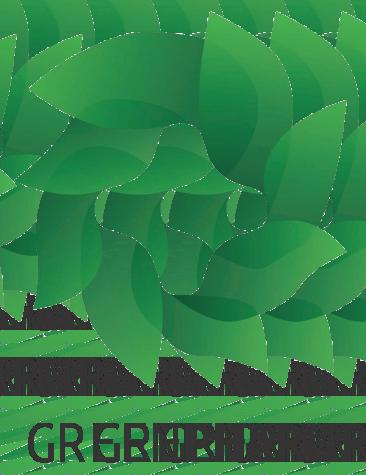


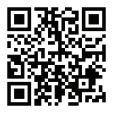

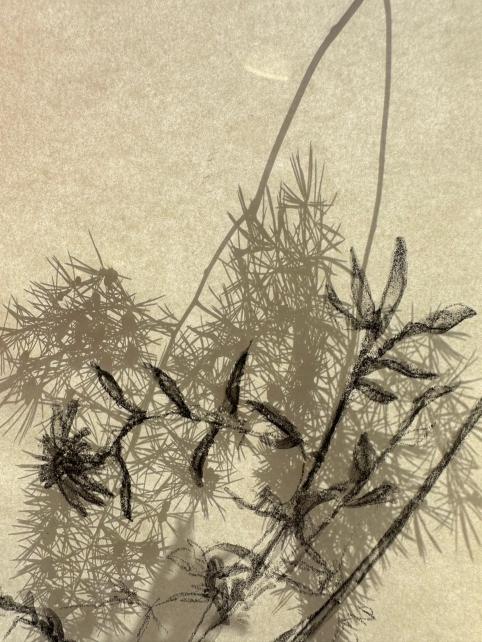
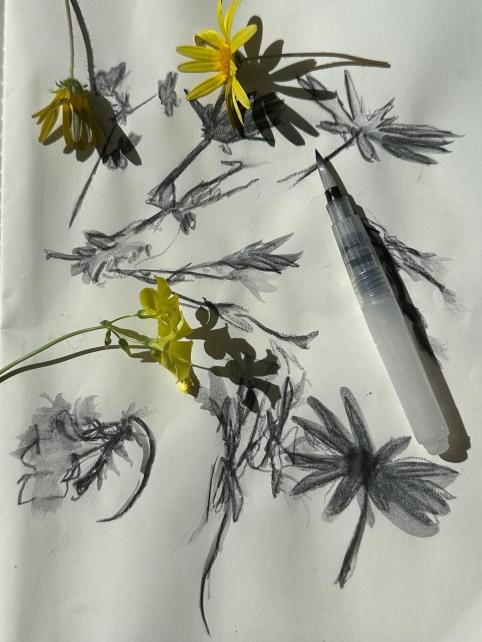
Heavy rains have descended into the dry Karoo in recent months. The desert has been saturated and the ground caressed by the touch of the clouds, a rare tryst in this arid land, where the sky is selfish with gifts of water. The sweet drink served to the body of the Earth has momentarily quenched Her insatiable thirst. The quintessential scent of a saturated Earth now envelops everything in a blissful haze. She feels full and pregnant, Her senses heightened and Her soul lifted with a fertile euphoria. The beautiful body of the Earth seems to have transcended the dry ache of drought and entered into a realm of ecstasy. It is as if the sky has whispered its secrets to Her and all She can now do is rejoice.
The heavy rains have left a blanket of moist fertility stretching across this sentient biosphere, feeding and sustaining a delicate balance of fertile potentiality. The water is a lover that finds its way into Her skin, nestling in Her undulating folds and saturating Her flesh with sweet sustenance. Her hunger for the water seems to have been lying dormant in the multitude of seeds which now come to life. And, as with the uniting of great lovers, this union of rain and Earth unfolds in a celebratory kaleidoscope of liveliness, a surge in the creative pulse of the colours of creation.
After experiencing such abundant rainfall at the cusp of spring, an unimaginable number of flowers have taken to blooming. The beauty is immense. It feels as if the Earth stretches Herself open to release every possible potential
of Her secret inner beauty. And it is the same feeling inside me. It feels as though I am prying this bodily frame open so that I can fit more of this floral blossoming inside me. There is so much beauty in the wild flowers. They carry the signature of something deeply sacred and holy, a primordial spiritual essence beyond the concentrated light of the sun. And as I witness this majestic unfolding of blooms, all I want is to be more deeply immersed in them, remove all obstacles between myself and their beauty, tear open my chest and place them inside me. It is not enough to glance at the flowers in passing and remark at their prettiness; I want to consume them wholly.
Yes, this springtime bloom of flowers is a visual beacon, a symbolic signifier that draws me into the mystical language of a conversation with this living Earth. This language of the Earth points to that same place inside myself that reflects this beautiful outer scene. It is as though there is a place inside me where I am alive like this blossoming Karoo veld.
We walk a kilometre through the wild open spaces of the Karoo scrub, gently treading along the paths made by wild creatures, meandering through patches of colour and stopping to admire the beauty in the details beneath our feet or to catch the feeling of a particular place. The feeling of this landscape is like an indigenous songline where the whole world is alive and in conversation with us.
Our beacon is an impossibly bright patch of sunshineyellow daisies that have bloomed like a giant oil-painted brush of yellow smeared over the land. Have you ever seen beauty that pulls you open, that stretches your insides and makes you want more? This day is like that. It feels as if there is a veil between my eyes and this beauty and I want to strip it away and be over-exposed to the imprint of this wild canvas of colour. The beauty touches all our senses and then aches inside. The more I look at it, the more I need it. Yes, I want this aching beauty to consume me wholly.
In this field of yellow, mesmerised by the sights, sounds and feelings of being so impossibly alive, there is not a sense of peace and completion but rather a longing, a yearning, a feeling of deep missing. I ask myself how can I be so close to these flowers and yet feel this deep missing? So I lie down inside this dense patch of brightness to meditate on the question buzzing inside me. I immerse my body into the land, surrender my senses to this place with eyes closed and breathe it in, feel the meadow around me, immerse my mind deeper into my heart, which is the only thing big enough to contain this scene of the fertile land. But now there is only more longing inside me. So there I lie inside this patch of unfurling blooms and yet long to be even closer. It is ecstatic and agonising, this pain of being pulled open by the beauty and never being satiated.
This agony takes me beyond my body, beyond mind and into the realm of the spiritual. The aching is too much to bear and so one goes beyond this world, this aching flesh, this frail sense of self and into something bigger than this. I melt into this essence beyond that flower, the state of being that that precedes its form, an essence that rings true in the heart like when you witness a sunrise and hear the dawn chorus of birdsong.
I think you need to be a lover to really take in the beauty of the wilderness. You see the face of God in the body of the Earth. You see Her beauty, Her insatiable attractiveness, Her allure, Her ability to seduce absolutely and you are drawn in, spellbound, in love, in a heartbeat. Only with the eyes of a lover, the appreciation of the lover, do we really see the divine smile of the Earth inside a wild flower. She gives to us endlessly, this love that spills out from inside the Earth, this divine feminine secret mystery that spills out of Her heart and into the world.
Opening my eyes and returning to the present moment, I am here in the middle of what appears to be an ecstatic orgy of buzzing insects drinking the nectar of these
flowers. This feels nothing like the pollination described in a biology textbook. It is intensely alive, filled with ecstasy, an intense feeding, drinking, procreating mess. This pulse of life, this surge of procreation, floods the air as the plants thrust their floral bouquets into the sky searching for pollination, fertilisation and the continuation of their kind. The flowers drip with nectar and pollen, saturated in the banquet of sweet things that the birds and insects seek out. It drives the insects into a frenzy. They are entirely consumed in their drinking and eating, rushing about from one flower to another, utterly absorbed in their activity. The nectar of these flowers is irresistible to the insects and birds who become intoxicated in their love for more and more sweetness.
There, look at that yellow daisy with a beetle stuck so far inside you can see only his back legs kicking about. Here, a bee, fully laden with its prize, body covered in the golden dust, legs carrying heavy bags of pollen. Look at that bumblebee: The vibrating wings unlock the pollen from that flower. This buzzing sonication is a secret floral password, the key to a lock, a Kamasutra of pollination. And there: That high-pitch buzz in the midday sun, that almost imperceptible silent ringing of these vast empty spaces of the wilderness, carrying the sounds of banqueting and a longing for fullness.
Now turn your head and witness this audacious orange splash of an aloe in full bloom. One cannot do anything other than be gob-smacked at how potent and phallic and wonderfully erotic this inflorescence of a thousand nectar-dripping blooms can be. The whole stem soaked in nectar like a fountain of sweet wine. The birds land in the flower and thrust their beaks deep inside, drinking the sweet syrup of the vermilion orange blossoms. Their beaks, their faces, saturated in pollen, the result of their lively dance on the phallus bloom. One can imagine the saturation of colour, nectar and pollen as a magnificent mating ritual, no, a passionate love-making act between bird and flower. Each beak plunged inside the flower bringing a fertile phallus loaded with ripe pollen that fertilises the waiting ovum. And I wonder whether they are drunkards, lost completely in their intoxicated states with eyes only for the one thing they want more, more, more of. It is the great seduction and they are powerless against Her charms.
I lie here wondering about the flower, thinking that maybe this plant feels it too, the orgasmic ecstasy of having the birds and bees tongues prying out its sweet nectar, knowing that soon it will be impregnated with seed that will fall to the ground and continue this great cycle of life.
This is the intimate dance of the plants' love lives. They are separated from each other, lacking legs to visit their lovers and so they get the insects to do the bidding of their seduction and lovemaking. There is a oneness between flowers, birds and insects in this moment, utterly inseparable, as though they are an extension of the collective will of the flora to procreate. This is the face of God, not some disembodied deity in heaven, but a living, breathing, feeling, creative and passionate Goddess that we call Earth. This is He, this is Her. In this liminal space I feel the innate creative energies of procreation laid bare in the floral kingdom. I guess I realise that, if one can dismiss the scientific courtesy of botanical nomenclature and imagine the flowers with the eye of the erotic, the eyes of a living oneness, then these flowers become the living, breathing Kamasutra of creation. I start to understand that seeing without witnessing the sentience of our Earth and Her erotic dance of procreation is to miss a vital way of seeing and to erase the feminine mysteries.
And as the day wears on and the flowers open and close, the night reveals its own sweetness. The frenzied hive of activity of the daytime has passed but it has left a sweetness in the air. The insects and birds will rest tonight, safely in their homes provided in an infinite abundance of places inside the folds of the earth. The fire outside crackles, sparks rise like stars being released from creation, floating back up into the sky. And above us there is a planetarium like no other. The air is crisp, clean, there is no light pollution for miles and the stars drift and float and wink in the sky. This work
that we witnessed in the flowers today, it has left this whole place spent and yet fresh and vibrant and whole. The fabric of the air held together with mystery, with satisfaction, with the lively potency of the dark black of night. Even here in the blackness, one feels the pulse of the flowers around us, as though all the insects and birds are dreaming of them and filling the night with the scent of their remembrance.
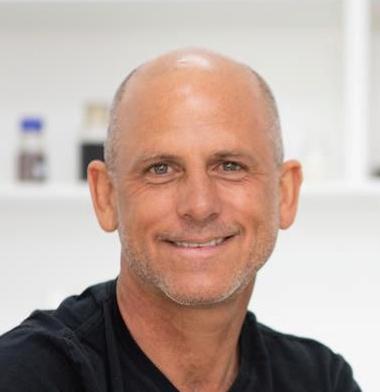
Steve Hurt's writing falls within the paradigm of spiritual ecology which approaches ecology from a spiritual perspective. His writing is influenced by shamanism, sufism and a deep love for the earth. Steve currently lives in South Africa and runs a business that trades in African medicinal plants, a trade that is driven by his wish to preserve the rich heritage of African medicinal knowledge for future generations.
To contact Steve: steve@thedanceoflight.co.za Website: http://thedanceoflight.co.za/

In a world where wellness can mean so many things and the ups and downs of feeling better and then cycling into overwhelm is an endless 'song'; what might 2024 hold for you?
Will you be going through the same rollercoaster of emotions and repeating situations and stories, or will the coming 12 months be where you are able to take your wellness to the next level, might we say Transformation.
Visualise how you can live your best life as the sun is peeking through the clouds, reaching out and touching your heart and soul, by igniting your purpose and full potential. Allowing your spirit to BURST into bright colours of nature, leaving your body, mind and soul filled with joy and peace by meeting your purpose and full potential.
Transformation has been a buzz word in our organisation for many years and, over the last five years, we have seen significant growth in people, which has overflowed into their world. What is transformation?
Transformation can be seen as the 'agility pill' for 2024.
Transformation captures wellness holistically and impacts work and home in a way that centres around your ability to shift your world for the better. In Positive Psychology we recognise that shifting our lens allows us to scan our world for opportunities and we can see a new way to navigate the uncontrollable challenges that get in the way of our plans and even living life to the full. Imagine the power of being able to fill your own emotional cup (joy,
peace, happiness, wisdom) and, through that process, being a more impactful human in both work and life. Imagine being able to unlock your limitless potential? Even as business people or leaders, imagine how transformation of yourself and your staff can impact outcomes.
Our Global CEO, Christina Foxwell, who was born in South Africa and migrated to Australia 16 years ago, is a testament to transforming of her life and our organisation. She has dedicated her career to building a human-centred performance improvement, coaching, training and consulting practice called Ignite Purpose
Madeleine Pretorius was recently appointed to Ignite Purpose as Director of Leadership, Growth and Cultural Transformation, she will be joining the team in SA. As the barefoot farm girl from the Free State, her background as Psychotherapist, Trauma therapist, Life and Mental wellness Coach from Oslo Beach, KZN, she will bring incredible value to our organisation.
Transformation is reached by significant growth when emotional and mental wellness impacts on work and home in a way that centres around your ability to shift your world for the better.
Ignite Purpose is looking forward to connecting with you and your organisation through our facilitation of workshops, seminars, leadership programmes, online courses, as well as the App. Ignite Purpose
Visit us at www.ignitepurposeafrica.com to find out more.
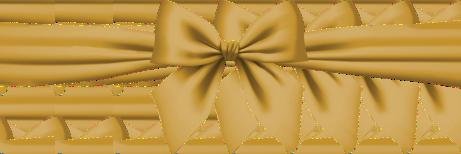
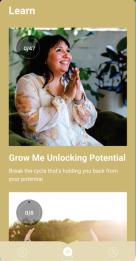

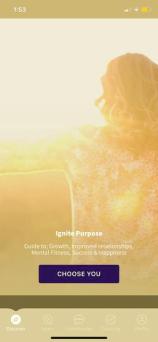
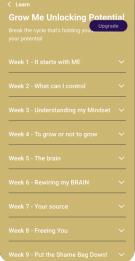
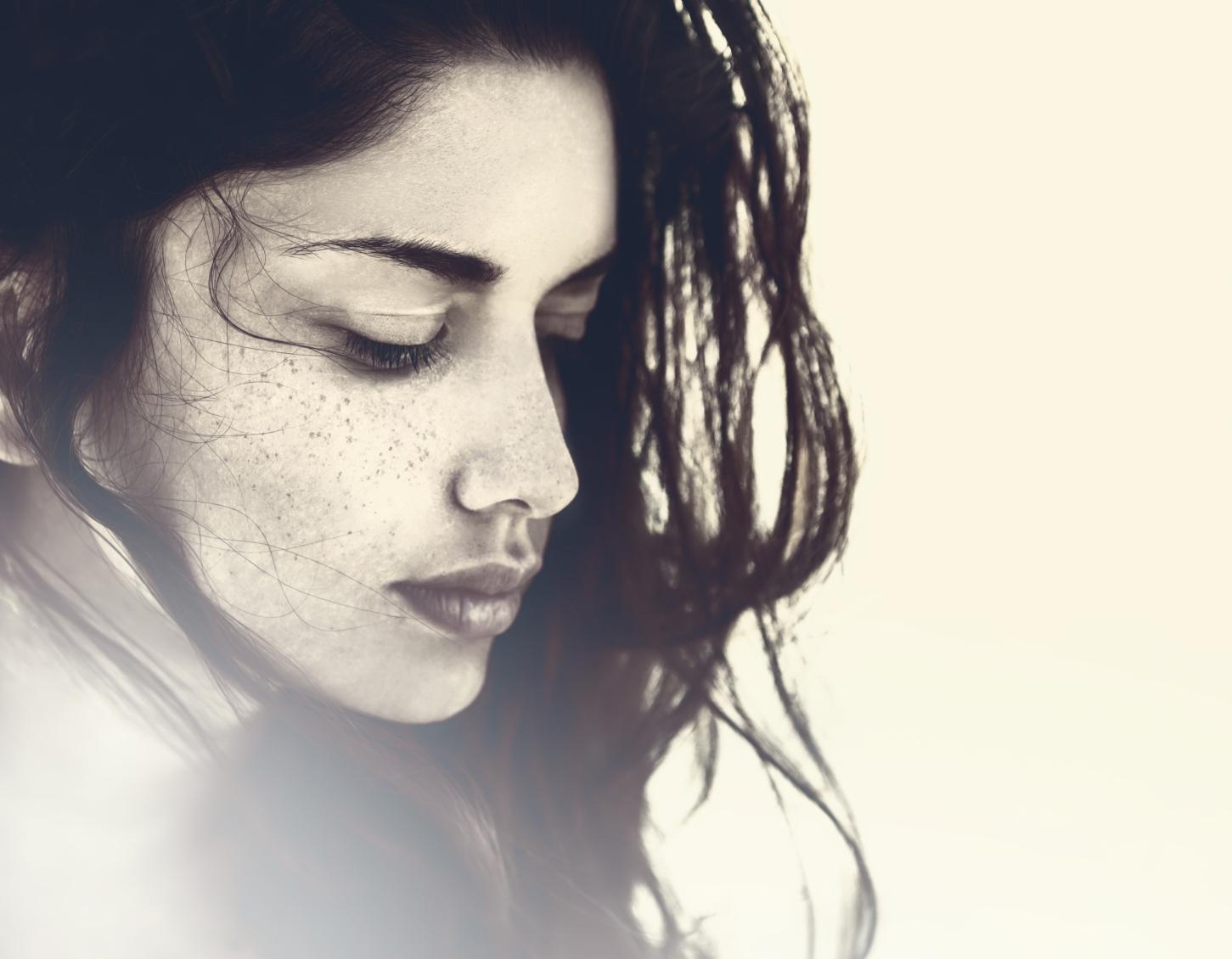
December, with its sparkling lights, decorations and the promise of joyous celebrations, is a month that traditionally evokes warmth and togetherness. However, for those grappling with mental health issues or navigating challenging life events like death or divorce, the holiday season can be decidedly uncheerful.
Let's face it, between the tasks, celebrations and family obligations, remaining jolly all the time is a very tall order and the pressure to do so can, in itself, trigger anxiety.
Whether or not one celebrates Christmas, the juxtaposition of festive cheer can become a poignant reminder of personal struggles, triggering emotional distress and a complex array of emotions, amplifying feelings of isolation and inadequacy.
And once stress is at its peak, it's very difficult to stop and regroup and, in this case, prevention is definitely better than cure.
The contradiction of festive cheer: A double-edged sword
The cultural and societal significance of December often permeates every aspect of life whether we like it or not. Shops are adorned with decorations, Christmas ads are on TV, Christmas songs are on every radio station and all around us people are making plans for the holidays.
Sadly, for many individuals, this festive backdrop becomes a double-edged sword, amplifying the challenges they face in their mental health journey.
1. Isolation amidst the gathering
The emphasis on togetherness and family during the holidays can intensify feelings of isolation for those who may not have close familial connections or who have experienced the loss of family members.
The societal expectation of joyful gatherings can inadvertently deepen the sense of loneliness for individuals who find themselves on the outskirts of the celebration.
2. Comparison and inadequacy
The pervasive nature of holiday celebrations can also trigger a sense of inadequacy as individuals compare their own lives to the seemingly idyllic portrayals in media and cultural narratives.
The pressure to conform to societal norms of happiness and familial bliss can create internal turmoil for those already navigating the complexities of mental health challenges.
3. Nostalgia and grief: The ghosts of holidays past
For individuals who have experienced significant losses, whether through death or divorce, the holidays often serve as poignant reminders of happier times.
Navigating the season without loved ones can intensify feelings of grief, triggering a complex interplay of nostalgia and sorrow that can be overwhelming.
4. Financial stress: Navigating the pressure of gift-giving and entertainment
The holiday season often comes with financial demands, including the expectation of gift-giving and, very often, going out for meals or drinks.
For individuals facing financial challenges, this aspect of the holidays can be a significant stressor, contributing to feelings of inadequacy and guilt. Managing expectations and finding meaningful, budget-friendly ways to celebrate become crucial for preserving mental wellbeing.
Identifying triggers: A key to managing mental health during the holidays
Recognising the triggers that contribute to emotional distress is a crucial step in managing mental health during the holiday season. By understanding the factors that amplify stress and emotional challenges, individuals can implement targeted strategies to navigate this period more effectively.
1. Social comparison and expectations
Trigger: The pervasive societal expectations of joyous family gatherings and the cultural portrayal of the 'perfect' holiday season.
Strategy: Practice self-compassion and challenge the notion of perfection. Establishing realistic expectations for oneself is paramount. It's okay to recognise personal limitations and set boundaries on social engagements or festive commitments. Prioritise self-care and communicate openly with friends and family about your needs and boundaries.
2. Isolation and loneliness
Trigger: Feeling left out or isolated amid the emphasis on communal celebrations and family gatherings.
Strategy: Seek out alternative forms of connection. Engage with community events, reach out to friends, or volunteer for charitable activities. Virtual connections can also provide a sense of community for those physically distanced, so make an effort to reach out more during the holidays if you have loved ones far away.
3.Grief and loss
Trigger: Memories of loved ones and past holidays spent together, or the absence of familiar traditions can intensify feelings of grief.
Strategy: For those undergoing significant life changes, such as divorce or the loss of a loved one, embracing the idea of creating new traditions can be a powerful coping mechanism. Create new rituals that honour the memory of loved ones. Share stories, light a candle, or participate in activities that celebrate the positive impact those individuals had on your life.
4. Financial strain
Trigger: The financial demands of holiday shopping and giftgiving can significantly contribute to stress.
Strategy: Set a realistic budget for holiday expenses and communicate openly with friends and family about financial constraints. Consider alternative gift-giving strategies, such as home-made gifts or experiences that don't involve significant financial expenditure.
5. Pressure to conform
Trigger: External pressure to conform to societal expectations of happiness and celebration.
Strategy: Practise assertiveness and communicate your needs to friends and family. Establish boundaries and prioritise self-care, even if it means stepping back from certain social obligations.
Cultivating a mental health-focused holiday season
While the challenges of the holiday season are real, it's essential to recognise that the journey toward better mental health is ongoing and unique to each individual.
Cultivating a mental health-focused holiday season involves intentional self-care practices and a willingness to prioritise wellbeing over societal expectations.
• Mindful reflection: Embracing your emotional landscape
Take time for mindful reflection on your emotions and acknowledge the complexities you may be experiencing. Embracing your emotional landscape without judgment is a crucial step in fostering self-awareness and resilience.
• Setting boundaries: Protecting your mental space
Establishing clear boundaries is essential for protecting your mental space during the holiday season. Communicate openly with friends and family about your needs and limitations and don't hesitate to decline assertively invitations or activities that may contribute to stress.
• Alternative celebrations: Redefining traditions
Consider alternative ways to celebrate that align with your current emotional state and wellbeing. This might involve creating new traditions, opting for intimate gatherings, or even spending the holiday season in a way that resonates with your personal values.
• Seeking support: Connecting with others
If the holiday season exacerbates feelings of loneliness, reach out to supportive friends, family, or mental health professionals. Community resources and support groups can provide a sense of connection and understanding during challenging times.
• Self-care practices: Nurturing your wellbeing
Prioritise self-care practices that nurture your wellbeing. This might include activities such as meditation, exercise, spending time in nature, or engaging in hobbies that bring joy and relaxation.
• Expressing gratitude: Focusing on positivity
Cultivate a mindset of gratitude by focusing on positive aspects of your life. This intentional shift in perspective can counterbalance negative emotions and contribute to a more positive overall outlook.
Last, but certainly not least, as we navigate the festive landscape of December, it's imperative to approach the holiday season with compassion - both for ourselves and others.
And by identifying triggers, implementing targeted strategies and prioritising mental health, individuals can transform the holiday season into a period of self-discovery, resilience and, ultimately, healing.
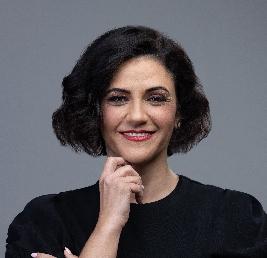
Yael Geffen is the CEO and shareholder of Sotheby’s International Realty, South Africa. She grew up in a real estate dynasty established by her grandmother, Aida, and, prior to joining the family business in 2009, she acquired extensive real estate marketing, brand building and business development experience in the United States. Yael is also an accomplished public and motivational speaker and her broadcast experience includes hosting and producing her own radio show from 2013 to 2017. Yael is a sought-after Life and Business Strategy Advisor and is the 2020 winner of Standard Bank’s prestigious Top Woman in Property Award.

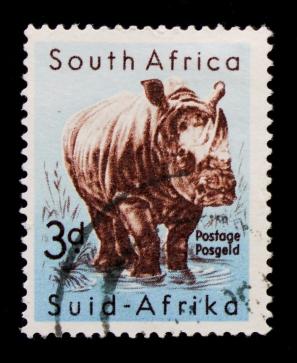
Part two of a profoundly significant trilogy “SciencesavingRhinos.RhinosSavingPeople.PeopleSavingRhinos.”
ForwithoutNatureandournaturalworldguidingusandfillingoursouls,whatwouldwebe?
As an anthropologist, I am fascinated by humans. It's humbling to be able to observe and unpack the complex and fascinating dynamic of what it means to be human –and to explore the intimate links between people and nature, nature and people.
Given today's environmental challenges, it's important never to forget that human passion and innovation can give rise to the most incredible opportunities to help save our planet, preserve all species and protect biodiversity. And hopefully rescue ourselves at the same time. We may be part of the problem, but equally, we are part of the solution.
But why rhinos? How can it be possible for a species to save us and not the other way around? The simple answer is to change the dynamic by bringing benefits to all in the name of an ambassador species. And rhinos have the power to be just such an ambassador.
Rhinos are architects of the landscape. They shape the natural world around them. Their singular presence creates a myriad of living spaces and opportunities for a
complexity of living creatures to survive. From creating mud wallows, to being nature's gardeners, to providing dung that feeds the earth, rhinos are truly magnificent creatures. Entire ecosystems and the survival of biodiversity rely on their presence for survival – and have done so for millions of years. We would like to see them continue to do so for millions of years to come.
Having said that, let's be honest. Why would anyone living in an impoverished village, or a big city dweller or someone in a far-flung part of the planet, even care about a rhino or the issue of rhino poaching? The reason is rhinos matter in more ways than you can possibly imagine. By protecting rhinos, we are able to protect entire ecosystems and communities.
Thanks to The Rhisotope Project's powerful combination of science and philanthropy we are able to use nuclear science techniques to devalue and track illegally taken wildlife goods. In tandem with this we can use the equally powerful tool of philanthropy and social upliftment to empower local people and communities.
Have you ever heard the African proverb: 'An empty stomach has no ears'? Poverty and lack of access to basic resources is a daily challenge for many communities. Rather than being tempted to survive by accepting lifethreatening engagement with poachers, a philanthropic presence empowers local communities to become rhino champions – a vital layer of protection for the species and the communities living near or amongst rhino populations.
In essence, a living rhino should have more value than a dead one in the hearts and minds of local and international communities. Because the rhino, as an iconic species, can actually become our protector.
When you consider the four black market trades of weapons, drugs, the illegal wildlife trade and human trafficking, the picture starts to unfold. Where you find one black market crime, you will always find at least one other. It goes without saying that weapons and wildlife trafficking are inextricably linked.
The black-market industry is growing every year and is currently valued at around $2,25 trillion, including illegal logging. This will only increase year on year unless innovative solutions are brought forth. The black market trade in wildlife trafficking alone is currently valued $23 billion and increases every year. Coupled with consumption of powdered horn, horns are used for trinkets, as a form of currency and status symbols that fuel these global issues.
Most people do not realise how rhino poaching affects every citizen on the planet until you understand that rhino horn is the most valuable false commodity on the black market. It then becomes clear why the death of a rhino in Africa or Asia, just for their horn, affects our global community. Rhino horn has more black-market trade value than gold, platinum, cocaine or diamonds. Horns can buy drugs. Horns can buy weapons. Horns act as a currency and a status symbol.
Given the high levels of poverty in the countries where rhino populations reside, it's no wonder that local communities are the first target for criminals and crime syndicates. Rhino poaching consists of five levels. Level 1 refers to poachers on the ground to level 5 being the end user, on its passage through the hands of handlers, smugglers and fixers. The price of the horn per kilogram increases with every layer up the chain.
At level 1, crime syndicates and criminals prey on the most vulnerable. When your family is starving, or being threatened by criminals directly – it's incredibly difficult to ignore the stark reality of hunger and fear. Those facing this daily threat will naturally consider their options - even if those options lead down a dark path. Sometimes, they have no choice.
Imagine that you have no access to work, clean water or basic resources. Imagine that you have children to feed, and a household of more than five people to support. How tempting in these tough times to consider cash offers for information on rhinos? Or to target people in communities who know where rhinos are? Money to hand may feed the family today, but the stark reality is, once in the grip of a syndicate – then what?
Imagine instead a water tank with the image of a rhino on it and a solar powered pump that fills it each day. The picture is clear. This pump and tank provide clean water for your home, your village and your animals every day. This same rhino tank waters the produce you grow in your village, your cooperative or school garden. And it is this very produce that feeds your family, your schoolchildren or your community on a daily basis. Imagine that all this was made possible because of a rhino.
This is where the beauty lies. The revelation. The realisation that the protection of these iconic rhinosthese magnificent mega herbivores that have roamed the earth for millions of years, can extend protection into every corner of the world.
The reality is that, by directly linking improved living and benefits to communities in the name of rhinos, we can help to create awareness and cultivate rhino champions. Helping people protect themselves in a safe and healthy way, makes communities more willing and able to protect a rhino by not allowing criminals into their communities – and thereby avoiding exploitation into the future.
With philanthropic funding support, The Rhisotope Project has identified a number of key endeavours that will help shift the dynamic. For example, Rhisotope has a specific focus area on women and girls, with a programme to supply reusable sanitary items. This helps young women maximise on their access to education and opportunities that arise from that.
Every month, thousands of young female learners are not able to attend school due to their monthly menses simply because sanitary care items are unaffordable for most of them. This means valuable time is lost during their window for education due to being unable to attend school for at least one week every month.
Imagine instead that every young woman is gifted with a reusable sanitary item kit. Each kit has a rhino image on it. This picture shows them how rhinos have made this this life-changing gift possible. Each sanitary towel in the kit is washable and lasts for five years, which is the duration of high school. The added bonus is this also reduces land waste which further helps to protect our environment.
Resources, skills development opportunities and improved living conditions in the name of rhinos as an ambassador species, will be an integral part of the success of Rhisotope. What a positive way to act towards the protection of the species, each other and our planet. The rhino becomes the protector.
Sharing knowledge about the rhino crisis and how it impacts our daily lives brings a direct connection towards improved living benefits because of the existence of a rhino. The cultivation of tourism and conservation champions in local communities goes a long way towards strengthening awareness through community togetherness and participation.
The reality is that there are more things that unite us than divide us. No matter who you are and no matter where you are in the world, all you wish for is access to basic resources and to live a safe, peaceful and healthy life.
The Rhisotope Project is one of the most innovative solutions to stem the trafficking tide and succeed in the fight against rhino poaching and the smuggling of horns.
From boreholes to food gardens, sanitary items to school desks - each and every opportunity for a better life is possible because of rhinos. The local villages become a line of protection. Local communities become active custodians. Entire regions become safe zones. The black-market trade is denied a critical point in its cash flow. Security in the name of rhinos translates into security for all.
A reduction in the number of poaching attempts coupled with local community engagement and appropriate philanthropic campaigns will have the desired overall effect of reducing the number of animals being taken for their horn.
Rhinos have become ambassadors for change, where everything will be able to thrive by their existence. We need a cascade of benefits to accrue between and amongst all living things - from homo sapiens right down to the soil and the tiniest insect or dung beetle. And we need all the help we can get to keep the momentum going in our great circle of life.
The Rhisotope Project was initiated in January 2021 and is being developed by Prof. James Larkin, who is the Director at the University of Witwatersrand's Radiation and Health Physics Unit (RHPU).
The Rhisotope Project - a Wits Iconic Centenary Project - seeks to take a wholly different and innovative approach to addressing the issue of the illicit wildlife trafficking of various endangered species of fauna and flora. At a later stage, the technology will be adapted for elephants, pangolins and other species into the future.
A strong philanthropic campaign is due to start in Phase 3 of the Project.
Research shows that the poaching of animals such as rhinoceros isn't done on an ad hoc basis, but is carefully
organised by criminal syndicates operating to meet a specific demand.
If we succeed in reducing the demand by the end-user because they believe the horn will be radioactive and we change the reward/risk ratio in the minds of smugglers and get them to move away from wildlife trafficking, the natural result will be the reduction in the number of animals poached.
It should again be emphasised that Rhisotope technology will not itself guarantee stopping poaching on the ground, but rather act as a deterrent. If a horn is taken, easier detection and stronger prosecutions will soon influence poaching syndicates to avoid those areas where Rhisotope technology has been applied to rhino horns. This changes the risk reward/ratio considerably. Currently the poachers experience a low risk, high reward dynamic. We have the ability to change this.
There is currently no other technology or strategy that can combat the layers or complexities of rhinoceros horn poaching and smuggling to this scale globally Failure to attempt alternative strategies will see a continued and unprecedented decrease in numbers in threatened species such as rhinos, in addition to global eco system health and integrity.
The development and application of this nuclear technology therefore has the capacity to help deter poaching, increase detection capabilities of smuggled horns and consignments of items globally, increase prosecution success under terrorism laws with harsher penalties as well as reveal smuggling routes and deter end-user markets.
But it all has to start somewhere, with someone. It starts with us. Science saving rhinos. Rhinos saving people. People saving rhinos.
To read part one please visit: https://odysseymagazine.co.za/science-saving-rhinos/
In the Autumn Edition we feature Part Three of this profoundly significant trilogy “People Saving Rhinos”. For more information: https://rhisotope.org/
To gift this project with your generosity: https://rhisotope.org/donate/


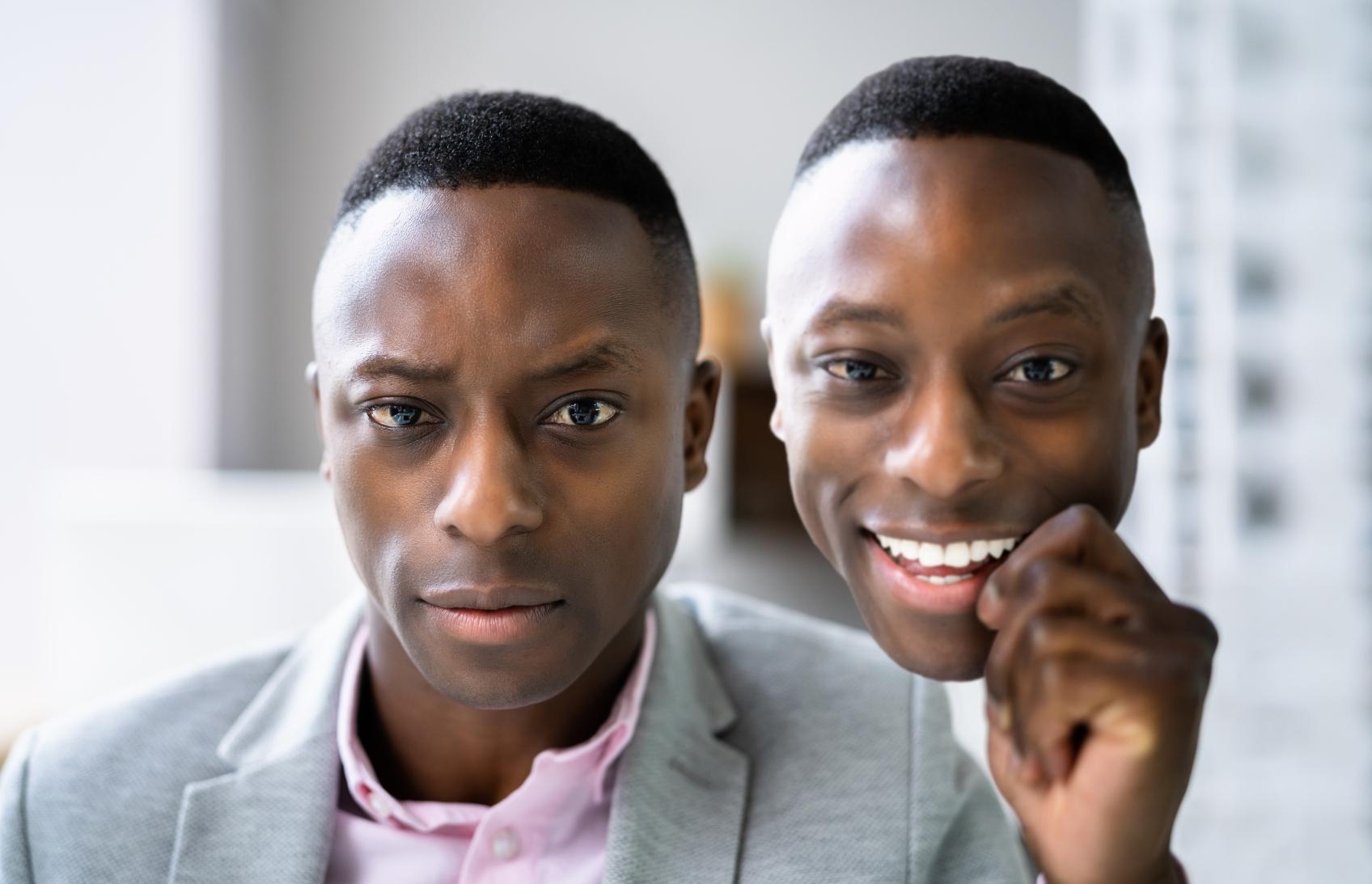
Imposter syndrome is a phenomenon that plagues many of us.
It refers to a persistent feeling of self-doubt and the belief that one's success is merely due to luck or external factors rather than one's skills or abilities. Those expriencing imposter syndrome often believe that they will be exposed as frauds at any moment. One is left feeling like a fraudulent imposter despite actual competence and accomplishments. This psychological condition can manifest in various ways, often undermining self-esteem and hindering personal growth. It is confusing to have these feelings of inadequacy when there is so much evidence and acknowledgment that proves to the contrary. Recently I shared a small snippet from a talk I did on the topic and the response was overwhelming; most people said: “You're describing me, I just didn't know how to explain it.”
How does imposter syndrome manifest itself?
Imposter syndrome manifests itself in various ways, including:
• Setting unrealistically high standards Perfectionism:
JabuZwaneand fearing failure. Many psychologists agree that perfectionism is a manifestation of being insecure about one's competencies and fearing failure. Perfectionism is actually fear of imperfection and the negative perception that may stem from delivering work that may be seen as inferior.
• Compensating for perceived Overworking: inadequacy by working excessively.
• Undermining one's own achievements Self-sabotage: or hesitating to take on new challenges for fear of failure.
• Attributing successes to external Discounting success: factors and not personal competence. Minimising one's brilliance by saying things like: "Oh it's nothing really", even though the person needs that validation.
• Constantly comparing oneself Comparing to others: unfavourably with peers. Often perceiving other people's work as being better than yours, even when evidence presents otherwise.
Imposter syndrome is a widespread challenge that affects many individuals across various fields.
Recognising its presence and understanding its manifestations and causes are crucial steps toward conquering it. By implementing strategies for selfaffirmation and learning from successful figures who have faced similar struggles, one can overcome imposter syndrome and embrace one's true capabilities. Remember, you are not alone in this battle and your accomplishments are a testament to your competence and hard work. Companies need to be aware of this phenomenon and build cultures that are inclusive, encourage individualism, have a fair reward system and encourage leaders to build collaborative and focus on a growth mindset rather being fixed in their ways.
What are the causes of imposter syndrome?
Imposter syndrome can arise from multiple sources:
• Upbringing that Early childhood experiences: emphasises the importance of achievement can instil a fear of failure.
• Perfectionists and high-achievers Personality traits: are often more prone to imposter syndrome. High achievers often fear not being able to sustain the high level of performance.
• A highly competitive or Workplace environment: critical workplace can exacerbate feelings of inadequacy, more so if the workplace has a tendency to punish mistakes and poorly reward excellence.
• Societal pressure and stereotypes Cultural factors: can lead individuals to doubt their abilities. In a country like South Africa, historically certain people groups were viewed as inferior and incapable. Such negative views are harmful to esteem, subsequently creating a mindset of inferiority, fuelling our inherent vulnerability to poor self-esteem.
• Career changes, promotions, or Major life transitions: new responsibilities can trigger imposter syndrome. When we get promoted, we have to grow into who we need to be to reach the level of proficiency that only comes with time and experience. During that process, we are prone to feeling unfit and unqualified for the position thus fuelling our imposter syndrome.
How can you overcome imposter syndrome?
• Acknowledge feelings: Recognise and accept that you are experiencing imposter syndrome. Identify it, understand it, manage it and take charge of it. One cannot overcome what one won't acknowledge.
• Talk about it: Share your feelings with a trusted friend, mentor, or therapist. Preferably do not discuss this with someone at work. Create safe ecosystems outside of your professional environment to discuss this confidentially.
• Reframe thoughts: Challenge negative self-talk by
focusing on your accomplishments. Talk to yourself based on what you have achieved not what you fear. For example say: "I have done this before and I can do it again. In fact I am more experienced now and I will do better than before.”
• Set realistic goals: Avoid perfectionism and set achievable, incremental goals. Goals should be challenging but not anxiety triggers. Know your own process of excellence so that you can repeat your success more consistently. Have an excellence mindset, not a perfectionist mindset. Excellence is about your best every time, not the best of everyone.
• Track achievements: Keep a record of your successes to remind yourself of your abilities. You are competing with your potential, not others. The objective should be to reach your optimal self so that you can achieve the best life you can, based on the best version of you.
• Embrace failure: Understand that failure is part of growth and learning. Don't label failure as proof of incompetence if it is merely an indication of growth gaps. Accept that, when you begin anything, you need to learn, grow and become proficient and that includes potential failures as you learn.
• Seek support: Surround yourself with supportive individuals who believe in your capabilities. To the best of your ability, avoid and minimise engagement with people who criticise you habitually. Be in an ecosystem that gives constructive feedback and encourages you to go after what you want and succeed.
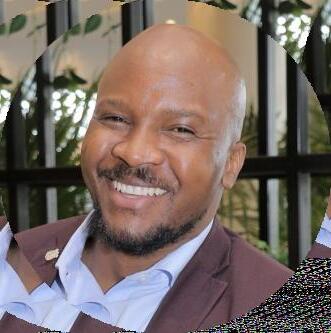
Jabu Zwane is a mindset development specialist who helps professionals, executives and organisations to build critical mindsets, vital for success in leadership, confidence, high-performance, effective communication, entrepreneurship, relationship management and diversity inclusion. As a global speaker, executive coach, facilitator and trainer, Mr. Zwane has done work for over 25 companies, in over 10 countries on three continents, including multi-nationals and institutions of higher learning.
Founder of The Mindset Development Institute, he has developed over 30 mindset models for critical thinking in personal development, leadership, entrepreneurship, diversity inclusion, effective communication, and high performance, since 2019.
https://www.jabuzwane.co.za/
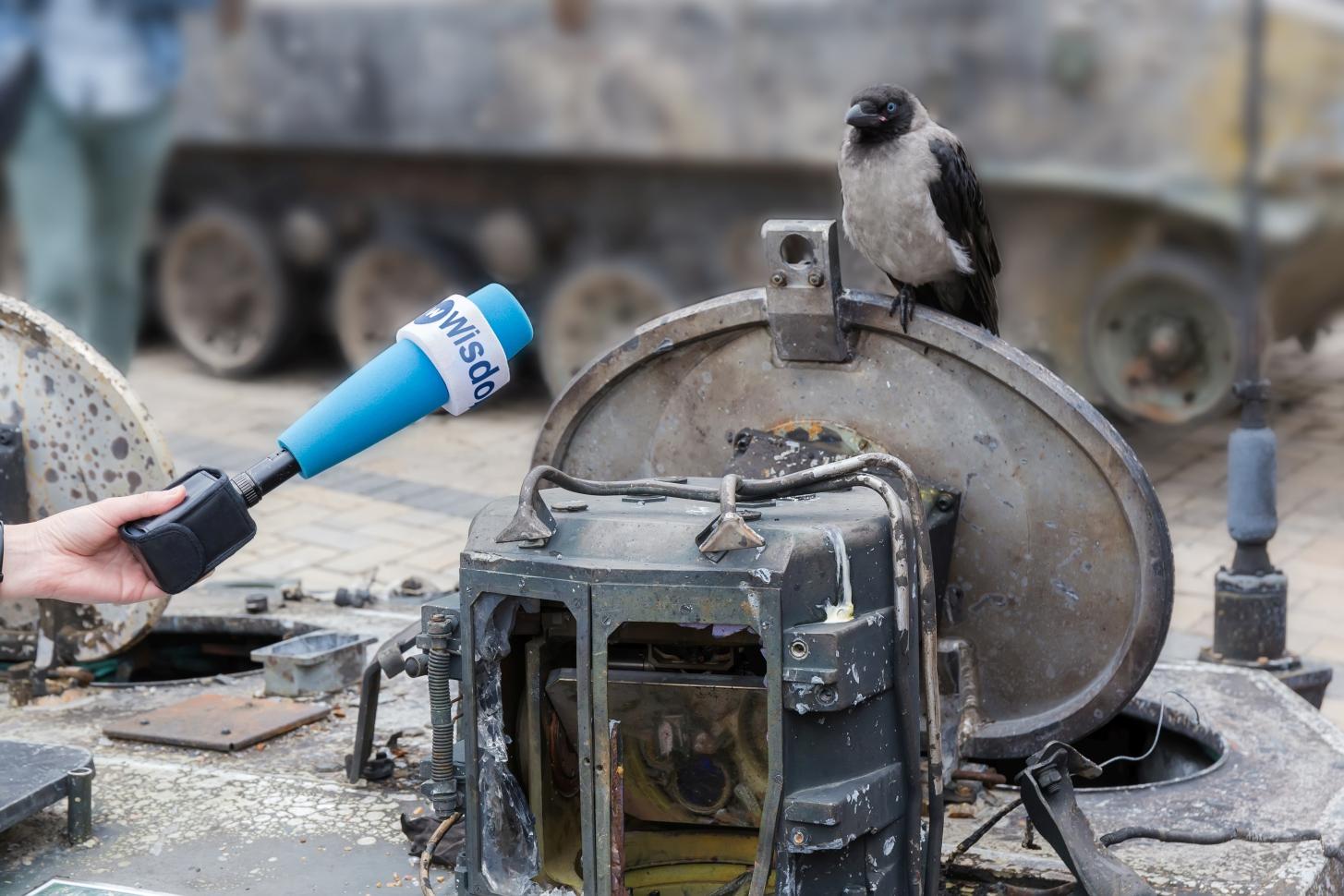
Heartbreak... This morning, I sit at my computer, hands refusing to do work because there are only hot, fresh tears of grief for my Jewish and Muslim friends, clients and human family.
My heart finds no refuge behind the walls of my mind.
I used to keep my heart safe behind mind walls of: “It only happens to them. At least we are safe, superior, different and 'other.' Shame it happens to 'them,' but at least it is them, not us.”
This was a lie my mind often told my heart. I understand it, but it was a lie.
After being in an armed robbery years ago, I asked my intuition: “Is my family safe?”
Translated wisdom, clear seeing replied: “No. Your family's not safe. Your family is dying, bleeding, robbing, being murdered, maiming — your human family is not safe.”
I didn't want this truth; I didn't want this clear seeing. I wanted to hide behind the illusion of my 'us and them' walls.
But over the decades, wisdom has shattered these walls. Deep love for other children in hospital beds next to my daughter shocked me; seeing myself looking through the eyes of students and clients wearing different shapes, colours, cultures and creeds has broken me open.
Wisdom, with all its gifts of peace and love, takes courage because it dissolves the walls of us and them. Wisdom has me standing naked with my human family, thugs and victims, flag wavers and tyrants. And wisdom has me sobbing today.
My mind kept them at a distance so that it would not hurt. At least it's not my child. At least it's not my family; my mind used to say and still wants to say, but I see through those thoughts. There is compassion for my old seeing; I know it was a clinging to a false sense of security.
Too quickly, the mind slaps 'sticky notes' on people to label and divide, then blinds us to what is underneath.
Too quickly, the mind reduces complex, subtle things to simple, like children labelling 'this is a triangle' and 'that is a circle' because we can't or won't see the intricate geometry of life — the monster in the angel, the angel in the monster.
Too quickly, the mind, desperately afraid, plants a flag next to a 'point of view' and makes an identity from that point of view, then builds a fort armed and guarded to attack and defend.
Without the shepherd of wisdom, a mind can only polarise and divide.
Wisdom sees in wholes. Wisdom collapses polarities and sees with the paradox of the unmoved fulcrum, untouchable love. Wisdom turns inwards from the surface mind mine-field with its defended flags and finds a depth where it is possible to see all flags in the stillness of love.
As I write this, I hear whispering from the wings of my mind: “Who am I to speak on this?” for it is true that I am politically inept, clueless about history and I have no place to comment on religion or politics which I don't understand. But for wisdom, I can speak.
Wisdom is not a lofty luxury, a philosophical musing only for people who don't want to get their hands dirty in the grit and grime of life. Wisdom might be what we need to survive.
But sadly, wisdom is often the quietest voice in the room. Perhaps we can change this. Perhaps we can do our small part.
Those who lack wisdom, clear-seeing, wall-dissolving wisdom, young souls, broken minds, tyrants and psychopaths are running and ruining this precious blue little planet. All while old souls with the capacity for wisdom hold themselves back from the call to leadership.
“Who am I to guide and lead when I doubt. I can't lead because I'm not certain” is the biggest inner obstacle I hear from old souls.
Doubt is important; it opens leaders to wisdom and honesty. Doubt and a lack of certainty are honest. Doubt and care live together, making room for wisdom, seeing complexity, critical thought and wholeness.
Insanity grabs the microphone — sanity doesn't.
Perhaps we should speak more? If we have the capacity for it, we can speak for complexity, vulnerable wisdom and what lies beyond the walls of the mind.
We can say: “I'm not sure, but this is what my heart says.” We can meet each other in the common ground of love
and bleeding together, where souls celebrate differences but don't plant flags.
Minds that lack wisdom plant flags, form identities from 'points of view,' then violently defend and attack. These minds grab the microphones of social media, generating click-bait algorithm traffic-pulling power, echo chambers of contagious egoic insanity.
And so, we find our human family being guided by the narrative of insanity. Who owns the narrative owns attention. Who owns attention can hypnotise minds that lack the shepherd of wisdom. Doubt makes space for wisdom.
Old souls doubt. Old souls care enough not to be sure. Young souls, narcissists and psychopaths sell certainty. Certainty is as attractive as a drug to anyone tired of being unsure.
How often have we been attracted to someone who seemed certain, hoping that someone had finally figured it out, only to be disillusioned, disappointed and damaged?
Let wisdom show us that doubt has a place. Doubt means you care enough to question. Doubt can live in our hearts next to the deeper, clear knowing of our undivided ground of being.
This is my prayer.
Let wisdom break open our hearts so we can hold each other with compassion during these insane times. Give wisdom the microphone. Let's guide, coach and lead with wisdom together.

Colleen-Joy is a Master Coach Maker, conscious entrepreneur, published author and speaker. If you're a natural coach, guide, healer or leader who wants to work with wisdom, to make a living making a difference, reach out to connect with Colleen and her inspiring community
www.colleen-joy.com https://web.facebook.com/ColleenJoyAuthor/ https://www.youtube.com/colleenjoy

In the contemporary landscape, Frequency Healing has taken centre stage as an evolving and potent practice. Now more than ever, we find ourselves drawn to the profound mysteries. Let us unravel the enigma of Frequency Healing, exploring what it means, how it can elevate your life and why the ancient wisdom of 'As above, so below' is at its core.
Frequency Healing is both an art and science that involves working with vibrational frequencies that make up the universe and our existence within it. At its essence, it's about recognising that we are deeply interconnected with the cosmos and our energies are entwined with the energies of everything around us. When we speak of healing through frequency, we are tapping into this fundamental truth.
The age-old wisdom encapsulated in the phrase 'As above, so below' is a profound teaching that conveys the concept that the microcosm reflects the macrocosm. In other words, the state of our inner world resonates with the state of the outer world. When we commit to the healing journey our transformation ripples out, influencing the world around us.
Life is a perpetual journey, marked by various seasons, each carrying experiences and lessons. As we transition from one to another, we bring with us wisdom and knowledge. This journey is a constant elevation of our vibrational frequency, a continual swing of the pendulum through the dualities.
Frequency Healing is not a quick fix; it's a lifelong commitment to selfdiscovery and healing. It entails recalibrating our energy centres, healing our auric fields and comprehending and healing our emotions and past traumas. It's a journey of integrating fragmented
aspects of our past, present and future.
Where our frequency resonates determines what we attract into our lives. There is a choice to heal and shift from the illusion into the frequency of reality - of what is - and stand within your sovereignty to cocreate in the space of oneness.
To embark on this journey, you must be willing to do the inner work, no matter how challenging it may be. By confronting your wounds and acknowledging all aspects of Self, you will open the door to growth and transformation.
Frequency Healing is an ancient code that empowers us to transform ourselves and the world around us. It serves as a reminder of our interconnectedness with all things and our innate power to heal, elevate and transform. By dedicating ourselves to healing and raising our vibrational frequency, we not only change our own lives but contribute to the healing of the collective consciousness. In this journey of rebirth, we discover love, compassion, forgiveness, understanding and joy and, ultimately, we choose to live a life rooted in the frequency of truth and unconditional love.
For those embarking on this profound journey, , under the Kamala guidance of Cerise, Mother Angel Seeds the Light, offers a space where you can experience the transformative power of Frequency Healing. As you choose yourself and embrace the path of inner work, know that is Kamala there to support and empower you. In each moment, you are faced with choices and you have the choice to choose yourself. Let this be an invitation to you to embark on a journey of self-healing guided by Ancient Wisdom and Secret Codes.
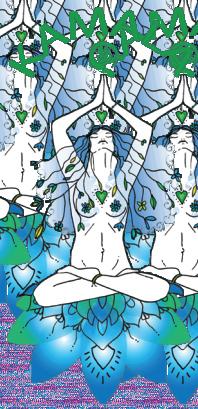


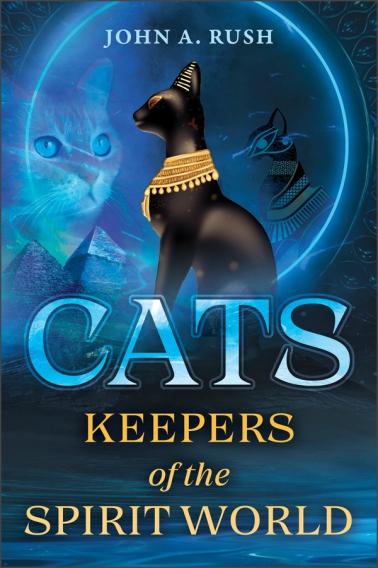
Whatanincredibleread,theresearchandinsight areexceptionalintheexplorationintothespiritual historyofcatsandthesimilaritiesbetweencatand humanemotions.Ed
To our prehistoric ancestors cats were deadly predators of the night and, because of this ancient memory etched onto our DNA, cats epitomise our fear of the dark. Yet in addition to their connection to the dark and the shadows, their intelligence, sophisticated physical abilities and finely-tuned senses also led many cultures to view cats as connected to the spirit world.
Exploring the spiritual nature of cats, John A. Rush looks at humanity's fascination and fear of cats through the ages. He examines spiritual and occult beliefs connected to cats from Mayan, Aztec and Native American mythology as well as from ancient India, Samaria, Babylon, Japan and Egypt, including how ancient Egyptians used cats to send messages to the gods. He reveals why the Catholic Church demonised cats and how cats are symbols of both Good and Evil. Examining cat evolution, the author looks at spiritual behaviours attributed to cats as well as modern biological research into cat behaviour and their highly sophisticated sensory systems, which, unlike most other animals, have changed very little over millions of years.
He explores their 'psychic' ability to sense what humans cannot and the origins of their glowing eyes, which has connected cats, through myth, to both the Underworld and the World of Light. He also explores


similarities between cat and human emotions, cat communications with us and the deep connection between cats and meditation. Revealing the spiritual journey of the cat from fearsome predator to occult symbol to household companion, the author shows how, in many ways, cats are mirrors of us, reflecting our conflicting dual nature that is at once loving yet distant, magical yet vengeful and, above all, deeply connected to the spirit world.
Author John A. Rush, Ph.D., N.D., is a retired professor of anthropology and naturopathic doctor. He is the author of many books, including Spiritual Tattoo, The Twelve Gates and The Mushroom in Christian Art, as well as the editor of several books, including Entheogens and the Development of Culture. He lives in Orangevale, California. https://www.clinicalanthropology.com/
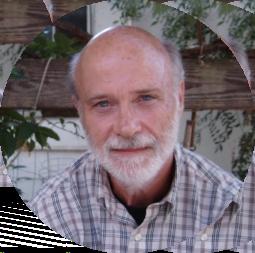
Cats Keepers of the Spirit World John A. Rush ISBN: 9781644117460, Available as a paperback and eBook www.InnerTraditions.com
Odyssey Magazine is giving away three books.
Website link: https://odysseymagazine.co.za/community/ #competitions-giveaways or scan the QR code
Click on the title of the book.
Closing Date 18 February 2024



There is a great little story which shows the importance of being real, genuine or authentic. Here is an extract from The Velveteen Rabbit by Margery Williams Bianco, which explains this in a delightful way:
“Real isn't how you are made,” said the Skin Horse. “It's a thing that happens to you. When a child loves you for a long, long time, not just to play with, but really loves you, then you become real.”
“Does it hurt?” asked the Rabbit.
“Sometimes,” said the Skin Horse, for he was always truthful. “When you are real you don't mind being hurt.”
“Does it happen all at once, like being wound up,” he asked, “or bit by bit?”
“It doesn't happen all at once,” said the Skin Horse. “You
become. It takes a long time. That's why it doesn't happen often to people who break easily, or have sharp edges, or who have to be carefully kept. Generally, by the time you are real, most of your hair has been loved off and your eyes drop out and you get loose in the joints and very shabby. But these things don't matter at all, because once you are real you can't be ugly, except to people who don't understand.”
Realness or authenticity comes from an area of your psyche often called the true or authentic self. Carl Rogers describes this as the person you actually are, the 'self' you were created to be, a rational, thinking human being with the capacity to care, to love and to be loved.
This means that, deep within you, behind all the conditioning, pain and negativity is a core of pure selfawareness, that which you were before your original childlike nature was shaped and distorted by society and polluted by negative experiences, doubts and fears.
Becoming authentic again doesn't happen all at once, as one has to work consciously at removing all the baggage that covers up the authentic self. Once we strip our minds of these limiting mental structures we have built up over the years, only this pure selfawareness remains. It is only in our minds that we are separated from this state of genuine and honest core values and altruistic feelings, the 'good' in mankind.
Reach through to the core of self-awareness
In order to unlock your authentic self, you have to activate your self-awareness and mindfulness, as selfawareness is the baseline state of mind for all our experiences.
A moment of self-awareness
A simple exercise to bring about a moment of selfawareness is to lift up your hands, look at them and move your fingers slowly whilst repeating to yourself slowly over and over, 'I'm alive!', until in one exhilarating moment, you actually become fully conscious of the fact that you are alive.
The problem of the ego
Many people believe that they are the 'ego'. However, the authentic self is not the same as the ego, which is a false sense of self formed by conditioning and experiences in this world.
The ego is simply a mental structure populated by a collection of self-centred thoughts and memories, beliefs, doubts, fears and insecurities. However, in the midst of all the clutter is this oasis of pure consciousness, our true nature or authentic self which we can discover again if we are prepared to take up the challenge. In other words, it is possible consciously to peel away the ego and its muddied contents to expose who we really are and make way for a new and more authentic experience of self.
What are the structures that most separate us from our authentic selves? The first of these are masks.
A mask is a metaphor for a false picture of ourselves that we present to the world. It is an exercise in deception to appear more than we actually are. An example of this is a young man who dresses ultra fashionably and drives a flashy, expensive car to impress others. In the meantime, he is up to his ears in debt. The problem is that he is creating a false sense of self as a highly successful, dynamic, wealthy personality when in fact he is an ordinary guy with his own doubts and fears.
People will go to great lengths to protect a mask,
as it is linked directly to one's self-image and selfesteem. But this mask can only alienate this young man from his true self, which does not contain these traits at all. He may actually be a sensitive person who simply wants to find love and gain acceptance from his peers.
Everyone wants to be accepted, respected and ultimately loved and we will do what is necessary to find this, even if it means wearing a mask to make us appear more attractive and worthy of love.
The danger is, of course, that we lose touch with who we actually are - our true values and ideals - and eventually this can cause inner tensions.
A mask can also be worn to protect oneself from pain. For example, people in crisis will often present a picture of normality and it is only during therapy that the truth and pain will come out. Some masks can be based on self-deception or self-delusion. One of the worst masks is that of the 'victim', which is ego-driven and is usually taken on when a person cannot accept that they have flaws and sets about seeing themselves as a victim, blaming the world and everyone else for their misfortunes.
An example of this would be someone who has been overlooked for promotion as the result of a lack of performance, but sees only other reasons for this failure, such as favouritism, victimisation, or racism. They simply cannot see or accept that this could be the result of their own behaviour. In many cases, this self-deception is so bad that they are totally unable to see and accept the truth even if shown the facts of the matter. Once again, this points to a lack of authenticity.
The roles we take on in life can also disguise who we really are, but in this case, it is usually not a conscious deception, but simply changes in our behaviour that come with the tasks and responsibilities associated with the new role. For example, when one of a group of workers is promoted to a supervisor or manager, their attitude towards their co-workers may change. It's not that they want to do this, but the responsibilities they have now will naturally set them apart from the group.
However, some people can change dramatically for the worse when taking on a more senior role, leading to a break from their authentic selves as well as their co-workers. The ideal is to remain true to yourself as much as possible and not let the position alienate you from your true values and standards.
In order to return to authenticity, we first have to find the courage and self-awareness to admit to ourselves that this (our present feelings and actions) is not who we really are and find the opportunity to share our deepest experiences of self, that is our true feelings, dreams and desires, with those we trust, becoming vulnerable and real again. This normally requires coaching or some form of counselling, as it is not easy. Let us then finish this lesson with an exercise to bring about an experience of the authentic self using simple affirmations:
Connecting with the authentic self
• Do the finger movement exercise as shown earlier.
Affirm 'I'm alive'.
• Now turn your palms towards your chest and move your focus to the area between your hands and chest. At this time, change the affirmation to the words 'I am', repeating it slowly and deliberately over and over again.
• Finally, change the words 'I am' to the word, 'I' and also repeat this slowly and deliberately a number of times. Try to become fully aware of what it means to be 'I'.
If you are properly prepared, you should feel a sudden shift in selfawareness and an unexpected quick, deep breath. Do not be distressed, as this is the conscious connection to your authentic self, which is sometimes called the 'I' consciousness.
Rest in this experience for as long as possible without feeling uncomfortable and do not end the exercise suddenly. Rather take
your time in letting go of the experience and slowly returning to normal awareness.
I hope this article and the exercises have been of benefit to you. For more interesting articles, please visit my website www.discoveringyourself.co.za.
Dr Jimmy Henderson is a cognitive scientist with an honours degree in philosophy (metaphysics) and a Ph.D in psychology from the University of South Africa. He has studied mind and spirit for over 35 years as a member of the Rosicrucian Order (AMORC) and is also a Lifeline counsellor and trainer. He was previously in SAPS management until his early retirement and is now a distance tutor for UNISA in psychology, a distance facilitator for Metavarsity and the published author of a number of books, e-books and articles on the power of the mind and spiritual development. He has been a guest speaker at many different venues as well as on local SA radio stations. As a result of his studies Dr Henderson is able to provide a unique psychological perspective on spirituality in his books and articles.
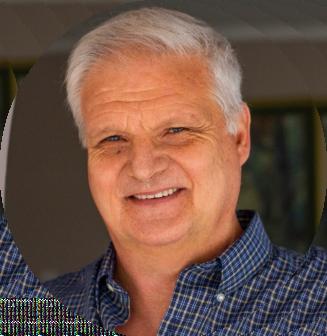



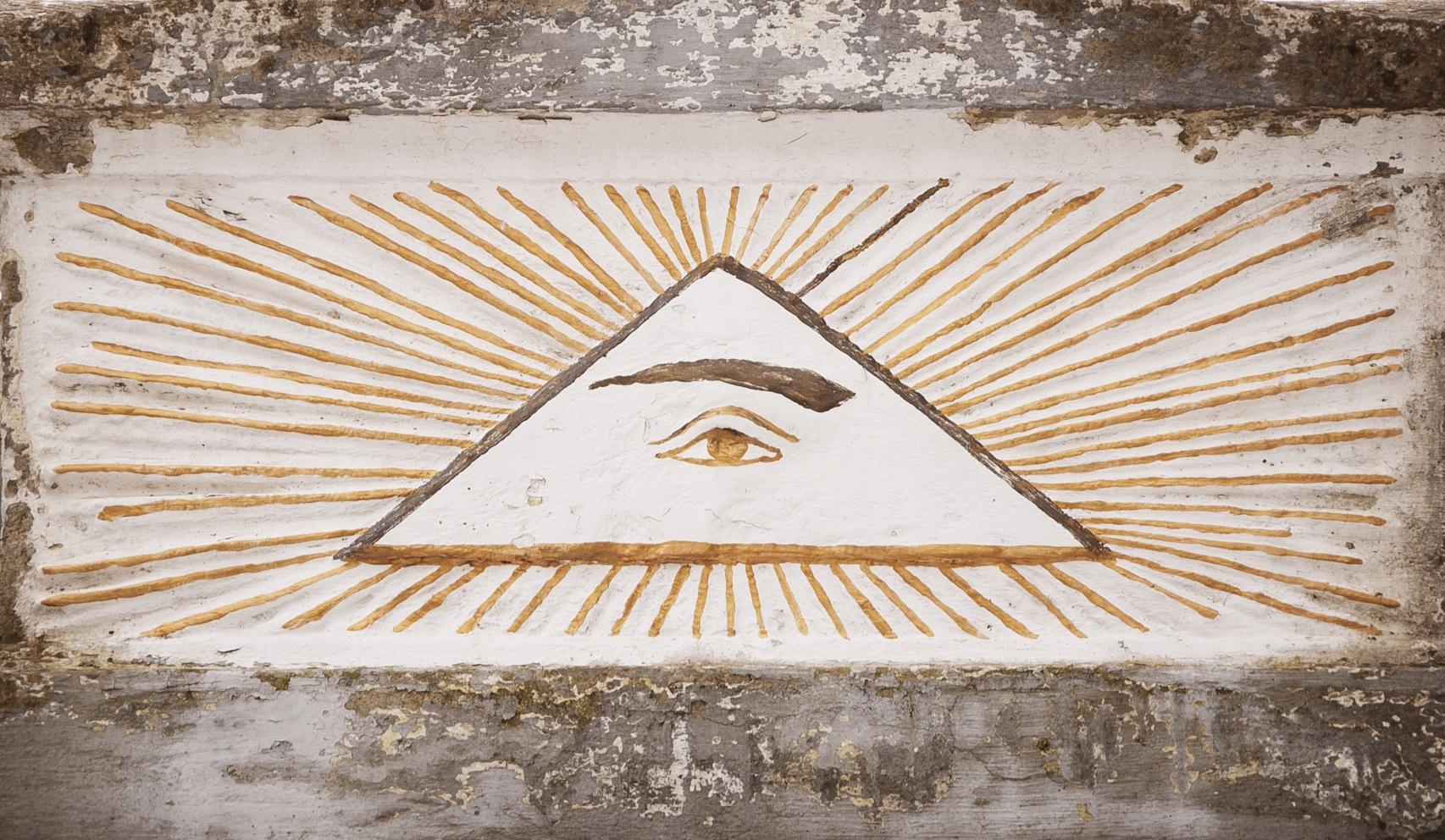
“I do not believe in the afterlife!” These were the words that resounded in the ears of the show host, with a seriously confused look on her face in utter shock and horror. I furthered my statement with: “Let me explain. I do not believe in an afterlife; I know there's an afterlife.” You see in truth there is a big difference in belief and knowing. Whilst there is a relationship, the two are entirely different. One is like a fable that changes and one is as constant and true as the air you breathe. There is a hidden bridge from knowledge that leads to wisdom and this is knowing. We have to display courage to be able to take the step onto the bridge that leads to wisdom.
In the quiet moments we have within ourselves, we often ponder the nature of what we believe. However, if we look deeper into the nature of our beliefs you will see they are not real. In fact, they are illusionary and, like your goals, they change in a moment. Nevertheless, ask yourself this: Are our beliefs the beacons guiding us through the tumultuous seas of life, or are they but shadows cast by someone else's light? This journey from the familiar shores of belief to the profound depths of knowing is more than a philosophical quest; it's a spiritual pilgrimage. This article embarks on an
ByJockBrocasintrospective journey, exploring why belief is often a borrowed perception. We consider how knowing can be the divine spark that transforms our lives, shining an unfaltering light from within.
Beliefs are the coloured glasses through which we view the world. In reality these rose-tinted glasses exist for everyone but especially in the spiritual world full of imbalance and ignorance or indeed in the world of religion and mediumship. I have lost count of the people I know who wear these glasses and refuse to see the opposites within the astral or live in a fantasy believing everything in the garden is rosy. That's an article for another time. In reality, we are tainted by the diverse perceptions of our culture, society, family and education and in our relationships. Like the weather, they shift and change, shaped by the winds of personal experiences and the rain that temporarily quenches nature. There are questions that haunt our nights, causing confusion and uncertainty. Living on belief alone is akin to relying on a map drawn by others; it may guide you on well-trodden paths but can never chart the unique terrains of your soul.
However, beliefs are not without their merits. They provide a framework, a starting point from which our journey begins. They offer comfort in times of uncertainty, a collective knowledge passed down through generations. Yet, the inherent limitation of beliefs lies in their external origins. They are perceptions formed through the lenses of others, often untested by the fires of personal experience. Relying on beliefs can lead to a life constrained within the boundaries set by others, devoid of personal authenticity. An example of this is when you are young and you are guided into the same religious perceptions as your parents, or you support the same team as your parents and your friends. Your beliefs, unbeknown to you, are already influencing you without your understanding why or how. Here's the shocker, your beliefs will inevitably change as you fall into line with external perceptions and expectations.
Understanding knowing Knowing, in contrast, is the silent whisper of divinity within us. It does not shout or demand attention; it is just there as part of you and your relationship to the animating force of all that exists. Knowing transcends the intellectual; it is the hidden bridge that leads you to wisdom. But the profound conviction that resonates exists in faith. You are standing on the precipice of a void that has no bridge you can see. It is the conviction in coming to knowing that one is there without you perceiving it. This is the faith on who you are in the universe. It's an inner certainty that stands unwavering, even in the absence of external evidence. Is this blind faith? No! it is deep knowing and is claircognisant in its divine expression.
Knowing is the divine light that never flickers, even when storms rage outside. It is an inner truth, the intuitive understanding that transcends words and rational explanations. This knowing is not something that you can learn in a book, it is not something that can be taught to you in a workshop. Knowing is a self realisation, an awakening from within the soul. It is the light that is ignited within in the moment of transcendence. It is a truth that we uncover from within, a sacred realisation of our interconnectedness with all that is. When we know, we align with the divine wisdom, understanding our place within the cosmic dance of existence. When we come to knowing, we self-realise who we are and the power we hold inside that can transform the outer reality.
There is a hidden wisdom in the metamorphosis of a caterpillar that transforms into a beautiful butterfly. This
wisdom exists in nature and is transformational. However, from belief to knowing is seldom a straight path nor is it an easy path. It twists and turns through valleys of doubt and mountains of struggle as you try to climb up what seems to be an impossible journey. Yet something deep inside makes you put one foot in front of the other and each step becomes a step closer. It is easier to climb when you are not carrying your baggage.
Life's trials and tribulations and perceptive beliefs, urge us to seek deeper, we become seekers because of the deep yearning of the soul within. Spiritual practices, moments of profound insight and awakenings act as catalysts, propelling us forward to realisation. Stages mark this journey – questioning and seeking truth, surrendering to the unknown and potential enlightenment. It's a pilgrimage of the soul towards its own luminescence, a journey from the noise of external dogmas to the quietude of internal wisdom. However, here is a word of warning. If you think you are enlightened after a mystical experience, then you have yet to ignite the light within, that too is a perception of a belief of others. Buddha did not claim he was enlightened after he got up from sitting under Bodhi tree.
Embarking on this sacred journey requires intention, attention and practice. However, practice is becoming one with you, it is not a skill you develop because the skill is temporary. A skill will fall away like the changing of the seasons. I once wrote a beautiful parable on practice and there are links on my website (see bio) if you would like to read this parable to learn how practice should become as natural as the breath. Mindfulness and meditation serve as our compasses, leading us inward to the silence where knowing lives. We cultivate intuition, not as a rare gift, but as a natural part of our being, learning to trust the subtle nudges and whispers of our soul. You must remember, dear reader, you are a spirit having a human experience. Your very nature is spirit and your life only exists because of spirit.
I have always taught that experience trumps theory and knowledge, because experience is always transformational when awareness is ignited and acceptance is realised. The trials we experience have within the hidden blessings that allow us to embrace uncertainty as a pattern of change and transformation. We no longer need to be validated and we integrate our ego and shadow nature as part of us that makes up the whole being. This integration teaches us and becomes our greatest spiritual guide. You have a choice; you can allow it to be your greatest teacher or your greatest nemesis.
We are seekers of truth, but not a truth that is based on belief and that changes as often as the weather, but the truth that exists as the mechanics of universal divine law. Through reflection, contemplation and being uncomfortable to seek transformation, we self-realise that deeper inner truth. The truth that is Divine Law!
As we shift from belief to knowing, our lives transform in profound ways. We are no longer guided by ignorant perceptions that follow material perceptions and truths that are illusionary. Decisions are made from within and not with intellect, for they are guided by the compass of our inner truth, we are guided by the soul's need for divine expression. Inner peace becomes our sanctuary, a serene lake within that remains undisturbed, even in the midst of life's storms. Our authentic true self emerges, unmasked and unafraid, expressing itself freely in the world. We are in the world and not of the world; for we know that knowing becomes the light that not only illuminates our path but also casts away the shadows of doubt, fear and uncertainty.
When we shine our light, it reaches beyond the confines of our personal lives. Relationships deepen, communities transform and a new consciousness takes root in society. Our personal knowing becomes a beacon for others,
igniting the spark of divine understanding in the collective soul. It inspires compassion, understanding and a sense of unity, in a world that operates in fear and uncertainty as well as negative perceptions and expectations. Through knowing, we contribute to a world where actions are driven not by fear or ignorance, but by love and wisdom. Thus, we offer a collective power of transformational light within the world.
My final thought
As you move forward in your journey, you have at your disposal the power to change your outward reality. Upon the journey from belief to knowing, we discover that the light we were seeking was never at the journey's end; it was within us all along. This divine light is our birthright, our truest nature and our most profound guide. You can realise who you are and use your inner light to cascade where there is darkness. However, another word of warning. You cannot shine that light outward until it shines from within. Your journey is now, your journey will challenge everything you think you know based on other's perceptions, but soon you will cast your power over tumultuous seas and calm the storms with your divine knowing.
May we all find the courage to turn inward, to question, to seek and to know. And, in knowing, may we become the lighthouses in the storm, standing steadfast, shining our light from within.

Jock Brocas is a renowned evidential spiritual medium, best-selling author and respected paranormal researcher With an unwavering commitment to authenticity, Jock blends his rich spiritual experiences with extensive scholarly study, inspiring thousands across the globe. His intuitive abilities and dedication to truth have fuelled his popular books, such as Deadly Departed and Powers of the Sixth Sense. Jock uses his deep understanding of the afterlife to support those grieving, providing comfort through afterlife education. An influential figure in his field, Jock continues to captivate audiences with his fascinating insights into the spiritual realm and the unexplored corners of the human psyche. His work reshapes our understanding of life, death and what lies beyond, offering us a unique lens into the extraordinary.
Scentisthemostpowerfulmemorytrigger.
AROMATHERAPY is the practice of using essential oils for therapeutic benefit. Aromatherapy has been used for centuries. When inhaled, the scent molecules in essential oils travel from the olfactory nerves directly to the brain and especially impact the amygdala, the emotional centre of the brain, which may explain why the smell of something can so immediately trigger a detailed memory or even intense emotion.
'The heart and soul of the plant': Essential oils are aromatic essence of Nature's plants, extracted mostly by steam distillation and some by the cold-pressed method. Each aroma 'family' exhibits a primary aromatic trait by which it is easily recognised for a corresponding effect, which can help to readily identify the ideal application for it. Still, choosing the right oils may seem daunting.
SOiL ORGANIC AROMATHERAPY, South Africa's leading aromatherapy range, holds the expertise required to lead this journey of aromatic self-care. A comprehensive selection of PURE and CERTIFIED ORGANIC essential oils, of the highest quality, boasts a symphony of scents that hold the potential to enhance the mind, body and atmosphere.
The subjectivity of scent highlights aromatic-based wellness as an individual's journey to self-care. With some essential oils, such as lavender, seemingly offering limitless benefits, overlapping in therapeutic properties with many other oils, choosing a personalised toolkit to wellness can be made easier by narrowing down the options based on the characteristics of the 'aroma families'. Explore the eight core aroma families, before drilling down into the subgroupings, in which several categories of essential oils overlap.
CITRUS oils are light fruity scents that are characteristic of the rinds from which they are extracted. They can be described as tangy, tart, fresh, clean, vibrant, invigorating, exciting, energising, and uplifting. Examples include lemon, orange, grapefruit, bergamot, lime, citronella, lemongrass.
FLORAL scents are often reminiscent of the flowers from which they are extracted and described as being feminine, powdery, subtle and romantic. These
timeless aromas are often sweet-smelling and create a feeling of cheerfulness. Examples include chamomile, rose, geranium, lavender, ylang-ylang, petitgrain.
HERBACEOUS scents can be described as smelling green or grassy. These oils often have mild floral yet invigorating, springlike scents that are associated with lush, wet foliage. They are reminiscent of the aroma of fresh leaves, moss, mown grass, herbs, and trees. Examples include chamomile, clary sage, fennel, marjoram, melissa, rosemary, thyme, tea tree.
CAMPHORACEOUS oils have strong scents known to be beneficial for clearing the respiratory system due to their clarifying, penetrating and energising aromas. Examples include cajeput, eucalyptus and niaouli.
MINTY scented oils are strong-scented, fresh fragrances, reputed to be clearing and cooling when used in aromatherapy and topical applications. Examples include peppermint, spearmint and wintergreen.
SPICY oils have exotic, warm, intense aromas that are often reminiscent of baking and other warm memories. With strong scents, they are commonly used to stimulate energy and focus. Examples include basil, black pepper, cinnamon, coriander, ginger, clove bud.
RESINOUS essential oils exude deep, rich scents that are smoky, woody, earthy, sweet, musky, and warm. Their tranquil, alluring and long-lasting fragrances lend a reassuring quality that makes them popular in spiritual practices. Examples include benzoin (often described as vanilla-like), frankincense and myrrh.
WOODY oils have deep, warm, lingering scents. Often described 'earthy', they are reminiscent of the scents of a forest floor or damp soil. Their fragrances are soft, masculine, musky and sensual. Examples include cypress, juniper berry, pine, sandalwood, cedarwood, patchouli and vetiver.
Navigate the rollercoaster of emotions the day presents with a personalised arsenal of SOiL organic essential oils, enriching daily wellness. https://soil.co.za/


Self-reflection is a big topic in the spiritual realm. Fundis from Alan Watts to Carl Jung often highlighted the need for introspection and internal exploration. These people were able to move beyond their illusions and denial about life. Illusion or denial patterns are very much part of our need for self-preservation.
Last week I was listening to Alan Watts speaking about his experience with Carl Jung. He was lucky enough to have met him. What he said struck me and I had a bold realisation. Carl Jung was a complex man filled with complex ideas about psychology and spirituality. He was, in my mind's eye, a spiritual alchemist. What struck me was this: Allan Watts said that there was a twinkle in Carl Jung's eye when you met him. As though he knew that whatever struggle the clients faced was somehow also a reflection of his own experience and that it was not at all as serious as the person experiencing it felt it was - that Jung had made peace with the darkness within rather than judging it. This felt so peaceful to me and that, perhaps, at times we get it wrong. It is not about judging ourselves for that which we lack, or for that which we are, but rather just accepting it as it israther than feeling that it must change. The big thing I think we tend to miss, despite telling ourselves the same, is that all we need to do is accept. Acceptance allows for change, what one does not accept, one cannot change.
Acceptance is the act of allowing. The act of seeing something and simply making peace with it. Acceptance has always been, to me, an action. There is a feeling that follows and that feeling very often comes with a sense of peace and serenity. It is the act of letting go of wanting to control something that is, at that moment, out of one's hands.
Denial and illusions help us to face the world that seems harsh and full of darkness. Issues like loss and death are big parts of what we try to protect ourselves from. I remember speaking to my grandmother after my mom's passing. My mother died in a way that none of us had expected. She took her own life. My grandmother said to me that one day she decided not to think that my mom was dead. She decided that she would just pretend that my mom was far away and that she could not be contacted. This denial then played out as a harsh realisation for my grandmother later. After a couple of years, she realised that pretending that my mom was not dead was not serving her. The realisation hit her with such severity that she was eventually diagnosed with Alzheimer's. This is an extreme case where denial is used as a tool to cope. Sometimes we find ourselves running away from the realities of the world and of loss. Denial serves a purpose; however, it has a deeper meaning. It is about our not being able to, or not wanting to see what the reality is in our day-to-day lives. This also counts for behaviours and patterns that keep us stuck.
What does this all have to do with self-reflection becoming destructive? I will speak to you from my own personal experience. I delved deeply into my darkness to get to know the person I was afraid to see. The part of me that would come out when I was black-out drunk, played the part of my personal watered-down version of Mr. Hyde, in the context of hurting myself. I am two people at times. There is the me who wants to control everything, is fearful and stubborn, the one that refuses to be seen and adds more and more resistance against the good; the one that sees nothing good in herself, but rather the nuisance she was told she was when she was a child; the insecure one, the fearful one, the shy one, not accepting help, being proud and being independent. Then, on the other side, there is the me that I did not get to know very well, the good part, the one that is full of love, makes people feel loved and accepted, the one who is kind, the one that loves connection, the one who has solid boundaries and follows her intuition; the one who has gained a library of information and wisdom through all the experiences that felt as though she were being ripped apart and sewn together, just to be ripped apart again. That part of me is strong and powerful, but somehow feels so scary to climb into.
The focus I had all these years is to see my negative traits, the dark the part of me that I do not like and I focused solely on the negative. I was in fact just sacrificing myself repeatedly. My beliefs being that I was nothing, that no one heard me and that I was a burden. That part of me was highlighted and stepped forward predominantly when I did not take the time to see who I truly was. In my self-reflection and misplaced need to be good, I became my worst enemy. I did not allow myself to see that which was reflected to me in the mirror: The strong, powerful, loving and able me. I cut my legs off every time I saw something I did not like, instead of observing myself and being gentle, accepting and loving. Despite my misguided belief that I was in fact doing what was best for me, it was a practice that just became another tool with which I could harm myself.
Self-reflection is just that - self-reflection. Hidden motivations, fears and insecurities are really what we need to witness without the harshness of judgment. When we reflect with an ounce of judgment, it becomes more of a masochistic exercise which creates more fear and more anxiety. How does one step back and just observe when we
have been so used to judging ourselves and others? We become aware. We balance the scales and look at the good, we celebrate the small and large victories. We take a step back to observe the greater picture. Compare yourself to who you once were versus where you are now. To me my alchemic process has been indescribable: From a person who was so debilitated by fear 10-and-a-half years ago at my starting point, the little person who hid and was afraid to mutter a word and be seen; then to the person who was a victim, the person who blamed everyone, the person who felt so very powerless but tried to be better; the person who sat in her grief and was unable to find light within, to this person sitting in front of the computer, the person who feels more confident in her words and feels safer in herself, the person who has started seeing her worth and abilities, the person who is finding balance in her good and her bad, the person who stands proudly as a survivor of many battles. This person who sees that the hurt, pain and ill-treatment was never about her. It was about them; it was about their inability to love themselves and for that I have empathy. I choose to become - me. I want to explore the person who is in her power.
Romy Mörsner, a seasoned professional with over a decade of experience, exudes a deep passion for fostering personal growth, healing and spiritual advancement. With a compassionate heart and a wealth of expertise, Romy offers a diverse array of services aimed at guiding individuals on transformative journeys. Romy's commitment is to cultivate a safe and nurturing environment where individuals can unravel their inner complexities, attain profound insights and embolden themselves for spiritual alchemy. Romy Mörsner creates an atmosphere where people can connect, heal and explore their inner landscapes. As an educator, Romy's workshops are based on the notion of spiritual alchemy and self-awareness.




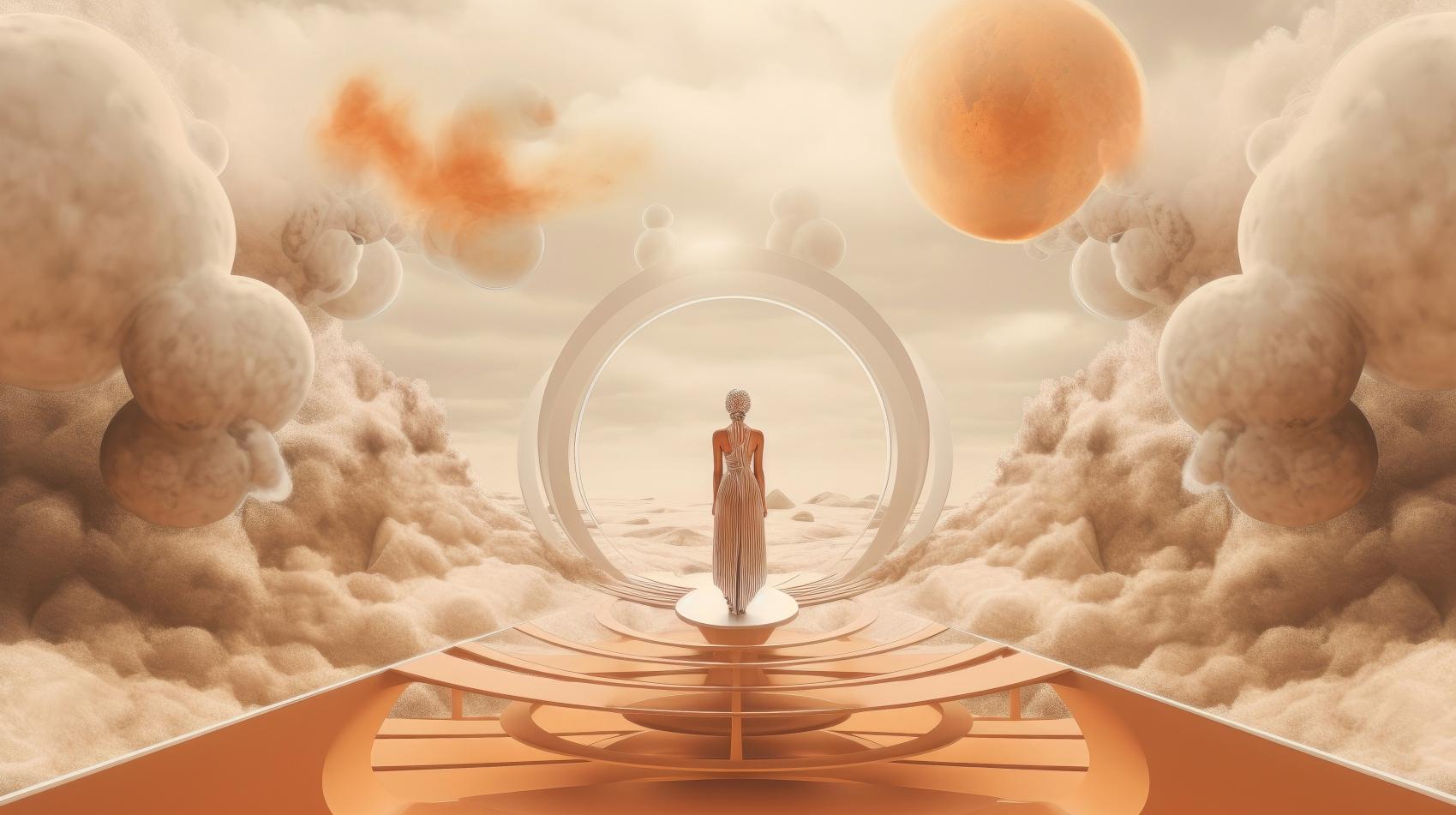
If someone had told me five years ago that I would experience death's shadow and emerge with a newfound purpose, I wouldn't have believed them. My life was a tapestry of success, a vibrant blend of being a natural health practitioner, owning a bustling health shop and launching two successful health products. With a loving husband, two wonderful kids and a cosy suburban home, life couldn't have been more fulfilling.
I cherished my profession, my family and the place I held in life. Little did I know that, early in 2018, a colossal medical crisis would shatter my health and the serene picture I had painted for myself.
It was a sunny Friday morning in April when the unthinkable happened. A sharp, unexplainable pain pierced through my stomach as I went about my work. Being wellversed in health, I tried to pinpoint and alleviate the issue but found no relief or answers. By day's end, the pain had intensified and I made an unusual visit to the doctor's office. Her diagnosis was startling; I needed an immediate second opinion with a specialist at the hospital. I protested, thinking it unnecessary, as I had no prior symptoms and I knew it wasn't my appendix. But she insisted and, after a tiresome argument with my husband, we went to a city hospital, our local one being full.
At the hospital, a specialist conducted a quick ultrasound, revealing a mass in my abdomen that needed immediate removal. Alarm bells rang in my head, but I silenced my gut instinct as I was prepared for surgery the following morning.
HeleenPageI can vividly recall the uneasy feeling as they wheeled me into the operating room. I asked myself, 'What could possibly go wrong?' After all, this was supposed to be a routine laparoscopic procedure with just three small incisions. I expected to be home in a mere two days.
However, the reality was far from ordinary. During the procedure, the surgeon made a grave error. Instead of removing a small cyst from my ovary, he punctured my colon. In a cruel twist of fate, my body spiralled into septic shock within 30 hours. What followed were seven more surgeries in the next three weeks, as the surgeon fought to remove more and more dead colon and small intestine. My abdomen remained open, stretching from my sternum to my pubic bone.
During those agonising weeks, my lung collapsed and a chest tube was inserted to drain fluid. Countless litres of antibiotics, medicines, morphine and what felt like toxic waste coursed through my veins via ports and tubes. I teetered on the brink of death, experiencing moments of fading consciousness, resuscitation and a week on life support. I lost the ability to walk, talk and even breathe on my own. The days and nights blurred together in a nightmarish haze and my body became a shadow of its former self. My skin showed dark blood beneath as it struggled to heal from the daily blood tests. I was far from fully aware of the trauma my body endured, but my near-death experience on the 16th day remains etched in my memory.
That night, I knew I was dying. My connection to my hospital bed and my husband's hand started to slip away. I tasted the acrid scent of burning tar, felt the searing fire in my lungs and the deafening pressure in my eardrums. My gaze didn't settle on my husband's face; I found myself detached from my body, trapped in a torment I can hardly describe.
In that terrifying moment, I begged for God's mercy, overwhelmed by fear, panic and an intense desperation. Although I hadn't been particularly religious, I clung to my belief in a divine creator and the continuity of my soul after death. But in that instant, I was consumed by fear.
As swiftly as it had arrived, the darkness vanished, replaced by an ethereal realm of radiant light. Profound gratitude, bliss and tranquillity washed over me. The silence resonated like the most beautiful melody I'd ever heard. In that moment, I shed the roles of daughter, sister, wife and mother. Possessions and suburban comforts lost their significance.
It was a state of pure joy and I yearned to linger in it indefinitely. Time ceased to flow and my soul floated weightlessly, no longer attached to the physical form. Yet, something tugged me backward, filling me with dread. I gradually returned to the ICU, alone and now connected to life support.
I spent a week on life support while my family's desperate attempt to save me led to my discharge and readmission to another hospital. Strangely, the surgeon offered no resistance even though it had been four weeks since he ruptured my colon and I was getting more ill. It was a stark reminder that even doctors can make grave mistakes, but the choice to take responsibility remains in each one of us. This surgeon had tried to conceal his error, nearly costing me my life.
At the second hospital, I was admitted with a massive, infected wound on my abdomen. A significant portion of my colon and small intestine had been removed and I was severely malnourished, teetering on the brink of death. I had suffered a mild stroke and my prospects for recovery looked bleak.
The journey to regain control of the infection, nourish my body through IV protein, blood transfusions and rehabilitation, was long and arduous. Four months later, I finally shuffled out of the hospital, more than six months since that fateful day. I was broken, weak and sick and the wound on my stomach still hadn't closed. The medical verdict was clear: I would need a permanent stoma bag to lead any semblance of a normal life.
Two moments stood out in my mind during that time. One was the night I knew I was dying and felt the life slip away from my body and the other was the day I realised that life with a stoma would be unbearable. I knew that, even if I went against medicine and doctor's opinions, I had enough knowledge and choices to take back and reclaim my life and my health on my own terms.
I needed time to allow my body to heal and my health to recalibrate. Deep down, I knew I had allowed the doctors
to fill me with fear and doubt, so I had to take control back from all of big pharma. I needed to focus on my years of experience, trust and faith in holistic health and healing. The journey was long, painful and filled with uncertainty, even with my extended background in health and supplementation. Every step was a trial-and-error experiment as I navigated my body's response to food and supplementation. I often had to change my approach or direction, but my unwavering faith in my body's innate healing power kept me going.
This process was long and painful as I had relentless pain and chronic diarrhoea. Frustration, anger, and bitterness consumed me as I grappled with the abrupt loss of my vibrant existence and complicated health issue. Profound memory lapses compounded my sense of loss. I feared that I would never regain my memory and this robbed me of my identity, passion, health and career.
The year ended with my eighth surgery to remove the massive scar that had replaced the open wound. I hadn't worked in nearly a year and I was facing huge medical debt, despite having medical aid. This injustice baffled me. Many daily tasks became a struggle as my traumatised, foggy brain tried to catch up. I was fortunate to have the unwavering support of my family, friends and clients, but I felt restless, angry and uncertain about what lay ahead.
As I regained my health and adapted to the changes in my body, life threw yet another earth-shattering curve ball my way. The impact of trauma extended far beyond myself, a realisation that would become painfully clear two years into my own recovery when my husband of 27 years died of a sudden heart attack.
The grief I experienced during those initial months was, in some ways, even more excruciating than the nightmares I had endured during and after my surgery and recovery. I felt a searing pain in my chest, one that I feared would be insurmountable. Grief, loss and sadness brought an entirely different set of challenges. During my own illness and recovery, my husband had been my rock, unwavering in his belief that I would not just survive but thrive. The prospect of navigating life without him seemed overwhelming, especially since I had not fully regained my health. For the first four months following his passing I operated on autopilot, merely going through the motions of life. Then, a profound event shook me to my core. I stood in our nowempty house one weekend and, suddenly, the weight of my broken heart became physically suffocating. Every symptom convinced my brain that I was having a heart attack. My confused mind led me to believe that lying under a tree at the top of my garden, next to the compost heap, was a more responsible choice than having my son discover his only remaining parent dead in the house. As I lay on the grass, my symptoms gradually subsided and I realised I had suffered a panic attack. A gentle breeze rustled the branches above me and I focused on my breath and the world around me.
In that moment, I understood that I faced a second chance to rebuild my life, just as I had during my rehabilitation. While support is crucial, I had learned in rehab that no one else can carry us through life entirely. Back then, I'd uttered the words 'I can't' countless times, feeling weak, frustrated and pathetic. I had lost faith in both the divine and myself, until I realised that building strength and overcoming challenges fell squarely on my shoulders. This time, it felt even more daunting, as I confronted it alone, without my husband's daily reassurances, love and support.
One thing remained clear: I had survived my own death and ordeal for a reason and I was determined to survive this sorrow and sadness too. I made the unthinkable decision to sell my beloved shop and house, leaving behind everything dear to me. The grief and trauma had taken a toll on my already complex health and gut, affecting my mental health and overall physical wellbeing. I searched for purpose amidst the chaos, grappling with painful memories of all I had lost in recent years.
With time came acceptance and my perspective shifted. Instead of dwelling on all I had lost, I had to embrace the abundance of what remained. I found purpose in my blessings and triumphs. My zest for life reignited my passion for health and healing. The transformation led me to reinvent myself, leaving behind the familiarity of my bustling health store in KZN as well as everything that was dear to me. Embracing change, I took my business online, crafting a personalised platform that allowed me to reach a broader audience.
This evolution became a canvas for my expertise and personal journey, enabling me to connect with others facing health challenges big and small. Each day, I worked on acknowledging how far I had come, celebrating even the smallest triumphs and letting go of the rest. I recognised the wealth of wisdom and experience within me, a beacon for those struggling in their wellness journey. Through this transition, I discovered the power of resilience and the boundless potential for growth, proving that even in the face of adversity, life can flourish with renewed purpose and meaning.
In the face of adversity, I discovered an unwavering spirit within me, a determination that transcends the darkest of moments. Embracing the power within, I learned that relinquishing control doesn't equate to helplessness; it's a
gateway to resilience. My journey, marked by survival against medical odds, taught me the transformative potential of the human body when nurtured with care, nutrition and accurate guidance.
As I guide others through their health challenges, I am reminded of my own struggles. I advocate for the strength that lies within us, urging everyone to trust their instincts and seek help when needed. My odyssey was arduous, yet I emerged stronger, for I chose a path of healing over a life of suffering.
Surrounded by those who truly understand the depths of our joys and sorrows, we can transform our journey into something beautiful. In the darkest of times, inner faith and the light within us illuminate the way to healing, joy and life. So, let us embrace our resilience, trust our inner voice and remember that, even in the face of darkness and despair, there is always a path back to the light.
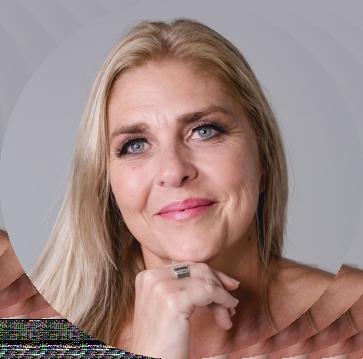
Heleen Page is a natural health and bio-scan practitioner. Since graduating in herbalism and nutrition in 1998, she has dedicated herself to a health and wellness career. She has launched two product ranges, established a health store and a consulting practice. Heleen's passion, knowledge and personal health journey are what fuel her journey as a natural health practitioner. Her practice operates both inperson in Yzerfontein and Stellenbosch (Western Cape) and online, enabling clients to achieve their ultimate personal health goals.
To connect with Heleen: www.resetmeza.com https://www.instagram.com/resetme_za WhatsApp +27 769474024.

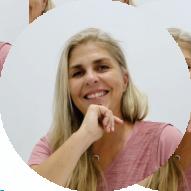
Today RASA, a longstanding and credible association founded in May 2001, boasts over 1,650 members. RASA is dedicated to upholding the highest standards of Reiki healing and teaching in Southern Africa. Our unwavering commitment, demonstrated through consistent quality education and competency, ensures comfort for both prospective students and healing recipients.
NEW REGIONS 2024
Limpopo and North West
Christelle McCabe
Paarl Cape Province
Anna Terblanche
GAUTENG
Karen Lange, Soul Healing www.reikicourses.co.za karen@Reikiassociation.co.za 082 857 5999

tofindanextensivelistofPractitionersandTeachers.
Healing Body, Mind and Soul
Karen 082 857 5999
karen@ReikiAssociation.co.za
KZN
Alanha Prior & Patricia Pithamber Energencia Healing Academy www.energencia.co.za alanha@mweb.co.za 082 329 1727
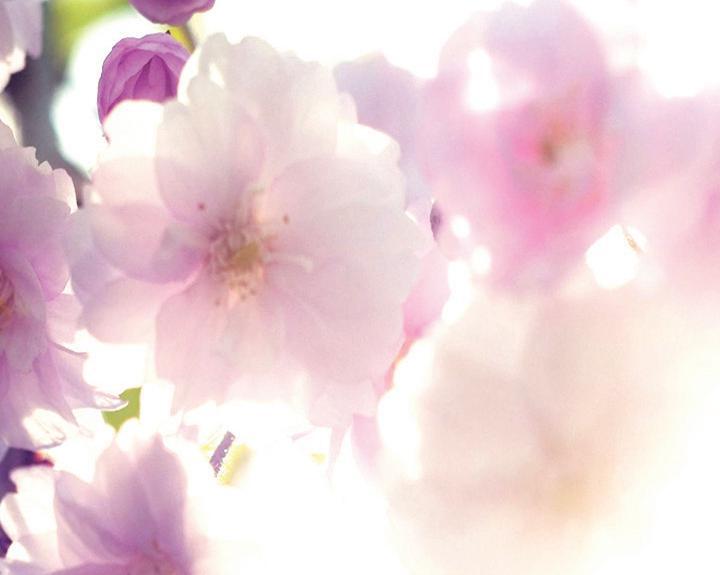


WESTERN CAPE
Gina Ambrose, Soul2Soul www.soul2soul.co.za gina@soul2soul.co.za 083 377 9838
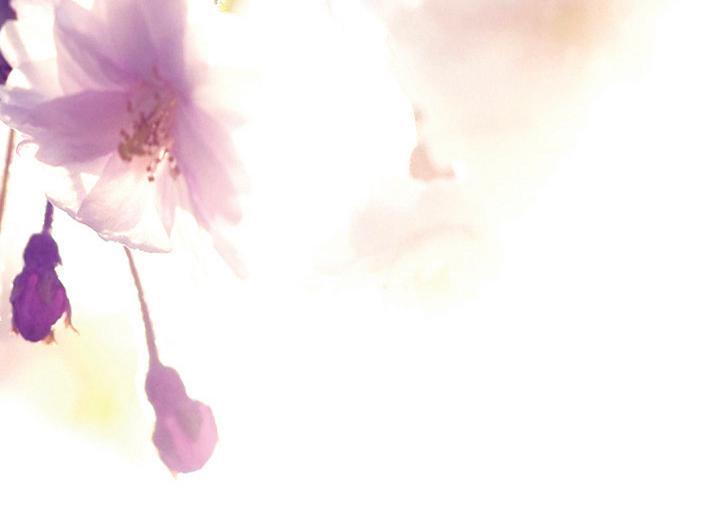
Reiki Courses KZN: RASA
Karuna Reiki®
Lighterian Reiki™
Jikiden Reiki
Usui Reiki Ryoho
Gendai Reiki
Usui Shiki Ryoho
Seichim Reiki Meridian Healing
Cutting
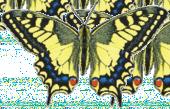
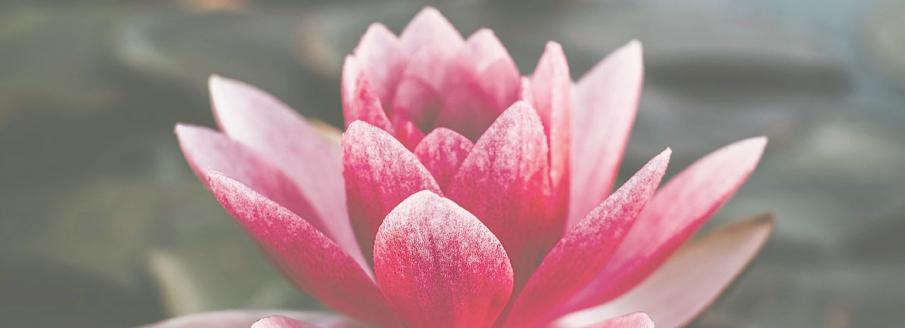
Reiki Courses: USUI Shiki
Ryoho Reiki, USUI Reiki Ryoho/Gendai Reiki, Seichim Reiki, Karuna Reiki
Workshops: Psychic development, Dream Interpretation
Crystal Healing Course
Inner Alchemy
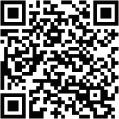
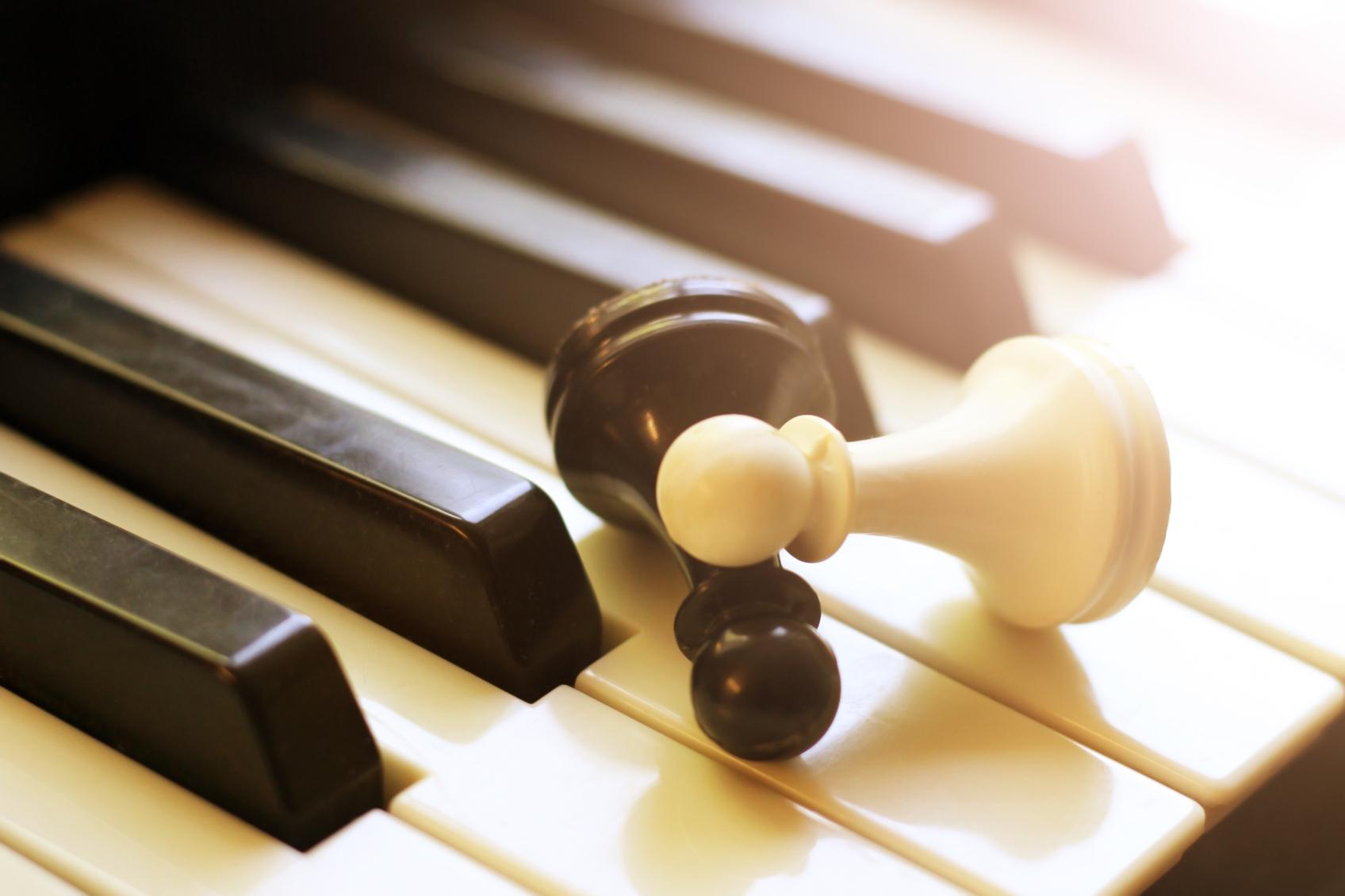
Charlie,mytoddlerBoet,crawledtoeight-year-oldmeatthepiano.Astonishedatthisfirst, ImarvelledandwhenIcarriedonplaying,Charlielaughed.Alsoforthefirsttime…
Crawl to the piano if I must, experience beauty, celebrate it and always remember to laugh! That is the spine of my soul.
I just absolutely adore that I play for a living! I played a little rugby at school because I strive for balance. Playing piano can be lonely, whereas rugby is a team effort. If I never played rugby, I wouldn't have treated my audience as my team to this day. We are in it together. We win, lose and always stick together. I wasn't a good rugby player, but that's also important; do stuff that you are bad at or at most mediocre at. Life is lekker and has a whole spectrum of colour.
My Dad, Toby, taught me to play chess. Another black and white game! This is the brain of my soul, which ingrained the importance of patterns, strategy and intuition. These are coincidentally key components of music too.
The heart of my soul is my mom, Lynette. The heart is patient - it keeps ticking like a metronome. So it was way
past my time for walking and I still didn't. Mom was worried. Until she happened to see me walking secretly. I turned around, saw her observing me, plonked down, and pretended to only know crawling, but the cat was out of the bag. I have had to walk ever since.
The heart has to be mischievously courageous. The heart has to be warm; otherwise, one cannot smile, laugh, see and hear beauty. Or feel it.
I love my parents. They instilled the value, nay skill, of taking knocks - getting up; putting it behind me and getting on with it. The next tackle will inevitably come soon enough.
"You raise me up to stand on mountains" Josh Groban
Standing on mountains is possible because both my parents often reminded me to just give it my best. These are the clothes my soul wears. My rainbow.

My youngest Boet, Roual, could barely walk, but he insisted on helping me mow the lawn. It wasn't a chore; it was a game. Always busy and like me, only focused on what interests him. To me, this is purity. Hard work and purity are the arms and hands of my soul. The fingers are the tenfold manifestation of opportunities flowing from hard work and purity.
So - my other Boet, Ettienne, and I were barely teenagers when he encouraged me to walk on a horizontal branch that enabled us to ascend a tree, walk the tightrope and then descend on another. Ever cautious, I tied a thick, stretchy nylon string to my ankle just in case I slipped. That happened one afternoon. I slipped and was dangling between heaven and earth, upside down. My dad had to climb the tree (in his business attire nogal!) and after snipping the nylon, gently lowered me into the pomegranate bush between the trees. Safety.
I had a fear of heights. Encouragement is so vitalthat's why one concept doubles up as the legs of my soul.
During covid, I lived in Msawawa (a township near Broadacres). Our only means of crossing a river six metres below was a substantial water pipe supplying water to Chartwell. You could crawl it or walk it. Unless conditions were windy or rainy, I always walked. Encouragement is often a tree that grows patiently. Decades after ET encouraged me I could overcome my fear of heights.
Who we are is a plurality of components. Much like a family. Our experiences, like joy and triumph after an initial defeat or two or three or four are like a family. It is also like the body into which we are all born.
Look, don't just see. Listen, don't just hear. If you strive for excellence, success will surely follow. Mastering the piano at expert level takes 10 to 15 years if you are consistent in practising five to eight hours daily. If you want to become an expert at being triumphant, you need to be consistent.
Consistency is easy if you do what you do with love. Someone once told me: "Even a teaspoon will finish a fifty kilogramme of sugar." One of my teachers told me it requires 359 functions of the brain to play piano. Control of the body, teaching muscles what to do, and a combination of verbal, non-verbal, spiritual and conceptual aspects make me believe that.
Man, was it difficult growing while trying to master the piano! An hour or two later, my thumb would be fatter and my nose longer. Get on with it and figure it out! You can do anything. Is that not much like life?
To perform one needs mostly left brain functions. To listen one needs mostly right brain functions. The
subtlety here is the skill of control. Much like life. Without control nobody will triumph.
The joy of the paradox is that control also often means letting go. Intuition is the dance partner to that joy.
The piano has taught me to be in the moment. Once you have created the sound, you let go and create the next. It's a beautiful tango, not an entanglement.
An outstanding highlight of my guru's teaching, a miracle from Serbia, Marija Bajalica, was when asked why she never complimented me, she told me her role was to improve what wasn't perfect. Perfectionism and being critical are vital but... Marija also said that when you perform, you promote believing in yourself and letting go of perfectionism and being critical. "Make even your mistakes beautiful.”
The feet of my soul are humility. At art school, Pro Arté High and at TUKKIES, I discovered many who were much more talented and gifted than I. I also discovered that I am unique, necessary and here for a reason, no matter my position in a hierarchy.
Sun City, where I was privileged to have performed for a decade as resident pianist, was a dream come true. At the staff entrance to the Palace, a plaque reads: "We are all ladies and gentlemen serving ladies and gentlemen." There's a yin and yang to celebrities we all know and celebrities we don't. We are all celebrities in a valley of waves.
Andile, Craig, Lebo and Trish from Mugg & Bean Broadacres, where I performed for two years, are extraordinary. Outside with birds singing and a gurgling fountain and doggies coming with their human parents are a few features of that paradise.
My earliest memory is of my toys on the lawn and me crawling to a purple toy piano, my favourite toy. I have been in touch with my inner child all my life, what I have is better than I could have imagined or hoped for.
“Sing us the song, you're the piano man, sing us a song tonight. Well, we're all in the mood for a melody and you've got us feelin' alright” Song by Billy Joel
To book Llewelyn, contact Yolande at Y-Life Productions at 082 566 1572. ENRICHING LIVES THROUGH MUSIC.
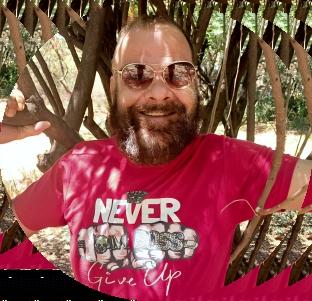
fromLettersToTheAlien
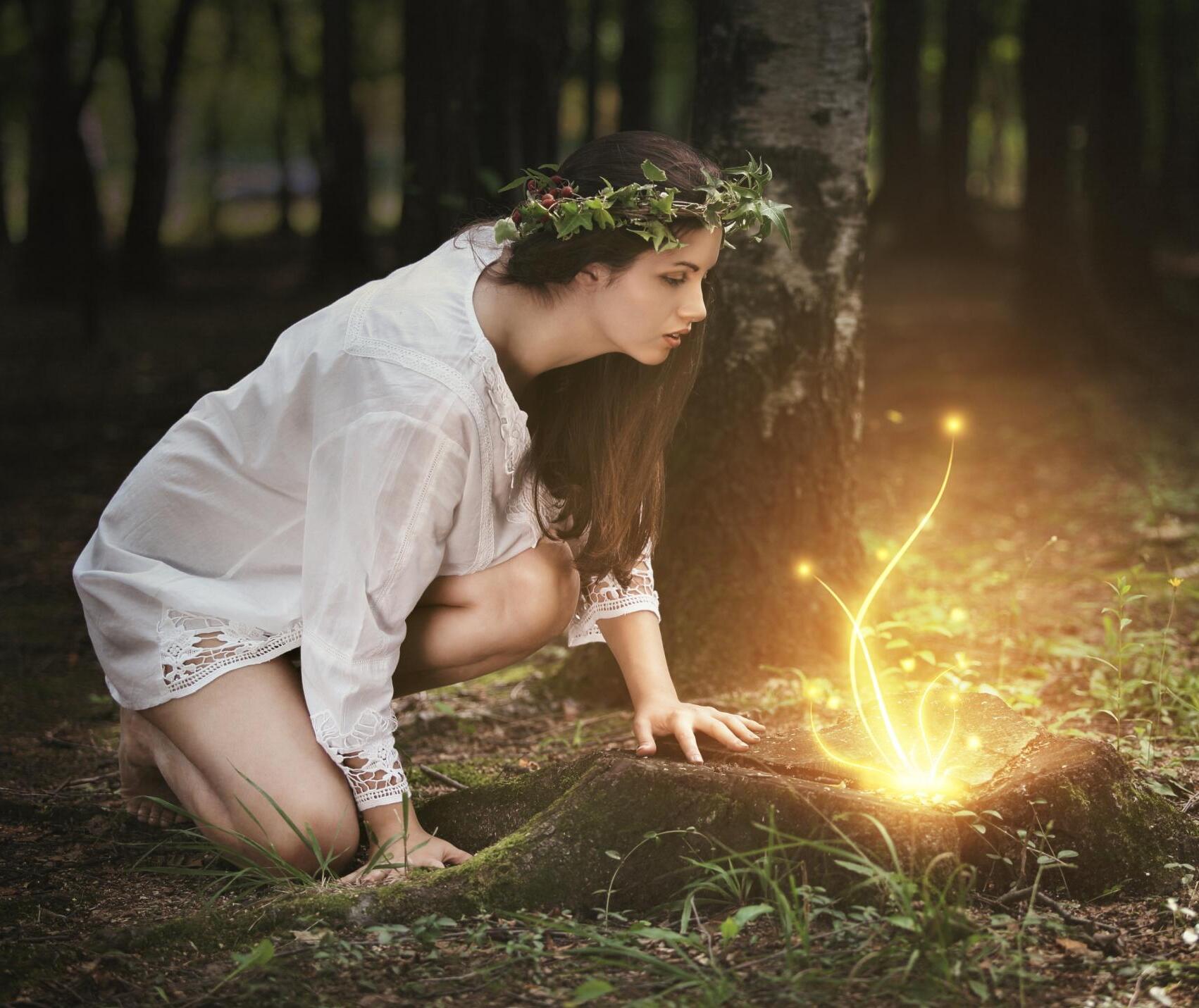 FictionByEzraBuzzington
FictionByEzraBuzzington
What do you see from your place? Can you see earth from where you are? Is she crying? Is there the slightest hint of a salt-water tear down near Australia somewhere? Or, is she blubbering? Blubbering near the once haunted woods of Maine?
She still turns 'round. This I know. 'Round and 'round so quickly as if to rid herself of the prickly-heated, leather-soled, stomping feet of us. The people who hinder her.
How is she viewed by other planets? As cheap? A chippie who always knew she would be? An innocent who was forced to make her living off the lonely, old, desperate men who hold her future? Is she a good one gone wrong? Wrong by being wronged. And wronged unjustly. Saint or sinner? Mother or bitch? (These seem to
be the only two choices allotted her gender by the malevolence of patriarchal pleasure's power structure.)
There used to be trees here. There used to be woods. And faeries. Who would dance to the timbre of your voice. In Maine. Deep in the woods of Maine. I don't get to the woods much. But, when I do, it always feels like the home I was abducted from at a very early age. In Maine the faeries made tea from poplar bark with smoked pine nuts offered as aperitif. Every time I laughed (which was more often than I would have bargained for) they danced. They don't use fire other than to cook. That's why lightning bugs stay low to the ground in the early evening in the summer in the woods in Maine. To cast light and some heat over the heads of the faeries.
Faeries don't stay up real late you see. No. That's the domain of gnomes and elves. No. Faerie circles take place at around twilight and end when the sky turns to pincushioned, mind-bending black. The occasional, slow strobe of winged illumination's departure serving as a signal that sleep does call. And dreams await the forever young and innocent. Not all faeries welcome you right off. At least they didn't me. I think some were frightened at first that I might move too quickly and crush them. I promised to hold very still and took my boots off just in case. There was about a baker's dozen of them and once 'Community Business' was out of the way (after a somewhat embarrassing scene involving one thinly naked faerie who was upset about something in another language) came revelry and dancing.
I was the only music. They moved to my voice like double-ply tissue paper. I quoted what little Shakespeare I knew, burped some very bad verse I had written at a very early age and soon ran out of stuffy memorisation. (After having done the Pledge of Allegiance twice, since they seemed to like that one best.) So, I started singing: “Annnd noooow.....the ennnd is neeeear....annnd so I faaaace...the final curtainnnn...” They stopped. Frozen. Transfixed by something they were not talking about. At first I thought it was the selection I'd made and went to apologise, but found I could not move either. Nothing. Except my eyes. Which I could also not control. They scanned over the suddenly very still collection like a tourist in a gift shoppe with only one more token to buy. And I had either gone deaf or silence had literally surrounded us. Literally. Watching. In the distance. From the near dark. As the deer flies made a hasty exit.
One faerie, the one with no hat and a big, feminine belly, moved to the centre of the clearing. I could barely see her round, little form in darkness known only in the woods in the summer in Maine. She squatted, closed her
eyes, made a 'peeping' kind of sound and released a dew-drop coated, dew-drop dropping of an offspring. The other faeries moved quickly now, forgetting their guest completely. Silence gave way to regular evening forest sounds and a spider ran by unnoticed.
They cleaned, coddled, and cared for their own. When they finished they turned toward me and held out the infant for humanity's appreciation. I don't think I let them down. Its eyes were already open and black as beads. They blinked like poppies at a hoe-down. I wanted to hold it. And they wouldn't have minded. But I thought of the city and couldn't. No amount of time spent in the woods now could ever compensate for the years spent outside the paradise of musty earth. No amount of good intentions nor child-fed longing could ever override the grit of even one subway ride. I was too far away now and could never completely belong to their world. A world which, in the best of all possible worlds, we would all know were we not where we were now. I am the cousin of the enemy. The associated guilty who, despite all hope and despair, would have to die before their world even stood a chance.
I soon left. With the heart of the woods in my throat like a lump. And a vague promise of returning. They named the baby 'My Way'. And I went on my own. That was a long time ago. Before computers even. I knew that their future was past but I didn't let them know. No. To attain the innocence of faeries is reserved for those who have trod the road of the weary many times. Never bother giving a faerie bad news. They'll only dance. I look at the woods from a distance now. And think about my way too often.
The End.
Contact: Ezra Buzzington johnny1take@gmail.com

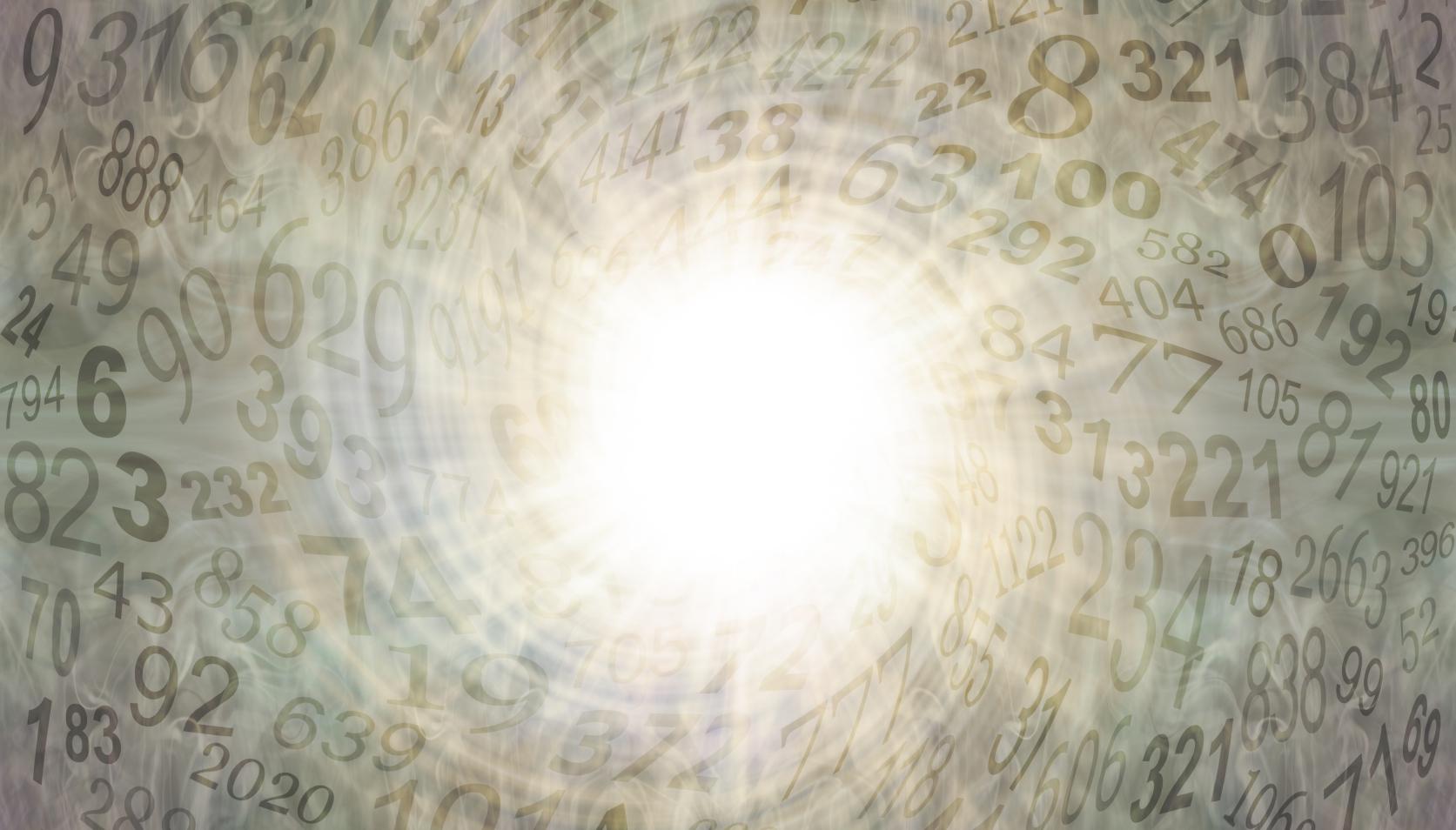
In late November 2021, a seed of inspiration was sown, setting in motion a series of events that would change the course of my life for ever. With the pure intention of igniting the divine spark within each of us, I embarked on a journey that led me to a profound revelation: The untapped power of language.
It all began at a Garden and Home show, an unexpected encounter with a vendor who introduced me to the KwazuluSpirit Festival. Little did I know that this meeting would become a turning point. The catalyst for transformation was a workshop led by Sarah Bullen. It was a beautiful and enlightening experience, akin to the planting of seeds on a spring day, nurturing thoughts to bear fruit in the fertile soil of our consciousness.
In my early 20s, my journey into the depths of consciousness and, much later, language began with a burning question: "How can love coexist with constant conflict, as I witnessed between my parents?" I embarked on countless journeys and explored various fields, yet the answer remained beyond my grasp. It seemed that the world was steeped in ego-driven divisions: 'My Yoga is better than yours', 'my healing modality surpasses yours', 'my religion trumps yours', 'I am more qualified than you'. The ego played its divisive role. This yielded no signs of this elusive 'pure love'. Instead, I found myself mired in comparisons, one-upmanship and the relentless game of ego.
However, in the early days of 2021, a simple realisation dawned upon me. 'You can take thousands of seeds throw them into the ground and the seeds need to find a good rooting system into the Earth. Once the rooting system is established they all independently veer towards the sun. So we all have a solo connection to God.’
It was a revelation of profound simplicity: Just as seeds find their unique connection to the sun once rooted in the Earth, we, too, have a direct link to the divine. We are all individual expressions of the same cosmic energy.
A workplace altercation left me afflicted with anger and frustration, prompting me to ask: 'Why, God?' The answer came unexpectedly, a silent voice within me affirming: 'God, love you with all my heart', a truth expressed without using 'I', which we will delve into shortly. This affirmation became my daily mantra and, within months, I experienced an overwhelming sense of elation.
Fast forward to November 2021 and the idea to create a book series emerged – 'I to YOU'. However, naming myself
as author proved challenging. It was at a time that I confronted many addictions plaguing my journey and the notion of a 'wounded healer', someone trying to heal others before healing themselves. "Unconsciousness is the mother of all addictions and the father of all suicides," said Ian Xel Lungold. What was my unconsciousness hiding?
In between the book, igniting the divine spark, activations and gematria, answers began to surface. Gematria, the mystical practice of assigning numerical values to letters, revealed the hidden power of words and sentences. Just as computers store data as 1s and 0s, language could be converted into numbers. Energy, frequency and vibration, as Nikola Tesla put it, resonated through words.
Applying the rule of simple gematria to English, A=1, B=2 and so on, unlocked a world of insights. For example, 'ENERGY' equated to 74: ENERGY = 5+14+5+18+7+25 = 74.
Converting these numbers back to letters revealed 7=G and D=4.
We have GD, now GOD has the O in it. Why is the O so significant? It is because energy without an O-utlet is only potential energy and does not reach its kinetic state. It is likened to closing an open electric circuit which enables us to get whatever we plug in. With a closed circuit and open flow of energy, we plug in a radio and get music, plug in a light bulb and get light.
Kabbalists were grouping sacred text together if they had the same numerical value. They considered words and phrases with identical numerical values, synonymous. Other gematria examples:
SILENT MIND=19+9+12+5+14+20+13+9+14+4=119
DEATH OF THE
EGO=4+5+1+20+8+15+6+20+8+5+5+7+15=119
GOD IS IN
CHARGE=7+15+4+9+19+9+14+3+8+1+18+7+5=119
Computers can only operate by incorporating two states OFF = 0 and ON = 1. With these two states everything that is created by the computer is stored in streams of 1s and 0s. When retrieving it the computer will convert the streams of data to the characters you are now seeing. Much like computers, our bodies store information through neurons. Neurons that fire together wire together, shaping our conditioned selves.
The I AM is a constant in our reality. Whatever follows the I AM is part of the relative world we experience. They are always the first words we use when we introduce ourselves: “I am John and I am a botanist…” or “I am Samantha and I am the CEO of …” Our accomplishments and the space we take up in the world has become who we are and how we are rated. We get so identified with the I statements that we will fight to keep them at all costs.
It is an agreement we make with our ego and sense of self-importance and worth, based on the information that was given to us by our frame of reference, milieu and conditioning. Up to the age of around seven life is all about fun: we would be unaware of age, race, gender, religion or political ideologies. None of that exists as we are still pure.
Gematria became a tool for breaking down this conditioning, allowing readers to open themselves up to these hidden numerical connections. As they do, these numbers begin to manifest in their reality, serving as confirmation of their transformative journey.
Recently, researchers have pinpointed a specific region within the frontal portion of the brain responsible for housing the ego, consciousness and the sense of self. According to their findings, the areas known as the anterior cingulate cortex (ACC) and fronto-insular cortex (FIC) are the primary sites where one's sense of ego awareness reside. It is in these regions that the foundational 'I AM' conditioning takes root.
The book series, I to YOU, guides readers through this transformational journey. Module 1 works on the lower three energy centres, initiating the shift from 'I' to 'O'. Module 2 engages the upper three energy centres and introduces the 118 energies, forming a circle of 119 energies.
Module 3 addresses all energy centres, major and minor, integrating them and unifying the brain's hemispheres. It tackles the healing of the corpus callosum, the release of genetic programming and a return to
one's authentic self.
The seeds were planted and the intention was set for the summer season. In 2024, Archangel Michael will assist in the transition. We all have the cosmic forces in our favour.
The recent Lions Gate Portal, a powerful cosmic event, charged our bodies with energy and love, signalling a shift from 'his-story' to 'her-story'. Our world, once dominated by 'I', was now moving towards 'O', much like the binary code of computers.
Nature and numbers become allies in this voyage of a self-discovery that is devoid of the consciousness-consuming impact of the ego and the 'I AM' reality. Nature tunes us in, numbers calibrate us and activations integrate us into our authentic selves.
In the teachings of Ian Xel Lungold, we find the concept of creation running on cycles. The shift from the mindcentric his-story to the body-centric her-story marks a pivotal transition in our world. Just as computers use 1s and 0s, our minds are now shifting from 'I' to 'O'.
In closing, a Cree Indian prophecy reminds us:
“Only when the last tree has been cut down.
Only when the last river has been poisoned.
Only when the last fish has been caught.
Only then you will find that money cannot be eaten.”
It's only when we embrace both divine masculine and feminine and transmute the toxicity of an over-emphasised ego or 'I AM' reality that we honour ourselves and Mother Earth.
Inspired by the All-that-Is, a collaborated article with Ene G. To embark on this transformative journey and learn more about Ene G's work, visit the website Ene-G.co.za or Ene-G-Hope.com or reach out via email at ene-g@webmail.co.za. More information awaits, along with a shared vision that honours all of life.
The launch of Module 1 will be 01.01.2024.


Be uniquely you. Stand out. Shine. Be colourful. The world needs your prismatic soul! “Amy Leigh Mercree

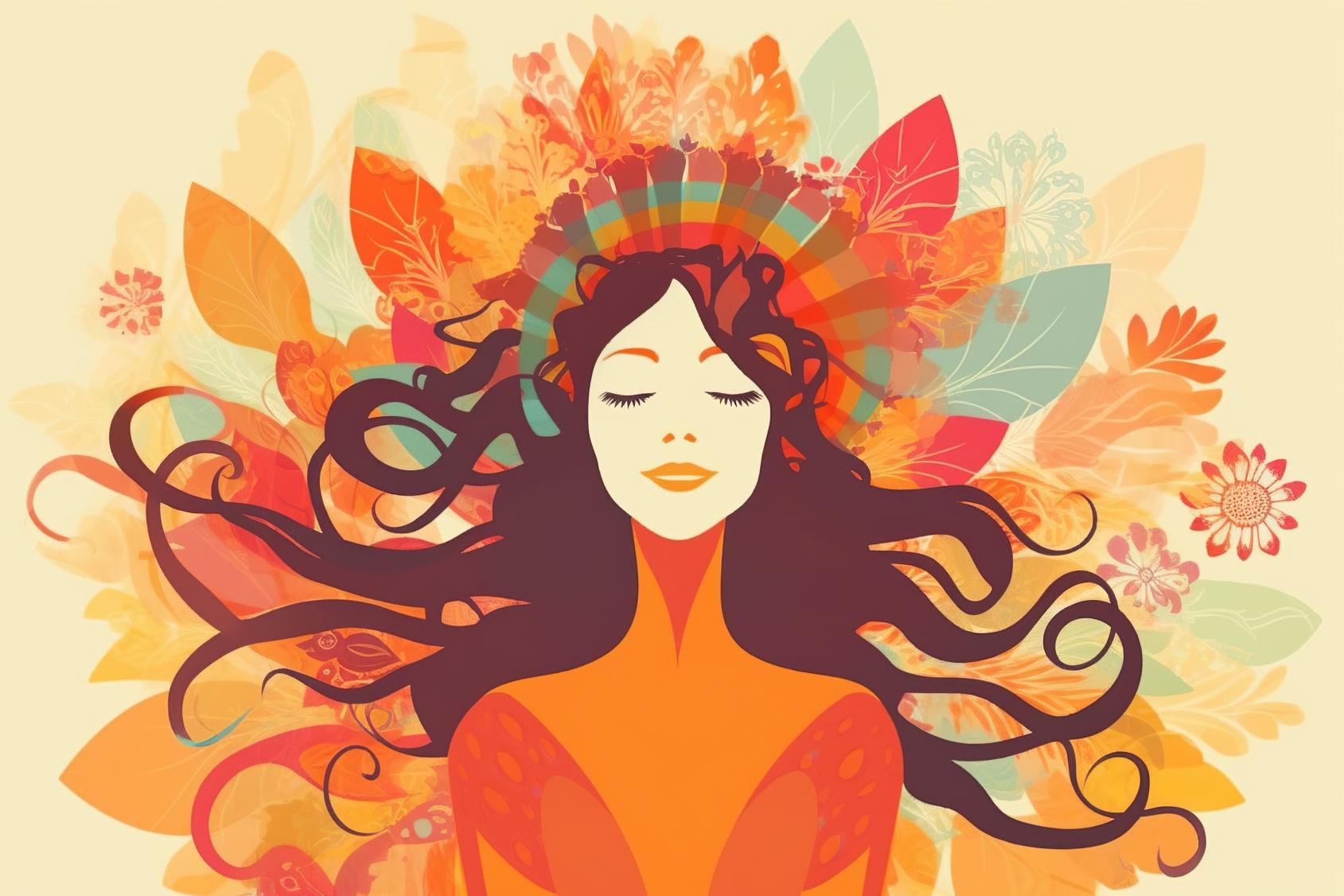
Introduction
The science of joy is the meeting place of epigenetics, brain/neuroplasticity and our happy biochemical hormones, neurotransmitters, a.k.a. information substances.
The emotion of joy cannot be forced or relentlessly searched for in the external world. It is an inside 'job', allowing the emotion and physical sensation of joy simply to open up within us, where it resides eternally, waiting patiently for us to open our hearts to it with ease and grace.
The mind has complete influence over the body. We have to choose every moment to change our minds from health-harming thoughts to health-enhancing ones, moving from the subconscious mind with past programming based on past experiences, to the superconscious mind with higher awareness to guide and govern our lives and cellular expression. It becomes clear that what we think could possibly make us sick or well, happy, loving and joyful, or unhappy, angry and resentful.
A short recap of neuropeptides
Candace Pert was a neuroscientist who did extensive research on neuropeptides over many years. She was the first to call them the 'molecules of emotions'. Pert originally identified the opium receptor sites on cell membranes inside the brain, for endorphins, back in 1972. She realised that if morphine works as a pain killer, there had to be a similar molecule inside the human body, otherwise morphine wouldn't have had a specific receptor to bind to for its pain-killing effect.
Endorphin was this molecule! The receptor sites for the peptide endorphin were first identified in the brain, hence the name neuropeptide. We now know that peptide receptors are found throughout the body and they're now known as peptides or informational substances.

The network or matrix like a spider's web information highway, spreading molecules of emotions into every one of our 50 trillion cells via lymph, cardiovascular and nervous system, send frequencies extending even beyond it into the world around us.
The complicated and complex communication network between cells, neurotransmitters, peptides, hormones, immune system, blood and nerves demands a remarkable orchestration of effective communication and integration of form and function for the body-mind to work as one healthy, balanced and integrated whole.
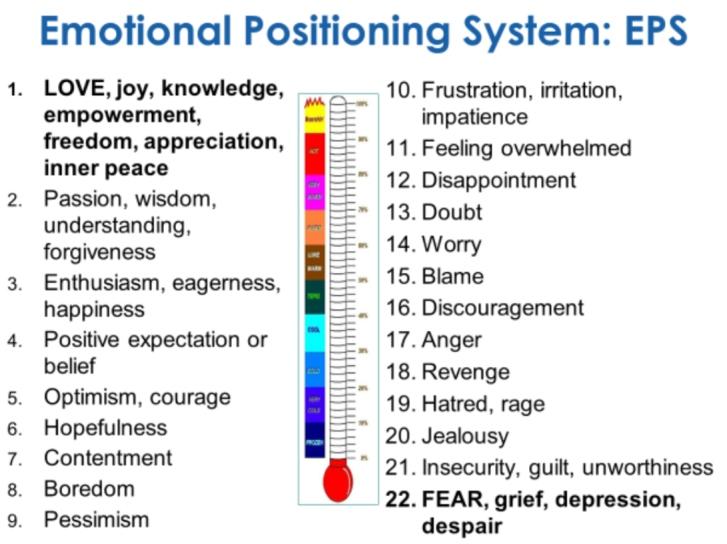
Epigenetics recap “The moment you change your perception, is the moment you rewrite the chemistry of your body!” – Bruce Lipton, who put the practical application of epigenetics on the map. Refer to his book, Biology of Belief and follow-up publications.
Let's consider epigenetics for a moment to better understand how our emotions impact every one of our 50 trillion cells. We are not the victims of our genes, our DNA or the 'sins' of our forefathers!
Epigenetics: 'Epi' means 'above' or 'more important than' the genetic information encoded in the DNA.
The field of epigenetics is showing us that the cell membrane and its receptor binding sites supersede the genetic code and can restore cell function, even if it is genetic in origin. The environment of the cell is ultimately responsible for the efficacy of cell function through selective binding to receptors.
The cell environment includes nutrients, oxygen, water, the vibrations of thoughts and emotions via the
molecules of emotion (peptides or informational substances) and ultimately our sense of our soul connection to our Source or Inner Being, to encourage a higher vibration of molecules binding to receptors on cell membranes.
Understanding this will help us know that we're not helpless victims of our genetic heritage but powerful beings who can take charge of our own health and wellbeing by changing the environment of the cell to ensure correct and effective messages enter through the cell membrane, right into the nucleus and DNA, where transcription for protein synthesis and, ultimately cell functions, take place.
It is a decision to CHOOSE to change your inner and outer life through improved health-enhancing behaviour. Chronic illness, when regarded as a health challenge, is often the first prompt to search for deeper meaning, realising what is important in life and then making the necessary adaptations for a healthier lifestyle.
Genetics do play a part in illness by determining the physical weak links, that is, the physical system where it will manifest first by way of symptoms, such as ongoing increased blood sugar levels, high blood pressure, or weight gain. If you take care of the epigenetic environment, however, the genetic expression can and will be changed or never even expressed.
Stop whenever you feel overwhelmed and say to yourself:
“I breathe. I turn up the corners of my lips in a small smile. I breathe. I smile in my heart. I breathe. I smile in my liver. I breathe and share this smile with the world.” Feel the immediate shift to joy in mind and body.
The science and nature of joy
Research studies based on the science of joy abound. All conclude how feeling joy and its closest vibratory feelings, benevolent love, hope and kindness, inner happiness and even moments of bliss, support and enhance our healthy brains, hearts, immune systems and sense of inner peace, calm and deep feelings of wellbeing. Feeling joy is great for a healthy soul, mind and body! Feeling more joy promotes healthier lifestyles in general.
Expressing joy through a specific, deeply felt way of smiling that reflects in your eyes elicits an effect in others who sense it through a feeling of momentary gladness in them, even when you walk by in passing. This way of smiling is called the Duchenne smile, an involuntary, genuine smile that reaches our eyes.
Research has shown that it is associated with an improvement in physical health through specific measurable markers, better recovery from illness and surgery, as well as stronger bonds with others. Feeling joy has positive effects on breathing, making it deeper and slower and easier to increase the flow of oxygen and release of carbon dioxide throughout our cells.
Our way of engaging with others improves, as does our increased movement and mental preparedness to face and talk about life's challenges – the ability to move through the clouds of discontent, grief, sadness, anger and resentment – to the light that is always there inside us all, simply waiting for us patiently to acknowledge and access it.
Joy improves our mood. The feeling triggers pleasure-related hot spots in the brain, which are then distributed through the whole brain and central nervous system, rippling out to the heart, immune system and whole body through the biochemical messenger molecules, neurotransmitters, hormones and informational substances.

The capacity for joy within us all, regardless of anyone or anything outside us, connects to the higher frequencies of the field of infinite possibilities, our source of wellbeing, available to us all.
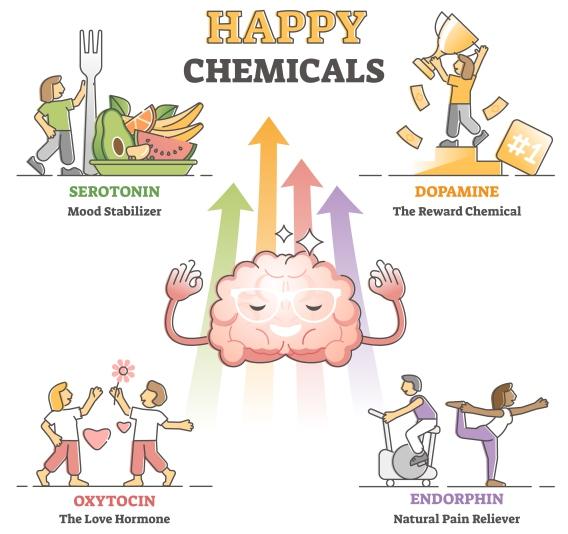
Joy is an inherited capacity in some people, but we are all able to learn how to harness this feeling which might seem elusive and difficult, but it is not! There are some simple ways we can all learn and practise to implement in our daily lives, which I have broken down into three steps.
• Food
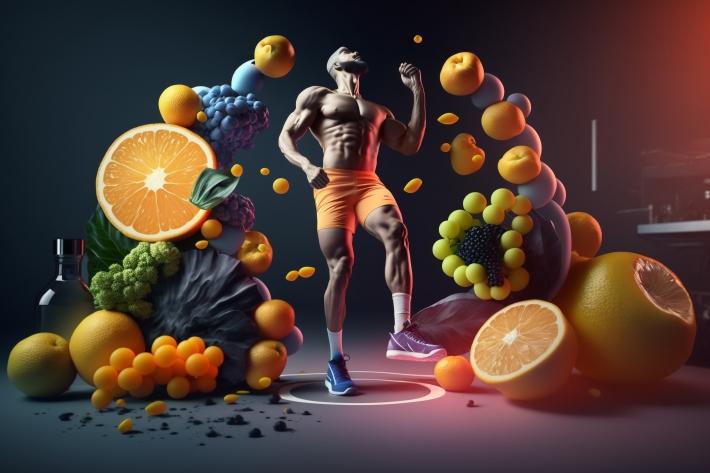
Sharing food can spark joy. This psychological nourishment elicits the highest level of wellbeing. The right choices of food also support our physical body and all our cells.
Preparing food and eating it together with family or friends will stimulate joy, as will eating out or organising a dinner or sundowner cocktail party.
• Physical activity
The joy of movement is a well-known fact. For example free dancing to harmonious, uplifting music or a mindful jog or walk in nature will do it, not only with others, but also alone or with your dog.
• Tune in: The movement and sound of joy
Fun, laughter, moving the body – dance, play, be sociable. Change your daily routine. All these are joyful neuroplastic ability enhancers – keys to brain plasticity and health-enhancing emotions.
• Writing, feeling blessed and grateful
Write down how you feel using the Emotional Positioning System (EPS) – refer to previous page.
Write about intense positive feelings or think of a memory where you felt them, including things, events or people you are deeply grateful for and blessed by.
Feel all your emotions, including fear, worry, anger, sadness and boredom. Then choose to balance them with joy, realising emotions are fleeting if they are sensed and not suppressed or repressed but allowed free expression into transformation, using the placebo effect of joy, love and hope rather than the nocebo effect of expecting the worst, thereby increasing the chance of actually creating the imaginary worst-case scenario. Refer Dr. Joe Dispenza, Bruce Lipton and Gregg Braden's extensive work on this.
'In stillness and in quiet listening, I can hear the hymns of gratitude the world is singing underneath the sounds of fear' – A Course in Miracles
Our souls want us to dance joyfully, whoop and holler. Music and harmony integrate the two hemispheres of the brain, allowing us to bypass the logical loops in our brains.
What a joy it has been to write this article, meaning and feeling every word in the marrow of my being
Find the joy in the simple moments and let happiness be your compass in life. Benevolent hope, love and kindness increase your joy chemicals as you share them with the world around you, a thousand times!
THE STILLNESS OF A QUIET MIND, INNER EASE, ALIGNMENT OF SOUL TO MIND TO BODY… DANCE, SING, JOYFUL BEING, GROUNDING, GRATITUDE…OUR SOUL PURPOSE ON EARTH NOW REGARDLESS OF THE FEAR AND ANXIETY CLOUDING OUR MINDS. WE HAVE TO CHOOSE TO TRANSFORM THROUGH IT, TO THE CORE OF TRUTH, THE LIGHT WITHIN EVERY LIVING HUMAN BEING, ANIMALS AND PLANTS.


From Higher Mind to Pineal Gland (inside the brain) to the electromagnetic crystalline torus field of the Heart and whole body in a spiral running up and down through the spine along the major chakras and endocrine glands, into the earth and back, symbolised by the Staff of Hermes, the double helix caduceus of healing, symbolising in turn our DNA strands, extendingthroughthefieldtoothers.
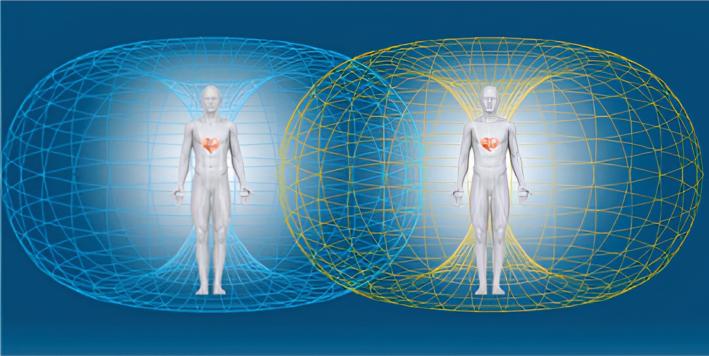
Dr Arien is a medical doctor, author and a specialist holistic health counsellor. For more information on her work, publications, product formulations, list of product distributors and ongoing public and CPD Training Courses, visit www.ArianiHealth.com.

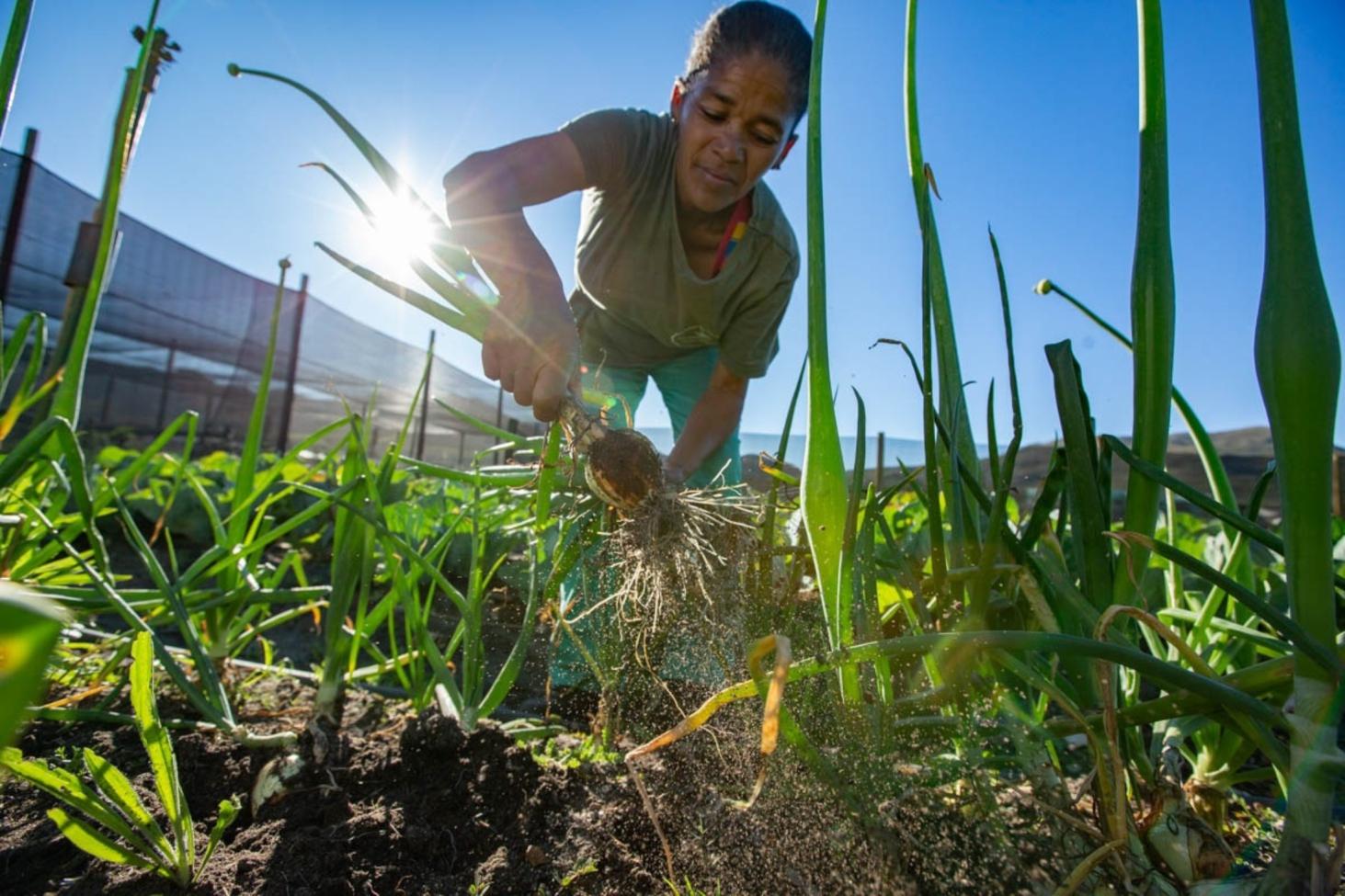
it'sgoodforyouandit'sgoodfortheplanetByCharmaineKoppehel
Summer weather generally makes us more healthconscious as we spend more time outside and make better food choices. It's also an ideal time to embark on a journey towards a healthier lifestyle, both for ourselves and the planet, by choosing organic whenever we shop.
Organic is more than just a label; it's a promise of trust and integrity that is firmly rooted in the principles of health, ecology, equity and compassion. The essence of organic farming lies in its guardianship of soil, water and biodiversity – at its heart it is a regenerative and sustainable approach that works with nature, not against it.
Organic farming is climate-friendly as it protects the soil, water and ecosystem As growing organically works with nature, it helps support a more ecologically balanced and resilient world. Healthy soil is the foundation of any organic farm as it builds robust plants which can better resist droughts,
insects and disease. By not using synthetic chemical inputs and prioritising soil health, organic farming enhances carbon sequestration and reduces greenhouse gas emissions.
Additionally, organic methods emphasise crop diversity, water health and agroecological principles that contribute to more adaptable and sustainable agricultural systems. By selecting organic products, consumers are playing a pivotal role in reducing their carbon footprint and helping to be better custodians of our planet.
Organic means clean, ethical products you can trust Organic farming prioritises local supply chains, cultivating food and products close to their point of sale, thereby reducing transportation and pollution, while mitigating vulnerabilities within the food system. Smallholder farmers that are certified to the South African Organic Sector Organisation (SAOSO) organic standard within Participatory Guarantee Systems (PGS) groups contribute significantly to food security in South Africa.
Choosing organic means choosing a level of assurance that what you are getting is not only better for your wellbeing but also a vote for our farmers and producers that conserve and care for our environment. Opting for organic food and products is an intentional decision that champions quality, authenticity and transparency.
Organic certification offers assurance that customers can trust. To make sure you are buying organic produce, look for the 'certified organic' seal. In South Africa, we have second party certification, which works with short supply chains assured by PGS, and third party certification by an accredited certifying body to specific organic standards such as Control Union, Ecocert, Afrisco and CERES.
What is PGS?
Participatory Guarantee Systems, often abbreviated as PGS, may not roll off the tongue easily and their significance remains largely hidden from consumers. Yet these grassroots farmer networks are the unsung champions in the battle against urgent challenges like climate change, food security and environmental sustainability and are quietly and powerfully reshaping South Africa's agricultural landscape. Local PGS farmer groups play a significant role in helping farmers to get organic certification. It's affordable for smallholder farmers, designed as a short supply chain for nurturing local organic produce into the market, thereby enabling farmers to get fair prices and consumers to get food they can trust.
These farmer groups actively participate in the process of certifying one another's farms to the SAOSO organic standard. They avoid synthetic pesticides and fertilisers and take part in a transparent and participatory certification process, while sharing knowledge and skills with one another. Instead of relying on government or expensive certification organisations, small-scale farmers in a community work together to ensure that their produce is grown organically.
The growth of PGS organic farmer groups in South Africa
Through a four-year project from 2019 to 2023, funded by the German development agency GIZ, SAOSO and PGS SA have represented South Africa as the country node of the Knowledge Hub for Organic Agriculture, with the goal of expanding the number of PGS groups and therefore scaling up the adoption of organic farming practices in the region.
Through this project, 22 new PGS groups were formed with one group outside South Africa, in Lesotho, representing 459 farmers. These farmer groups undertook 165 farm visits of which 122 were certified
organic or organic-in-conversion.
Many of these PGS farmer groups supply organic retailers, markets, as well as community schemes that look after rural communities, schools, the elderly and hospitals. To see a map of all the PGS groups in South Africa, please look here: www.pgssa.org.za/pollinatormap
PGS is important in South Africa because it addresses the specific challenges and opportunities faced by smallscale farmers, contributes to rural development, supports food security and environmental sustainability, builds communities and enhances market access and consumer trust in organic products. It plays a vital role in promoting a more inclusive and sustainable agricultural system in the country.
When it comes to your personal health, choosing organic is a step in the right direction. As organic farming practices prohibit the use of synthetic pesticides, herbicides and genetically modified organisms (GMOs), it means that the products you bring home are inherently free from harmful chemicals, enabling you to reduce your body's pesticide and toxic load. These chemicals accumulate in the body as well as the environment, causing both to suffer from adverse health effects. Studies have shown that eating organic, even after just a short period, can radically reduce the pesticide load on your body.
Furthermore, organic products are often more nutrient-dense than their conventional counterparts. A study published in The British Journal of Nutrition found that organic fruits and vegetables contain higher levels of antioxidants, essential vitamins and minerals. Choosing organic means not only savouring delicious and wholesome products but also nurturing your body with the best nature has to offer.
By opting to shop or replace a portion of our customary purchases with items that are devoid of chemical pesticides and GMOs, we wield the power to effect significant positive change in our world that has an exponential impact.
Organic farming doesn't use harmful pesticides or expose farmworkers to dangerous and persistent pesticides which can result in serious adverse health impacts. Farmworkers are in the front line and are most exposed to the deleterious effects of pesticides. Neighbouring communities are also at risk of exposure through pesticide drift if they live near a conventionally farmed area.
Pesticide drift is a threat to human health as well as to wildlife and ecosystems.
UnPoison is a South African non-profit organisation and civil society network working to protect public health from the harm of highly hazardous pesticides commonly used in conventional agriculture, while promoting the development of alternative biological solutions for the sector.
According to a report by #Unpoison and SAOSO, South Africa is the leading pesticide user in Sub-Saharan Africa and a large quantity of the pesticide used in the country is concentrated in the Western Cape, which harbours fertile agricultural lands and is the mainstay of the country's wine and fruit production. Three case studies of communities suffering the effects of intense spray drift in the Western Cape are documented.
In August 2023, #Unpoison published the first publicly available list of Highly Hazardous Pesticides used in South Africa. Highly hazardous pesticides are pesticides that have been identified as posing a high and unacceptable risk to human health or the environment. They are typically characterised by their acute toxicity, their potential to cause chronic health effects, or their persistence in the environment and are commonly highly restricted or banned in other regions for this reason.
There are 192 highly hazardous pesticides registered and legally in use in South Africa, of which only 16 have partial bans or restrictions. Over a third are banned in the EU because of unacceptable human health and environmental risks and 36 belong to the most hazardous class, which are substances known to have carcinogenic potential for humans, based on human health evidence and, in acute poisonings, can cause death. Read their full report, the link is at the base of this article,
There is a growing body of scientific evidence that suggests that we have crossed a tipping point for chemical contamination of Earth's natural systems. This means that the levels of chemicals in the environment have reached a point where they are causing irreversible damage to ecosystems and human health. Supporting organic and agroecological farmers and farming
practices removes harmful pollutants from the environment and protects farmworker and community rights to a healthy environment.
Choose organic to protect soil, water and wildlife
Organic farms are managed in a way that promotes biodiversity, protects wildlife, bees and other pollinators and cares for them as an integral part of a holistic system. When we purchase organic food and products, we create a demand which the organic farmer will fill, leading to a more readily available, larger supply of healthier products.
Embracing organic food and products in our routine shopping can be a transformative practice that offers improved wellness for you and your family, while supporting the sustainability of our local environment.
Whatever you are buying – from cotton buds to carrots – when you choose organic food, drink, beauty products, clothing, garden and input products, you choose products that support a healthier world.
Charmaine Koppehel, SAOSO and PGS SA Communications Office
For more information: https://www.saoso.org/choose -organic/.
For more information on Participatory Guarantee Systems in South Africa: https://pgssa.org.za
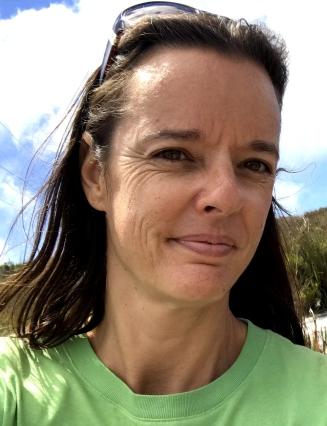
https://unpoison.org/wpcontent/uploads/2023/08/Corrected-Press-ReleaseUnPoison-Publishes-South-Africas-List-of-HighlyHazardous-Pesticides-23082023.pdf
https://unpoison.org/wp-content/uploads/2023/08/SA-listof-Highly-Hazardous-Pesticides-using-JMPM-criteriaWHOFAO-ban-comparisson.pdf


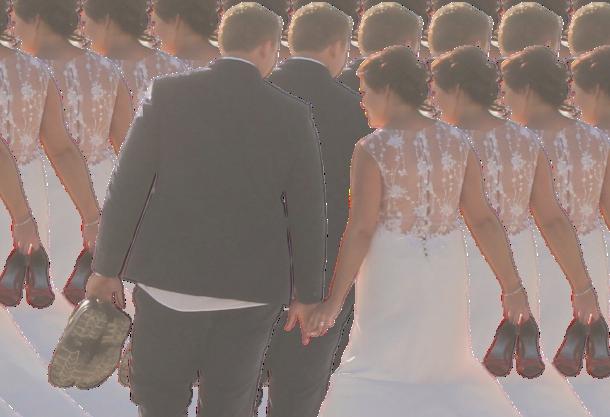

Our planet is transforming, moving from a dense version to a version containing much more light and at a much higher frequency. As humans, we are manifestations of this planet. We have her earth in our cells, her water in our blood, her air in our lungs and her fire in our belly. We are her nervous system. It really is up to us if we want to leave our dense body-suit behind or move on with a lighter one with her.
At Anouthen Infinite Wellness, we are a family of healers, each one of us is healing ourselves, learning to eat to shed that which is not us. Our highly intelligent body is geared to transmute, we simply need to get rid of that which is not us. Accumulated interstitial waste, the ash of food not meant for us, parasites, heavy metals and isolated minerals have much lower frequencies than our cells; it is a grand necessity to rid ourselves of it to maintain a higher frequency.
There are many ways to support this transformation, from prayer and meditation to crystals, to sound and frequency healing. Then there is the very tangible way of supporting our cells to heal, thereby enabling them to channel more life force, thereby allowing our awareness to rise and our emotional and mental bodies to heal across generations and lifetimes. The secret of these times is the ability to transmute our electromagnetic, bio-chemical body suit as our planet is doing the same. Very exciting to know we can do so much to support the process.
If you need some guidance or simply a healing family of support, join us on one of the programmes next year that resonates with you.
Launching our brand new one-year lifestyle detox
This one is designed for those wanting to implement permanent lifestyle changes, those who want to leave the karmic world of killing animals for sustenance behind, those who want to stop the damage they bring to their body via addictions, stimulants and complex food. Every month we spend 10 Days together, every month we focus on an organ of our body, a substance and its influence on our body, an external factor bringing damage to be eliminated or managed better, emotional/mental release and healing and so much more. You have the rest of that month to implement what you have learnt, then we connect again in the new month with another round.
Our trusty 28-day in-depth body detox and workshop
This is great introduction to the concept of eating to heal. How to understand the language of your body and how to support yourself as you move through your own healing. A self-empowering, informationdense online workshop.
One of our two six-month detoxes, to dive deep
These are our journeys together, where we check in with each other regularly, where we move from one focused area of healing to the next, allowing for deep cellular regeneration to take place, never to be the same again, always integrating changes and sculpting a better version of ourselves, one cell at a time.
Heleen Elizabeth is your detox specialist and coach, with a passion for empowering you to become your true self.
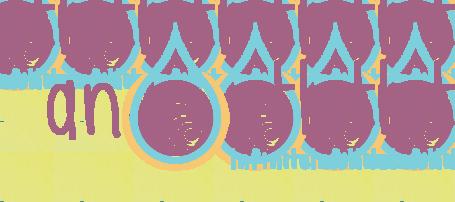
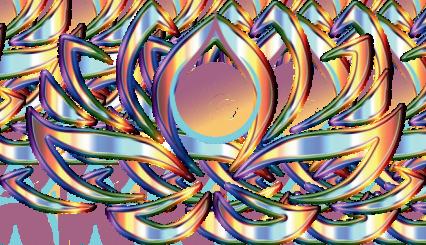

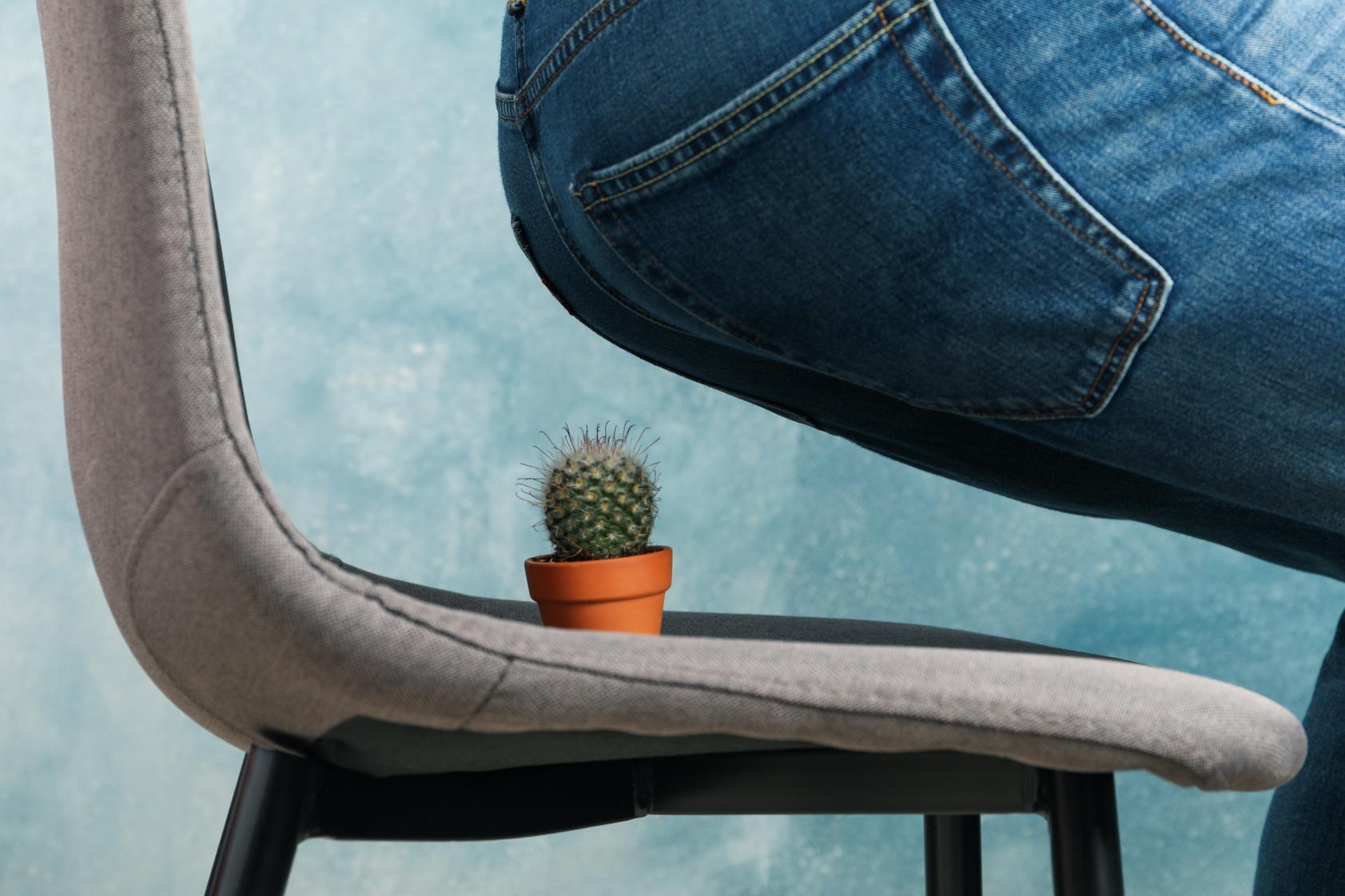
According to studies on PubMed, the prevalence of haemorrhoids is 4.4 per cent in the general population, worldwide. Although, on the Johns Hopkins Medicine website, it is stated that about 50 per cent of all people will have haemorrhoids by the time they turn 50. Why are so few people talking about it? Is it due to shame about the area affected or is it because we feel alone and don't realise how many people struggle with it?
Haemorrhoid symptoms are different for everyone and can range from slight discomfort to itching, bleeding and severe pain. It can have devastating effects on your sexual health, intimacy, social wellness, quality of life, as well as overall health and happiness.
My journey for getting the HALO (haemorrhoidal arterial ligation operation) started early in 2023. This procedure is not necessary for everyone and I encourage you to seek help as soon as symptoms start, as there are many other, easier procedures and remedies.
I experienced weeks of extreme pain, inflammation and not being able to do much - barely walking, no exercise (this is one of my stress relievers) and no socialising. I literally just
ByAnrivanRooyenlaid in bed for a couple of weeks and mustered up the courage to do just what I had to do and let the rest go, in honour of my own healing process.
I'm many things, but shy is definitely not one of them. When I started experiencing severe symptoms and people asked, I told them what was wrong. So many people opened up and admitted that they struggled with it too. From friends I've known for ages to family members and even people I met for the first time. It was quite eye-opening and shocking that no one felt safe to talk about it before. Interestingly, haemorrhoids are an imbalance of the root chakra (our sense of safety and security).
I share my story, hoping that, if you struggle with the same, you will know you're not alone and it is safe to get support.
I consulted multiple doctors with so many different opinions and prescriptions, ranging from different ointments, strong anti-inflammatories to schedule five pain medications… NOTHING WORKED!

After about three weeks, I stopped everything and reverted back to natural remedies, as this is what I truly believe in. I used cannabis for pain, hot toddies for the inflammation (Dr Arien van der Merwe's recipe – a pinch of ginger, turmeric and cinnamon with hot water in a shot glass), aloe vera with tea tree to apply on the area, supplements (including our antioxidant, liver support, neuro balance to support me on cellular level), affirmations, to gut-healthy foods (including. spinach, beetroot, avocado, artichokes, water). And finally the severe symptoms subsided.
I ended up having the HALO more than three-and-ahalf months later. I had to do intense inner work to help me cope and deal with the situation, in order to feel safe and secure. I had to deal with my darkest fears, limiting beliefs and even parts of my personality that were no longer serving me. My top life and health lessons I've learned:
Since I was young I've had a severe fear of death (from my dying, to loved ones) that reveals itself often in my life, especially during times of change. I had to deal with this one on a deep level, because things can go wrong when you go under general anaesthetics and I had to face that.
Control what you can; let the rest go
This journey was 15 weeks and was delayed multiple times, due to things out of my control. This meant the operation was rescheduled four times. I went through an emotional and mental health rollercoaster four times! I had a choicebe angry or let it be, knowing it's all part of a bigger plan. I was angry, but I expressed it appropriately, came around and chose the latter. Yes, it is a choice! An easy one? Definitely not!
Let go of past limitations
The hospital I ended up going to was where my grandmother passed away and the last hospital my dad went before he passed away. I knew something larger was at play and I came to realise how poetic it was. What a great place to let go of the pieces of me that no longer served me, the pieces of which I was dying to be free.
The doctors said I was too young to experience the severity of symptoms, I replied: 'I was nine when it started'. They were shocked and couldn't understand why.
My passion is holistic medicine, my scientific mind was curious to figure it out and I got to work. I researched physical, mental, emotional, spiritual reasons and more! According to Louise Hay's book (Heal Your Body) the probable cause for haemorrhoids include 'anger of the past, afraid to let go, feeling burdened.' These were spot on for me, but at first I denied it completely. During my healing journey, I repeated the following affirmation daily (from Louise Hay's book): 'I easily and comfortably release that which I no longer need in my life. I release all that is unlike love. There's time and space for everything I want to do.'
This was probably the most challenging one. Now I know that this was the amount of time I needed to feel okay mentally and emotionally about the operation. This meant that, on the day, I was at ease and had already made peace with it. I also had to wait 10 hours before being operated on. Impatience would have made everything worse. A day procedure turned into my having to sleep over in the hospital. I had nothing with me and really didn't want to, but everything worked out for the better! I woke up every two hours that night due to pain and the nurses took really great care of me. I had to remind myself constantly that this was for the better and I needed to allow myself to receive support.
A holistic reminder
I was in St Patrick's Ward, aka the symbol of luck. It also symbolises the three parts of the Divine (in ChristianityFather, Son and Holy Ghost). For me, it was also a reminder of the three parts within ourselves - the body, mind, soul unit. When we can balance all three sides, we can heal anything and can be truly healthy and happy.
Changing my perspective
Throughout this journey I had to continue to become the observer, step outside myself, look at the bigger picture and change my perspective regularly. I had to choose and focus on the lessons rather than the obstacles. If I didn't, the journey would've been way more challenging.
Expressing anger appropriately
Anger is an emotion and it'll be a part of our lives until the day we die. We are taught by society to shove our uncomfortable emotions deep down and not to show them, even more so with anger. I had to deal with anger from the past and I learned (with help from my mentors) that there is no shame in anger, you need to feel it, in order to heal it. Now if I get angry I scream in the car or into a cushion or I punch it and it passes.
This journey taught me so much about the stigma associated with haemorrhoids, but more importantly I learned so much about myself. I hope that my lessons can help you on your journey and remind you that you can do anything you put your mind to. Remember the way you perceive your life is up to you. Do you believe life is working for you, or against you?
By Anri van Rooyen (holistic health counsellor, physiologist and codirector of Ariani Health Solutions and The Weight Control Clinic)Email: info@ArianiHealth.com Web: www.ArianiHealth.com
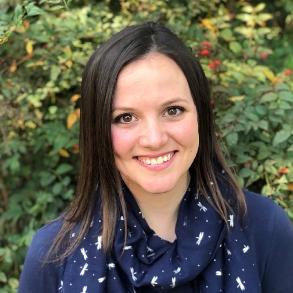
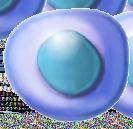
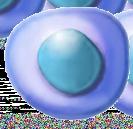
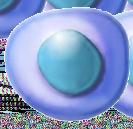
Antigen-presenting cells (APCs) break up invading or non-self particles and cells and display parts of them –antigens – for other immune cells to inspect.

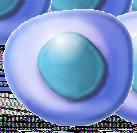
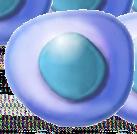
CLONAL SELECTION
The process by which a B cell and T cell specific to the antigen are selected for clonal expansion by an APC.
CLONAL EXPANSION
After clonal selection, the selected B cells and T cells divide by mitosis to produce many identical clones.
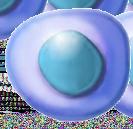



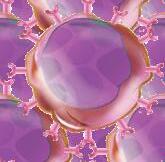


CD4+T cells are crucial in achieving a regulated effective immune response to pathogens.
The CD4+T cells carry out multiple functions, ranging from activation of the cells of the innate immune system, Blymphocytes, cytotoxic T cells, as well as nonimmune cells, and also play critical role in the suppression of immune reaction.
The control of immune responses is important for proper functioning of the immune system and necessary to avoid immunopathology, largely manifesting as and allergic autoimmune diseases
Interleukin 4 (IL-4) plays a pivotal role in shaping the nature of the immune responses. Upon activation, naïve peripheral CD4+ T cells begin to synthesise and secrete cytokines. These cytokines serve as autocrine growth and differentiation factors and, as a consequence, naïve T cells proliferate and differentiate into effector cells.
Based on the pattern of the cytokines that they secrete, distinct subsets of effector helper T (Th) cells can be distinguished. Type 1 Th cells (Th1) secrete IL-2, interferon gamma ( IFN-y) and tumour necrosis factor (TNF), whereas Type 2 Th cells (Th2) produce IL-4, IL-5, IL-6 and il-13. IL-4 is a

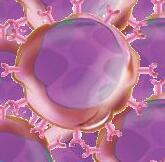


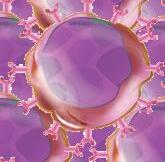
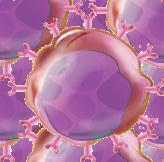
15-Kd polypeptide with pleiotropic effects on many cell types. It's receptor is a heterodimer composed of an α (alpha) subunit, with IL-4 binding affinity, and the common y (gamma) subunit which is also part of other cytokine receptors. In T cells, binding of IL-4 to its receptor induces proliferation and differentiation into Th2 cells.
Immunity in the newborn is characterised by minimal Th1 function but an excess of Th2 activity. Since Th1 lymphocytes are important to counter microbes and Th2 cells favour allergies, the newborn faces susceptibility to microbial infections and . allergic reactions
Delayed maturation of certain dendritic cells leads to limited IL-12 production during the neonatal period. The Th2 cytokine locus of neonatal CD4+ T cells is epigenetically poised for rapid and robust production of IL-4 and IL-13. Together, these circumstances lead to efficient differentiation of Th2 cells and the expression of an IL-4Rα/IL-13Rα1 heteroreceptor on Th1 cells. Upon rechallenge, Th2 cells rapidly produce IL-4 which utilises the heteroreceptor to drive apoptosis (death) of Th1 cells causing the Th2 bias of neonatal immunity.
Landmark experiments by Sir Peter Medawar's group in the 1950s demonstrated that neonatal exposure to antigen (Ag) (vaccination) leads to a lack of responsiveness to the same Ag during a later encounter [Billingham RE, et al. Actively acquired tolerance of foreign cells. Nature 1953;172:603–606. [PubMed:13099277]
Following activation, naive CD4 T cells differentiate towards Th1 in the presence of interleukin 12 (IL-12), which upregulates interferon-gamma (IFNy) via Stat 4, leading to IFNy-mediated Stat1 activation and induction of the Th1 lineage determining transcription factor Tbet.
The main effector functions of Th1 cells are in cellmediated immunity and inflammation, including the activation of cytolytic and other effector functions of other immune cells such as macrophages, B cells, and CD8+ cytotoxic T lymphocytes (CTLs). Early studies by Mosmann et al. have demonstrated that CD4+ T cells can polarise into two different subsets, T helper 1 (Th1) and T helper 2 (Th2), based on the profile of the cytokines secreted. Th1 cells are mainly characterised by the production of large quantities of interferon-gamma (IFN y), while Th2 cells secrete interleukin (IL)-4, IL-5, and IL-13.
The death of Th1 cells is driven by IL-4 produced by the Th2 secondary cells.
Th1 cells are the main agents in delayed type hypersensitivity immune response through activation of macrophages, and are crucial to host defence against intracellular pathogens. They mainly secrete IFNγ, lymphotoxin α (Lfα), and IL-2.
IFNγ is essential for the activation of mononuclear phagocytes, including macrophages, microglial cells, thereby resulting in enhanced phagocytic activity (H. W. Murray, B. Y Rubin, and S. M. Carriero, "Human mononuclear phagocyte antiprotozoal mechanisms: Oxygen-dependent vs oxygenindependent activity against intracellular Toxoplasma gondii," Journal of Immunology, vol. 134, no. 3, pp. 1982–1988, 1985) and inducer of major histocompatibility complex class II molecule expression.
Th1 cells derive from the alpha:beta lineage of T cells and recognise antigens presented by major histocompatibility complex (MHC) class I or II molecules. Th1 cells play important roles in the identification and eradication of intracellular pathogens such as viruses and bacteria, including Mycobacterium tuberculosis, Mycobacterium leprae (leprosy) and Leishmania.
Th2 by contrast differentiates in response to IL-4, which activates Stat 6, resulting in induction of GATA3. Th2 cells mount immune response to extracellular parasites, including helminthes, and play major role in induction and persistence of asthma as well as other . allergic diseases
The key effector-cytokines include , IL-5, IL-9, IL-13, IL- IL-4 10, IL- 25, and amphiregulin. IL-4 is a major cytokine involved in allergic inflammation
It is involved in IgE switching and secretion by B cells. IL-4 also upregulates low-affinity IgE receptor (FcεRI) on Blymphocytes and mononuclear phagocytes, and also highaffinity IgE receptor (FcεRII) on mast cells and basophils, with subsequent degranulation of the cells and release of several active metabolites, including histamine and serotonin.
Interleukin 4
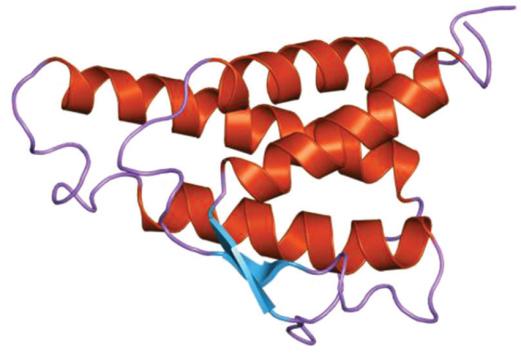
Th2 responses are important to limit extracellular pathogens and can also counterbalance Th1 immune responses. Th2 cells are more efficient in mounting humoral immune responses, triggering the production of antibodies and promoting eosinophil infiltration.
Th0 cells can differentiate into Th1 or Th2 subsets at very early stages of cell activation. Since Th1 cells are fully capable of secreting cytokines, they can in turn inhibit Th2 cell differentiation and vice versa.
Dendritic cells form an important part of the immune system. When something foreign enters your body the dendritic cells sample it (who, what are you?) and then place a piece of it on their outside surface (membrane). This is then presented to other cells in order to give the immune response instructions as to what to do. 99.99 % of the time our bodies don't need to do anything – unless there is a threat from germs (pathogens / antigens).
If so, the pathogen is presented to a naïve CD4 T-Cell (naïve meaning that it hasn't differentiated and developed yet). The activation that occurs depends on the chemicals (cytokines) that it meets as well as the receptors. From here the immune system can proceed in several directions:
Th1: The naïve CD4 T-Cell can develop a Th1 profile in which case T cells will then play the leading role in the immune response. (CD4 T cells become Th1 cells because of signals they receive from interleukin 12 (IL-12.) This is an inflammatory process and is what protects us from pathogens. Basically, this is what we want to happen when we are attacked by a microbe.
Th1 cells protect us from bacteria; importantly from Mycobacterium tuberculosis, Mycobacterium leprae (leprosy) and Leishmania (parasites from sand-flies). The main functions of Th1 cells are in cell-mediated immunity and inflammation, including the activation and functions of other immune cells such as macrophages, B cells, and CD8+ cytotoxic T lymphocytes (CTLs).
Th2: Then there is the Th2 profile which is designed to protect us from intracellular pathogens – from parasites. (This activates eosinophils which are responsible for many allergies.) When Th1 and Th2 work together a high level of inflammation is evident. Finally when the infection has been overcome the Th2 messengers (cytokines) tell the Th1 cells to shut down and that the job is done.
In the vitally important study 2010 by Dr Zaghouani PMID 19846341 / PMC2787701 newborn mice were injected with an antigen. Because the dendritic cells were sufficiently immature the new born mice only made a small amount of IL-12 (normally as an adult if you get injected with a vaccine you will make massive amounts of IL-12 and you will mount an effective immune response.) This is important because what he saw in these mice is what is seen in the outcome in humans. When the vaccine is done early – even with just an antigen and no adjuvant - in one of those windows of opportunity something interesting happens:
When they re-vaccinated the same mouse as an adult what they found was that it mounted a Th1 and a Th2 response – but because of the way that the Th1 cells had been programmed earlier the Th2 cells basically killed off the Th1 cells – and compromised the immune system’s ability to mount an effective immune response to bacteria. (Became tolerogenic instead of immunogenic.) The abnormal response in the adult mice occurred because as infant mice they were vaccinated too early with injected antigen. In this case they had their immune systems skewed toward Th2 and could do nothing about it for the rest of their lives.
Likewise a human infant’s immune system is fully capable of responding – It can respond through Th1 and it can respond through Th2. If however it is stimulated too early (within the first 3 to 6 months) you get an underdeveloped - mutated receptor on the Th1 cell membrane. (An epigenetically hypomethylated area on the surface of the Th1 cells.) When an infant has been vaccinated everything appears fine because it makes antibodies and nobody knows that there is a problem. This is really important, because all reactions don’t occur and become obvious right away. When re-exposed as adults to the same germs the immune response is however skewed and the Th2 cells then destroy the Th1 cells. (apoptosis). Autoimmune diseases are a direct consequence of a skewed immune response.
From a practical point of view, the diminished ability to produce Th1 responses makes the body more vulnerable to infections and Th2 cell dominance makes the adult vulnerable to allergic reactions.
Infants in South Africa are given Tuberculosis (BCG) Vaccine and Oral Polio Vaccine (OPV0) at birth.
6 weeks: Oral Polio Vaccine (OPV1), Rotavirus Vaccine (RV1) , Diptheria, Tetanus, Acellular Pertussus, Inactivated Polio Vaccine and Haemophilius Influenza Type B and Hepatitis B (DTaP-IPVHib1), (Hep B1,Pneumococcal Conjugated Vaccine (PCV 1)
10 weeks: DTaP-IPV - Hib - HBV(2) Diptheria, Tetanus, Acellular Pertussus, Inactivated Polio Vaccine and Haemophilius Influenza Type B and Hepatitis B combined.
14 weeks: Rotavirus Vaccine (Rv2), Pneumococcal Conjugated Vaccine (PCV 2), DTaP-IPV - Hib - HBV(3) Diptheria, Tetanus, Acellular Pertussus, Inactivated Polio Vaccine and Haemophilius Influenza Type B and Hepatitis B combined.
6 Months: Measles Vaccine.


Basophil cells like neutrophils, release chemicals to stimulate the inflammatory response. Basophils are also involved in allergy and hypersensitivity responses. Basophils leave the bone marrow already mature, whereas mast cells circulate in an immature form, only maturing once in a tissue site.
Mast cells are a type of innate immune cell that resides in connective tissue and in mucous membranes. They are intimately associated with wound healing and defence against pathogens, but are also often associated with allergic reactions. When activated, mast cells rapidly release characteristic granules, rich in histamine and heparin, along with various hormonal mediators and chemokines, or chemotactic cytokines into the environment. Histamine dilates blood vessels, causing the characteristic signs of inflammation, and recruits neutrophils and macrophages.
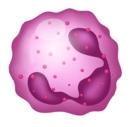

Neutrophil cells are most abundant and effective during the inflammation and phagocytosis processes. Neutrophils (PMN) are characterised as being the first cell line that is recruited at the inflammation site after chemotactic stimuli. Neutrophils account for approximately 40–70% of all white blood cells.
Eosinophils are present in the respiratory, gastrointestinal, and urinary tract, and are less abundant than neutrophils. Their effector function is mediated by degranulation and release of histamine, cationic proteins, major basic protein, sulfatases, and chemotactic factors such as leukotrienes and prostaglandins. The main function of these cells is to destroy microbial pathogens, mainly parasites, but they also play an important role in the allergic processes together with mast cells.

Macrophages – are specialised cells involved in the detection, phagocytosis and destruction of bacteria and other harmful organisms. Also known as "Big Eater" cells consume pathogens, cancer cells and debris which are then destroyed and recycled in the process of phagocytosis. They develop in the bone marrow as monocytes which circulate in the blood stream then settle and stay in body tissues. In addition, they can also present antigens to T cells and start inflammation by releasing molecules (cytokines) that activate other cells. Macrophages are also involved in the process of tissue regeneration. At the site of inflammation, monocytes differentiate into macrophages, which cooperate with resident cells for sustaining immunity or promoting resolution of inflammation and tissue regeneration.

Dendritic cells (DC) are Phagocytic professional antigen presenting cells,(APCs) uniquely able to induce naïve T cell activation and effector differentiation. They reside in and patrol the skin and mucosal surfaces.
Immature DCs are tolerogenic, Mature DCs are immunogenic.
Dendritic cells (DCs) are central in the orchestration of the various forms of immunity and tolerance. Their immunoregulatory role mainly relies on the ligation of specific receptors that initiate and modulate DC maturation resulting in the development of functionally different effector DC subsets that selectively promote T helper 1 (Th1)-, Th2- or regulatory T-cell responses.
The transcription factor T-bet (Tbx21) plays a major role in adaptive immunity and is required for optimal IFN-γ production by DCs.
Heterodimer: The key difference between homodimer and heterodimer is that homodimer is a protein made from two identical proteins, while heterodimer is a protein made from two different proteins.
GATA3: The GATA3 transcription factor is critical for the embryonic development of various tissues as well as for inflammatory and humoral immune responses and the proper functioning of the endothelium of blood vessels. GATA3 plays a central role in allergy and immunity against worm infections.
INTERLEUKIN 4: IL-4 regulates eosinophil recruitment, inhibits macrophages, switches eiscosanoid production in macrophage and dendritic cells; is produced by mast cells, basophils, eisinophils and neutrophils. IL-4 is an STAT-6 signallingdependent 20-kd glycoprotein, which shifts the Th balance toward a Th2-mediated response. Other activities include downregulation of IL-12 production, the Th1 suppression response, and the suppression or blockage of the monocytederived cytokines.
STAT proteins: STAT proteins are activated by the Janus family (JAKs) tyrosine kinases in response to cytokine exposure.
STAT 4: is predominantly activated in response to IL-12, which drives T-helper cell differentiation towards the Th1 and Th17 pathways.
STAT 6: is activated by IL-4, and IL-13 with their receptors that both contain the α subunit of the IL-4 receptor (IL-4Rα). STAT6mediated signalling pathway is required for the development of T-helper type 2 (Th2) cells and Th2 immune response.
IgE: Immunoglobulin E plays a critical role in the allergic inflammatory process in diseases.
IFNγ: Interferon gamma or type II interferon, is a cytokine that is primarily secreted by activated T cells and natural killer (NK) cells, and can promote macrophage activation, mediate antiviral
and antibacterial immunity, enhance antigen presentation, orchestrate activation of the innate immune system, coordinate lymphocyte endothelium interaction, regulate Th1/Th2 balance, and control cellular proliferation and apoptosis.
Transcription factor: (TF) is a protein that controls the rate of transcription of genetic information from DNA to messenger RNA, by binding to a specific DNA sequence. The function of TFs is to regulate—turn on and off—genes in order to make sure that they are expressed in the desired cells at the right time and in the right amount throughout the life of the cell and the organism.
Hypo-methylation: DNA hypomethylation increases both the activity of Th2 cells and the production of IgE. DNA hypomethylation is generally associated with an elevated frequency of gene rearrangements and chromosomal translocations as a consequence of increased homologous recombination (HR). HR between repeated sequences leads to chromosome rearrangement, including deletions, duplications, and translocations of large DNA segments with disastrous consequences.

Ray Lacey is a CranioSacral Therapist and ar�st. In recent years he has focused a�en�on on wri�ng, illustra�ng and producing books. He graduated from the Durban University of Technology in Graphic Art (fine art) and from the Johannesburg University of Technology in Graphic Design. He lectured at the same faculty in illustra�on and then worked as a freelance illustrator for many years. In the late 1990's he developed an interest in the interpreta�on of children's drawings. This led him to study remedial therapy for children with learning difficul�es within the Waldorf School movement. In 2001 he undertook a training with the South African Ins�tute of Cranial Studies and qualified in 2003.
He has developed the website h�p://knovax.org as an open source of informa�on about the adverse effects of vaccina�ng infants.
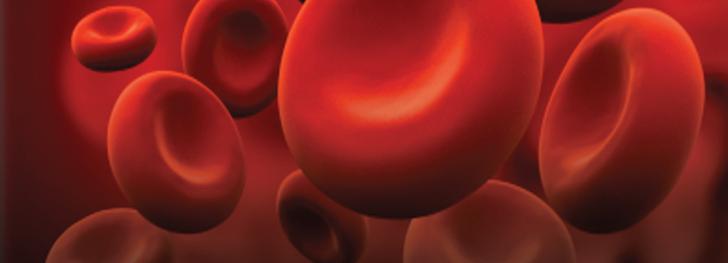
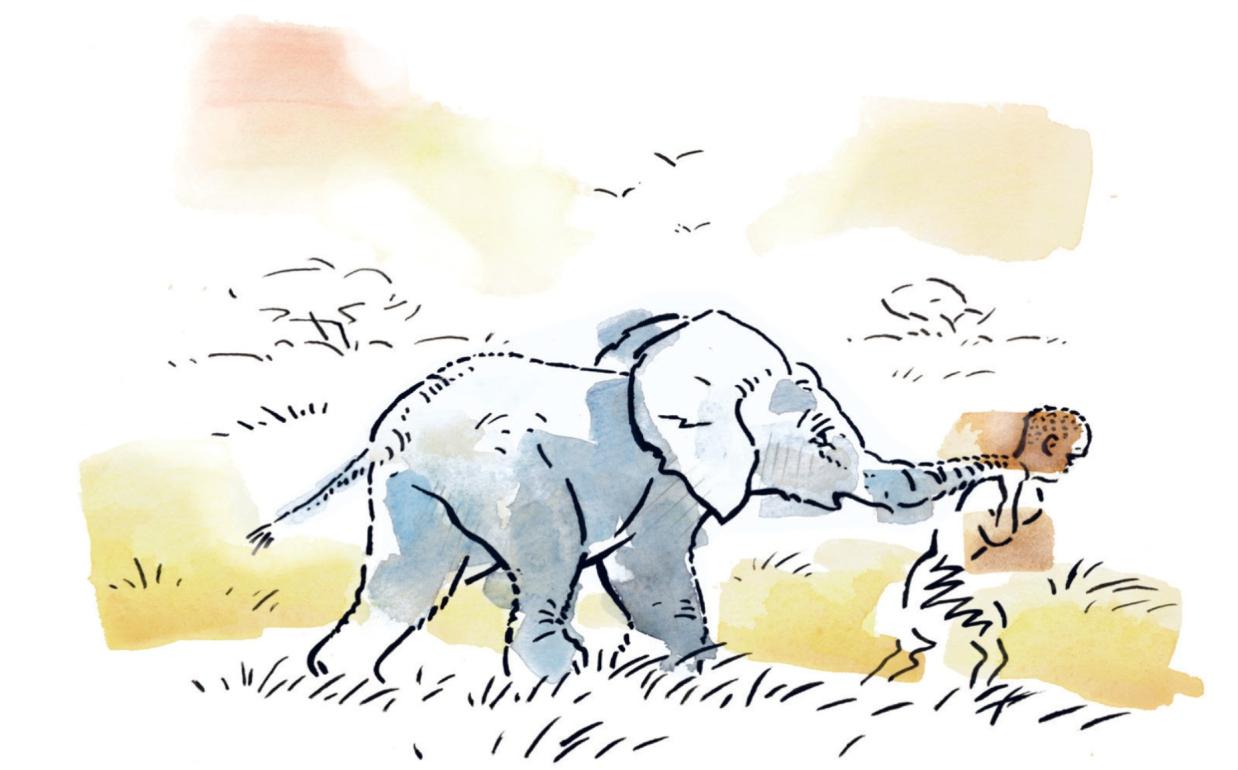
An unforgettable story about an African journey of a boy, an elephant and the unlikely assortment of other wild animals, big and small, who join their quest. As Zoya, an elephant calf, is left an orphan, Naru, a boy from a nearby village, takes her under his wing to help her find her herd again.
Guided by ancient African proverbs, the story by Caroline Montague speaks of the interconnectedness of all species, friendship and generosity. Beautifully illustrated by artist Richie Ryall, this book will appeal to adults and children alike as a compelling tale of companionship, courage and hope in the face of adversity
Zoya and Naru raises awareness of the plight of elephants and promotes harmonious coexistence between elephants and people. The book will reach people around the world, raise concern and touch our mindful natures. In doing so, we hope that it will spur an urgent desire to protect our precious wildlife before it is too late.


Elephants Alive and Jacana Media have joined forces to create the Zoya and Naru Literacy Programme. The aim of the programme is twofold – to support literacy and reading in the mother tongue and to promote the conservation and protection of elephants. The books will be made available in English, Afrikaans, isiZulu, Sepedi and Xitsonga with plans for further translations into isiXhosa and Portuguese in 2024. The kind support of donors and supporters of Elephants Alive has enabled the distribution of 2 000 soft cover books to schools, libraries and communities living in close proximity to elephants. For more info about the book and Literacy Programme: www.elephantsalive.org/zoya-naru
The book is in South Africa, at R350. Order directly from Jacana Media https://jacana.co.za/, or via email to info2u@elephantsalive.org. The author and the artist have donated all proceeds from the sale of the books to Elephants Alive. The original artworks and a limited edition print series are avaialble. https://richieryall.com/
Odyssey Magazine is giving away three books.
Website link: https://odysseymagazine.co.za/ community/#competitions-giveaways or scan the QR code. Click on the title of the book.
Closing Date 18 February 2024
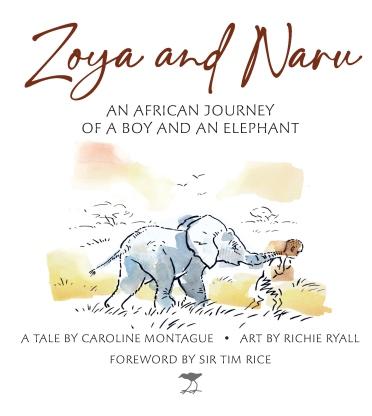
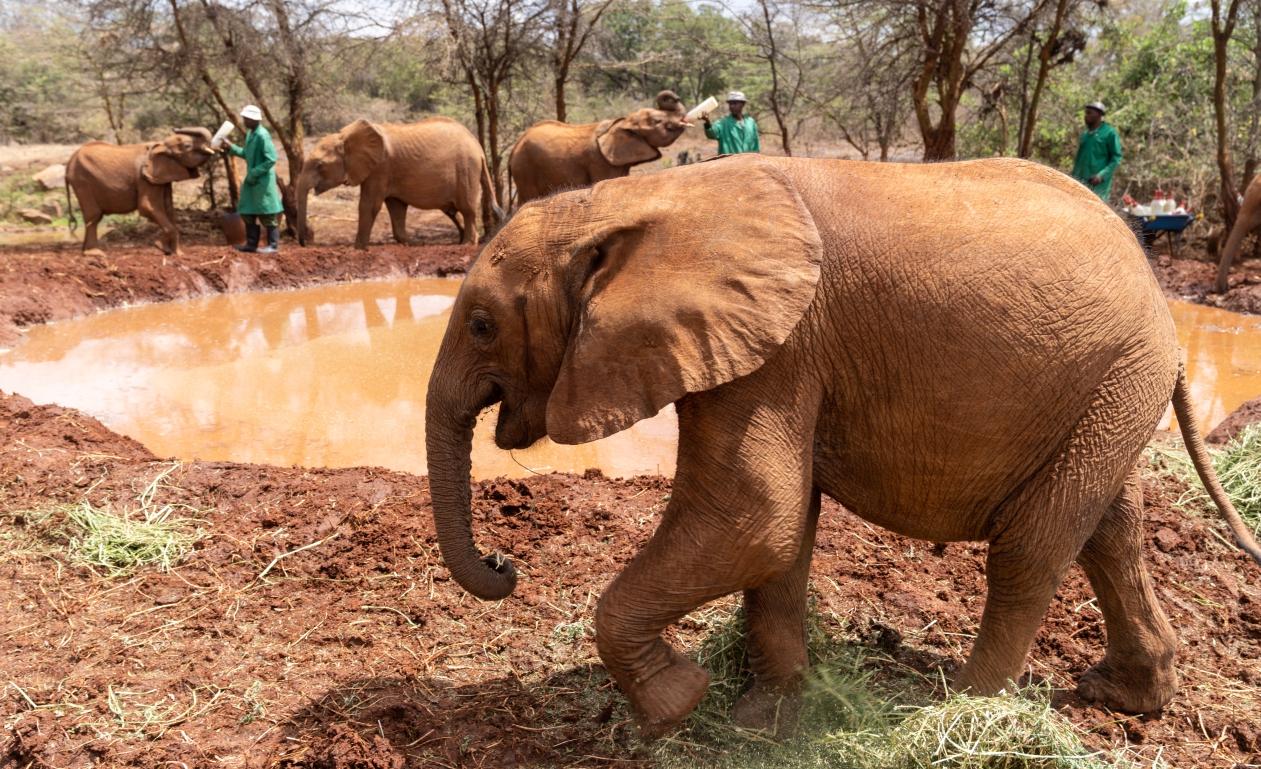
“Our mission is to ensure the survival of elephants and their habitats and to promote the harmonious coexistence of elephants and people.”
For more than 28 years, Elephants Alive has been guided by the principle: To go wherever the elephants lead us. This allows us to be flexible so that our programmes can evolve and adapt organically as elephants have led us across four countries during their travels. With science as our compass and elephants as our guide, we have chartered a new model that benefits both elephants and communities: Offering elephants the security they need, whilst simultaneously diversifying farmers' income and increasing their food security. Our goal is to protect elephants' lives and peoples' livelihoods while we bolster human-elephant coexistence. Our journeys in the footsteps of elephants have not only taught us a lot about elephants, but also about the people whose lives they affect. A key lesson has been that we are stronger, tackling the challenges, together.
Our work is centred around five pillars:
Tracking Project: Tracking collared elephants to understand their large-space requirements: We work where our collared elephants go, crossing local and international boundaries. Over two million location points help us to follow their incredible journeys across southern Africa. Our HQ is based near Hoedspruit, in the Limpopo Province in South Africa.
ID Project: Identifying individual elephants to understand their social behaviour and how this influences
trends in their numbers. Our elephant identification studies are the most continuous and long-term studies in southern Africa.
Big Trees and Plants Project: We help to reduce human-elephant conflict by protecting iconic trees and we propagate unpalatable elephant crops to protect farmers' food crops.
Bee Project: We use bees to protect large trees and farmland. Bees assist with pollination and produce our delicious honey.
Community and Gogo Project: We build relationships with communities living adjacent to protected areas. By showing compassion towards wildlife, we touch people's hearts and minds and promote tolerance between people and elephants.
These five pillars come together in our Corridor Project, which serves as a practical template for communitydriven, effective and adaptable solutions to humanelephant conflict in rural areas. To support our work, scan the QR Code to the right: elephantsalive.org/donate
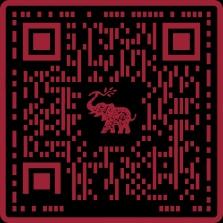
Elephants Alive is a registered non-profit & public benefit organisation. NPO #055-871 / 267-731 | PBO #930073105 | NPC 2020/877724/08
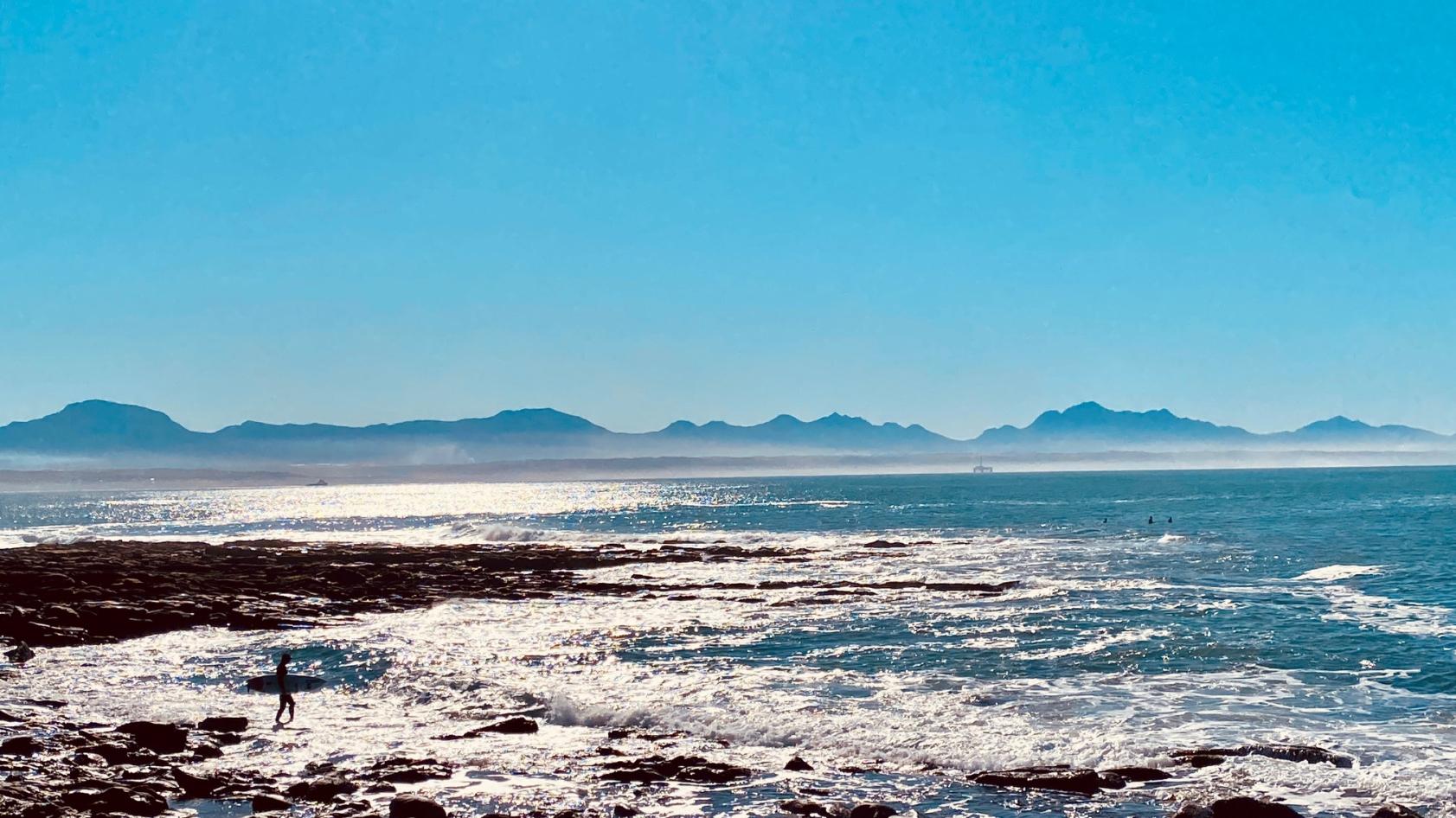 ByJohnLockley
ByJohnLockley
There is chaos in the hearts of man. And our chaos spreads like a virus into the natural world, resulting in species extinction and unimaginable environmental destruction. It's hard to conceive of war on the level of World War One and Two, with millions of deaths and untold destruction. As we witness the recent wars in Gaza and Ukraine, we are all called to ponder the question of 'Why'? And is it necessary to resort to violence in order to be seen and heard? How can we fulfil our role as custodians of this planet and rightful guardians of the plant and animal worlds? It is clear that we need to face our own darkness and explore our inner shadows meticulously and be aware of what we might project onto people we perceive as other or different. In South Africa we have had many lessons around this from the last few hundred years since the start of colonisation, then apartheid and now democratic South Africa.
For those of us who study nature and have learnt to befriend the changing seasons, we know that chaos is part of change and transformation. A thunderstorm brings lightning and rain. The rain nourishes the land and makes new life possible. In order to bring peace to our world we need to befriend our inner weather and ride the storms of shadow energies involving turbulent emotions like anger and resentment. What do we do when these energies seek to overwhelm us? Attack another, ourselves or transmute them into something more productive? Anger is a powerful emotion that can help us transform the living fabric of
society. But to do it effectively requires discernment and respect. First, we need to respect ourselves and not give in to our inner critic and, when we find ourselves in conflict with others, we need also to hold a space in our hearts for respecting them. In martial arts from the Far East like Karate in Japan, opponents begin and end their match with bowing to each other.
I recall a story of Nelson Mandela years ago when he was televised in his meeting with the heads of the Palestinian and Israeli youth leagues. They asked him how he managed to create peace in South Africa. He was very matter of fact and recounted his talks with FW de Klerk in the early years. He said they would start each day shaking one another's hands and having a cup of coffee together. During the course of the day, they would argue with one another and sometimes it would get quite heated. The youth league presidents asked him if he ever felt like giving up. He said, “no”, because he and Mr de Klerk were aware that millions of South Africans were counting on them to find a peaceful solution. It wasn't personal. No matter how difficult their day was they would always say good bye in an amicable and courteous manner.
In order to understand Mandela's diplomacy and humanitarianism we need to explore an important aspect of his journey. Many people might not be aware of Nelson Mandela's personal journey around his struggle with anger and hatred over white rule and lengthy incarceration. He recounts his story in his autobiography A Long Walk to Freedom. He said that, one night before he went to sleep, a voice said to him: “Nelson your anger can kill you.”
And when he woke the next morning he remembered this voice and the next thing he heard was “…you need to befriend the enemy.” These thoughts were going through his mind when the white jailer unlocked his jail cell. All he said to him was: “What made you decide to become a jailer and join the correctional services?” The guard was a young white man and told Mandela he didn't have a choice because his father died when he was only 15 years old and he had to get a job to help support his mother and four younger siblings. This shocked Mandela because he thought all white people were privileged. He realised in their discussion that he grew up with more privilege because, when his father died when he was seven years old, he was brought up in the royal household of the Prince of the Xhosa nation. This enabled him to go to university and become a lawyer. He only knew apartheid when he was 21 years old. He asked the young jailer where he grew up. The man replied that his family had a farm in the Eastern Cape. Mandela was surprised and told him that he too was from the Eastern Cape. He then asked him in isiXhosa if he understood the Xhosa language, and the young jailer replied “ewe, ndiyasaze isiXhosa!” Yes, I know Xhosa. And they finished their conversation in Mandela's home language, isiXhosa. When Mandela became president of South Africa his young jailer friend was sitting next to him as they had become close friends over many years.

and then a young Californian woman said: “What do we do when the devil comes knocking?” Seung Sahn replied in his jovial way: “Ahhh, the devil! Well, ask the devil if he would like a cup of tea.” In life we our constantly fighting and blaming the devil for all of mankind's problems. His answer was a quintessential Zen reply. Respect all of life, including the devil. It doesn't mean we need to side with the devil, but rather take a pause, reflect, bow and listen. This brings to mind a traditional Zen Garden with stones and sand in harmony. Listening within brings about spaciousness. As we meditate on the stones and the sand, we start to befriend the opposites of light and dark within us. Nothing is wholly good or bad, light or dark. It is our reactions that make it so.
I took part in a traditional Zen Buddhist retreat in the early 1990s in a temple in South Korea. The Berlin Wall had just fallen a few years previously, resulting in the end of the cold war. There were many ex-soldiers on my retreat from East Germany, Russia, Czechoslovakia, Poland and myself from South Africa. We all meditated like soldiers with discipline and a hunger to find peace within amidst the trauma of our collective experiences. During the 100 days retreat we became like brothers as we sought to befriend our inner demons and the cold of a Korean winter. I had never seen so much snow before. Sometimes our Zen Master would usher us outside at 10 o'clock at night to sweep the temple grounds before the old people visited the temple in the early hours. One particularly cold night, as the Siberian winds ushered in fresh snow, the Grand Master, Seung Sahn, was giving a dharma talk. He finished his talk with asking us if we had any questions. Everyone was silent
For almost 40 years, people of all religions have come here to experience peace and tranquility. CNN featured the BRC as one of the ten finest meditation centres in the world.
Many people are speaking about the wars in Ukraine and Gaza while the hidden war against animals and nature continues unabated. As humanity fights with one another and with issues of power, powerlessness, wealth and poverty, the natural world is dying. What can individuals do? As a traditional South African healer or sangoma the answer is simple; we need to connect to our own 'Ubuntu' (humanity). This involves befriending our ancestors and our inner demons or conflicts. Ubuntu is a circle and speaks about the importance for all of us to hold hands and embrace our collective humanity. In traditional Xhosa and Zulu culture every human being is seen as being related when you go back far enough. Why? Because we all have red blood and this blood or life force is transferable from person to person regardless of creed, culture or skin colour. We are the natural guardian and custodians of planet earth.
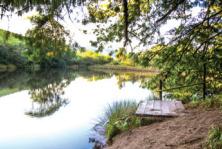
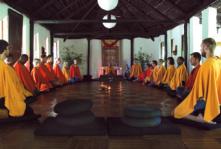
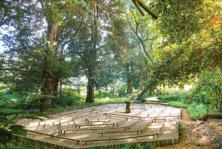


We have an unassailable duty and responsibility to all of life on earth. The animals and plants are counting on us to respect life. And when we look closely at the natural world, we see the teachings of mutual respect and understanding shining back at us. Plants are wonderful teachers and demonstrate unconditional love in their offerings to the world of medicinal plants that spread healing and harmony.
In order to heal our world, we need to look into the past and see how our ancestors dealt with chaos, whether environmental or man-made. We are lucky in Africa still to retain a connection to our distant past. Southern Africa is thought by many anthropologists to be the birthplace of mankind. Our ancient ancestors are thought to be a small band of hunter-gatherers or San Bushmen that inhabited the coastal regions of South Africa. They left their mark with numerous rock art paintings highlighting their incredible spiritual and tracking talents. They are the spiritual ancestors of current sangoma or African shamanic lineages in Southern Africa and represent what is possible when we connect to our spirit through trance dancing, plant medicine and following the tracks of animals in the sand. We are part of nature and, in order to heal our environment and prevent species extinction, we need to learn the language of nature.

I was on a recent 'Dreams and Tracking' retreat in the Kalahari Desert and I was speaking to one of our Bushman trackers about healing and dreams. In my experience as a sangoma I have encountered many people who are not remembering or connecting to their dreams. As we walked through the bush together, hundreds of kilometres away from modernity, I asked him if he could recommend any plants that can help people to remember their dreams and connect to their ancestors. The reason being, sangomas believe that, as people connect to their dreams and ancestors, then they connect to their Ubuntu and balance and harmony are returned to the circle of life. The Bushman tracker walked past a shrub, stopped and broke a piece off and placed it in his mouth. He then smiled in a gentle way and told me about this plant. He said that this particular medicinal plant was very powerful because it could heal conflict in the community. If people are struggling with one another in the community, they bite a piece off and spit it on the ground between them. This will help reduce the conflict and spread harmony. At this time the Ukraine war had just started thousands of kilometres away. The bees were going about their business pollinating flowers and an interesting flock of birds was gravitating around a nearby bush speaking in the language of nature that we were trying to understand.
One of the Bushman elders started to speak in an animated way with the young tracker and they were pointing at me. The elder then approached me and asked me if he could participate in my 'shrine tent activities'. He
had heard about this white sangoma and wanted to see what I do. I was overjoyed and said: “Yes of course, join anytime.” Every year on my Kalahari retreats I create a shrine tent for seven days in the bush. It is a place where I teach people 'inner tracking skills'; in particular how to connect to ancestors, dreams and ubuntu, the circle of life. The next day the Bushman elder called Qhuikhao Qoma joined our shrine tent with about 10 or more of his family/community members. I beat my sangoma drum and we danced and sang together. I explained how I teach people how to pray in the sangoma way and then we all prayed together. It was a beautiful blend of different languages and cultures. The birds took a flight closer to see what was going on. The Bushman band said that people visit them from all over the world but never tell them about their lives only asking many questions about them and how they live. They said they were curious about modern people and how they experienced life. I thanked them for their comment and then we went around the room and each retreat participant gave their name and where they came from in the world. People listened to one another. We then spoke about what was happening in the world and one of the Bushman ladies said the biggest problem she has noticed is that people are becoming selfish, they don't want to share. We compensated for this by listening more deeply and bridging our ancient and modern worlds.
At the end of our ceremony in the bush I offered Qhuikhao Qoma one of my sangoma fabrics which I draped over his shoulders. At the same time, I noticed a vulture flying towards us, low - almost touching the trees - and then flying over our heads. This was a wonderful sign, as vultures often represent transformation. Sangomas view them as powerful healers, with the ability to transform poison and negativity. This was a realisation of a vision I had for many years, of ancient and modern people sitting around a fire revisioning our humanity.
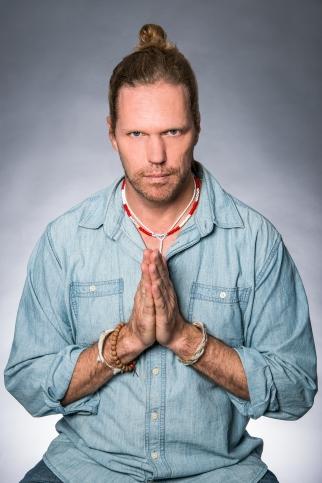
John Lockley is a traditionally trained sangoma in the Xhosa and Swazi lineages. He apprenticed for 10 years under MaMngwevu, a Xhosa sangoma in the Eastern Cape. He has pioneered the bridge between modern western psychology and traditional South African spirituality. His Xhosa name given by his teacher is 'Ucingolweendaba' meaning 'the messenger' or 'bridge between people'. For the last 13 years he has been facilitating 'Ubuntu' (humanity) and 'Way of the Leopard' retreats worldwide, teaching people how they can reconnect to their ancestors, spirit and the earth. John's passion is teaching people indigenous African medicine to help them reconnect to the earth. He facilitates this through his 'Dreams and Tracking' retreats in the Kalahari Desert every year and his retreats at the
Buddhist Retreat Centre (BRC) in Ixopo, KwaZulu-Natal, South Africa. John's bestselling book Leopard Warrior and audio teaching course 'Way of the Leopard' are both produced by Sounds True and available in leading bookstores, Amazon and Kindle. You can also get it directly via John's website: https://www.johnlockley.com/press.
John is a public speaker and is often requested to speak on international podcasts with a focus on African and spiritual themes like Ubuntu and our relationship with the environment. John can be contacted via his website for speaking engagements.
John will be leading another series of retreats in the Kalahari Desert in 2024 followed by 'Leopard Warrior Trails' in May in South Africa. He will also be running an intensive three day Ubuntu retreat at the BRC from 26th –29th April 2024. Visit John's website for more information, or to sign up for his newsletter: https://www.johnlockley.com.
Friday 26thMonday 29th April 2024
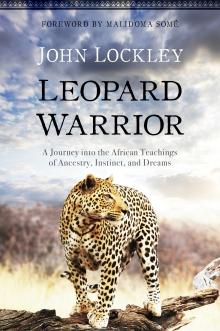
To purchase John's book, Leopard Warrior visit: www.johnlockley.com
Experience a traditional South African healing ceremony over three days during which you will learn to connect to your Ancestors (bones), Dreams, 'Umoya' (spirit) and one another. The ceremony will involve a plant cleanse, using medicinal plants to cleanse the spirit and open the heart. Included will be an in-depth discussion on 'African cosmology' and the understanding of ancestors, plant medicine and dreaming. Retreatants will learn one of the most ancient and misunderstood cultures in South Africa today - the sangoma medicine people, the monks and nuns of Southern Africa. The retreat will focus on educating people about South African traditional spirituality and also lead participants on a spiritual journey to rediscover their own 'soul' or what is termed 'umoya' in Xhosa/ Zulu culture.
Cost: 3 days accommodation at the BRC plus a R600 surcharge

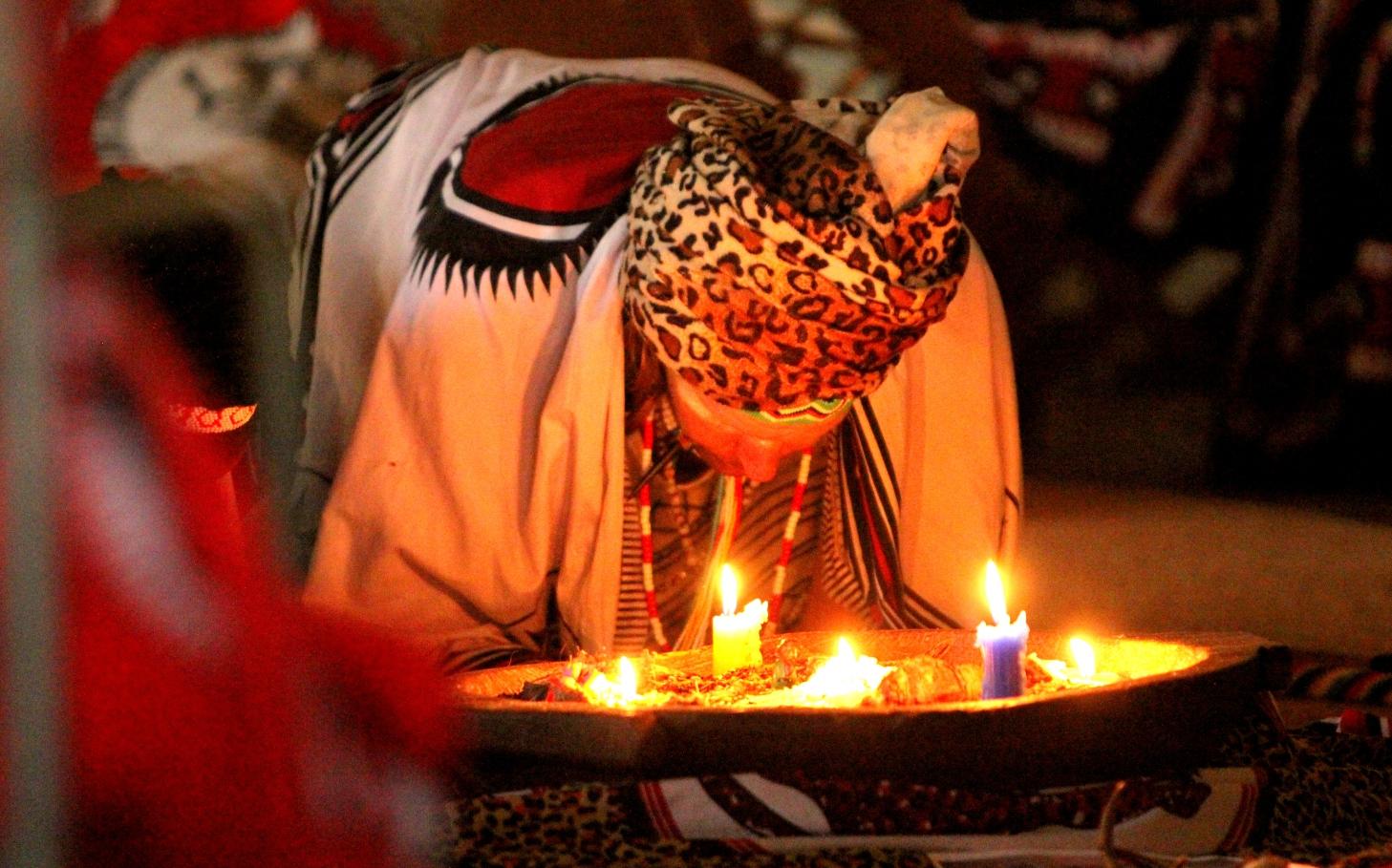
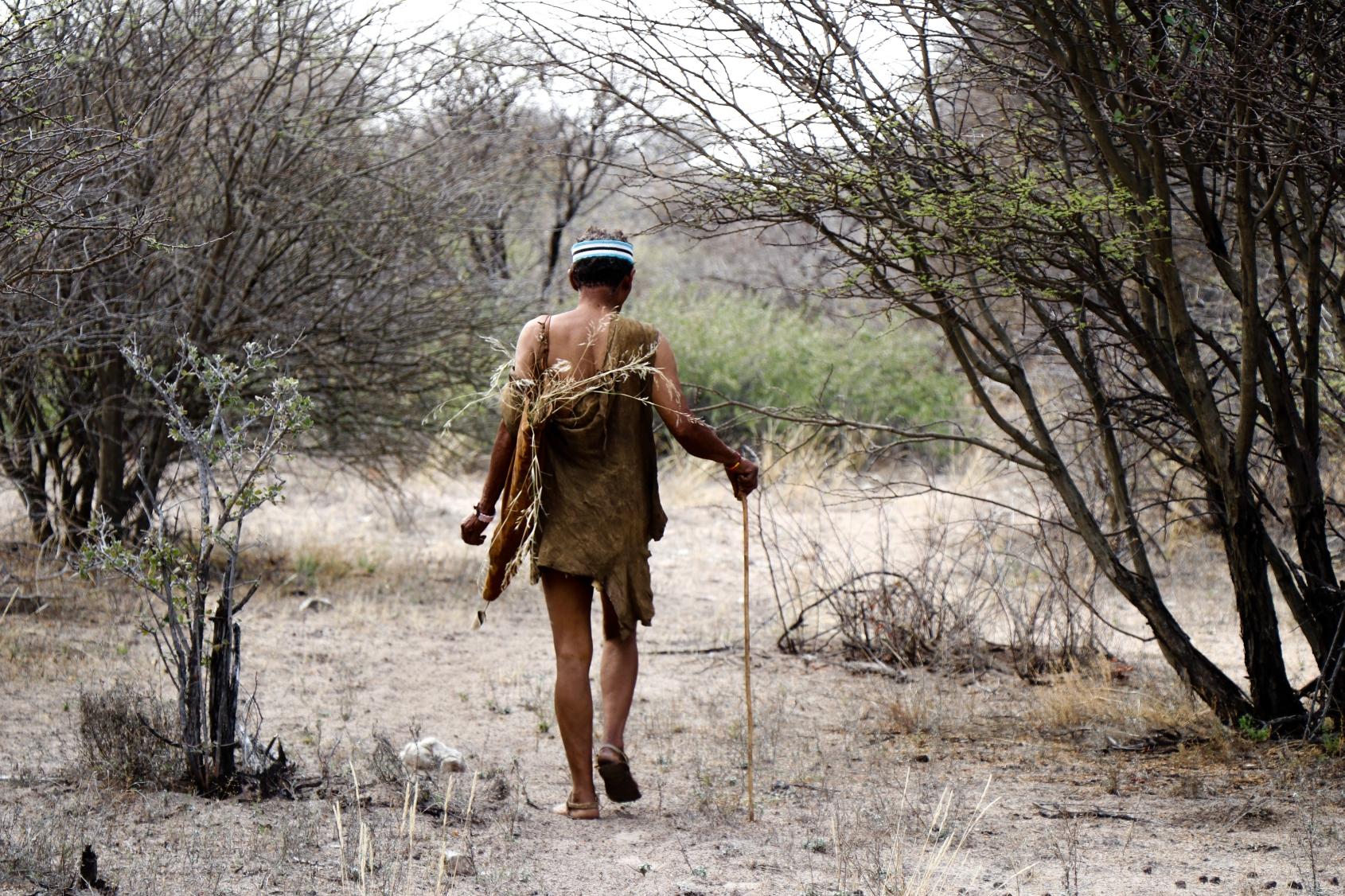
WhenIestablished'GetRealAfrica'walkingsafarislittledidIknowthatthiswouldultimately bringmeintocontactwiththeclosestdescendantsoftheEarth's'FirstPeople',Africa's Bushmen.Thesafariventurewasestablishedinanattempttoprovidemorepeoplewithan opportunitytoconnectwithnatureandtodrawattentiontotheplightofAfrica'swildlifeand wildplaces.Inanattempttoprovidethebestpossibleexperience,Ibeganresearchingthe possibilityoffindingtheultimatenatureguides,Bushmen.
Bushmen is a name the last remaining hunter gatherer people of Botswana prefer to be called.
To find suitable Bushmen proved to be a difficult task as most have been removed from the lands in which they once roamed free and now have little or no opportunity to maintain their hunter gatherer culture. As a result, they are a culture in transition and facing cultural genocide. I was however fortunate in being able to locate some of the last remaining 'authentic' Bushmen, not just men, but a full clan, complete with men, women and children. Subsequently time spent with this group in their natural environment stirred something within me. The energy which I became exposed to, charged with joy, laughter, smoke, warmth and love, suggests that this is what humanity is supposed to be like.
A similar sense of human kindness, compassion and mutual trust I have sensed in other deep rural communities, but not to the extent experienced in the presence of the Bushmen. This proved to be life-changing for me and resulted in my focus shifting from the provision of walking safaris to Bushmen cultural experiences.
As a result of my initial Bushmen interactions many questions
arose, for example:
How is it possible for people who have nothing (according to modern beliefs) to be so happy?
How have these humans managed to survive, even thrive, for tens of thousands of years without destroying their environment?
Could answers to these questions perhaps provide modern humans with solutions to the many existential threats we face today?
For those who are 'aware', it should not be necessary to explain what these existential threats are; they include and go way beyond just climate change. Suffice to say that leading Earth scientists warn that life on Earth is facing mass extinction and that the reason for this is human behaviour, described as anthropocentric (human centred).
In trying to find answers to the above questions, particularly regarding how the Bushmen managed to avoid destructive anthropocentric behaviour, I have become a student of the beliefs and philosophies of the 'First People' and have tried to compare these with those of humans today.
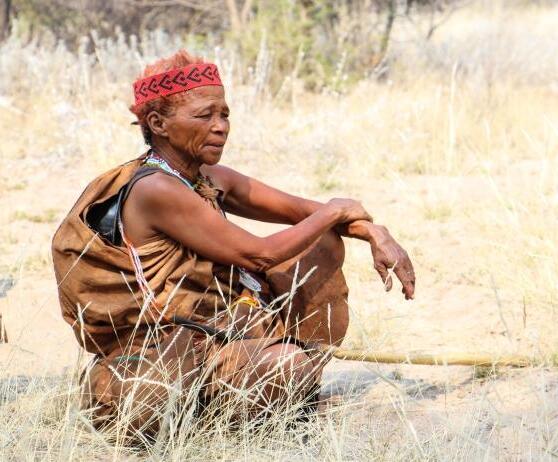
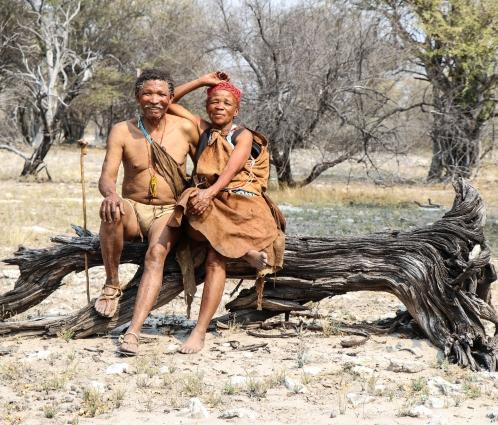
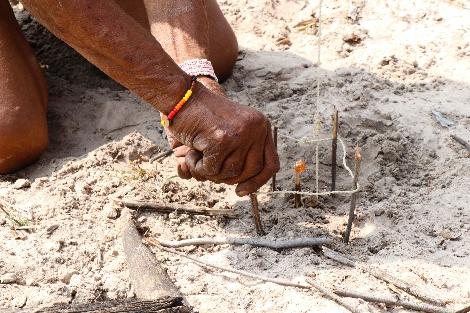
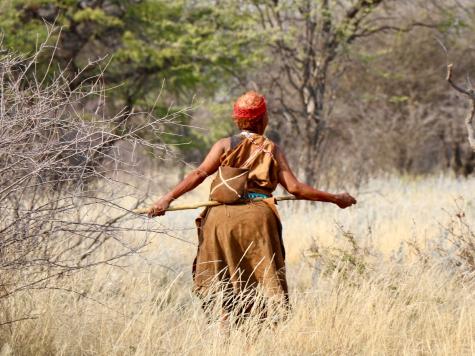

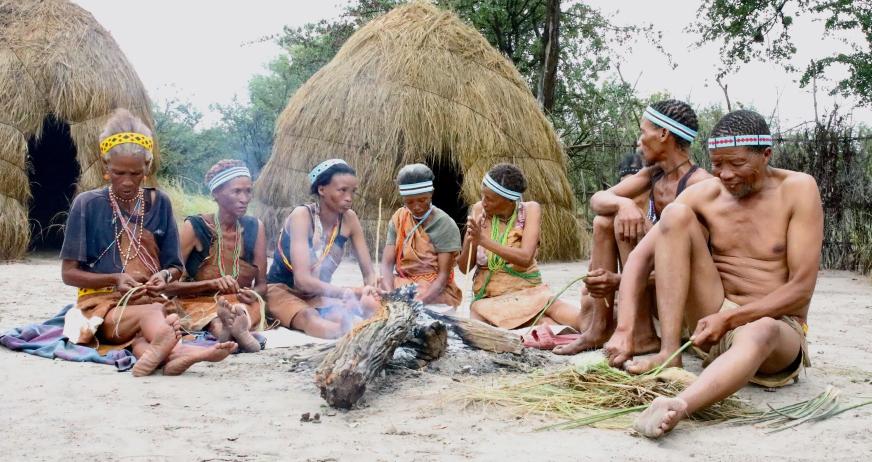
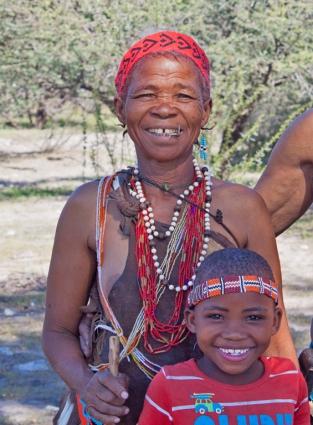


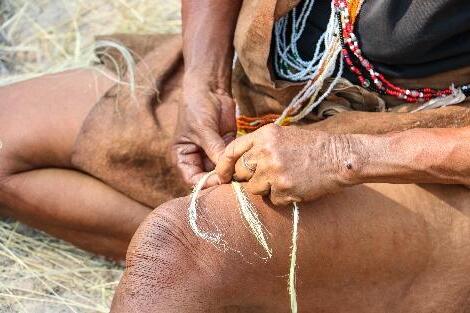
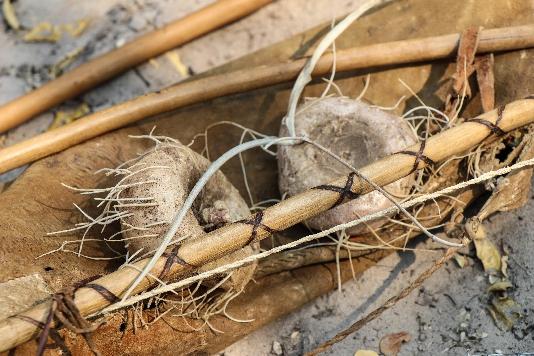

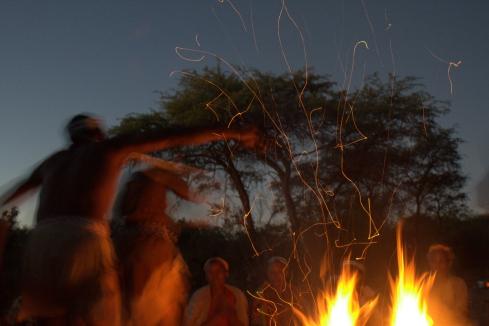
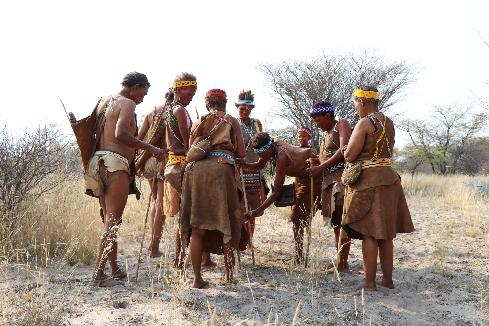
In this regard I have been fortunate as there is probably no better opportunity to learn about the beliefs of first humans than from the likes of some the few remaining elderly Bushmen from the Central Kalahari region of Botswana who provide a window into human history. This because they grew up with grandparents who had lived in a time and place shut off from the modern world until less than a century ago. The 'Kalahari time warp' is as a result of its harsh climate and absence of surface water, which made the region largely uninhabitable, except by Bushmen. Survival in such conditions earns these Bushmen the right to be called 'masters of human survival'. To understand how they survived I have tried to understand their secrets to happiness and wellbeing.
Contrary to today's understanding of happiness, the Bushmen seem to consider happiness as 'a human default setting', that is, something which already exists within us at any present moment. As such they focused on maintaining happiness rather than searching for happiness. Their culture thus developed around ways to avoid those things which caused unhappiness.
It was basically believed that human happiness was dependent upon maintaining satisfying emotional relationships with other humans, which meant avoiding those things which cause unhappiness.
To achieve this, they did all that was possible to avoid inequality, jealousy, superiority/inferiority, greed, aggression and egotistical behaviour. These beliefs translated into a culture which incorporated the following practices:
Egalitarianism, by which they believed that all people were different but equal. They respected individuality but avoided individualism.
A culture of sharing and absence of ownership as unequal 'accumulations' would lead to jealousy; A necessities only policy, which ensured that consumption of any resource was limited to needs only and not wants. This served to protect their environment.
Suppression of ego, as an unmanaged ego was considered a grave threat to community survival and wellbeing. As a result, they adopted cultural practices which suppressed ego. Khwemkjima'a (man-not-is/inhuman) was a description given to an individual with uncontrolled ego.
Community wellbeing was considered of paramount importance and to serve community, a life-purpose. It was believed that a community can survive without an individual, but that no individual can survive without community. Community support was considered essential for the physical and emotional wellbeing of individuals.
Competition was avoided as they believed it created individualism, inflated egos and split communities.
Love was considered all-important for human survival and an integral part of the life force, which they called N/Lom and which connected all life. They believed that all life forms were interconnected and interdependent. Absence of love was considered evil.
The fundamental belief was that humans were spiritual beings
and that the body was merely the 'shadow' of the spirit and that to heal the body required the healing of the spirit.
In reading the above it should become immediately evident that our modern beliefs and cultural practices differ substantially.
In today's world:
Egalitarianism has been replaced by hierarchical, or patriarchal structures and inequality threatens global social stability.
Happiness is considered something we seek, something external and future-related, for an example, a destination or event, or something that can be bought. Happiness has also become confused with pleasure.
Sharing has been replaced by ownership, resulting in unequal accumulations of material possessions, resulting in jealousy and envy.
The 'necessities only' policy has been replaced by a global economic system which relies on ever-increasing consumerism for its survival.
Suppression of ego has been replaced by inflation of egos and the exploitation thereof.
'Community' has given way to individualism achieved through competition, praise and hero-worshipping. 'We', 'us' and 'ours' have been replaced by 'I', 'me' and 'mine'. This has resulted in the collapse of community and even the family unit. Loss of a 'sense of belonging' has resulted in an increase in the 'disease of loneliness', a mental illness.
'Love' has been replaced by 'fear' as the dominant force in society.
Today we believe that we are physical beings living in a material world separate from nature.
These cultural differences resulted in some Bushmen describing modern humans as 'the people who walk on their heads', a polite way of saying 'insane'.
A combination of modern beliefs has become manifest in today's perception of what success means. Whilst our ancestors considered success to mean the survival and wellbeing of the community and the environment, today success is mostly attributed to the individual, with material wealth and personal status being the measures used. This altered perception has contributed towards the dysfunctional self-centred human behaviour we are witnessing today.
In trying to understand how these cultural changes came about and the resulting destruction of our natural world, the following statement comes to mind:
“The most important habitat for all God's creatures is the human mind.”
This statement inspired me to learn more about the human mind and the possible differences between the Bushmen psychological mind and that of modern humans, even though there is no biological difference. Biologists tell us that approximately 200 000 years ago, humans began acquiring cognitive functionality due to changes in the nervous system, which resulted in the development of the frontal cortex of the brain.
Prior to this, human behaviour, like that of all other mammals, was based on instinct or intuition. Acquiring cognitive functionality meant that humans acquired the ability to think.
With the ability to 'think' also came the birth of ego, which can be described as the 'thinking self' or, more aptly, 'the illusion of self'.
Knowing the above helps us to compare Bushmen behaviour with that of modern humans.
It is evident that, whilst the Bushmen also acquired the option of listening to the 'thinking' mind, they endeavoured to continue listening to their instincts and maintaining their spiritual connection to Universal Intelligence.
The Bushmen claim that any wisdom they have is not their own and that their survival and wellbeing was dependent on guidance from ‘the voice with no words’ passed on through their ancestors and visions.
By contrast, modern humans have focused on intellectual growth forsaking spiritual connectivity. Whether this process can be considered natural or orchestrated is for a separate conversation but the reality is that the 'thinking mind' is easily programmed, making it possible for modern humans to become disconnected from the Truth and to live an illusion.
Modern man has become disconnected; from community, from the inner self and from the ineffable Truth, which exists in nature.
The dysfunctional human behaviour we witness today can be considered a result of thinking which is not in sync with the natural frequencies of the universe. This has allowed humans to behave like gingerbread men who believe that they can teach their baker.
In contrast, the Bushmen commitment to remain spiritually connected to the Universal Truth is illustrated by a ritual which they performed on a regular basis and which in essence encapsulates their cultural beliefs and behaviour.
The healing dance, like other dances, is performed around fire, and as the dancers circle the fire, their clapping, singing and shaking of their ankle bracelets serves to activate their Num (spiritual energy) to an elevated state, enabling transcendence into raised levels of awareness. Whilst in this elevated state of consciousness, they pray for holistic and preventative healing. This includes the physical, psychological and spiritual healing of each clan member, as well as the wellbeing of their community and the natural world.
Such direct connection to the ineffable Truth has largely
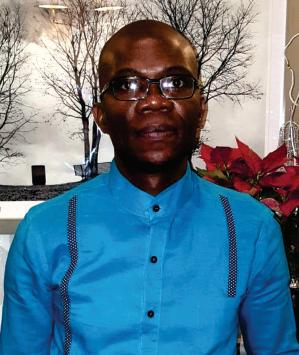
been lost in the belief that we live in a physical world. Latest science however is now providing evidence that the beliefs of first humans are well founded. A recent quote in the London journal of quantum physics states that 'the Earth is immaterial' and that everything in the universe consists of energy and vibrations.
As we become increasingly aware of the impact of our dysfunctional human behaviour, we also need to take cognisance of what scientists are also beginning to say, which is that; “It is unlikely that there can be intellectual or technological solutions to our existential threats without cultural and spiritual transformation.”
The good news is the evidence provided by the Bushmen, which is that we are not born anthropocentric, it is a choice.
Also, if the Bushmen are correct in believing that 'God did not make mistakes', perhaps humans can once again reconnect by learning to dance to the rhythm of the universe and thereby discover our true purpose?
Clive Horlock spent a number of years teaching science before entering the private sector. This was followed by a stint in the corporate sector as general manager of South Africa's first rural solar energy company
However, throughout this time his passion remained Africa's wildlife and wild places. This led him to establish a walking safari venture called 'Get Real Africa' which brought him into contact with a Bushmen clan in Botswana, an experience which had a profound effect on his life journey
Although he does not consider himself a Bushmen expert, the 'teacher' in him believes that what the Bushmen have taught him needs to be shared.

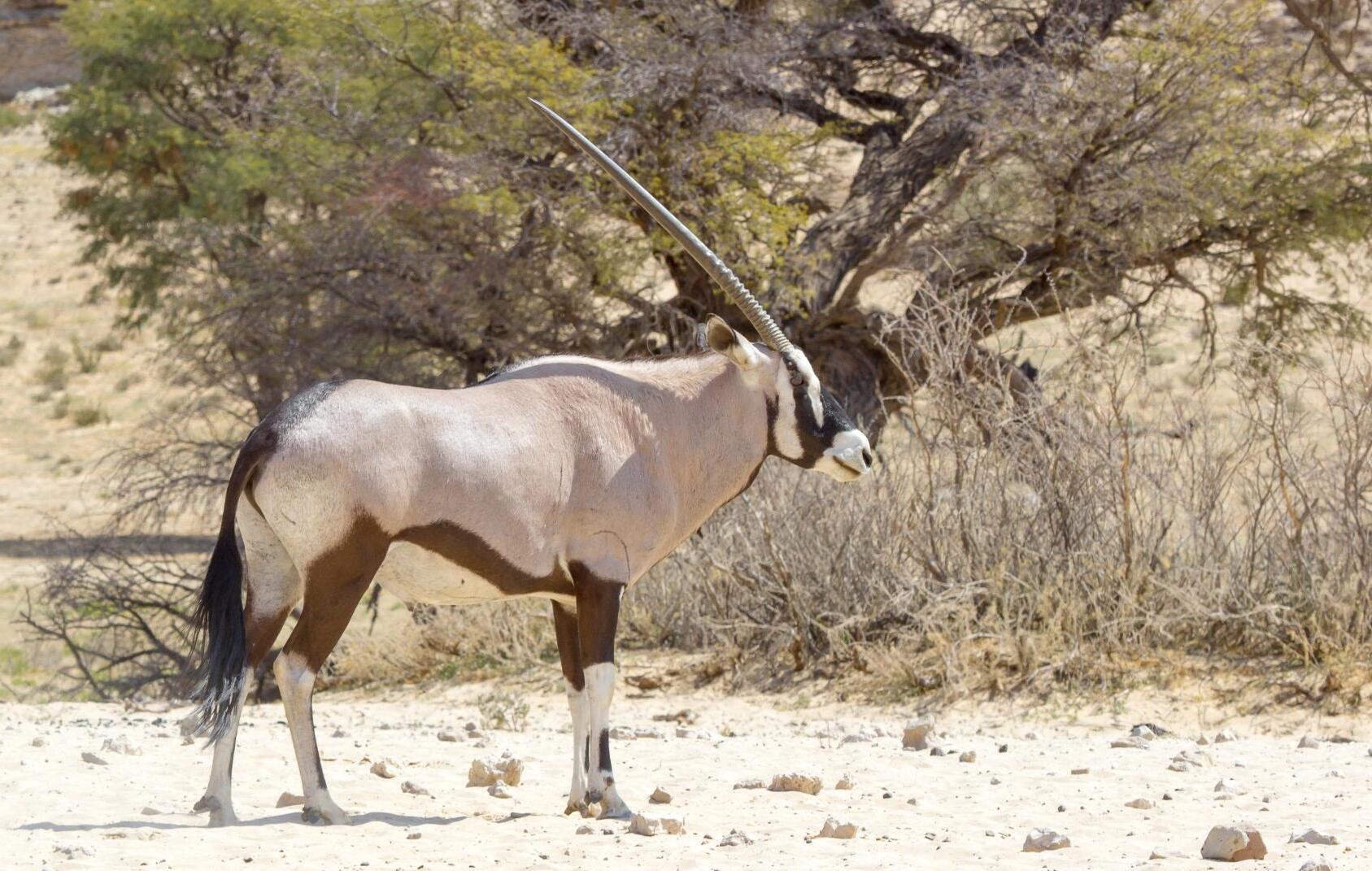
DE TUIN was a large Baster (Bastaard) settlement in the Northern Cape, which existed between 1863 and 1868. The story is told in a little more detail in the introduction to the Rehoboth Baster State in the next chapter of the book Dreams & Dust (link on page 84). Suffice to say here that in 1864, a group of Basters left De Tuin and trekked with their leader Dirk Vilander to settle in 1865 an area that now spans the borders of Namibia and South Africa and lies immediately south of the present Kgalagadi Transfrontier Park – which itself spans another international border and combines the adjoining Kalahari Gemsbok National Park in South Africa and the Gemsbok National Park in Botswana.
It's a very dry area and the Vilander Basters found a water source near Rietfontein. Here they established a selfgoverning state that had a land area of 12 000 square km, called Mier-Rietfountein.
There are three stories as to how Mier-Rietfontein got its name – take your pick of which sounds the most credible. One says that, in missionary accounts of the place, they made reference to 'mere' – lakes – that fed a group of springs. Another recounts that that ants – miere in Afrikaaans – bringing damp soil to the surface alerted the
Basters to underground water here. The third involves Dirk Vilander himself, who came across an antbear hole that had water in it and noticed that there were many ants scattered on the surface of this water. At first, the Basters named the place 'Hâs', which, in the Griqua language, means womb – this, I suppose, for the desert's life force, water, coming from within the earth. (Today the vlei has dried up and the fontein is just a hole of muddy water. But the underground aquifer remains not far beneath the surface here.)
Like all Baster migrations, this one imposed on alreadyclaimed territory; in this case by groups of Nama and San (Bushman) people. A brief war with the Nama was won by the Vilander Basters. It's interesting that today, possibly the only surviving intact San (Bushman) group in South Africa, the ‡Khomani, are still living in this area. Under the leadership of their patriarch Regopstan Kuiper, they won a land claim in 1999 and have since been afforded traditional hunting rights in part of the Kalahari Gemsbok National Park, which was proclaimed in 1931 –and some work there as trekkers and guides. At the handing-over ceremony in 2002, (then Deputy) President Thabo Mbeki said: “This land claim will, I am sure, stand out among all land claims.
It stands out because this land claim is about the re-birth of a people. When we say: 'Here is your land, have it,' we say too that you must reclaim a proud history and rebuild a rich culture. This land is space to rebuild a community.”
The ‡Khomani land was named the !Ae!Hai Heritage Park. The settlement agreement also included money for building a tourism facility – the !Xaus Lodge (meaning 'heart'), which is now managed on behalf of the ‡Khomani San and Mier communities by Transfrontier Parks Destinations. And, building on its remote location, the !Ae!Hai Heritage park has been named the first International Dark Sky Sanctuary in Africa by the International Dark Sky Association.
Vilander's descendants, known today as the Mier community, lodged a land claim too and this was settled at the same time as that of the ‡Khomani.
Back to Mier-Rietfontein in 1865. On settling there, Vilander's people immediately drew up a constitution. They did not have an accompanying Christian missionary. They were joined by one from the Rhenish Mission Society, a Reverend Pabst, in 1885; but it was not until 1889 that their governing council passed a resolution to raise funds to build a church by selling land. Vilander's council was different to that of the Rehoboth community, in that they later turned to be in favour of individual land-ownership, with the right to sell land to nonburghers, if they were Basters. The tiny republic's citizenry consisted of only 45 Baster families listed in an 1885 census. Rietfontein was much smaller and the total population could not have been more than 500 in 1885.
Always aware of incursions into land they had claimed, the Basters' rules emphasised the prohibition of selling of land to white people and guarding the new state against Nama reprisals and a possible Boer invasion. The constitution also made mention of a precious commodity of the state – salt – and how to capitalise on this. Written in Cape Dutch, the 28-page document made provision for a Volksraad to be 'half-elected' every three years. By way of explanation: the Volksraad was to be made up of 12 members, but only six as elected representatives. The remaining six, presumably, there by the grace of the kaptein – who was Dirk Vilander until 1887, then succeeded by his son David until 1902.
The straight-line boundary drawn in 1885 along the 20th degree of east longitude between South West Africa and British Bechuanaland, sliced neatly through MierRietfontein. In her 2008 thesis Land, Water, Truth and Love – Visions of Identity and Land Access from Bain's Bushmen
to ‡Khomani San, Marcia Schenk writes: “Borders… possessed at first almost no significance. They began to assume meaning as a political instrument, through being crossed strategically for protection during local uprisings, as well as through redistribution of territory as the terrain of the Baster in the area was cut in half.”
The Rietfontein Basters came to an agreement with the ‡Khomani San. They hunted together, using the ‡Khomani's trained dogs. They taught the San how to use guns. The San supplied the Basters with pelts, in return for pinches of tobacco and some of the meat. But, says Schenk, “The use of firearms did not serve to empower the San but to underscore their interdependence with the Baster.” The Basters made money from the deal; the San did not.
Dirk Vilander died in August 1888. “He might not have been recognised by the British colony,” Schenk writes, “but his legacy as a 'Bushmen Chief ' is alive in the memory of ‡Khomani elders.
This excerpt from Dreams and Dust by author Alex Stone is published with the permission of the publisher Footprint Press REF: ISBN: 978-1-99895084-3
This excerpt from Dreams and Dust highlights a Baster Migration in 1865 and settlement an area that now spans the borders of Namibia and South Africa and lies immediately south of the present Kgalagadi Transfrontier Park.
Author Alex Stone writes “Like all Baster migrations, this one imposed on already-claimed territory; in this case by groups of Nama and San (Bushman) people.”
In the previous article 'Ancient Wisdom for a Modern World' by Clive Horlock he shares with us that establishing 'Get Real Africa' walking safaris resulted in him ultimately connecting in a meaningful way with people whom he describes as “the closest descendants of the Earth's 'First People', Africa's Bushmen”
In Dreams and Dust author Alex Stone shares , “It's interesting that today, possibly the only surviving intact San (Bushman) group in South Africa, the ‡Khomani, are still living in this area. Under the leadership of their patriarch Regopstan Kuiper, they won a land claim in 1999 and have since been afforded traditional hunting rights in part of the Kalahari Gemsbok National Park, which was proclaimed in 1931.” Ed.
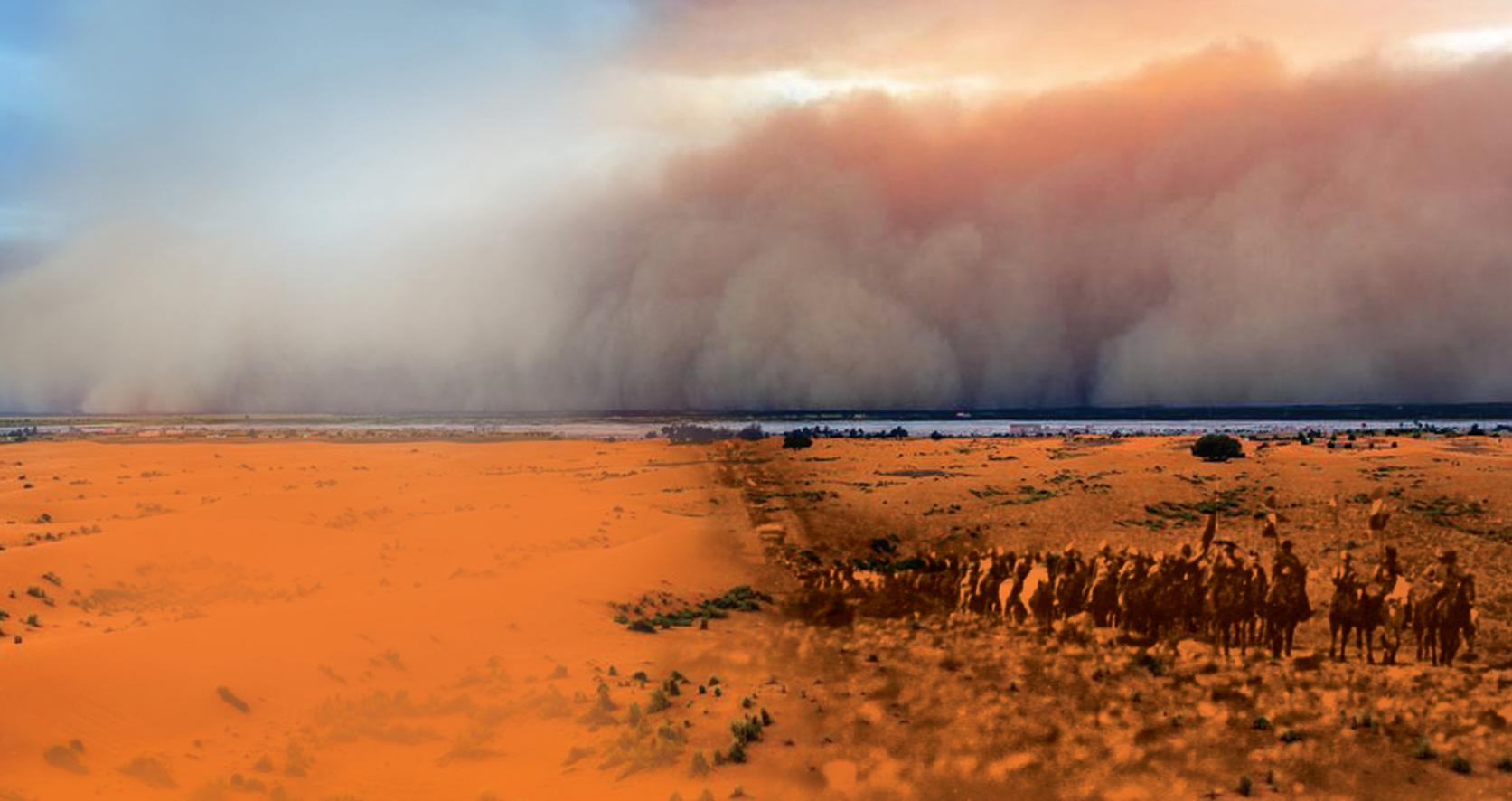
A rash of republican dreams spread across the face of South Africa in the centuries. Here you'll discover the barely-believable and little-known sagas of 58 African, Boer, Griqua and multinational republics (and one imperial pimple) with only one thing in common – they never lasted long. Except for one. Maybe two. Then there are the equally-fascinating additional 20 fictional states. Azania, Bapetikosweti, Fook, Wakanda, Zuidland – and the rest.
They all have compelling stories. They all have contributed to the messed-up map of this complicated country. They all have something to teach us

The recently released Dreams & Dust by author Alex Stone, an artist, inventor, poet, sailor, sculptor and writer based on Te Motu Ara-i-roa Waiheke Island, 12 nautical miles into the morning sun from Tāmaki Makaurau Auckland in Aotearoa New Zealand. He has lived exactly half his life in South Africa and in Aotearoa New Zealand. His first language was isiBhaca; his sixth language is te reo Māori. For his creative writing Stone has either won, been runner-up or short-listed in nine New Zealand literary awards and one international award. This book is 629 pages and includes many arresting images and 69 seldom-seen historical maps. To connect with Alex Stone www.alexstonethinkingstrings.com
Praise for Dreams & Dust : “I can't think of anything remotely comparable to this in South African historico-


literary works – in subject conception and in its approach to subject matter, it really is a unique volume, fresh and strikingly idiosyncratic in its handling of subject matter. [Alex] Stone is a highly accomplished writer, with a prose fluency, an eye for freakish detail and an ability to compress things which mark him out as a gifted stylist. His Dreams & Dust introduction is the best hook I've experienced in a long time – it tells you what to expect, makes what that is look tantalising and reels you in. This is imaginative historical writing with a light and lively touch, while not dodging topics that are emotive and powerful.”
Bill Nasson, Emeritus Professor of History, Stellenbosch University and Fellow of the Stellenbosch Institute of Advanced Study
Published by Footprint Press Dreams & Dust by author Alex Stone is now available at leading bookstores. ISBN: 978-1-998950-84-3 RRP: R450
Odyssey Magazine is giving away three books. Website link: https://odysseymagazine.co.za/ community/ #competitions-giveaways or scan the QR code. Click on the title of the book. Closing Date 18 February 2024
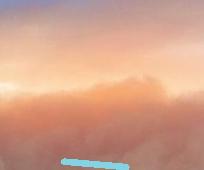
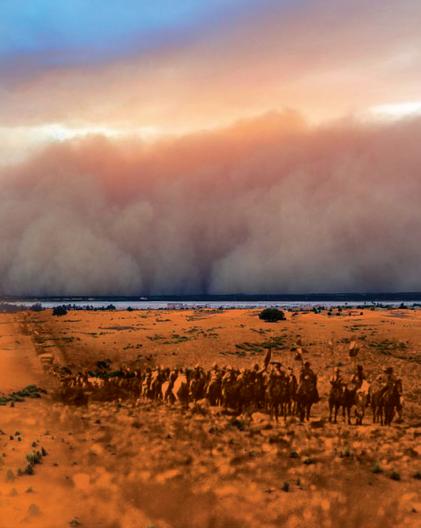

#weloveitwhenyoubuylocal
Holistic Healer Teacher
Reiki and Karuna Ki Master hypnotherapy, counselling, chakra specialist, Nico Redelinghuys Indigo Spirit Academy nico@nicoredelinghuys.com www.nicoredelinghuys.com
Energy Healer Teacher
Angels Touch Randburg Western and Eastern styled Reiki crystal healing, colour therapy, psychic development and tarot courses. angela@angels-touch.co.za www.angels-touch.co.za
Cape
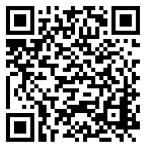
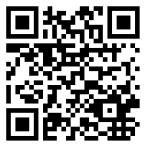
Energy Healing National
Bringing in healing frequencies that heal body, mind, emotions and spirit. Energy healing workshops in Port Elizabeth, Eastern Cape. SMS 0788457562 WApp 0605896239 leemorgutti1@gmail.com
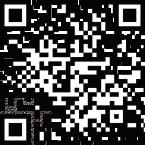
Do you feel anxious, disconnected and unseen? Experience online EFT Tapping (acupuncture without needles) with Nuccia, a registered EFT practitioner.

nucciarosso@hostingservices.co.za 0726796698
Body Mind Spirit Quartely Retreats First one: Early 2024
Study the science of consciousness. Introductory monthly Saturday classes Starting Jan 2024 until Nov 2024. In-Person, Faerie Glen and Zoom online 8am - 1pm (UTC+2) Fun, Interactive, Mind Clearing, Meditative, Relaxing & Some More
Vedanta Course with Lucua Gauteng vedantalucua@gmail.com
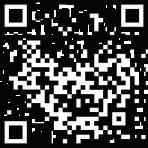

Panu Chetty 0749510949 panulovesgod@gmail.com


Shades of Summer Boutique Hotel, Hennops River, Centurion. Included All Veg meals & Accommodation.


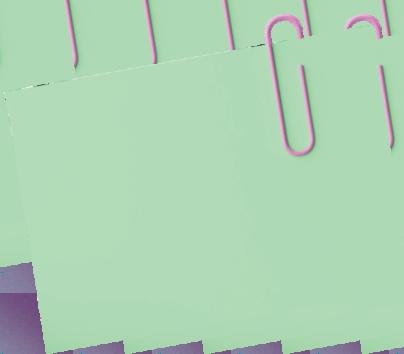

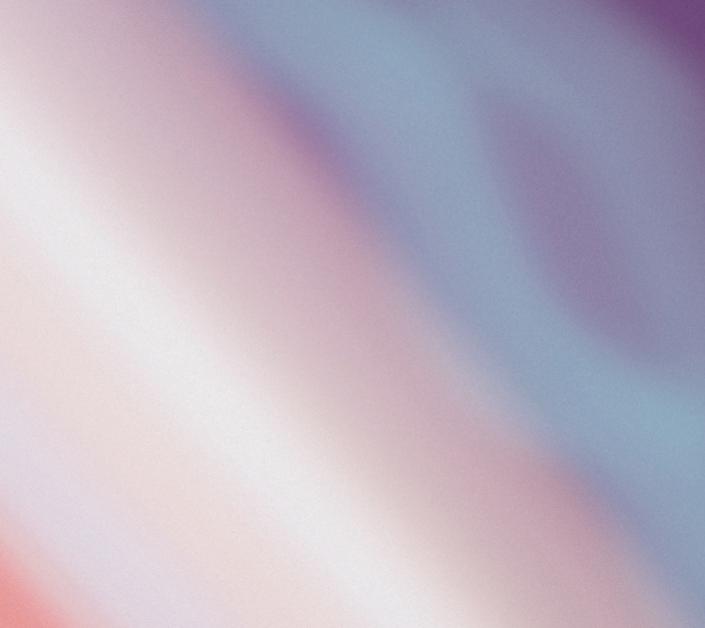

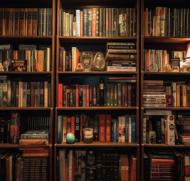

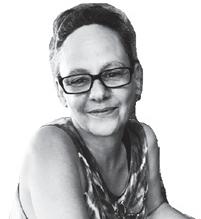
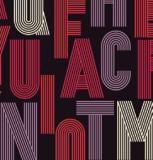

Scotlandhasbeenlurkinginmyperipheralvisionasadestination.Especiallythestanding stoneswithmagicaltransportingpowersthatcanbefoundalloverthismagicalandsacred partoftheworld.
The stone circles are regarded as Druid temples, where they gave homage to nature and practised various rituals. I have been wanting to experience the energy of these standing stones for a long time.
From the 13th century it had become a female practice. These female Druids were referred to as witches as they used natural plant medicine and had the ability of 'seeing'. I was born with the same kind of legacy and I promise there is nothing romantic about it, but it's hugely rewarding.
When I heard about the Isle of Iona, I had this misty feeling of having been there before and a clear knowing I was being called back. When the opportunity arose to teach a PSYCH-K® workshop in Scotland, I knew that the strong pull of Scotland was manifesting itself decisively.
PSYCH-K® is a mindset change model and the workshop incorporates a deep connection with nature. I found a Druid temple about 10 minutes from the venue of the workshop and invited the class to join me on an
extra day to visit the stones, connect with the fairies, magic and to be inspired to connect with nature every day. But alas! The Druid temple farm was closed!
Luckily the river Ness had many beautiful spots for us to meditate, walk barefoot, hug trees and breathe. And, although we missed being among the stones, everybody left with a renewed sense of what it's like to be connected to ourselves and thereby to our beautiful earth.
I could not let the idea of visiting the standing stones rest! I had to try to see and experience some Druid stones! I decided to visit the Cava Cairns before I set out to the Isle of Iona but I had to let the stones go. I would miss the last ferry, which was not an option! To my mind Iona was the most important leg of the journey. Since my early 20s, I have remembered being a nun in various lifetimes, but it was only when I recently heard of Iona, that I had a strong sense of having been a nun on that island as well.
With all my attention on getting to Iona, I did not give much thought about the journey to Oban or the Isle of Mull. It became one of the highlights of this trip!
With every kilometre I drove, something stirred in my heart. The beautiful, lush countryside with endless and very large bodies of water, was breathtaking. Driving next to the whole length of Loch Ness was sublime. I experienced a beautiful, openhearted happiness. Driving out of the ferry onto the Isle of Mull, seeing the mountains and the hills, my timeline shifted. I was transported to 'seeing' myself walking the rolling hills hundreds of years ago. As I saw the grasses blowing in the wind, I wept with happiness.
In that moment, I knew that I came to reclaim a part of my soul on the Isle of Mull. Bagpipes started playing in my head. This land filled me with childlike joy and I felt a forgotten part of me anchoring like a lost puzzle piece.
Iona was a completely different kettle of fish! It was more introspective, quiet. I knew the energy but it was subdued and gentle. All I wanted to do was take my shoes off and walk this land. My whole soul wanted to feel the earth, breathe it through the soles of my feet, absorb and re-connect to something so extremely well known.
There also was a troubling energy on this island that was calling me to say hello. Like greeting an old friend that you know has a sore heart. I knew I had to heal something here for myself. And maybe for others long gone.
The Iona nunnery (now in ruins) was started sometime after the establishment of the nearby Benedictine Monastery in 1203.
As I stood in front of the nunnery, just absorbing what was left of it, I was a bit disappointed. I did not 'feel' much. I sensed that I belonged. But there was an aloofness and it surprised me. Maybe I made a mistake. Maybe it was just my imagination about needing to come here. But I remembered the deep call so clearly. The emotion. The memory.
Staying open and curious, I moved through a doorway and there it was! Recognition. This was my domain, my turf so to speak. My heart opened wide with a deep breath, a sigh. Quietness, my authority here, but still troubling… I knew I would have to come back later. It was almost too soon for me to remember. I walked every room, touched the walls and the stillness settled into my bones.
Back at the nunnery the next day I had more clarity and knew that healing needed to be done for myself, this place, for some of the souls that are still carrying the need for healing. As a nun with authority in this nunnery, I witnessed other nuns being badly treated by a monk
and I still could do nothing to stop it. The patriarchal system of that time did not allow me to do something about it. I realised that even in this lifetime I have always had many feelings of being helpless. I worked so hard at transforming helplessness into powerful action, because of events in this lifetime and I needed to come here to understand how deep those feelings lay, what they were and to forgive myself and others.
So much to forgive. So much to let go. My heartache felt as if it permeated the walls of the nunnery. I was guided to walk along every wall and touch it with my fingertips, healing and releasing all the pain and suffering that was experienced here. Without warning I started singing a melody that I have never heard before. At one point it started to rain slightly and I came upon a wall that had none of the splatterings of rain just yet.
A firm but urgent inner voice told be to stop at a specific spot. As I stood looking at the wall, I noticed a drop of water coming out of a crevice and, oh so slowly, drop like a tear onto another rock. It seemed as if the wall was crying. That moment left me in a holy place of knowing that the 'tear' was a grateful tear. A thankful tear. And I knew that what I came to resolve for myself, had been done.
I am deeply grateful for PSYCH-K® as it empowers everybody to heal past, present and future pain and suffering in a sustainable way. Having these easy protocols at my fingertips has been a saving grace, especially during these days on the Isle of Iona.
Just as I thought that I had given up on the Druid stones, I discovered there was an area on the island that I could visit and, with directions in hand, I set off towards St. Columba beach. Doggedly determined to find the way, I decided to follow another path. It got quite wet and I took off my hiking shoes as it was difficult to walk with them already sopping wet. The bliss of walking without shoes!
All of a sudden, I sank up to my knees in mud. With the next step, I sunk hip deep into a bog! As I was literally lying on my side with my leg in a deep, sucking hole, I could feel the mud closing in on my leg. Fighting to stay calm, I realised that I was so bogged down with the idea of experiencing something that was simply not meant for this trip and that put me in great danger. I truly do not know how I pulled myself out of that deep mud-sucking hole!
A couple of hours later, having got lost in endless bog land, I finally found myself on solid ground. I had thought this would never end. I was alone and, even if I did call for help, nobody would have heard me. Grace was obviously my companion and it was not my time to leave this planet.
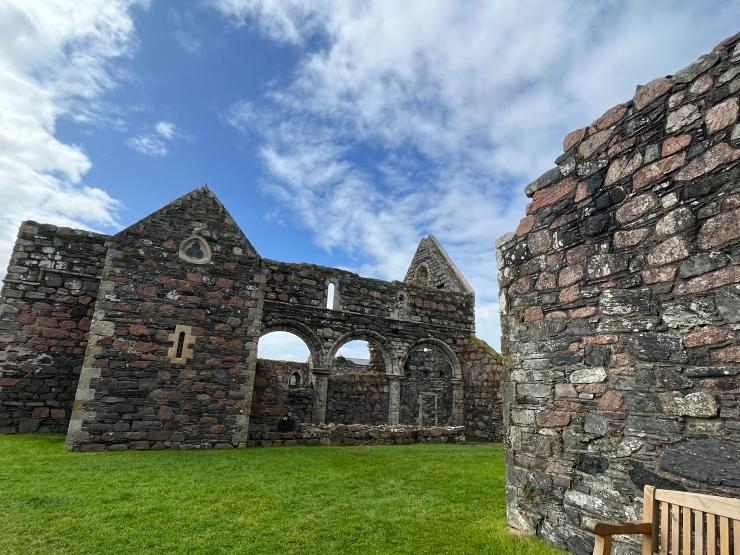



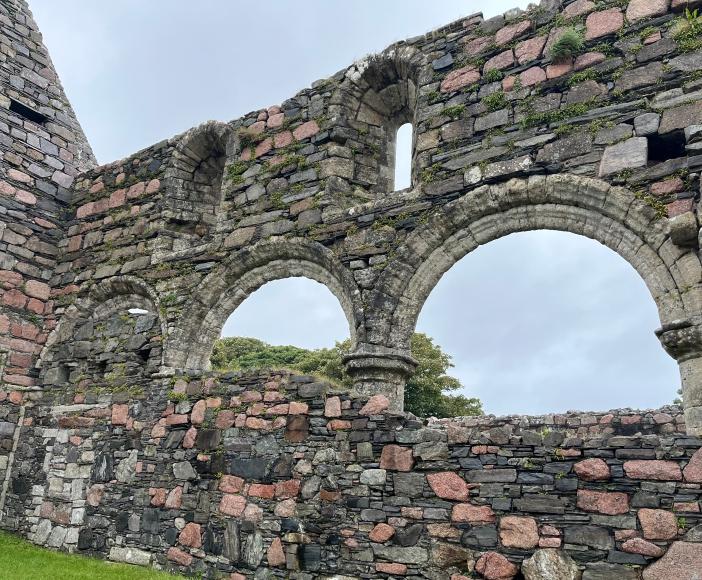
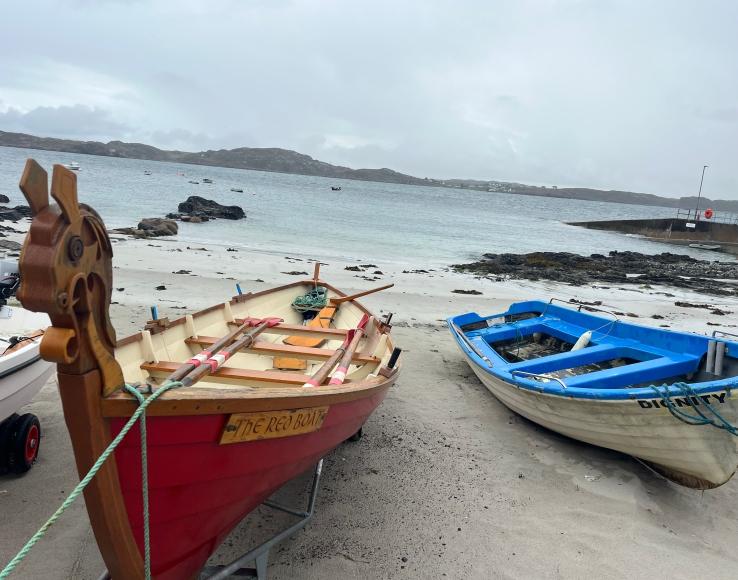
I never got to see the darn stones. What I did learn is that we get bogged down with what we want. One does not need to be in perceived holy places to experience wonder and wisdom. Most of the time, wherever we are, and every moment could be holy, depending on our perceptions.
I left the Inner Hebrides of Scotland deeply touched. And I hope that I reciprocated with as much love and insight as I received from this journey. It's not always about what we think we will get, but what we bring to the place we visit. How we tread on this earth. What thoughts we think while we walk our path. It also has a huge impact on others and the environment. I realised that we most probably retrieve parts of our souls wherever we go. And hopefully leave the energy of love and appreciation to make the places we visit better.
This journey has freed me deeply and I literally feel a newness birthing itself, leaving me excited about what's to come.
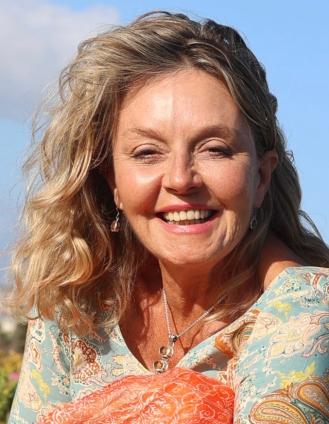
Scotland, you gave me back parts of myself I never knew were lost, healedandtouchedmy soul and I now know you have always been part of my existence. Once forgotten, now remembered.
Elma Rivera is an internationally certified PSYCH-K® instructor, ex television journalist, entrepreneur who has studied almost every possible personal growth and healing modality she could lay her hands on since the '80s. For decades she searched for the missing link that would make personal changes easy and sustainable. After reading Dr Bruce Lipton's book The Biology of Belief she discovered PSYCH-K®. Relishing the validation of the ancient traditions of human consciousness. She conquered an incurable disease and is expanding her consciousness and changing negative beliefs daily with PSYCH-K®. “PSYCH-K® is the only change model I have found that has effected subconscious changes sustainably. By practising PSYCH-K®, one naturally meets your Soul and Spirit!
“The way I see the world, what I believe about myself and my expectations are what cause how I experience my life. We ourselves are the answers that we all have been looking for!”
www.elmarivera.com e-mail: riveraelma@gmail.com

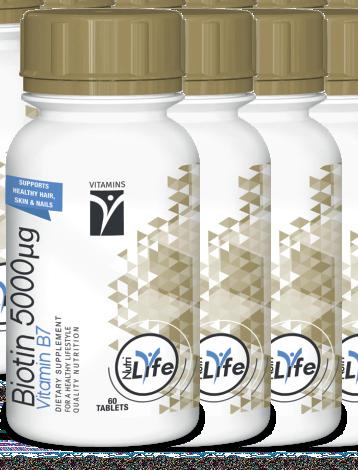
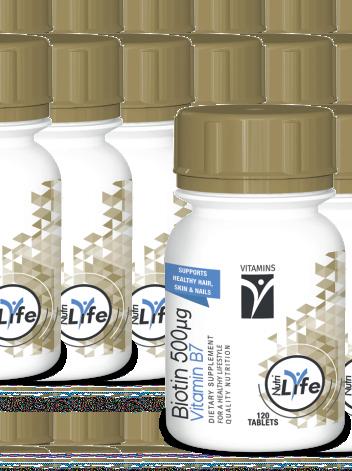
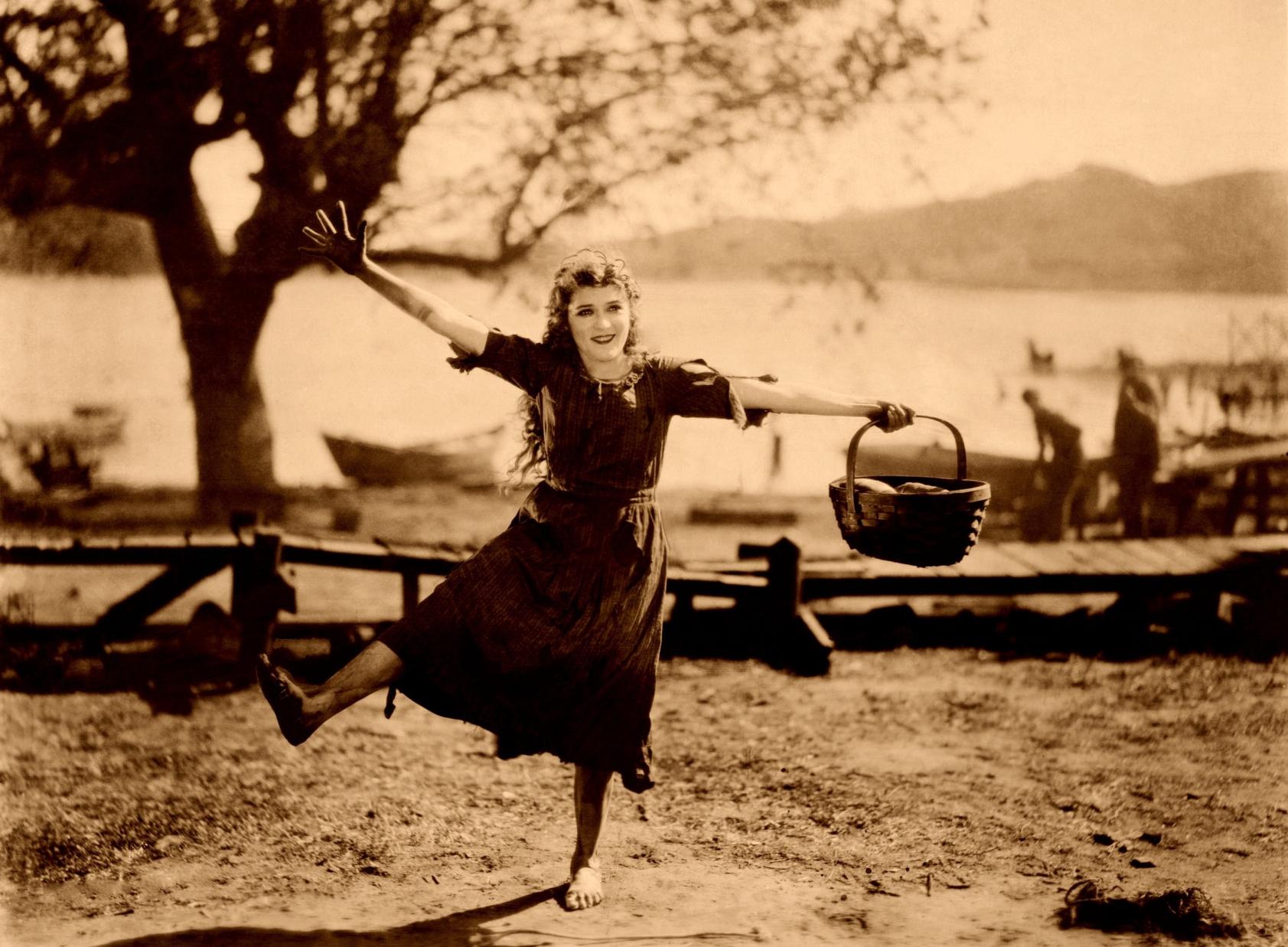
‘Youhavenotdancedsobadly,my
In this world so focused on continuous upgrade, never ending improvement and self-improvement, how often do you stop and think, I am doing well. I am okay. I am doing all right. Not as a one-second half-pat on the back, but as a path and a way of life. We are so often told that loving kindness and compassion are the key. And we immediately take this to be something we extend to others. That is of course, good and admirable and a wonderful aspiration to work towards, but how much time do we spend being kind and loving to ourselves? How often do we congratulate ourselves on our choices and decisions and for doing well? When do we consider things to be fine?
To embrace the rightness of everything, the okayness of everything - and particularly the acceptance of self - is to surrender to the mystery. What this means is that we allow ourselves to dance and be danced, to flow with what is happening in acceptance, in celebration, but also in kindness. A kindness towards self that says; 'You have not danced so badly, my beautiful sweetheart'.
These words are a paraphrased quote from Hafiz's
poem, 'My sweet, crushed angel'. They were spoken to me by my dear friend Billy from the Temenos retreat centre, where I went for a week's solo vision retreat. We were discussing the Great Mystery, the contemplative life, how the Spirit's urge is to be drawn to the Divine, the source from which it came, like a moth to a flame. We discussed a bit about my life. Then he spoke these words, which I offer to you and which touched me deeply.
‘You have not danced so badly, my beautiful sweetheart', he said. And it created a space in my heart and mind and in my view of myself and of my life. Perhaps it was the care and love with which the words were spoken. They seemed to open my heart. They certainly opened a door. Shifted my perception. Yes, I thought! It's true! And in echoing the words back to myself, a kindness and tenderness towards myself emerged. As if I, as a spiritual being beyond time and space, I, as an elder, were suddenly looking in on my earthly existence, talking to and seeing the childlike, human me and all her faults and foibles and trials and tribulations, with compassion, lightness and a certain joy.
It was a moving moment that developed into a sense of rightness. A feeling that everything is and will be okay. It's all right. I have done well. I have made good decisions. I have not danced so badly. And I think it's the 'not so badly' which makes it all click, because it gets away from the need for perfection. It says it's ok to do a 'good enough' dance.
It accepts a margin of error, a humanity and, in so doing, plants the seed of forgiveness.
For when it comes to forgiveness, though we may be able to forgive others for many things, though we may even over time forget their wrongdoings, their harsh words or deeds, the shrinking of our light, do we ever truly forgive ourselves?
Consider the things you wish you had done or had not done, or had done better. Consider the things you hold yourself responsible for – often when they were never your responsibility. The decisions you wish you could go back and change, or the outcomes that would have been, could have been, if you had made different choices. Much like that movie Sliding Doors, which shows how a few moments of catching versus missing a train can result in totally different outcomes in a life, we cannot help but wonder. What if I had moved my child to another school as I wanted to? What if we had gone on that drive through New Zealand? What if I had held onto that property? What if I had not sold that vintage car? (Now worth six million – true story!) What if I had gone off to teach and write and practise sound healing instead of first earning money for a decade and a half? What if I had gone into that e-learning business? What if I had made better investment decisions?
On and on we wonder, sometimes idly, sometimes more enthusiastically and sometimes with great condemnation and angst. In so doing, we give ourselves a loss and get stuck in the past. We embrace the energy of not getting it right and then this creates a fear of continuing on this track in the future. So we become frozen. This is especially true in the arena of wealth. (Indeed, I have not forgotten this is a money column.)
In working with clients in the world of money, for over a decade managing physical funds and another decade and a half managing wealth consciousness, I have found that people really struggle to get over a loss or perceived loss in their finances. It may be someone who let them down, a trade gone wrong, an opportunity missed, or a company liquidation. The moment becomes fixed in time and time stops there for many people. They never get over that loss. Often, they never try again.
For years, sometimes decades, the mind's focus is drawn back to that moment and, more specifically to the time before the loss, the time when all was well, when cash was rolling in, millions were earned and money was
flush. A strange loop then seems to emerge, with a fear of moving forward on two accounts. Firstly, the mind likes living in that beautiful past, likes reliving those good times and those affluent times. Secondly, there is a fear of moving forward from the good times, the financial abundant times, to the loss itself – both the historic loss moment and also what is now being perceived as an inevitable outcome in the present, should great wealth be accumulated once again. Both possibilities bring up fear and anxiety. So the unconscious 'logic' becomes 'if I make a lot of money, I will lose it/be betrayed/go out of business'. Better to stay where I am and maintain the status quo. Besides, the mind quickly adds, it's quite nice here in 1990; look at this house you own; look at the fancy cars; you're rich mate! And so on some level the person is living this alternate, imaginary existence in which they are still extremely wealthy; therefore... why would you need to go and get a job or improve your current finances? That's how the convolution in the mind and the unconscious, which cannot differentiate time, or fact from fiction, figure out the situation. Hence the strange loop I mentioned earlier. The 'logic' goes further to judge and condemn, to make you wrong, responsible, incapable of good decisions. Therefore, make no decisions and maintain the status quo.
To become unstuck and move forward a number of things must happen. The first and most important is to come into the present. This is a panacea for so many of life's problems – from anxiety and depression to a variety of recently diagnosed mental illnesses, to wealth expansion. Being in the present moment is something our current society dissuades us from at all costs. We live in an age focused on distraction. Yet to do anything, to change anything, to connect with our power and presence and purpose, we have to be in the present. We all know this, but doing it, requires daily, constant practice.
Cultivating being in the present is best accomplished through mind training - insight training, which teaches you to be aware of what is happening while it is happening. This is also an ongoing daily practice. Becoming aware of the mind's wandering and consciously, yet gently, bringing it back to the present moment. It is good to remind yourself of the date and time and your location. Many times a day. As often as you need to. This is how I overcame massive anxiety I had suffered since childhood, as well as depression. Neither of these mental states is actually to be found in the present moment. Mind training and insight training are highly underrated and under practised. Meditation can form the foundation of this practice, but it has to be meditation where you sit and allow what arises to arise, in silence and presence.
Not the app meditation of being guided by words, sounds, affirmations and the like into another form of mental distraction. (See Rob Nairn's Tranquil Mind book and article in this issue.)
The next thing to do to become unstuck is to become aware of some of the underlying beliefs that your mind has created in order to protect you from pain and loss and to bring these into consciousness. Then, consciously change these beliefs to ones that support wealth expansion. This is not a thinking or realisation exercise. It has to be done on a deep level and preferably energetically. There is much instruction on how to do this physically and energetically in my Money Alchemy and Money Well books and Money Energetics audio. Plus the upcoming online course.
It is also quite useful to consider the convoluted logic the mind may have created in order to help you. And to consider that our whole system is geared towards transcendence and wholeness. The urge towards reconnecting with the Divine source (whatever our definition of this is) reigns supreme. So when we have a convoluted belief or fear, we should consider that our
mind, our unconscious, our very fear is actually trying to help us - to be safe, to grow, to transcend. It arises from a good intention that became distorted somehow. It is really useful to believe this. Knowing that your whole system is trying to help, not harm you, creates a foundation of kindness and tolerance towards self.
There is much talk and belief around our apparent urge to sabotage ourselves and destroy ourselves. Jung's archetypes get thrown about like confetti – shadow, saboteur, prostitute. Jung's work is deep (ha!) and can't be reduced to pithy definitions to explain away the complexity of life. We focus on discovering why we keep ourselves back and link this to the dark forces, evil, conspiracies and original sin. Yet how can this be so in a universe created by a loving God/dess in his/her image? How can this be possible if we all have the divine spark in our hearts? If we are all enlightened? Consider this and it will give you a different, kinder lens to view your decisions and life path through. Believe that 'all things work together for good' and you will bring it to pass, no matter what decisions you have made.
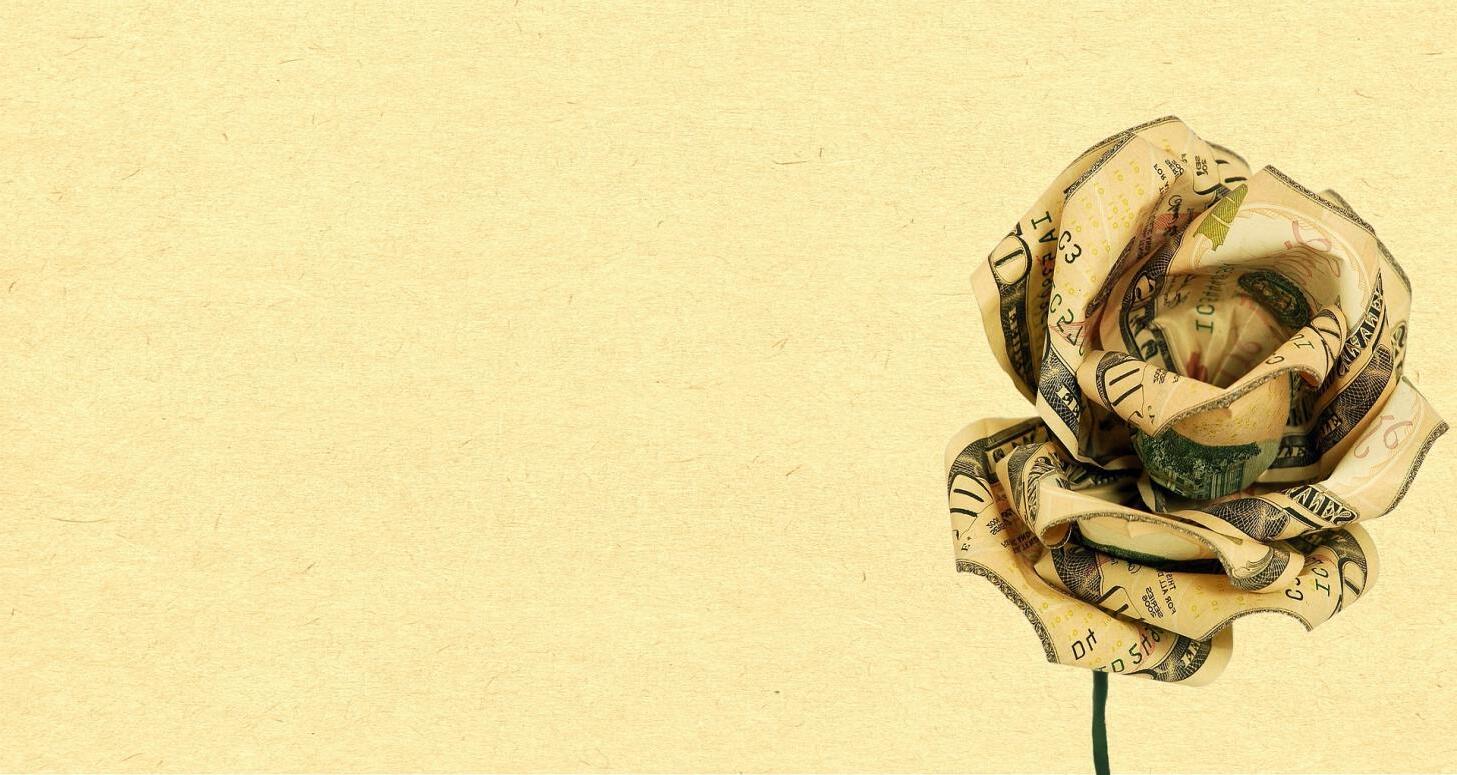
Kiki's classic holistic approach to wealth creation bridging money and metaphysics.
* Learn to use creative and energetic tools to dream the future into being
* Connect with money as energy – weave healthy money energetics
* Release old beliefs, attitudes and emotions – so wealth can flow
* Repattern your thinking and resonance around wealth to expansion
* Elevate your wealth resonance and radiance – retrieve your money power
* Shift to the next level on your wealth journey – wherever you are on the path to wealth
Kiki's Money Alchemy will help clarify your intent and vision as well as its attainment. You will leave feeling refreshed, clear, and inspired, with practical tools to continue your wealth expansion journey! Let this be the best year yet!
Though subjects in the Money Alchemy book are covered, this course is not a duplication of the book.
“It
Write up your portfolio of bad decisions, could-haves, should-haves and may-have-beens. Take your time and do it well, pouring out every ounce of regret, anxiety and condemnation you can possibly draw out of your system. See it as a poison needing to be released. Then burn the portfolio by the light of the full moon while screaming out your frustration at the stars. Rip your clothes and burn them also in a total cleanse, with a powerful intent to let go of the past. (You don't need to go full dramatic Greek – go as far as you need to, safely.) Then release.breathe.rest.dance. Take a long hot bath and open up a new space for the future. Set some new intents and make some new decisions.
The best decision - and the final part of moving forward from negative financial and other experiences - is to forgive yourself and embrace a wider perspective of your life with kindness. It starts with the realisation that you did the best you could have possibly done with the information and consciousness and ability you had at the time. You did your best, with the best of intentions. You have chosen well. You have not made such bad choices.
You have not danced so badly, my beautiful sweetheart. Say that to yourself. They are words for all genders. And as you speak the words, while you dance naked under the stars, allow the kindness and positive regard of the moon to shine over you with appreciation and humour. Feel the earth's embrace under your feet, holding you in her arms lightly, firmly and with love and allow the trees to caress you with their melody as they too whisper, You have not danced so badly, my beautiful sweetheart.

Kiki Theo is a wealth expansion author and facilitator. Bridging money and energy, she offers a combination of business experience, based on her own successful background as an entrepreneur, including over a decade as the owner of a fund management company, and energetic transformations, based on her lifelong study and practice of energetic healing, Jungian psychology and metaphysics. She is the author of nine wealth expansion books and offers courses and one-on-one sessions focused on wealth expansion for self and business that create tangible results. www.kikitheo-wealthworks.com kiki@moneyalchemy.com.


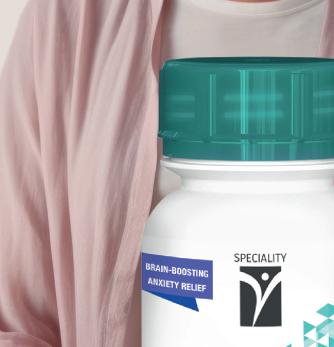

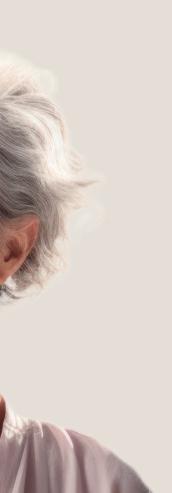
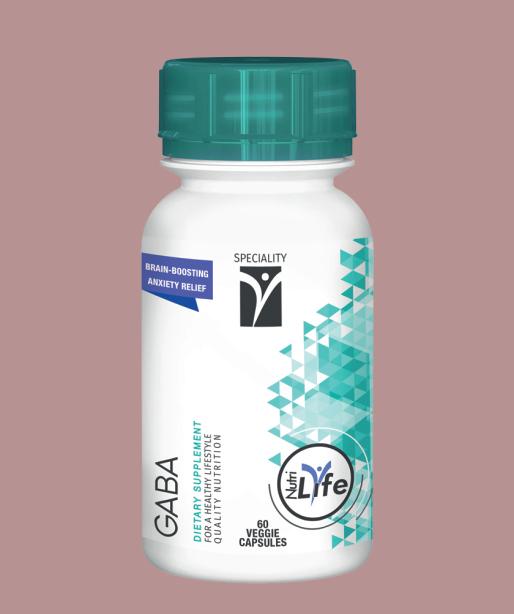
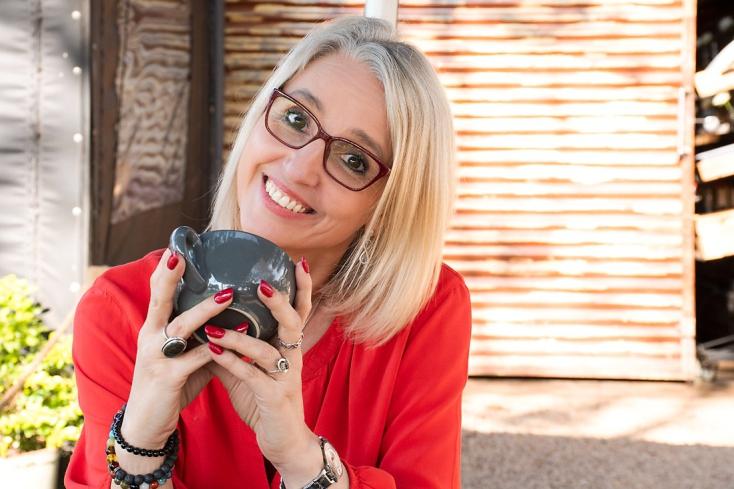
Thetimeofnewbeginnings,renewal,hope,awakening,blooming,lightness,warmth, happiness,joy…JOY...J.O.Y!???
Hold
it,that'swhereitallcomestoascreechinghalt.JOY???
We certainly love the idea, we yearn for that experience but it has become this Utopia in our minds which we often do not dare to go towards, for it is absolutely petrifying. For if we ever feel and create this state of being, what if it is taken away? What if it is not maintainable? What if people judge and abandon me for not sitting in constant misery with them? But the biggest fear is – vulnerability.
In a world in which survival is the order of the day, vulnerability is our Achilles heel, which we will avoid at all cost. We are in constant protection mode and have developed all kind of highly refined survival instincts/trauma responses which required us to disconnect from self and stay hypervigilant to the outside world. Vulnerability in any way or form is not an option in the survival game.
But this joy we are seeking can only manifest when we connect with our inner self. Joy, happiness, love, etc. require connection – survival requires protection. Protection is fear-based and joy is anchored in love. We cannot simultaneously be in both spaces. But we can surely have the awareness of it and guide ourselves back to love.
So why is this joy so scary? It requires a certain level of vulnerability and... I need to learn to TRUST that it can ONLY be created and maintained exclusively by me, irrespective of my circumstances.
There we go again… First JOY + Vulnerability and now TRUST!
How many Achilles heels do we have?
Looking at it from a survivalbased existing (for it surely isn't living in that state) that sounds and feels like playing fear factor on steroids, EVERYTHING we are trying to avoid in one formula!
Yet, because of that, it is the safest formula in the world. For it is entirely created, fed, maintained and run by YOU only. Joy is a state of being, irrespective of the outer circumstances. It is about strength, trust and investing in yourself. It is about ALLOWING the good stuff to take up space and infiltrate our being with all it is, without watering it down or denying it, even for just a split second.
We are living in a world in which fear, anger, anxiety, rage, worry, stress, sadness, suppression, judgment, depression, pain, shame, guilt, unhappiness are our 'normal' and we made this our comfort zone
due to the familiarity of it. We know how it works – it has become predictable. Not happy in any way or form, but it is what we know. And then the good stuff: Love, excitement, joy, laughter, feel alien to the system and we volunteer via disaster planning and tragedy rehearsal (what if..?) not to allow ourselves all that. It's as if we believe that, by truly allowing ourselves to feel happiness etc., we're setting ourselves up for a sucker punch. The problem is, worrying about things that haven't happened doesn't protect us from pain, quite the contrary.
THAT is where the oxymoron is, that so-called 'safety', which comes with the familiarity of unhappiness, is treacherous – for it is now outsidebased and will always keep you on alert and reacting TO the outside and will forever keep you AWAY from connecting with yourself. You are stuck in FEAR.
There is even a name for it: 'foreboding joy'. Foreboding joy says: If I don't feel extremely happy, I won't feel extremely disappointed. Which is really just another way to protect yourself subconsciously from vulnerability.
We are already doing that in so many ways:
For example, you just got a promotion, you are excited and instantly 'get yourself into check' with the foreboding thought of: What if I can't live up to the expectations now? I will probably lose my job. And now the excitement is significantly dampened with worry and anxiety.
So let's get back to basics. What is this JOY? And how do we get there?
Joy is an inner feeling a choice, purposefully and consciously made, irrespective of circumstances. It is an intense experiencing of deep connection, pleasure and appreciation with self and the universe. It shows up via happiness, bliss, relief, delight, contentment.
“Joy is not a constant. It comes to us in moments - often ordinary moments. Sometimes we miss out on the bursts of joy because we're too busy chasing down the extraordinary moments. Other times we're so afraid of the dark we don't dare let ourselves enjoy the light. A joyful life is not a floodlight of joy. That would eventually become unbearable. I believe a joyful life is made up of joyful moments gracefully strung together by trust, gratitude and inspiration.” Brené Brown
How can we start embracing Joy?
• Gratitude
“The cultivation of gratitude brings joy. It is not joy that makes us grateful, it's gratitude that makes us joyful.” (Brené Brown) Not just the 'attitude of gratitude' but practising it as an integral part of our everyday being. For when we practise it, we do not just recognise it, we actually switch our filters to go and look for it.
• Be present and mindful Pay attention to the things right in front of you, be more present in the here and now. When you eat – do taste the flavours, do experience the texture, the temperature of the food.
• Collect Glimmers
Take note of the little encounters, moments, situations, songs, thoughts that bring a little smile, chuckle, warm feeling… Have more of those.
• Stop the train
The next time your brain goes off with 'what ifs', just stop it right there and exchange it for 'I am just feeling vulnerable, that's ok' and then consciously reroute the tracks.
• Create a daily practice
Oh I can hear: 'But I don't have time.' Well, dramatising and worrying take triple the time; start allocating differently. Start with five minutes in the morning; set the energy for the day: Today I consciously invite love and joy and add two or three points of what you are grateful for) and five minutes in the evening (take stock of the ways it showed up and practise some self-care, reading, meditating etc.).
• Have fun
Play the music really loud, have ice cream for breakfast, wear mismatching socks, eat spaghetti with chop sticks, sing at the top of your lungs, get the colours out, hop instead of walking… break the routine.
• Stay away from party poopers
Don't surround yourself with unnecessary doomsday when you are on the journey of joy, no matter if it is people, places, functions…
• Start a new hobby
Get out of your comfort zone. Do something that would have been highly unlikely for you to try in the first place, the idea is the experience and not how good you are at it.
• Check your posture
Adopt a power pose – stand straight, shoulders back, look up… TAKE UP SPACE! Even if you do not feel like it initially, the brain doesn't know the difference and will eventually start matching it.
• Get moving
Have some kind of exercise/movement in your routine, it doesn't matter what. Start slowly –
but make it regular, preferably outside so you can connect with nature at the same time.
Should this all get confusing or overwhelming, the quickest and surefire way to get hands-on, live demonstrations of joy in motion is: GRAB A TODDLER!
No one is more in the moment and connected than a toddler (if you want to nudge it up – both of you eat sweets first). Hang out with one and JOIN them, for they are the undisputed champions of JOY, delight, excitement, fearlessness, love, adventure, limitlessness… roll with them, shriek with them, giggle with them, play superhero with them, dig in the dirt, stick your tongue out and may you remember when all of that was YOU… for that is how we are born.
THAT is our natural state of being – LOVE and JOY!
Do not forget to return the toddler, though.
Psychic, medium, Reiki master, tarot reader, numerologist and metaphysical profiler
I studied, Reiki, gemstone healing, numerology, tarot, metaphysics etc. I am constantly furthering my knowledge and deepening my connectedness. This amazing journey took me to places beyond my imagination and my life now consists of being blessed with reaching people nationally and internationally via: Giving courses, talks, retreats, appearing on radio shows, psychic tarot readings, metaphysical profiling of illnesses and my work as a mental medium. I act as the bridge between the spiritual and the physical world, with the intention of connecting and healing both worlds. Just as in any profession, mediums have specialities and areas of expertise. Over time, it has become very clear to me that my calling lies in working with souls who have crossed over to the other side and assisting with bringing clarity and insight into life's choices. Contact Heike https://heikesym.com/
The creative energy of a woman's midlife awakeningWith thought leader, Anne-Marie Clulow, founder of Intimacy Coach International
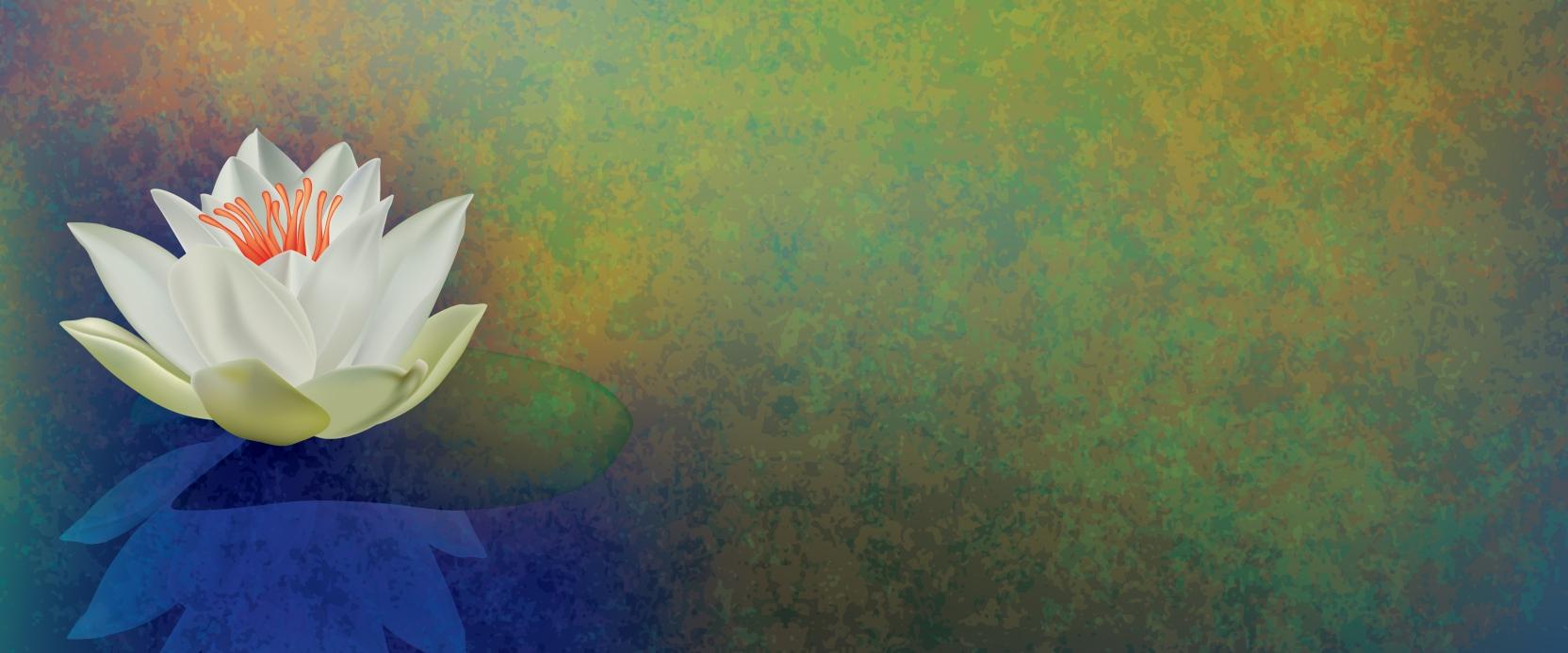
Midlife for women is most often advertised and sold within our society as being the end of desirability, sexuality and youth. It catches most of us by surprise, especially through the exhaustion and burnout of motherhood or for those of us who enter it overnight through major surgery.
Even for those of us that shift into this process slowly, it doesn't have much societal preparation for us as women, other than jokes and prescriptions!
This is the third hormonal fire for the furnace of shift and change in your life as an oestrogen-based being. This is the third major shift and, just like the others, menses and motherhood, is surrounded by myth and often shame within its messy reality.
Menses still has the dubious honour of often starting our journey into being 'sexual consumables' as women, where our pleasure, sensuality and wild and magic sexual energy are often only seen as valuable to elicit desire, to sell products, as sexual currency. Our sexuality is very rarely used for ourselves and often shamed if used or shared for one's own pleasure.
Motherhood, the second shift, is still very much not about us.
Most of our energy will be channelled into childcare, whilst still being sexual partners and meeting needs within our relationships.
We are sold ideas and themes about motherhood, not its messy reality.
Themes around perfect bodies that instantly know how to breastfeed, return to their previous shapes whilst still being sexual fantasies to our partners…
Mothering - with media and other unsolicited advice
thrown into the child rearing-pot…
Mothering - which everyone else appears to be doing better and with less guilt than you…
And finally...
The menopause!
Perimenopause often begins just after a woman's sexual peak starts, at around 35.
The body naturally begins to shift from reproduction into pleasure possibilities that provide chemicals we need for balanced and healthy lives.
In our society, this begins the journey to being sold products that glorify being 20-something for the rest of our lives, the treadmill of pursuing youth instead of becoming your full powerful self.
I don't know about you, but intimacy in my 20s and even early 30s was pretty awful. Lots of faking, thinking my body was broken and trying to figure out my own pleasure from a testosterone vision, was deeply frustrating and disempowering.
In fact, I'm more confident now sexually and sensually at 52 than I was in my 20s and my husband and I have much better pleasure and intimacy too.
But I digress.
The power of becoming invisible to those who only valued you as sexual consumable is immeasurable. You can almost instantly find out where to invest your time and energy, as those that find you invisible are actually the takers in our society, the users.
As I recently saw in a meme: “Only respecting women you're attracted to isn't respecting women.”
That invisibility cloak is a SUPERPOWER. It's one that will clearly guide you on people's ACTIONS - how to include them or not in your life.
And you can still be attractive and sensual and have pleasure being your actual age; it can also help you dodge bullets in the dating world too.
Because the people who still pay attention are actually worthwhile people. They are your tribe, your support, your guides.
The other gift that doesn't feel like it in the beginning? The initial libido dip. This means you can start to learn about this midlife awakening that can start to channel your life force energy to YOU. (Which ironically reawakens your sexual energy too!)
The 'cosmic womb', that can begin to birth the projects and creative ideas into your one wild precious life.
This new life force energy, this midlife awakening of knowing time and energy are more valuable to this incarnation than ever before.
There may be less time in front of this existence than there is behind you and the midlife awakening can be the time you start to use this to create the life YOU want:
Finding the work and calling that are powerful and magical for YOU;
Finding your tribe and support system that benefit your vision for your life; Far beyond being the consumable energy that everyone else requires or has needed from you, becoming more of your own sensual self to serve your life design.
None of us knows how much time and energy we will have left.
So, this is the time to find yourself fully, in full presence and power for every precious day you are gifted moving forward.
This is the power and creation of the cosmic womb.
This is the phoenix rising.
What will you create in your midlife awakening?
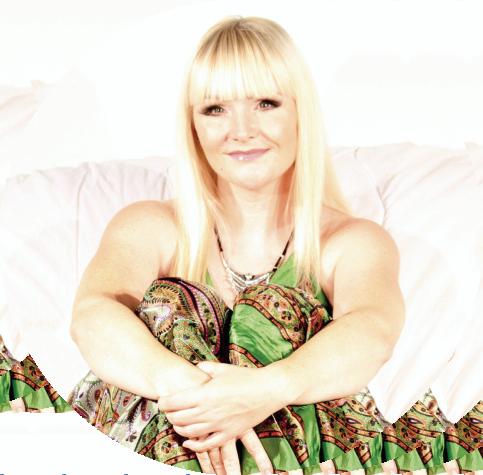
Anne-Marie has appeared on 702, Radio Today, Power FM and Kaya FM talking about Conscious Sexuality and Neo Tantra. She has been a guest columnist for the Saturday Star, been featured in Woman & Home Magazine and has appeared on ETV's 'Great Expectations' speaking on regaining libido after childbirth. Anne-Marie can be contacted via her website. https://www.intimacycoachinternational.com/


IAMDiana,GoddessofLight.
Onceagainyoufaceatimeofself-illumination,standinginfrontofyourpillarsofself-reflection, recognitionanddevelopment.Yourearthcontinuallyfacesfrequenciesofdiscontentwhich humanitysowsaroundtheirlives,importantlyatyourplaceofdailyexperience,or'work'.
Perhaps to some a 'four letter' word, it is your place of daily experience! The objective when transitioning from your place of living to your place of earning, is to 'experience' the energy for what it is, thereby face your pillar of self-recognition at all times.
Some suffer because of personality interests. Because of the total obliviousness of humanity in general evident everywhere, those that 'lead' often undergo a 'personality change' between that which they leisure and that which they should treasure, their work. Leaders take heed, the subtle frequencies within the celestial waves of thought, are what transform lives!
Some find that to enable those that are working with them (or 'under' them) to fall 'into place' they have to go through some sort of 'walk-in' change of personality to control their office space. We say, best let everyone stand beside you
We understand 'where you are coming from', but for 'where you are going to', that situation must change. Denial is one of the greatest conflicts your planet is currently facing, which has everything to do with value of self-worth.
Consider that perhaps you are fortunate to be in a situation where you experience new learning and, as you say, 'put bread on the table'. Don't let your renumeration create segregation.
The new energy brings an awareness that the 'work' place you find yourself within as part of your daily experience, needs to be respected, enjoyed and used as a platform for exploration, extending knowledge and, with greater understanding, learning new things. Also, this must be a place that allows you 'expression', thus a valuable exchange to sustain everyone in whichever way, thought or form.
If you are self-employed, have your own practice or business, always respect that. Understand that, even though there may be much controversy about working 'from nine to five', it is indeed what you make of it. Treat your 'work' as another opportunity to express yourself on integrated platforms for you to excel from!
To help diffuse conflict, before arriving at 'work' set the
intent to create a beautiful energy of light, whatever colour you wish, call it whatever you wish, then send this vibration out to all that participate in your daily experience. Inspire them to appreciate the platform, thus instead of feeling laboured by it, complaining, or 'negatively' affected by it in a derogatory or limiting way, understand the experience for what it is and enjoy it no matter what. Those in overseeing positions must hold the essence of harmony, light and peace in their own energy field, for you know, as you sow, so you shall reap!
The ego interferes through competition: 'Who is the best, nicest, most lethargic, controversial, dedicated, shocking, etc?' This creates a dense negative echo within the collective! By creating a better environment through a lighter way of thinking, instead of 'slogging it out', manifest a joyful energy. You may say: “Diana you must be crazy if you think I am going to enjoy going to that place every day” and I say: “You should, for you are not doing it for nothing!”
You receive an agreed exchange! Why not extend it to enable you to live the life reflected in your pillars of selfrecognition, inner reflection and divinity.
To celebrate a complete transformation on this planet, these issues must be addressed. We are not saying: “Run to your office, burn smellies and light candles.” Rather lighten up that inner spark of self-recognition, share it and show others how to!
Focus on that which is at hand. Don't let that which is behind you influence what is next to you or ahead of you!
If you 'hate' your work place and loathe everyone there, be sensible about it! Why? How many hours of your lifetime do you wallow in that calamity? Is it worth it?
You may see life as 'years and years', yet it's fractional! Find ways to integrate change to uplift that frequency.
Energy influences and reflects energy. You have problems at work, work on it! It's of utmost importance to focus on joy! If all else fails, at least enjoy a few 'happy' hours at your home space!
Leave the slog behind. The new energy is all about seeing everything in a new light and, to enable that, you must manifest this for the self at first.
I am Diana, Adonai.
Kuthumi Speaks
I AM Kuthumi and I come forward upon the Rays of Love and Wisdom to greet thee at this time and I gift unto thee a divine blessing of self-realisation.
A quick interlude from Goddess Diana is always welcome! The issue at hand of taking the misery out of the many menial moments of your day should be on the top of your list of change!
When exploring different avenues with an inspiring positive frame of mind, the impossible becomes possible, as you 'allow' miracles to guide you and other 'platforms' present themselves as future pathways to explore. Be open to this, which is why we set the intent for the frequency of synchronicity to bless and infuse every word, spoken or written.
The gift is finally to recognise what it is like to live a beautiful, placid, peaceful life, for what good is life without peace?
Beloveds, you have had hundreds of lifetimes basked in trials and tribulations, filled with thorns, crushed glass, and encased with sharp edges. It is now time to let it go, hence your commitment to your full awakening in this lifetime.
Self-reflection and your higher self
The portal of higher self-reflection is about celebrating your connection with your higher self. When knocking on the door of the innate self, it demands a shift when it comes to your place of daily experience or work, if need be. This avenue within life's projections is becoming increasingly depressing for many, and must be addressed!
We understand that there are subjective laws, rules, unconscious and subconscious restrictions within many governments, but in time to come, this too will work itself out of set entrapments.
Unfortunately, many feel trapped, finding it difficult to express themselves. Others face loss of hope, faith and feel lost. Some find the trickiness within their daily experience too much to bear. We embrace your essence, please centre yourself and become still.
Be your own portal
I am speaking to you, YOU that person!
Find a quiet place, sit or lie down, gently extend an energy flame from your base chakra to your crown. Allow this sweeping movement to ignite the golden flame in the crown and the magenta flame in the eighth soul chakra. Pause. Set the intent - extend this to open up the higher portals, connect with your Torus, then connect to the grids and merge with the cosmos. Ask your higher self to extend its energy to meld into the flow of your own.
Here you experience an almost deafening silence, a highpitched frequency. Listen closely and you will recognise the symphony of celestial peace! KNOW that you have walked and survived this journey plenty times before!
You are doing it yet again! Bathe in this connection, this essence of your greater power, beloveds. Draw forth inspiration, motivation, and hope, to carry you through the despairing rivers of conflict. That quietness, that stillness, that inner connection and reflection, that is your innate self.
Understand that, at most times, you have to deal with two of you within one body, your soul and brain. To get them to join in a dance of transformation is what you're aiming for!
The ego-personality within the brain will always try to convince you otherwise, whereas the soul-spirit aspect within your higher essence knows best. Yet, it too came to practise joy and learn from sadness. Lack sets the tone for an undercurrent of incredible density and overbearing sadness. Fill the void within, enjoy your rewire and set the intent to create a different outlook all around!
Embrace the truth of your personal trinity; self-reflection, recognition and development. Don't become confused nor obsessed with labelling anything. Allow the brooms of change to sweep through a new understanding, especially of things which previously interrogated, blocked, controlled and stripped you of your power!
The new you
Your downtrodden aspect drains energy via your multiple lower facets. Although confusing, there are 'many' aspects of you fighting the survival game. Break the habit of playing the survival game. Let your peace warrior awaken. Wear your coat of many colours, your cloak of many fragments, with grace.
Adorn yourself with whatever you wish, but your frequency shouldn't dwindle. This is reflected through your eighth chakra, encapsulated by the innate self, which inspires the human personality-ego-brain self, together with your soul-spirit-self, to embrace their reflection in your celestial mirror, as you dance with your shadow. All remains an integral part of you. Your body may be left as ash or bone, but your soul warrior leaves with ALL that you experienced!
Transcend from a lower brain to higher mind state. Embrace 'The New You' infused within The New Earth frequencies. Make friends with and be kind to your body, your mind, your brain. Learn new things, and traverse across cosmic frequencies of the unexplored!
The least you owe yourself, is to unwrap the gift of the innate self by connecting with your higher essence who knows who you truly are. Befriend it!
Sprinkle crystalline dust of synchronicity ahead of you so that your world may become easier, your life lighter and your light ever so much brighter!
I AM Kuthumi, I bless thee as I sprinkle the dust of synchronicity before you. Adonai.
Transmitted through Chanel Lingenfelder, Howick - South Africa
Author of “From Party Patsy to Praying Patricia” - www.visionoftheheart.co.za.
Transvoice channel for the ascended masters since 2006 after surviving a mindblowing extraordinary ordination.
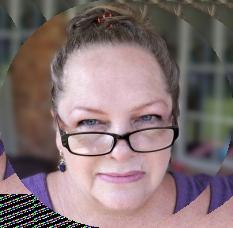
https://odysseymagazine.co.za/find-a-stockist/
Healing frequencies for body, mind, spirit and emotional inner balance.
2 Tembani Rd, Colleen Glen, Port Elizabeth, 6018
E Cape
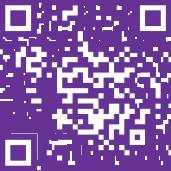
leemorgutti1@gmail.com 0605896239
43 Effingham Parade, Trafalgar, 4275. Auricular acupuncture practitioner. Cultivating the healing experience.
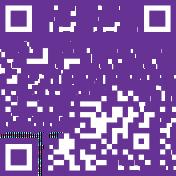
lata@auralwaves.co.za 0762254659
Zen Hippie
Shop 14, Jbay Surf Village , 3 Da Gama Road, Jeffreys Bay, 6330 Zen Hippie (Mindful, Free Spirited) reflect the essence of our Brand.

www.facebook.com/Zenhippie.jbay 0783531646
Healthwise The Original Farmacy, 69 Main Road, Walmer, Port Elizabeth. Natural supplements, natural beauty health food & conscious products.
Facebook:HealthwiseOriginalFarmacy
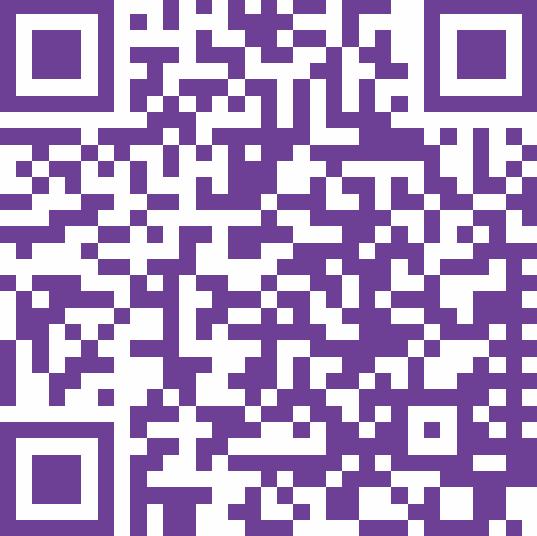

www.facebook.com/cassiyoga/
0832264579 1388 View Road, Ramsgate, KwaZulu-Natal, 4285. Weekly Yoga schedules in studio and twice at Ramsgate Whale Deck.
Physical and mental health are inextricably bound together.
2A Hemel en Aarde Village, Onrus River & 251 Main Road, Eastcliff Village, Hermanus, 7200
www.facebook.com/CBeyondhealth W Cape 0829281965
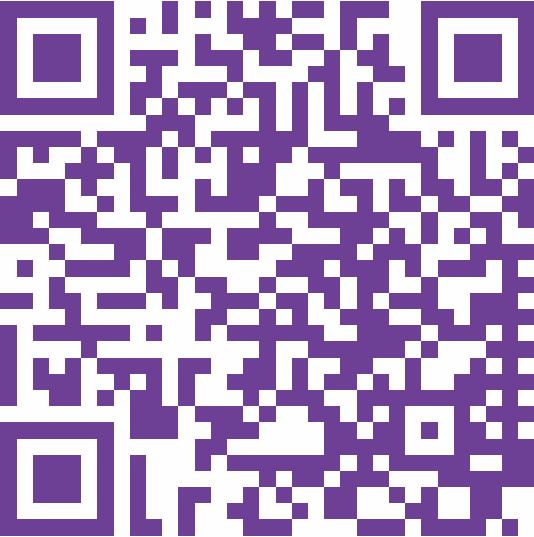
8 White Eye Way, Birdsview, Richards Bay, 3900. Reiki, acudetox & laughter therapy to strengthen and promote healing.
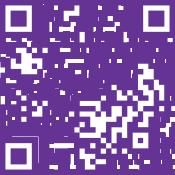
monica.naidoo@gmail.com 0846724207
3 Frere Rd, Vincent, East London, 5213 Independent retail outlet believing in elevated lifestyle and clean living.
info@limefusion.co.za
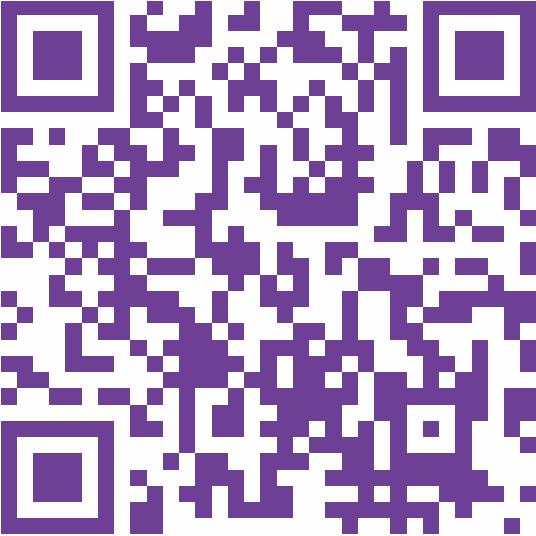
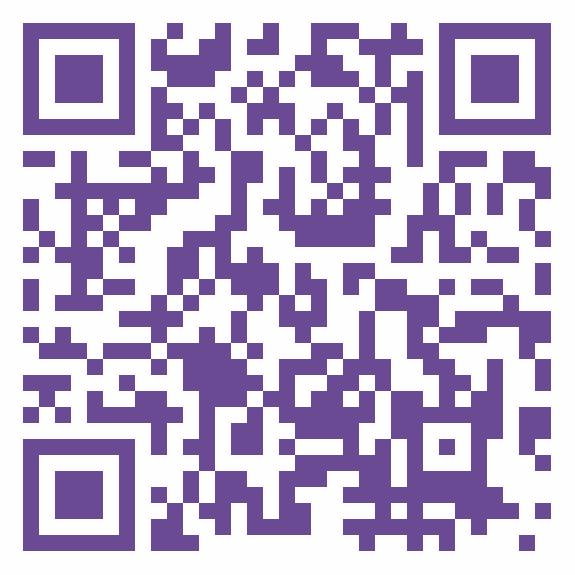
Shop 5, 28 Main Service Road, Sedgefield, 6573. Upmarket Indian botique store, from clothing to spices and crystals. Western Cape boutique store, W Cape
namastesedgefield@mail.com 0670076107
Specialising in aquatic physiotherapy for rehabilitation and healing W Cape
2 Longboat Street, Sun Valley, Cape Town, 7985.
Info@aptherapists.co.za 0217857200
Established in 1984, we are a family run stationers and book shop.
Shop 11, Southcoast Mall, Izotsha Rd, Shelly Beach, 4265.

ramsgatestationers@gmail.com 0393150213
Shop 4, Broadwalk Centre, 52 Waterfront Drive, Knysna, 6571. Stocking over 8000 products available in store and online.
www.knysnahealth.co.za
613 Kowie Road, Bathurst, 6166. Hand-crafted aromatherapy soaps, 100% pure Essential Oils and gifts.
www.facebook.com/twosages
1 Surf Bay Centre, Marine Drive (Cnr Spink Rd), Shelly Beach, 4265. From health screenings, sclerology, coaching, homeopathy to iridology.
michelle@thegoodhealthshop.co.za
Boutique crystal and holistic outlet combining spiritual healing & gifts.
Shop 4, Tweedie Junction, Main Road (R107), Howick, KwaZulu-Natal, 3290
crystals@icon.co.za
9 Eldorado Road, Victory Park, Randburg, 2195. Accredited Reiki and crystal healing training.
Queens Hotel Building, Baron van Reede Street (opposite Spur), Oudtshoorn, 6620. More than just a health shop we are a must-visit when in Oudtshoorn. W Cape
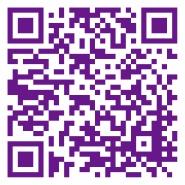
info@wellbeing.org.za 0631570448
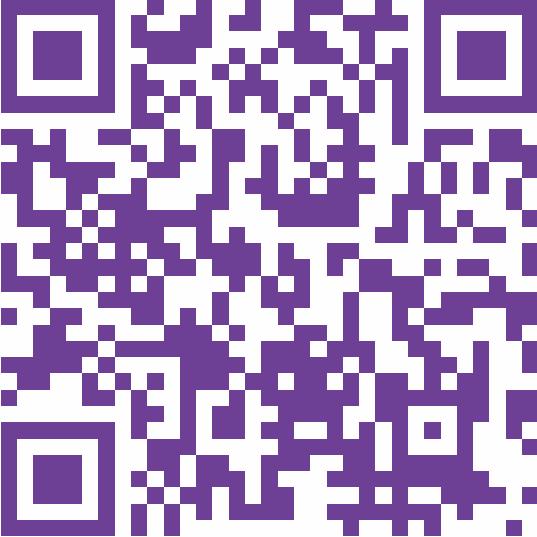
Cape 0626071634
Shop 6, The Village Square, 181 Main Road West Stilbaai, 6674. Namo Health & Wellness is a onestop shop for all your health needs.
info@namohealth.co.za


Cape 0820810690
Paul Mitchel signature salon with a natural and cruelty free approach
758 Ronwil Rd, Ramsgate, Margate, 4285.
hairetc15@gmail.com 0827396985

0393155351

0825722277

karen@reikiassociation.co.za 0828575999
24 years of providing customers with the most exquisite gifts.
Comaro Crossing Centre, 18 Comaro St, Oakdene, Johannesburg South, 2190
enchantedforest2408@gmail.com Gauteng 0114360651
Mattison Square, R61 North, 4278, Port Edward. The most exquisite jewellery, crystals and gems on the South Coast, KZN
777pearlgirl@gmail.com 0823580092
The place where your journey to optimal health and wellbeing starts. W Cape
Cnr 6th Avenue & Mostert Road, Melkbosstrand, Cape Town, 7437
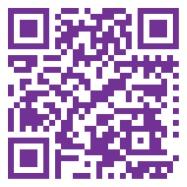
info@aumhealthhub.co.za 0647022451
Coaching,counselling,Kahunabodywork forindividuals.Familyandsystems constellations.Humandevelopment consultingfororganisations.Team coaching,facilitationandtraining
Technique
Auricular Acupuncture - AcuDetox
Stimulating electrical pathways in the ear to alleviate chronic pain, dis-eases, aches, trauma and inflamation. Contact Lata:
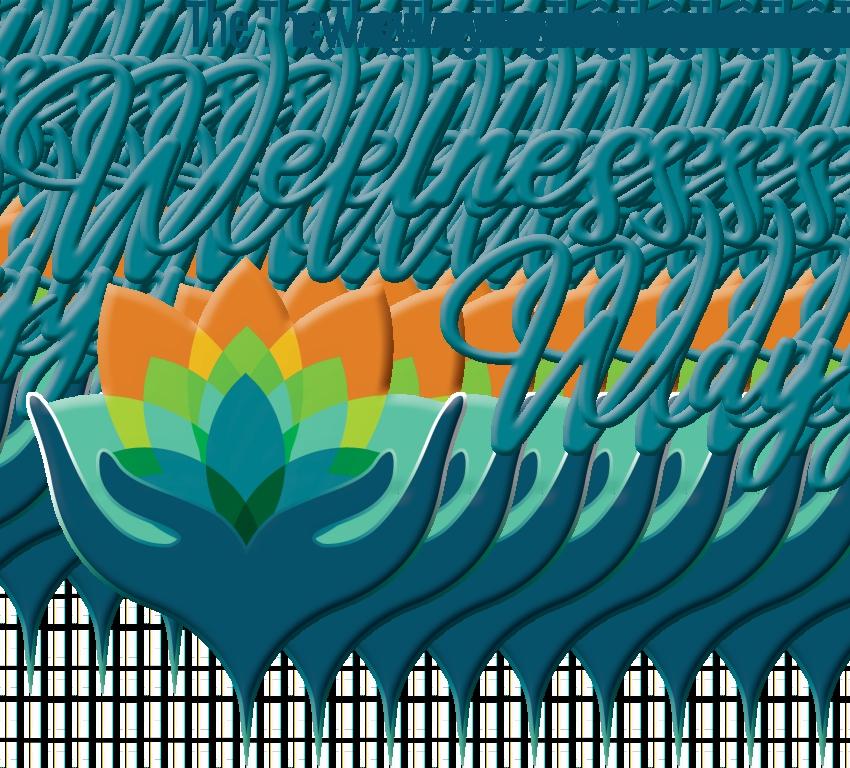
Specialisinginallpainconditions,mobility recoveryandsinusandmigrainetreatments Alternativeandcomplementarytreatments andtherapy
ContactSoniaFourie,Tuesdays-Saturdays

InternationalTeam Revitaliseyourintimatelifeholisticallywith retreats,courses&1:1personalcoaching.
Yoga classes held at the studio and the beautiful Ramsgate Whale Deck. Group and private classes are available to suit your needs.
Contact Cassi Volkwyn.
cassi@bo-yoga.co.za
Aromatherapy, Reflexology, Sports and Indian Head massage
Traditional African healer. Reiki and Energy healing.
Unlock your body's potential for wellness and vitality naturally with wellness coach, psychic, yogi and natural medicine practitioner, Chris Viljoen.
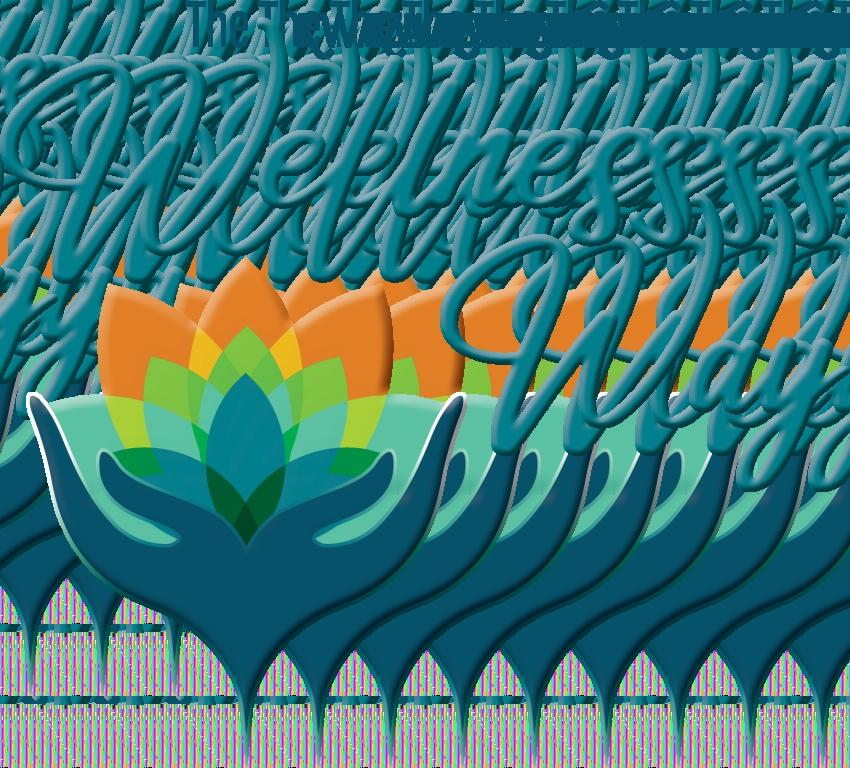
12
Marriage officer, mindful mentor, grief counsellor and life coach, reflexologist, aromatherapist, hypnotherapist and Reiki Master. Sharing the dream, the wish, the prayer to see us grow in unity
4579
17
Hyperbaric Oxygen chambers which we use to treat multiple health issues such as sports injuries, wound healing, stroke, near drowning patients and much more Contact Morgane Gardner
16
and discover our Food Forest sustainable farming with natural farming workshops, foraging and demo gardens in the beautiful area of Munster, KZN. Contact Jeanne-Louise Broide Aurora Healing
are a nondenominational spiritual sanctuary where everyone is welcome.

treatment, colour massage, crystal healing and Access Bars
Contact Heather for an appointment
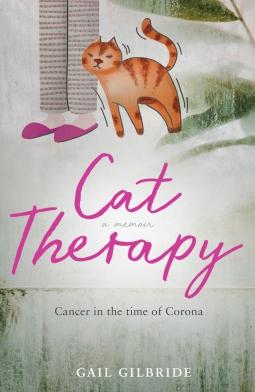
Cat Therapy
Congratulations
Patricia Dyer
Alexandra Harris
Kate O'Dwyer

Becoming Superhuman
Congratulations
Adrian Cooper
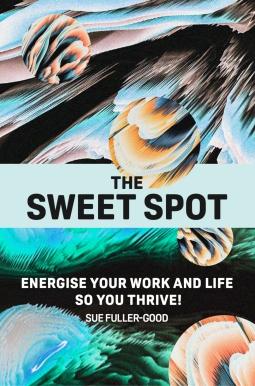
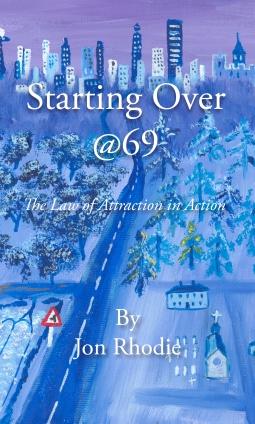
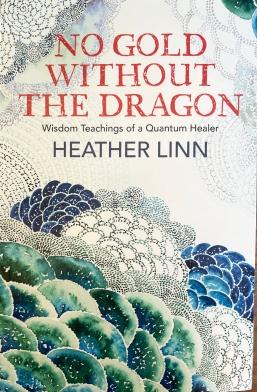
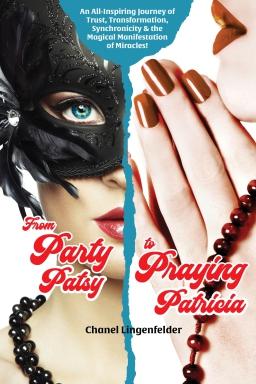
Starting Over @ 69
Congratulations
Noddie Knibbs
Terry Thompson
Annette Sprules
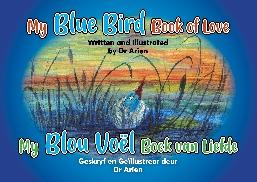
My Blue Bird Book of Love
Congratulations
Carima Van den Berg
Leonie Esterhuizen
Adele Malan
No Gold without the Dragon
Congratulations
Terri Russell
Jacqui Hannabuss
Laurie Rupprecht
From Party Patsy to Praying Patricia
Congratulations
Elizabeth Van der
Walt
Diane Courtman
Annemarie Visser
https://odysseymagazine.co.za/community/#competitions-giveaways
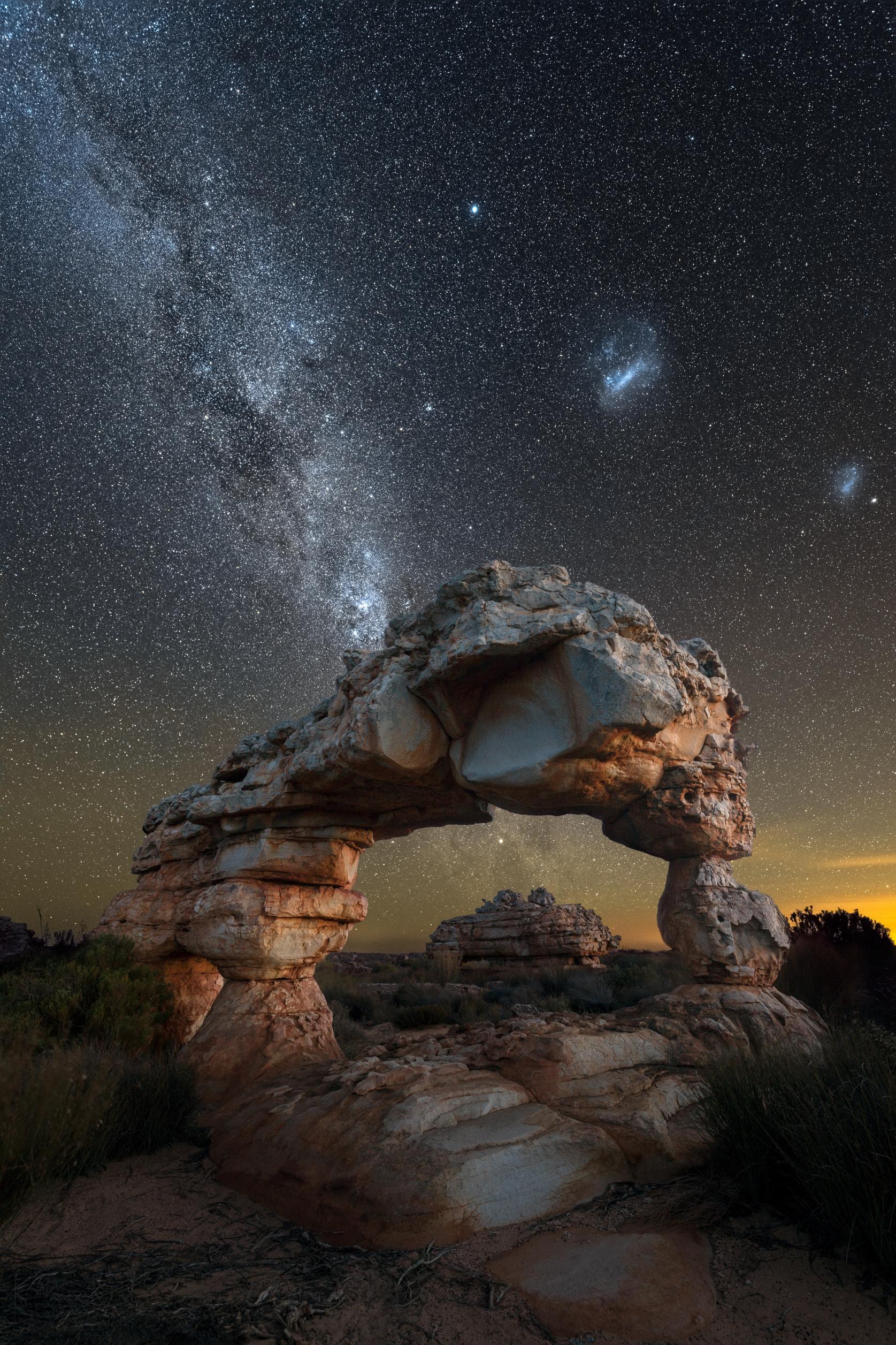
A star does not compete wi oer stars around it. It just shines.
Matshona Dhliwayo “


